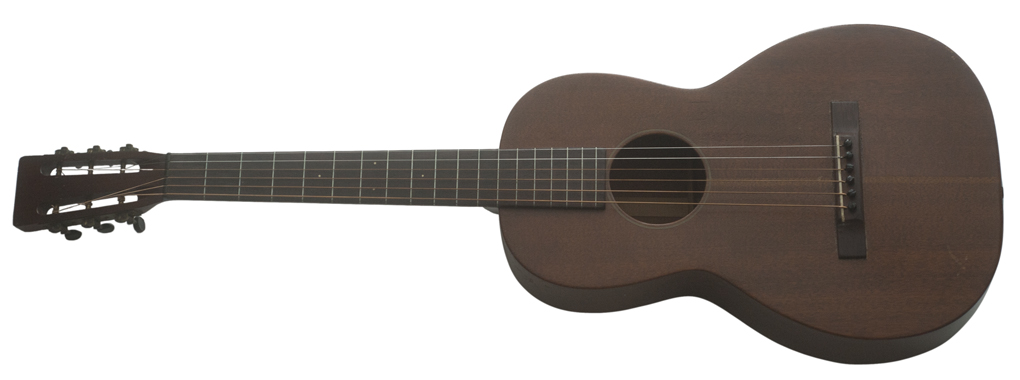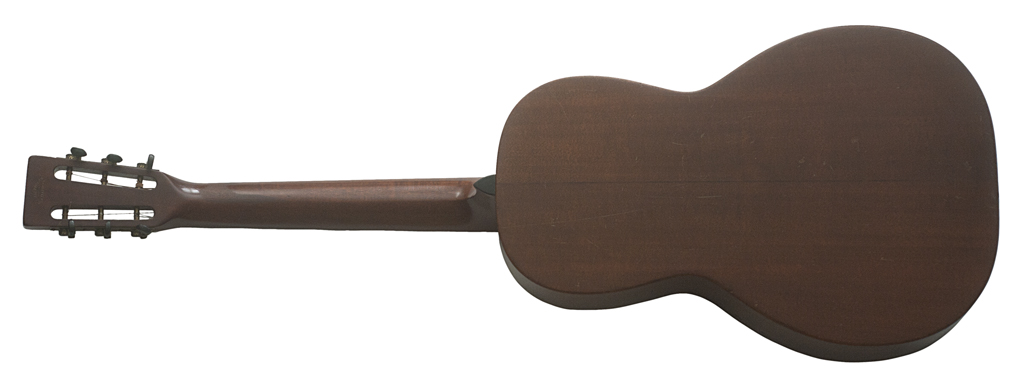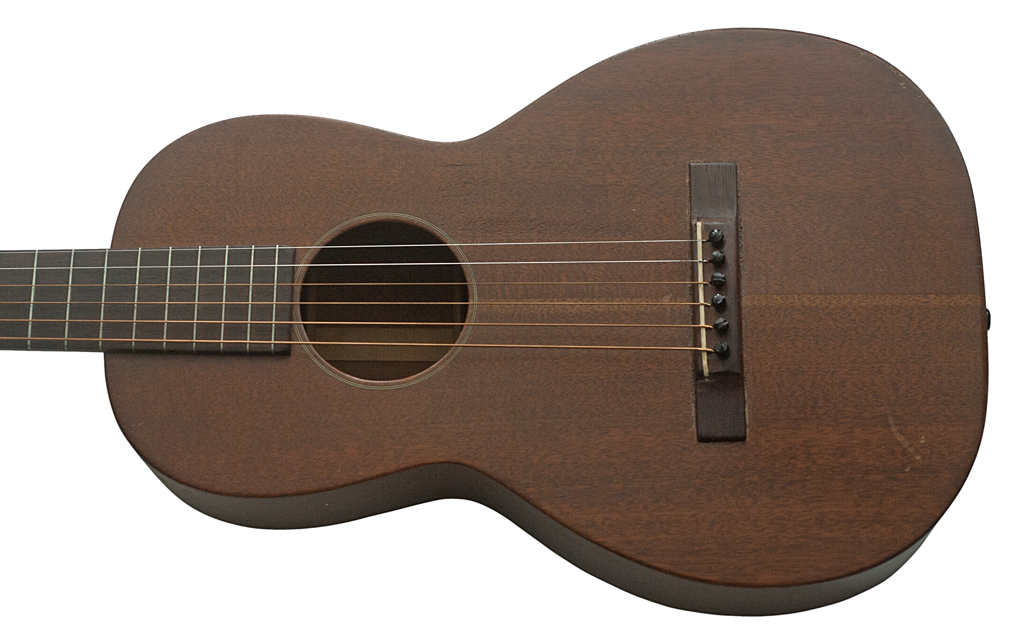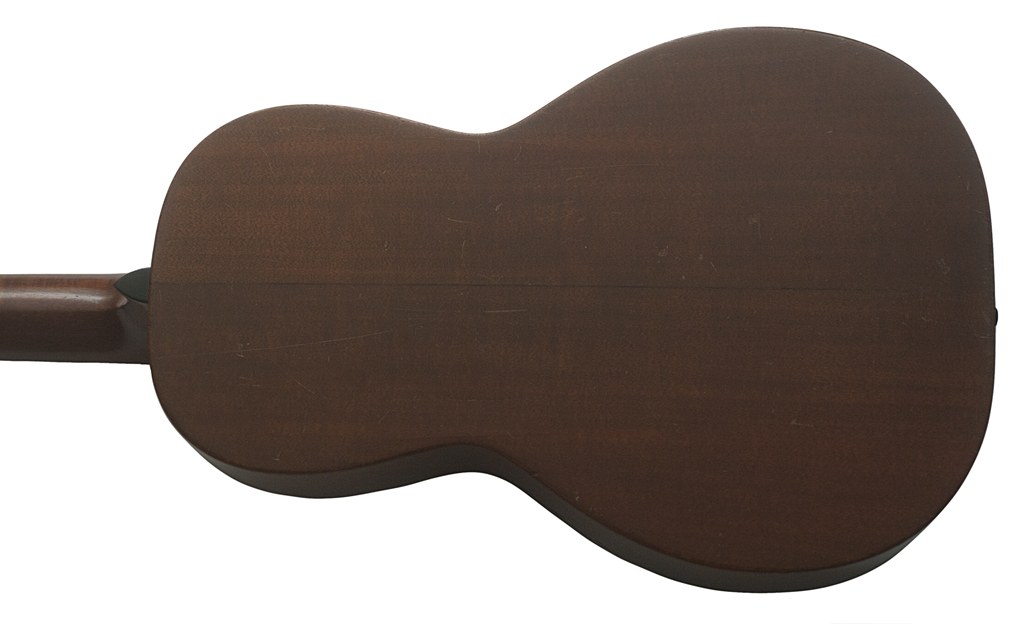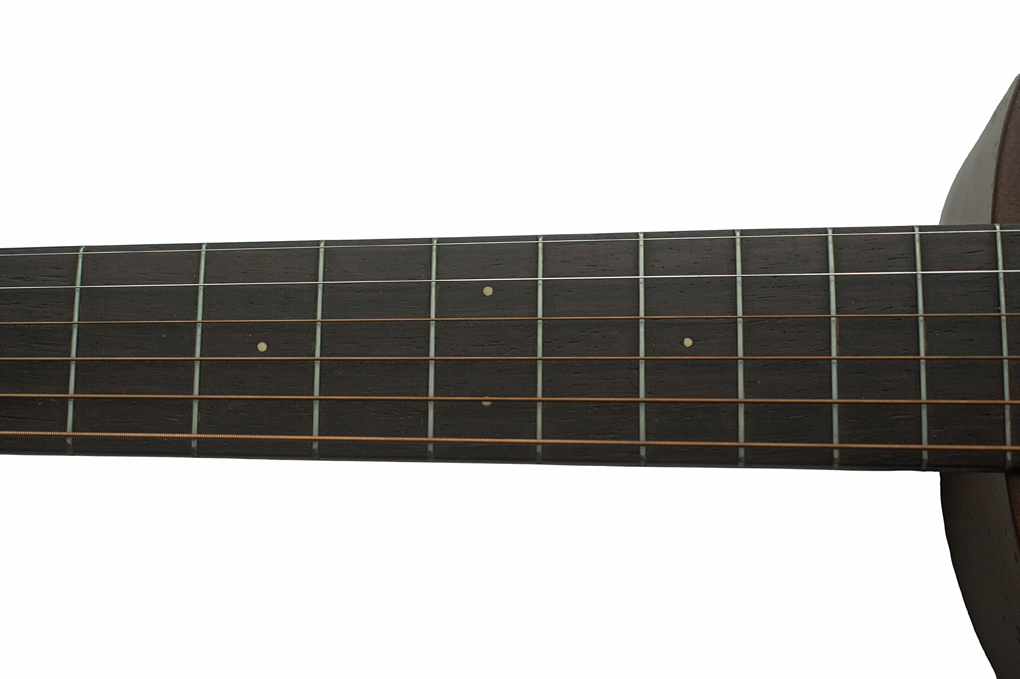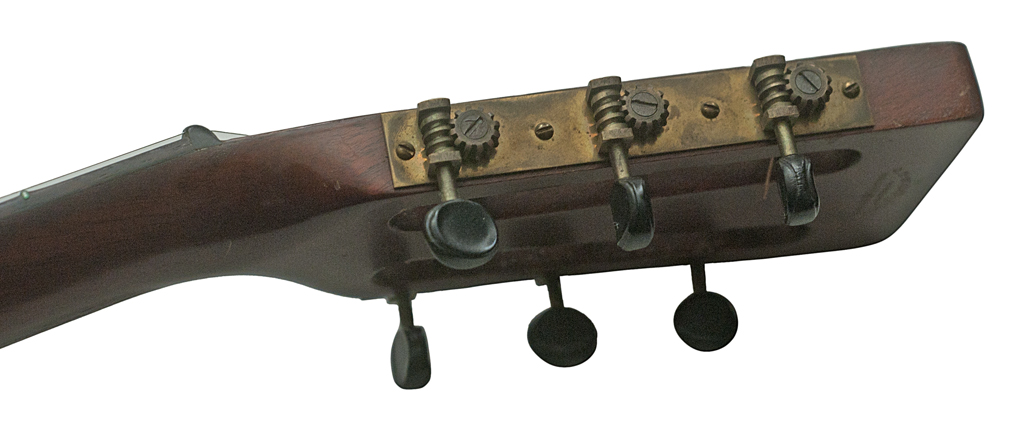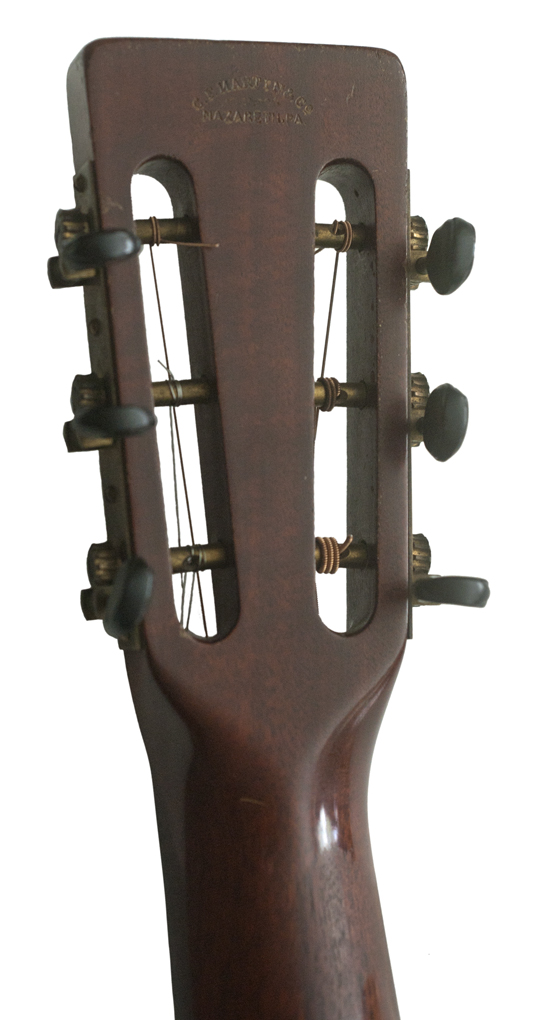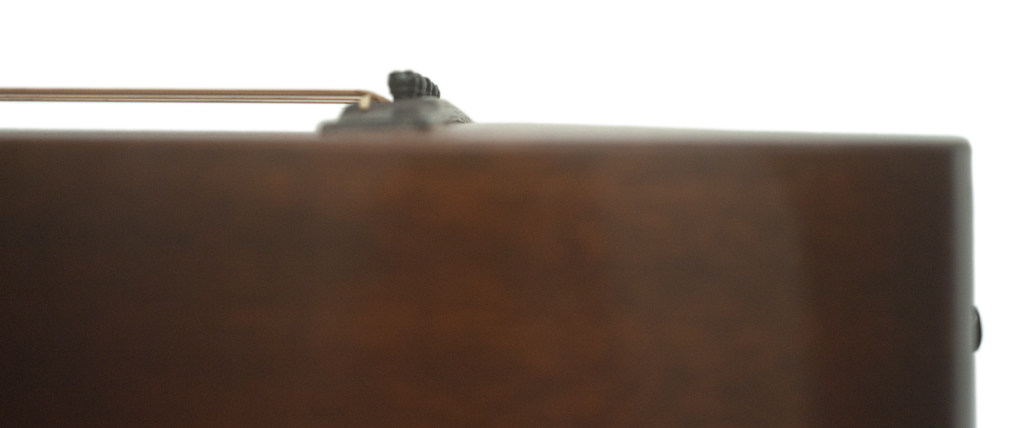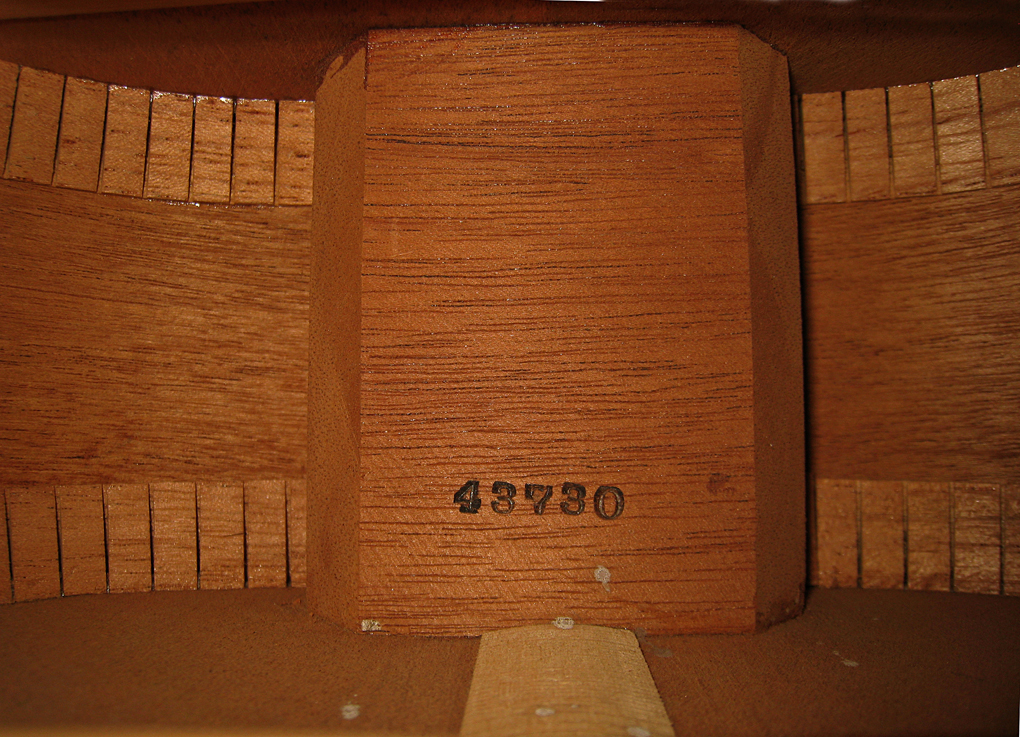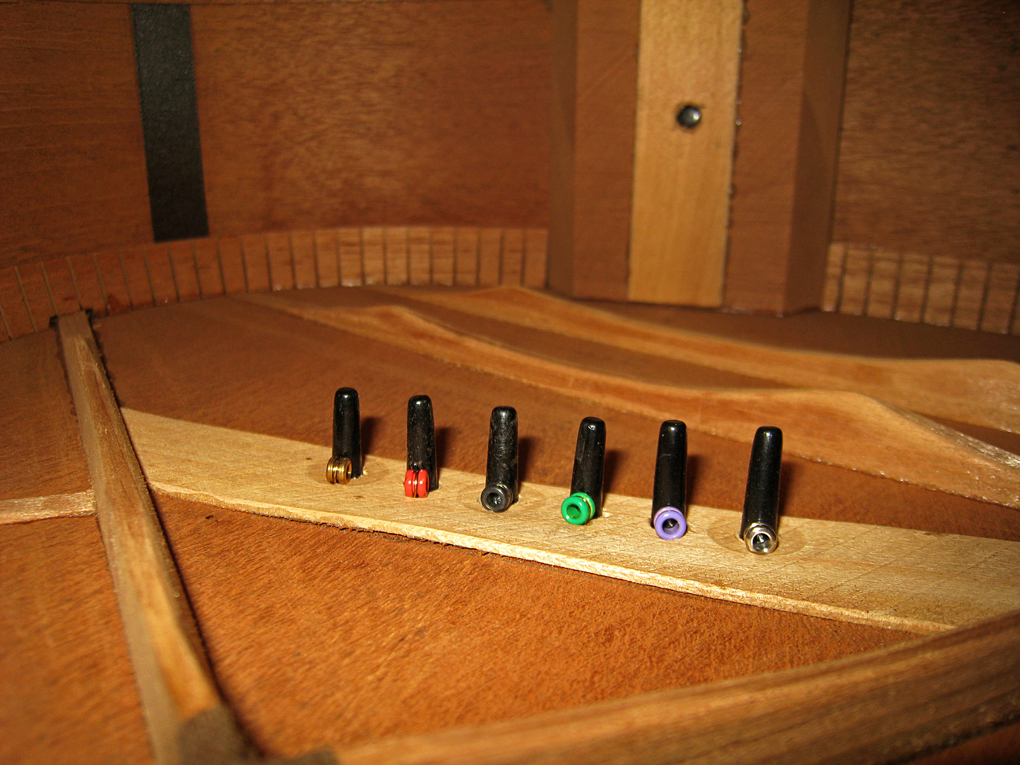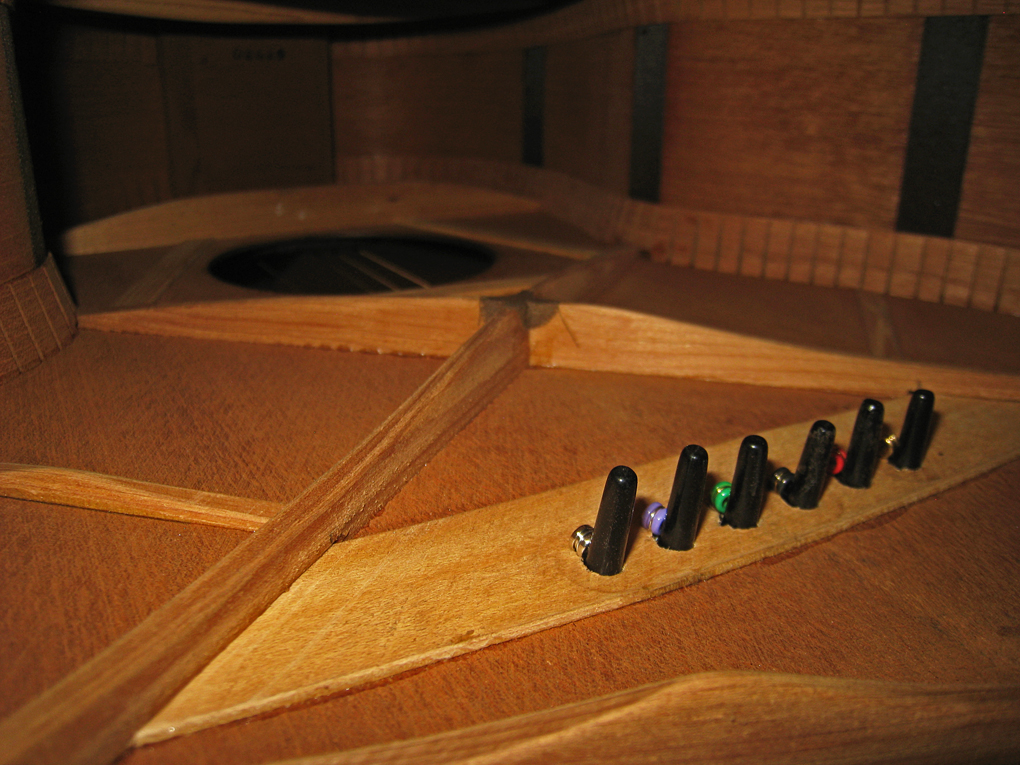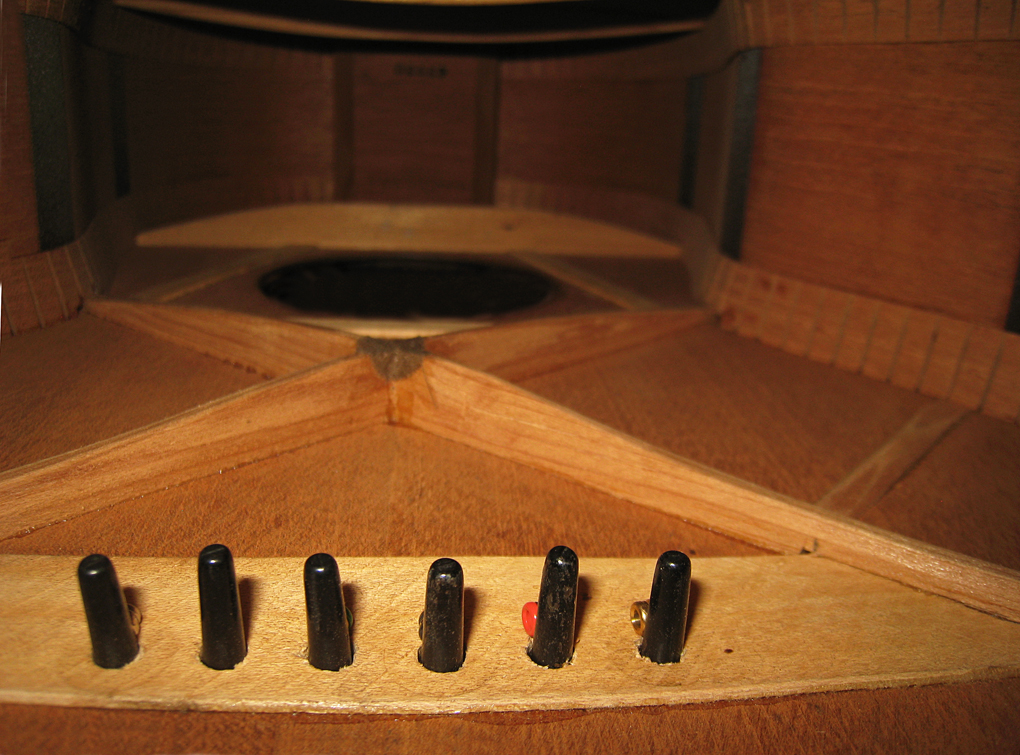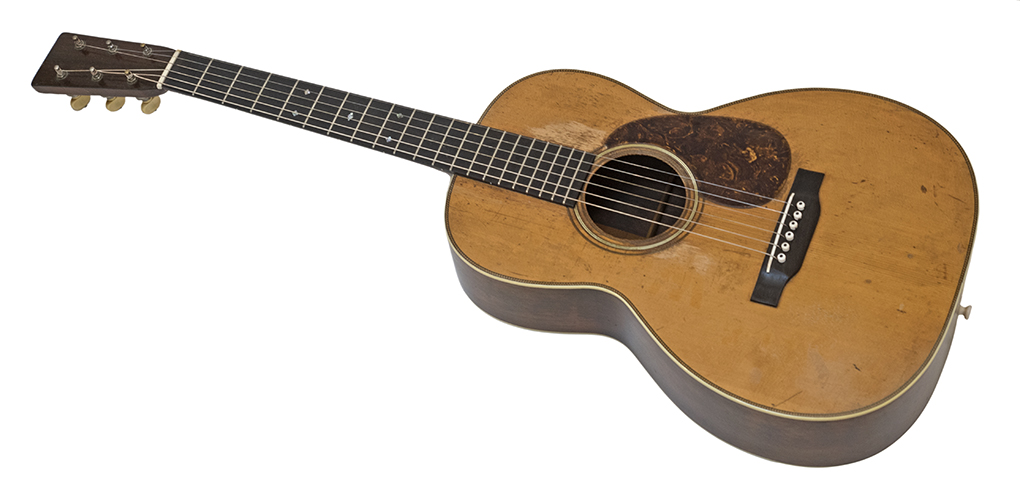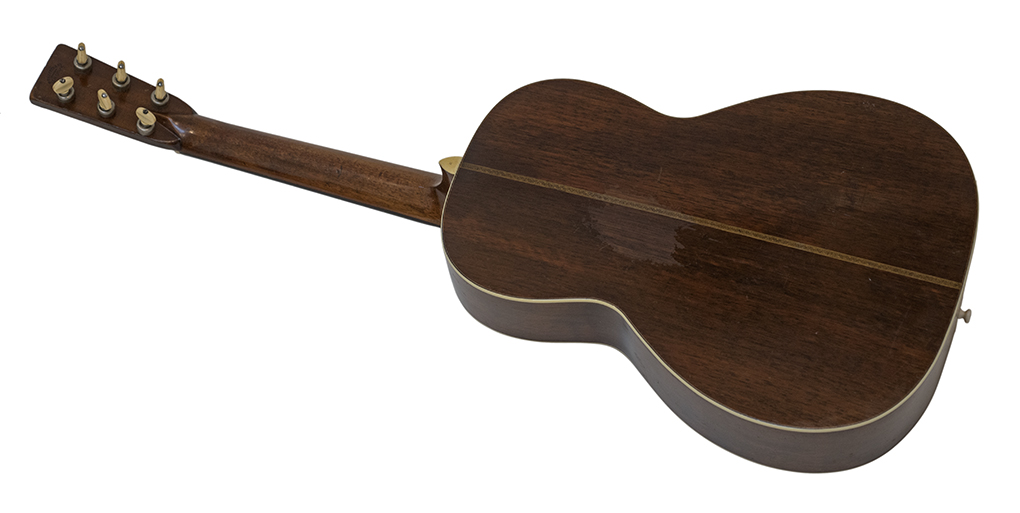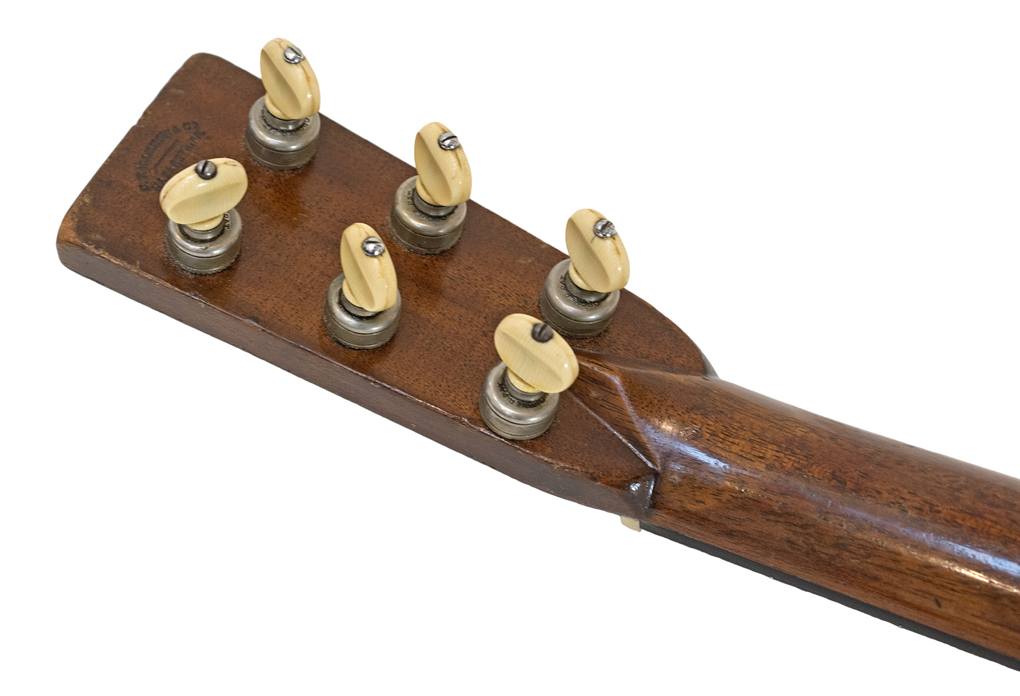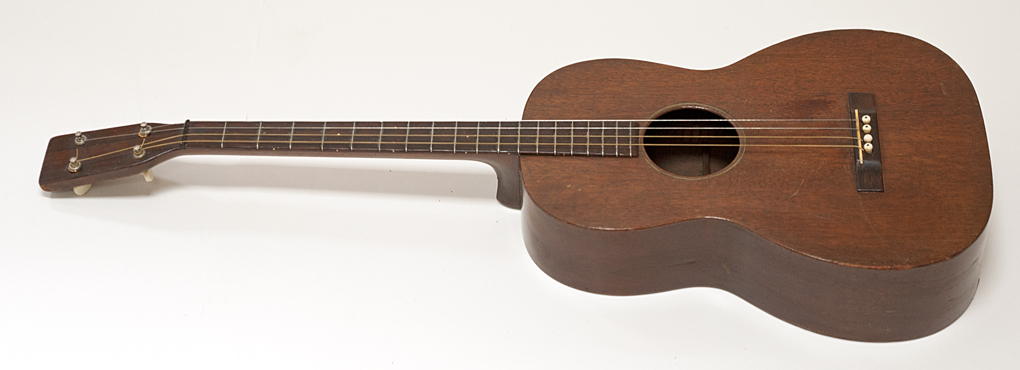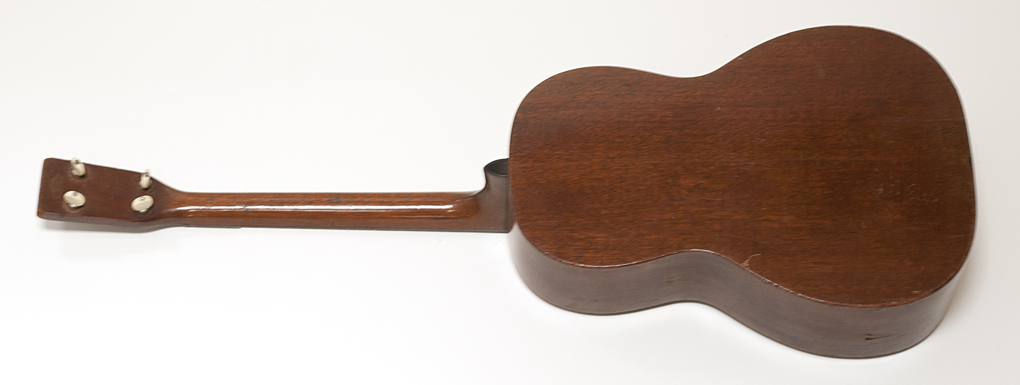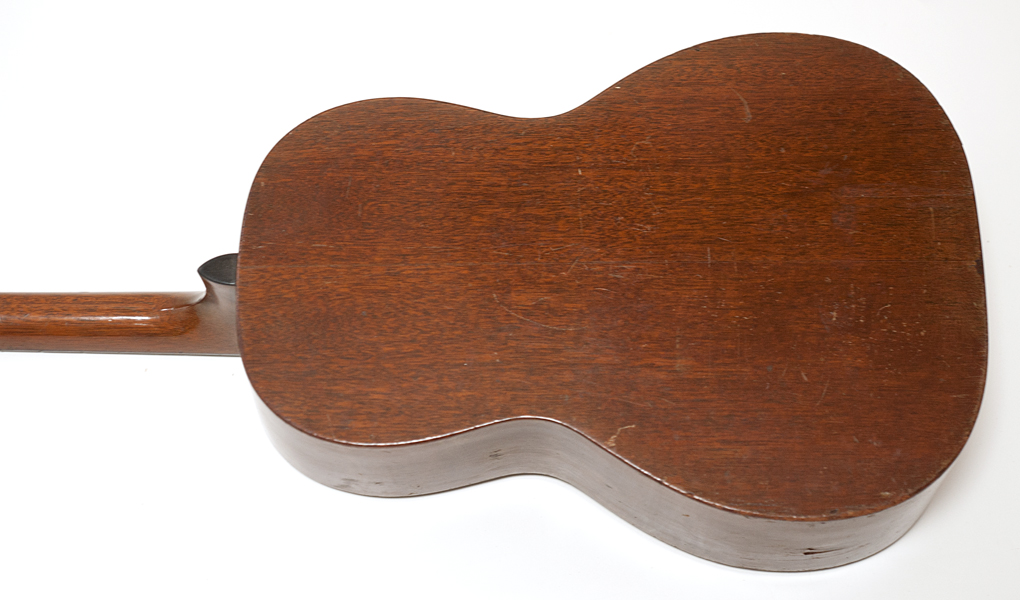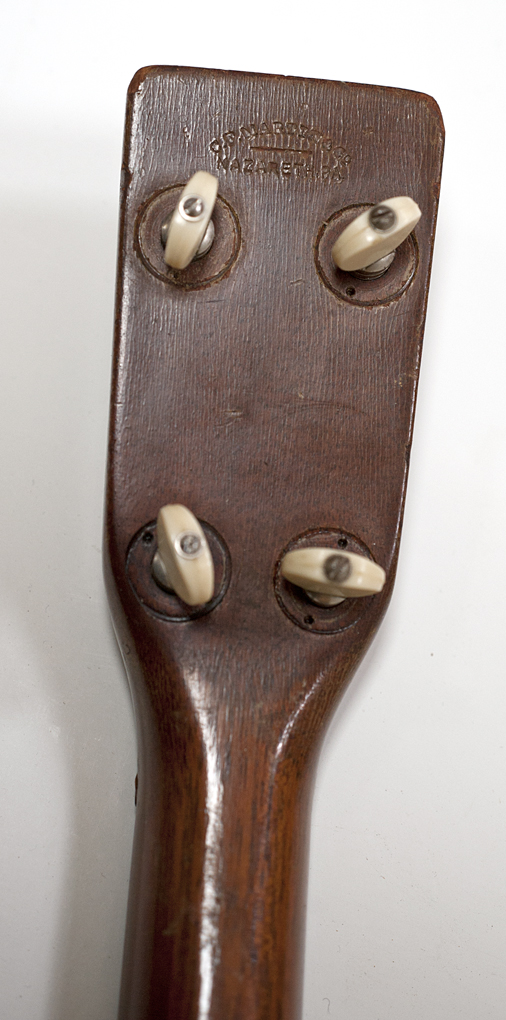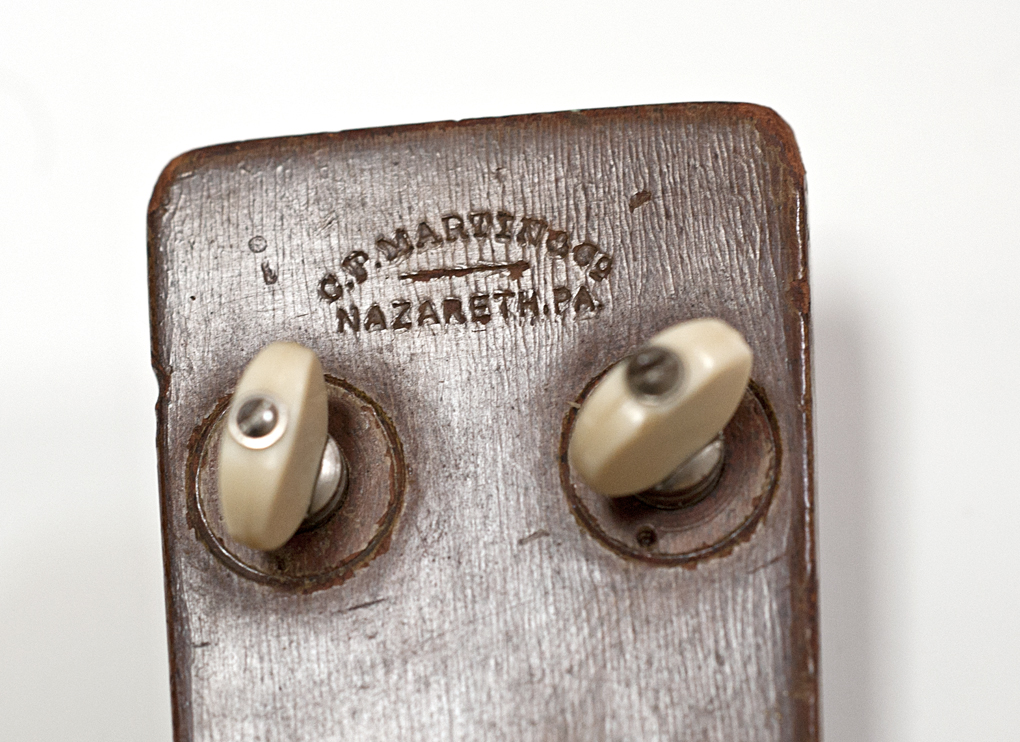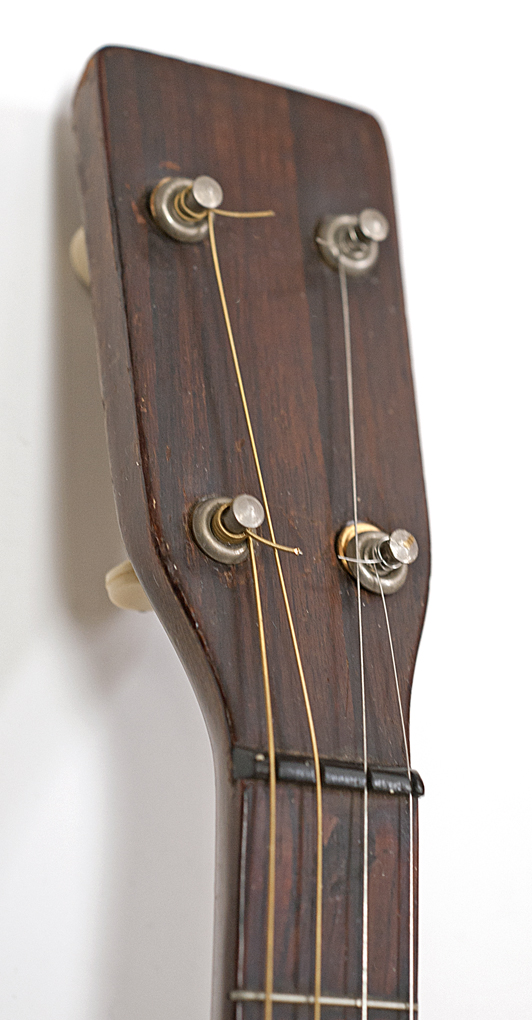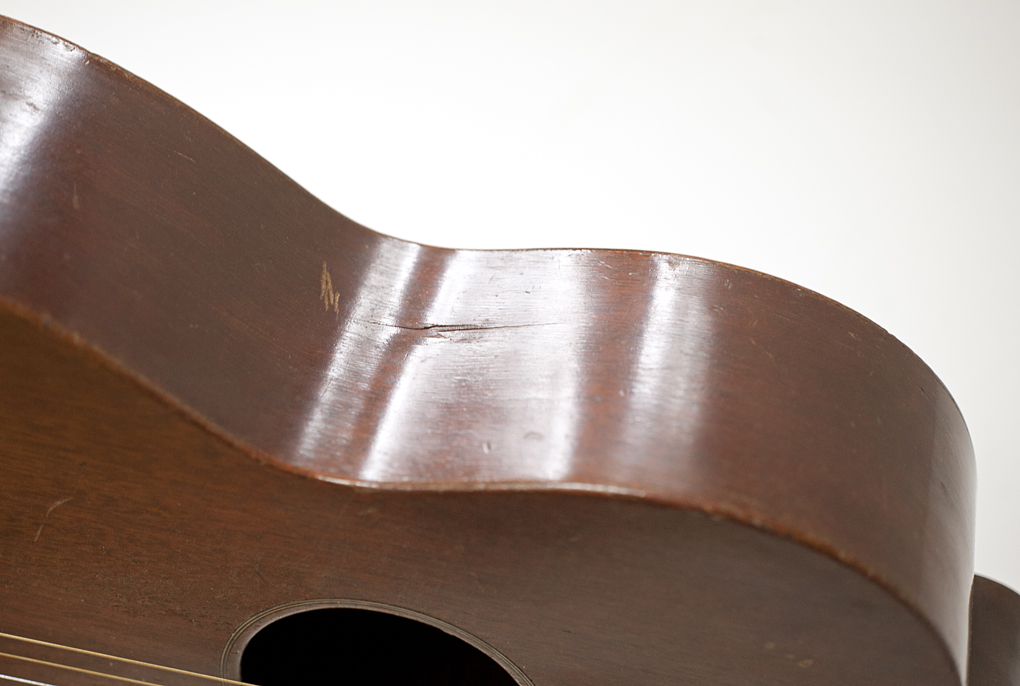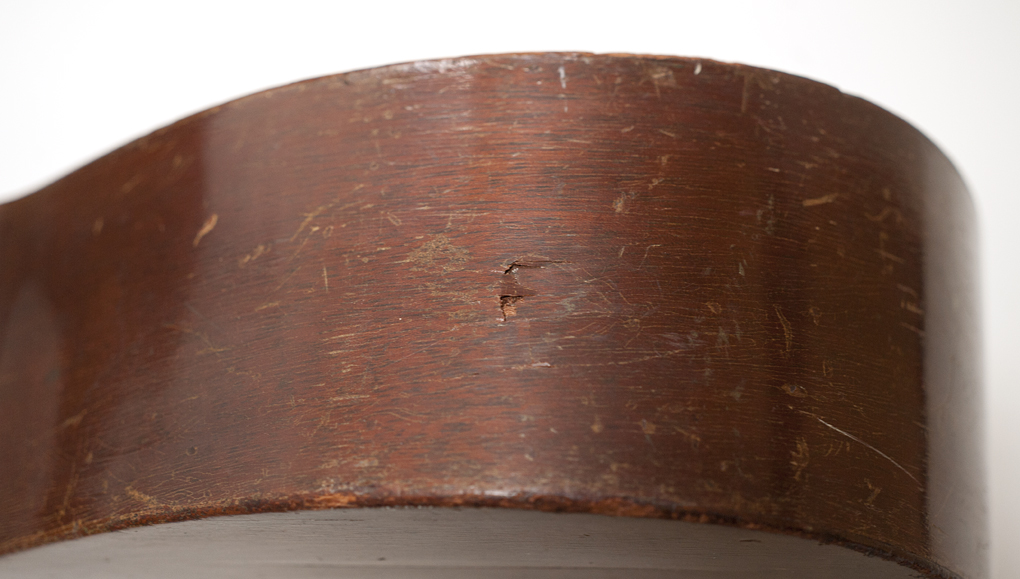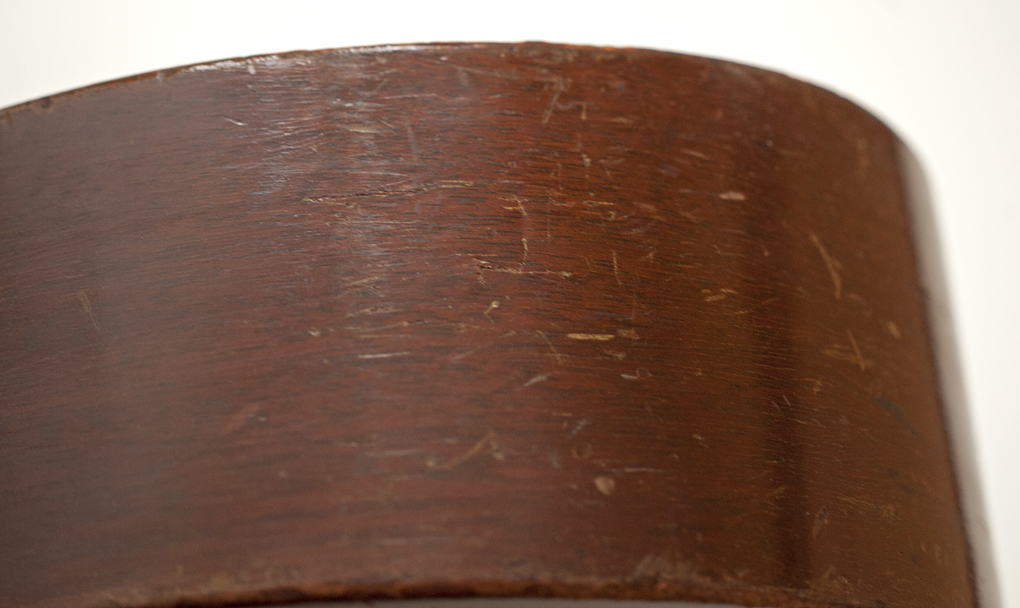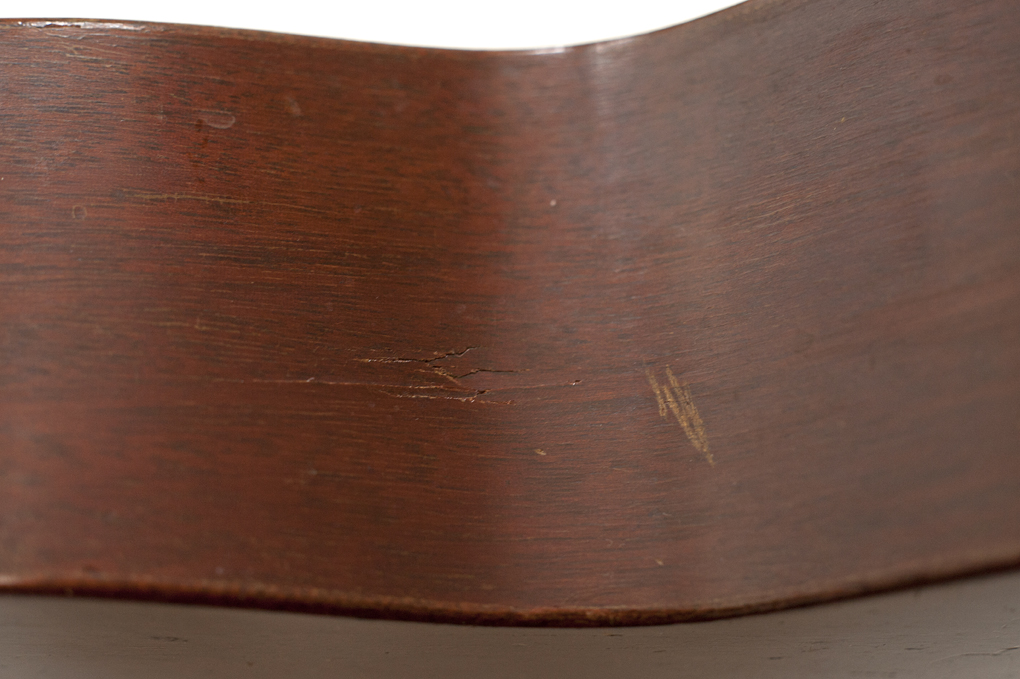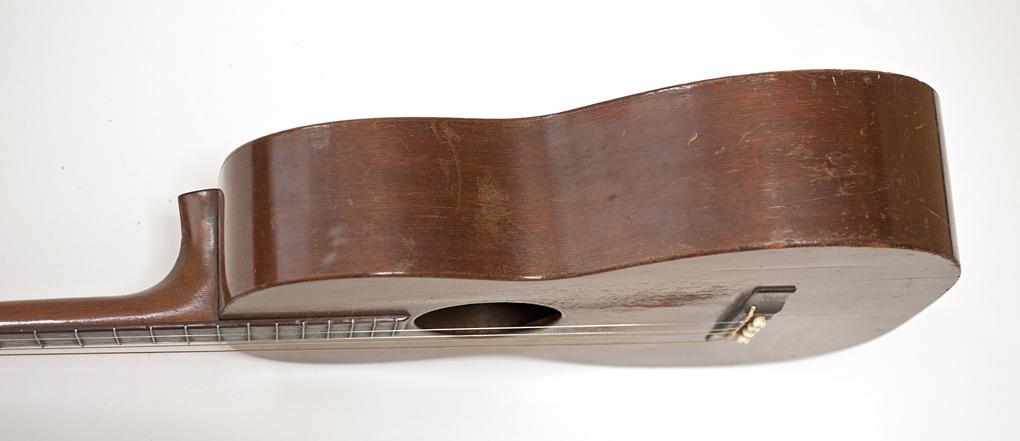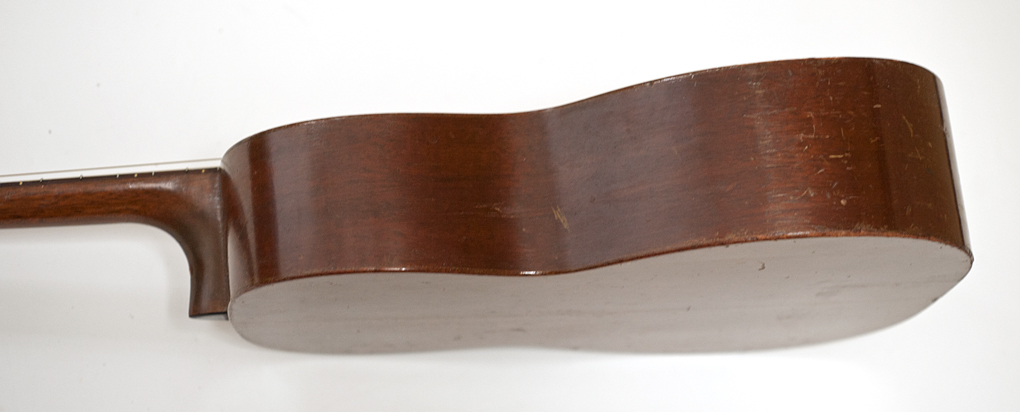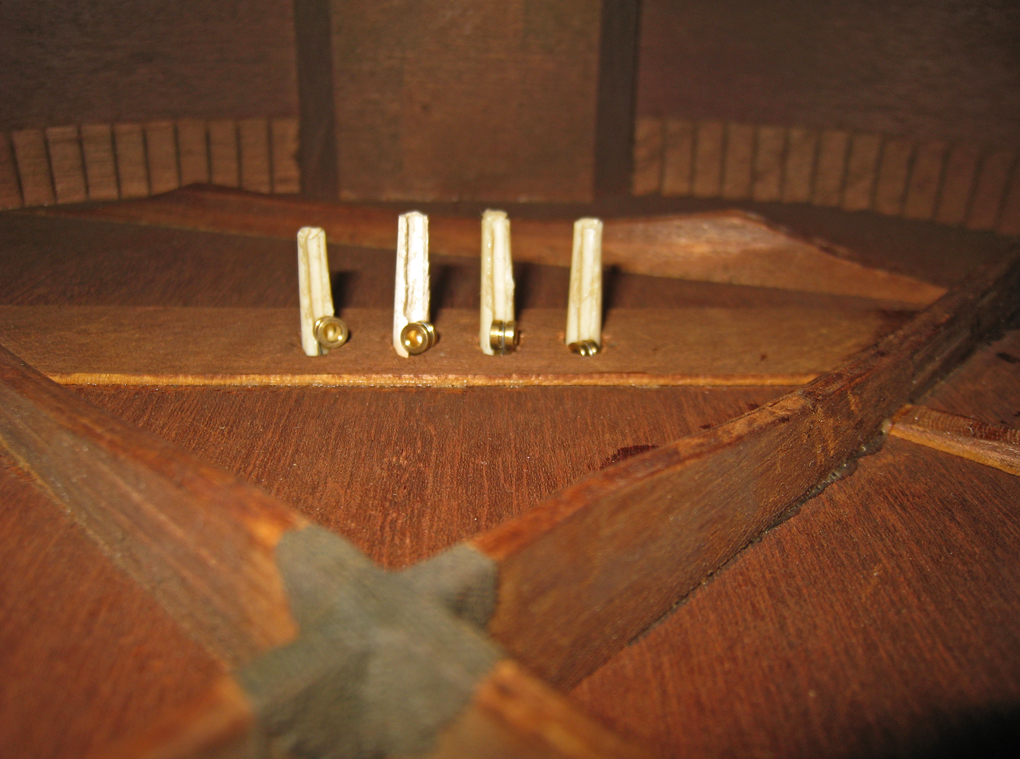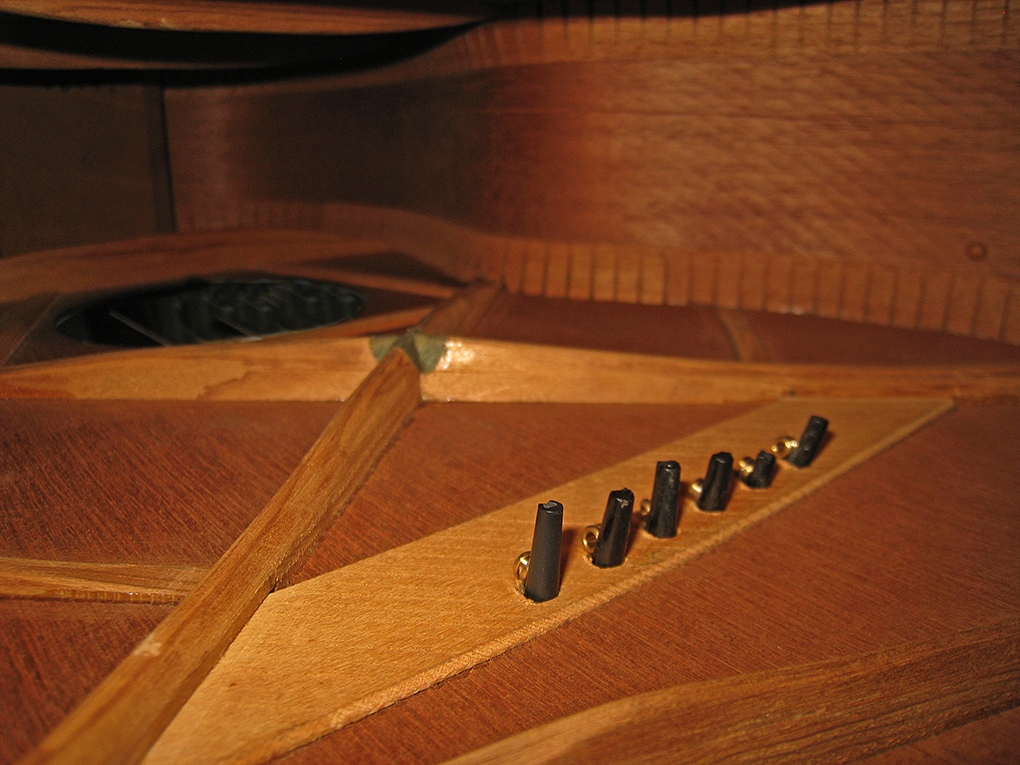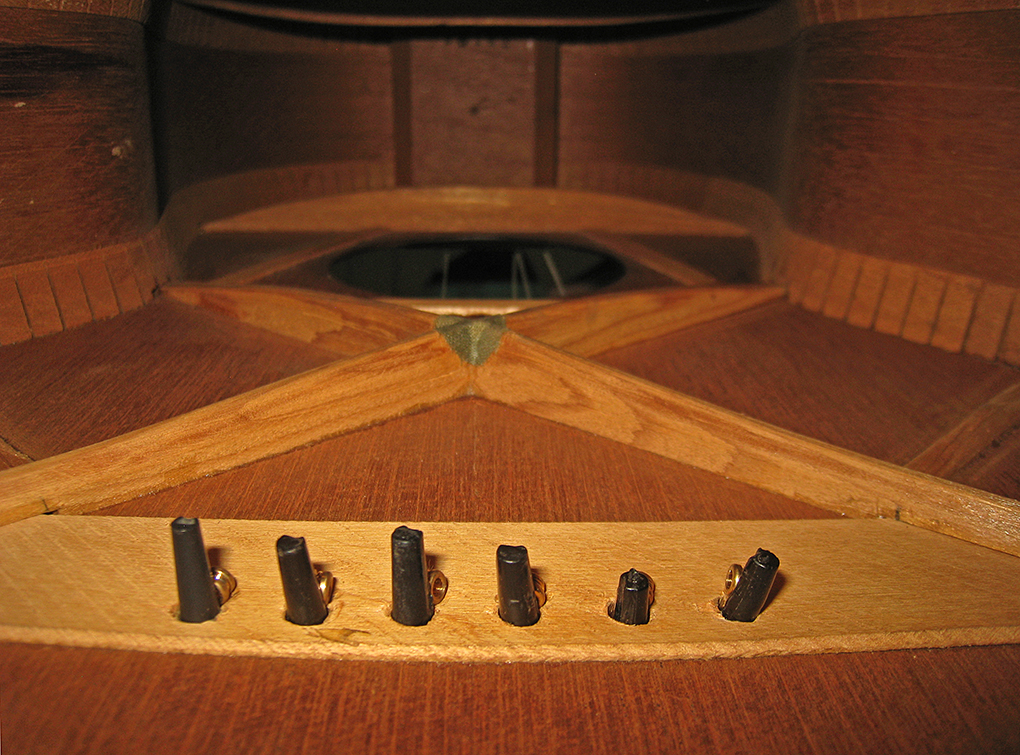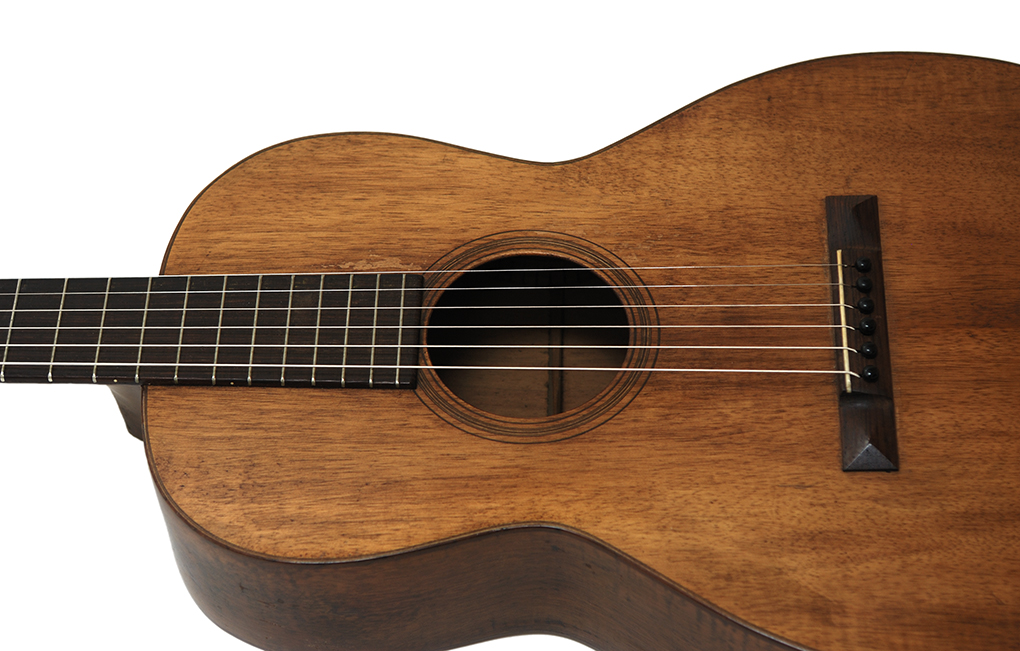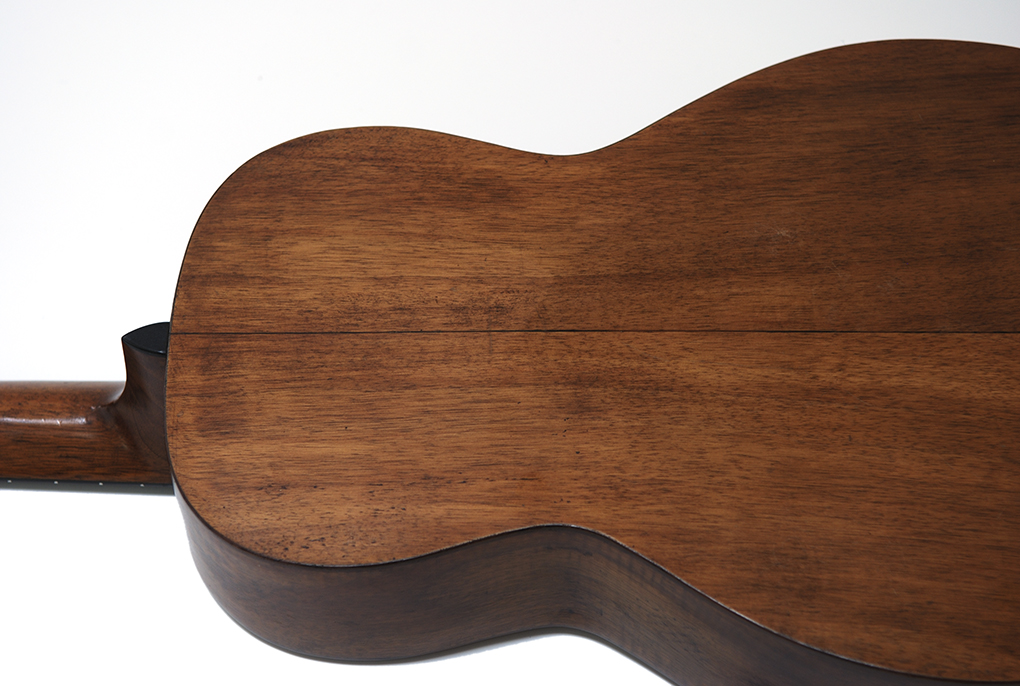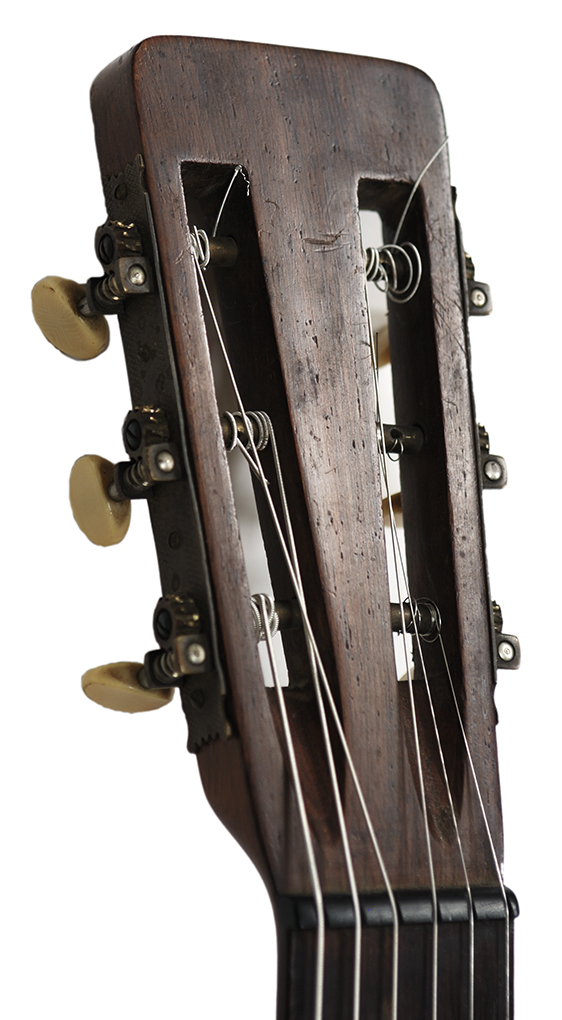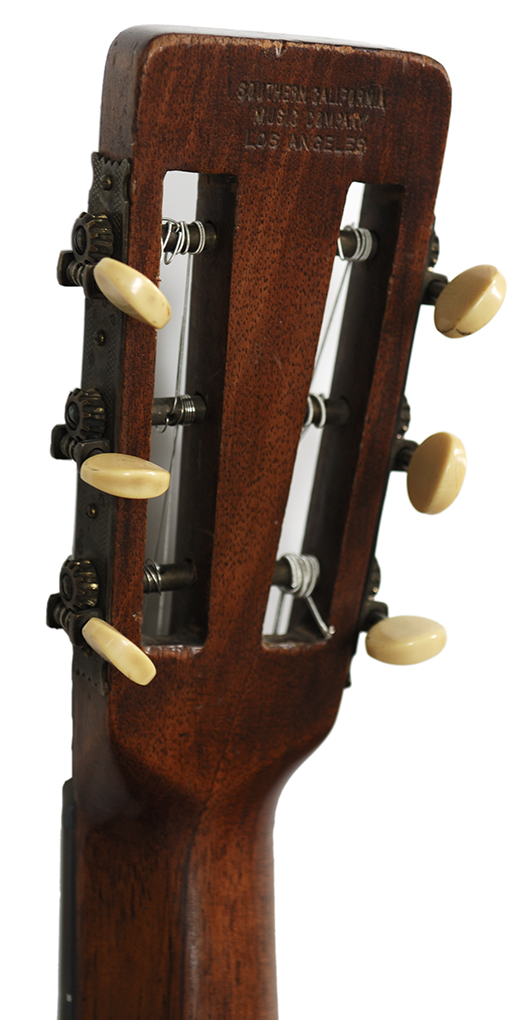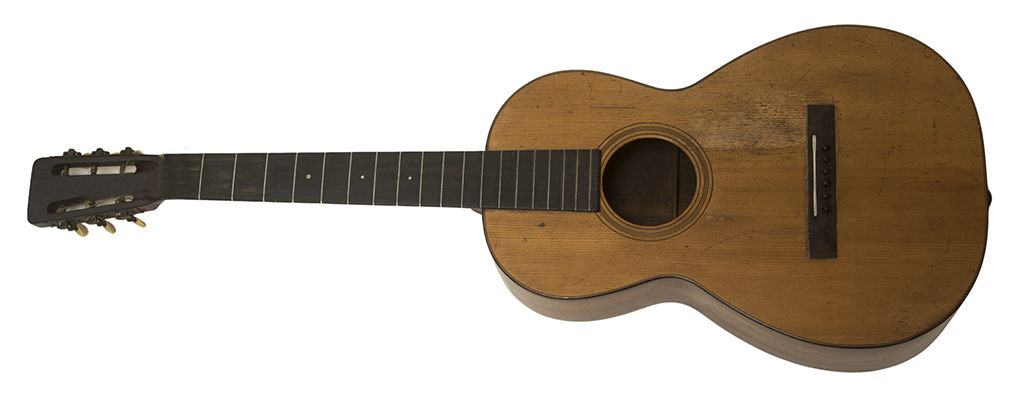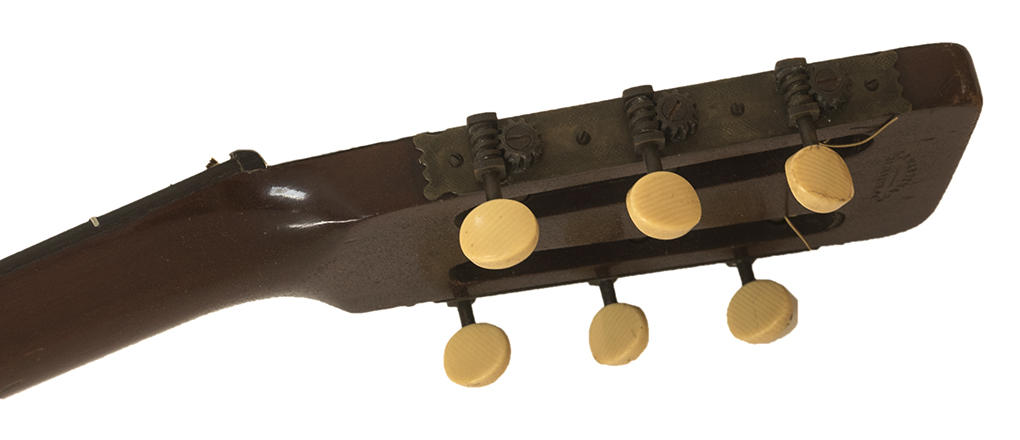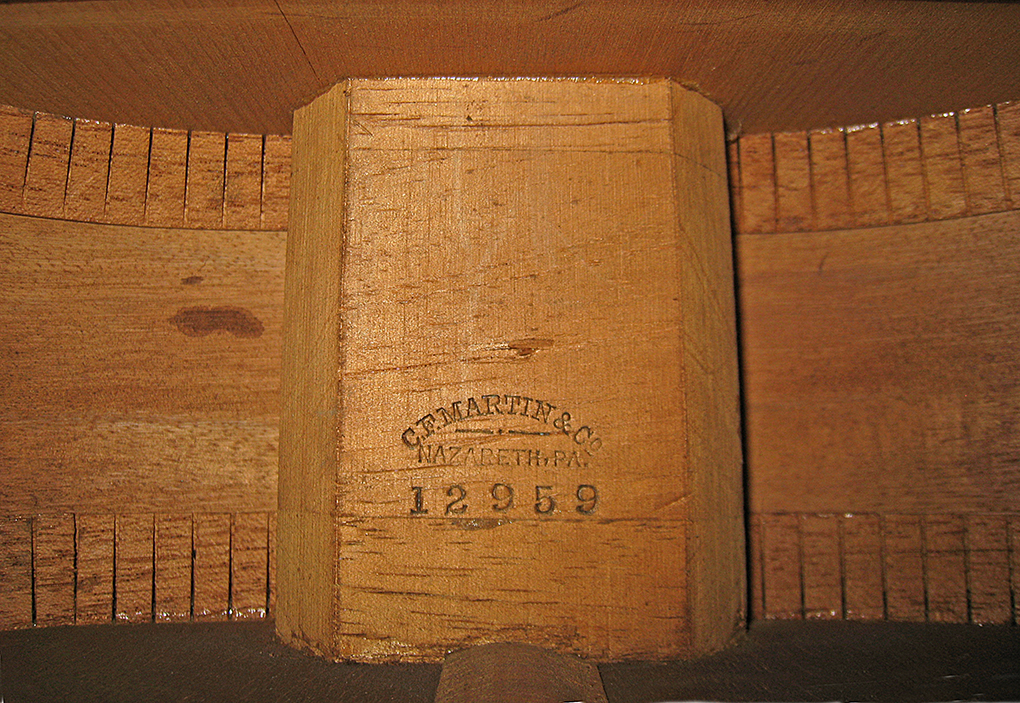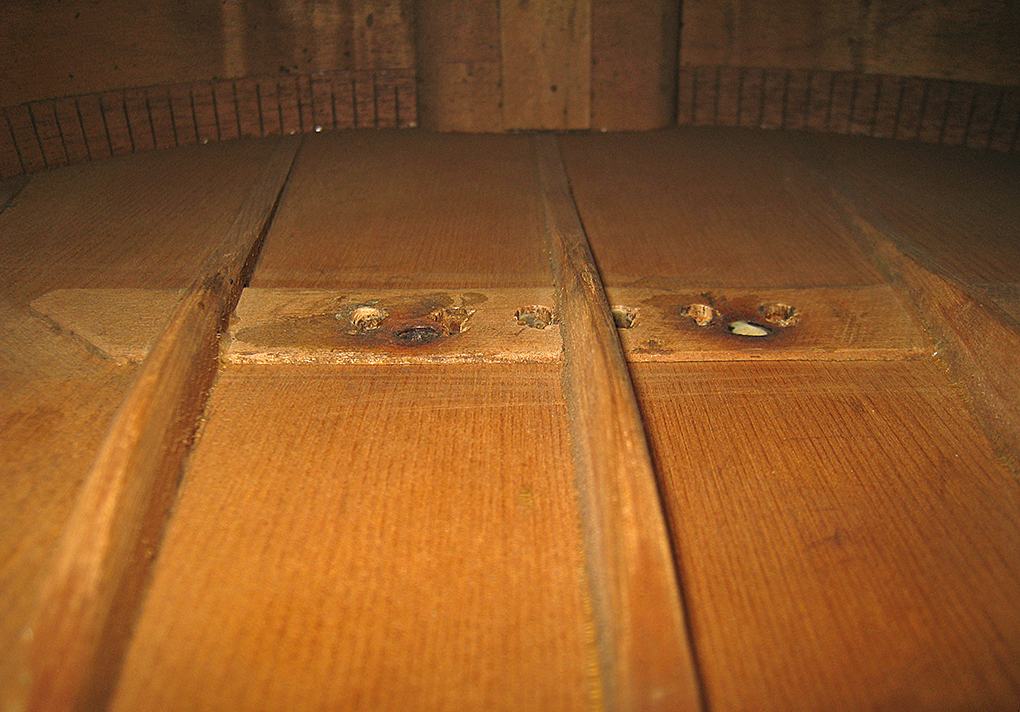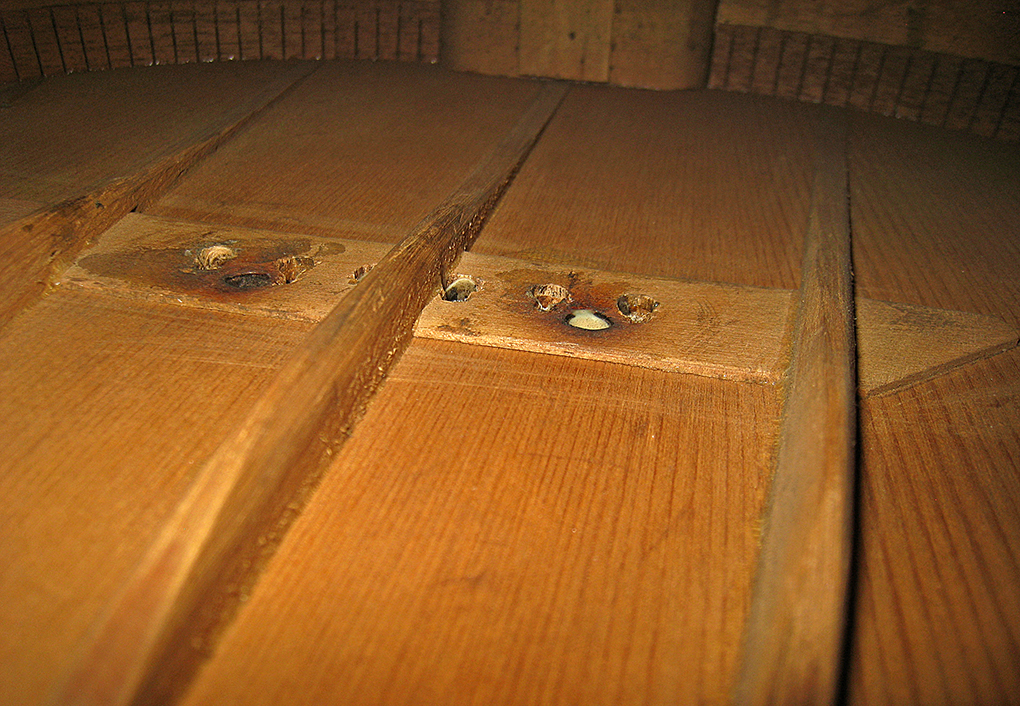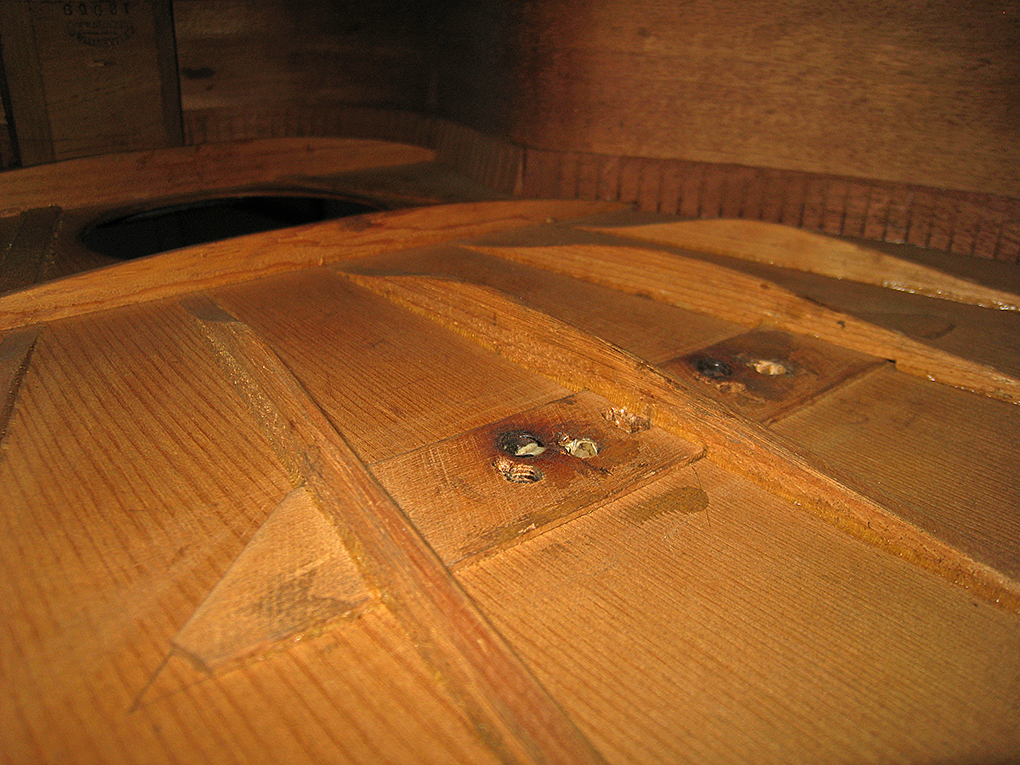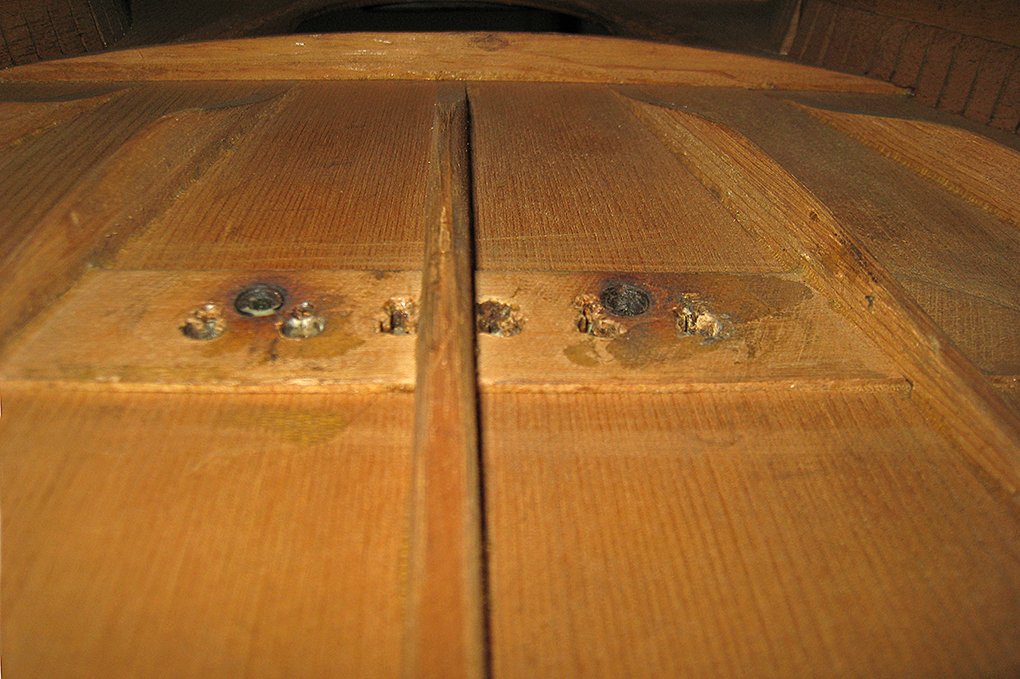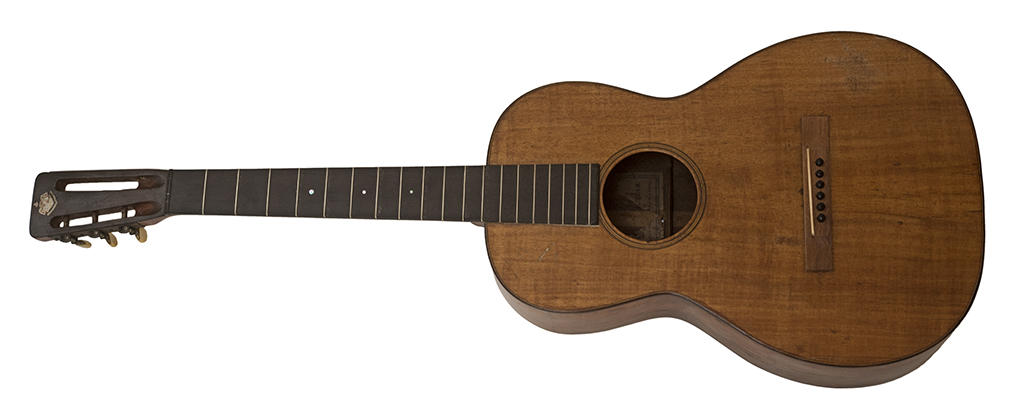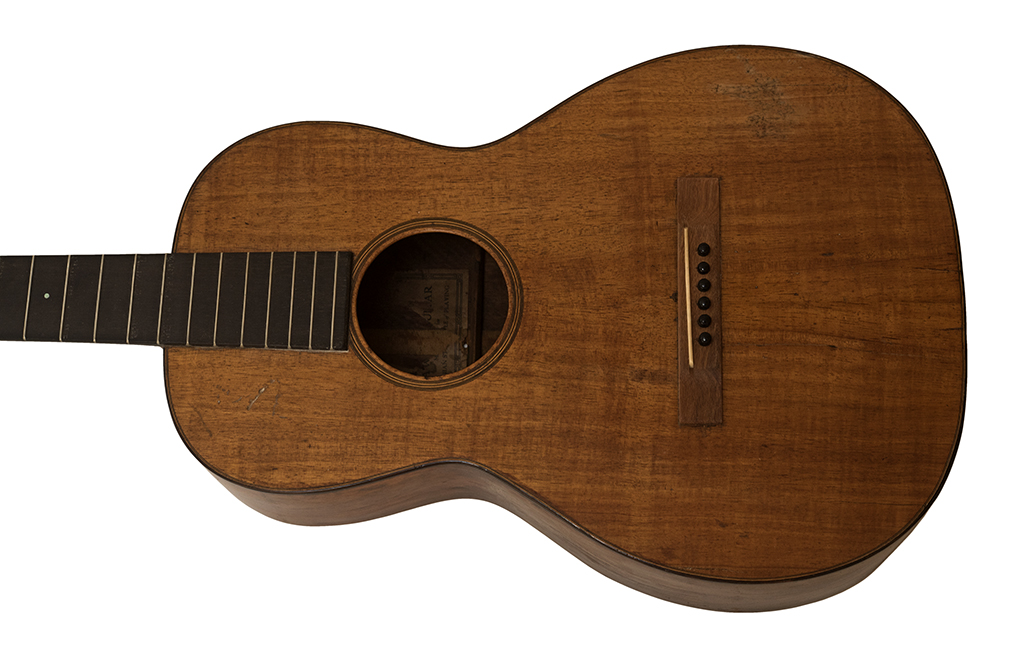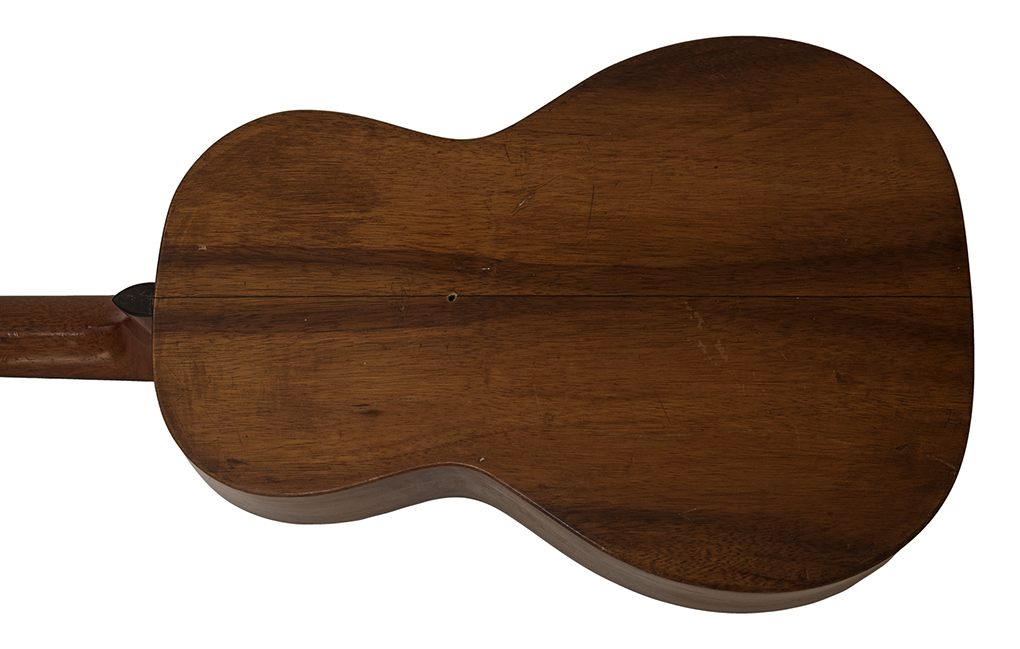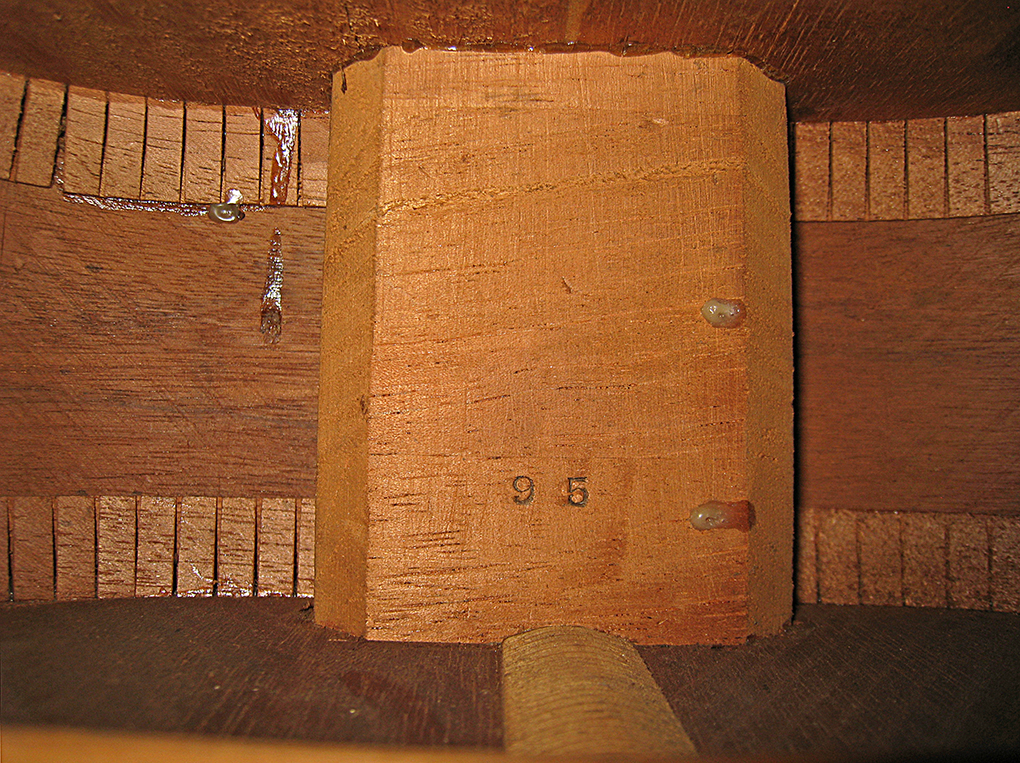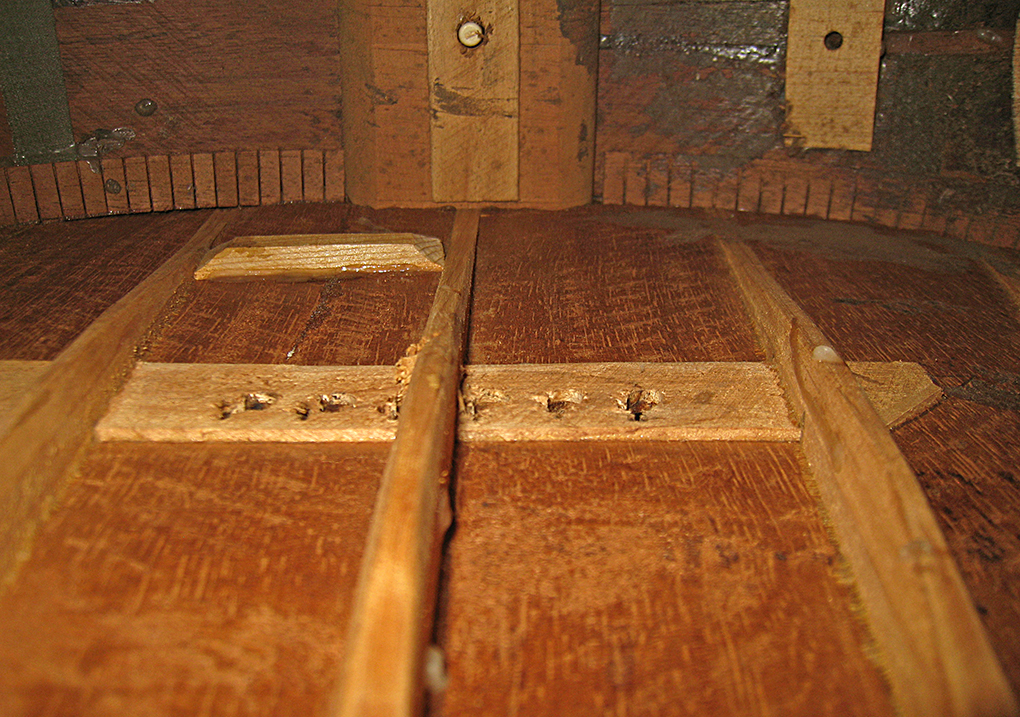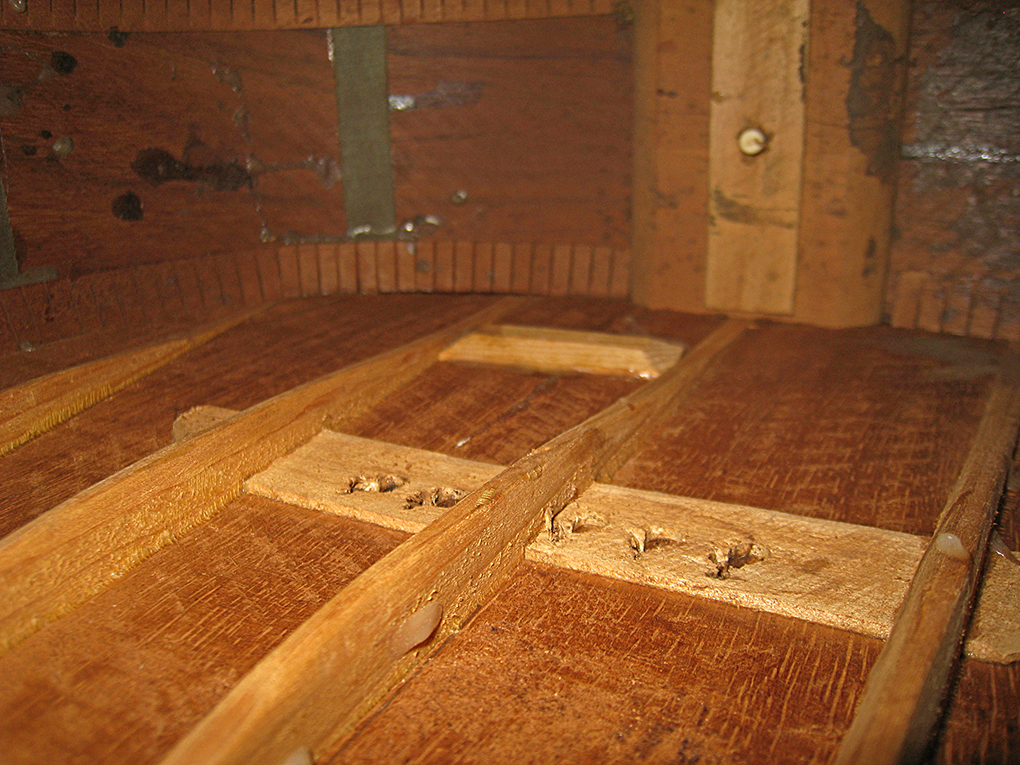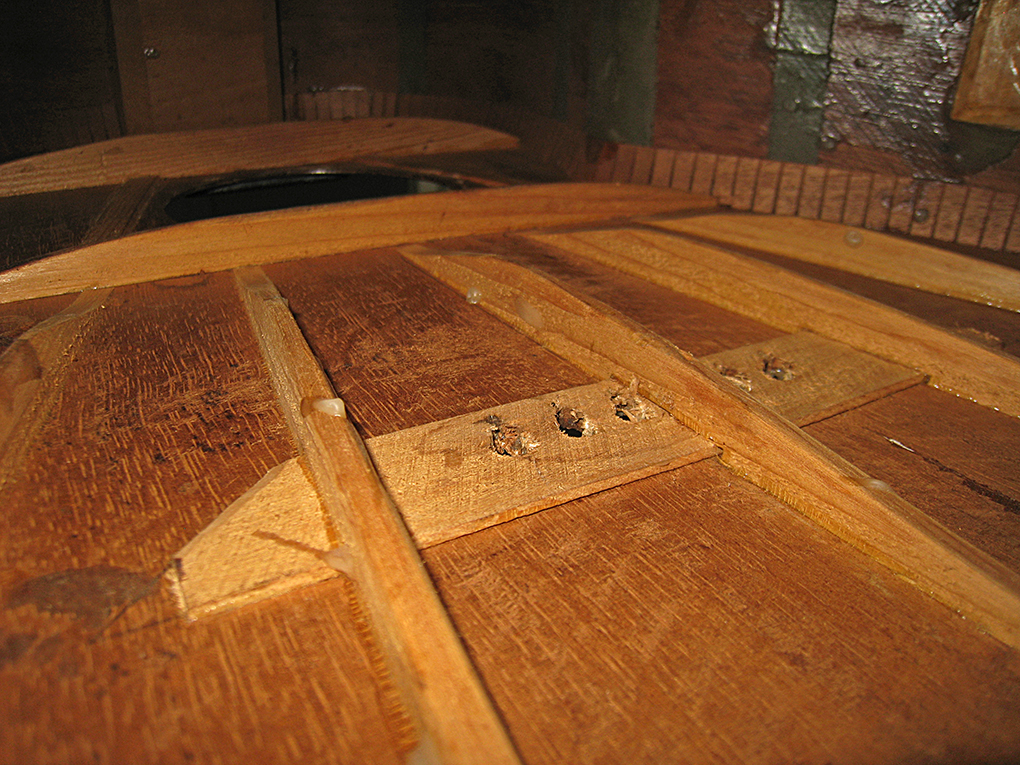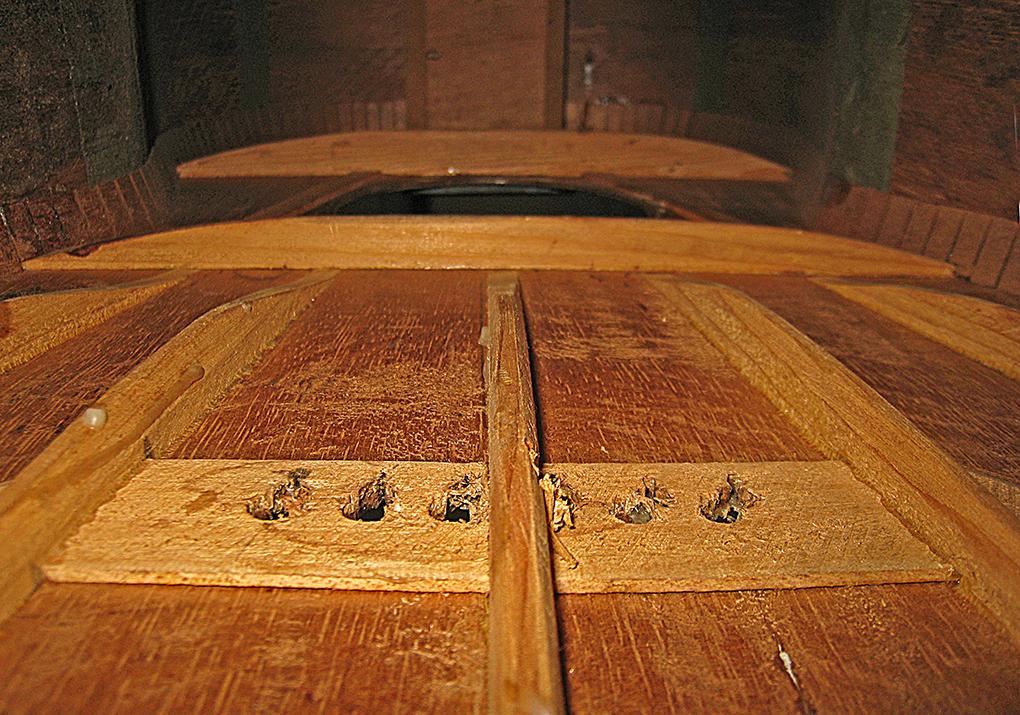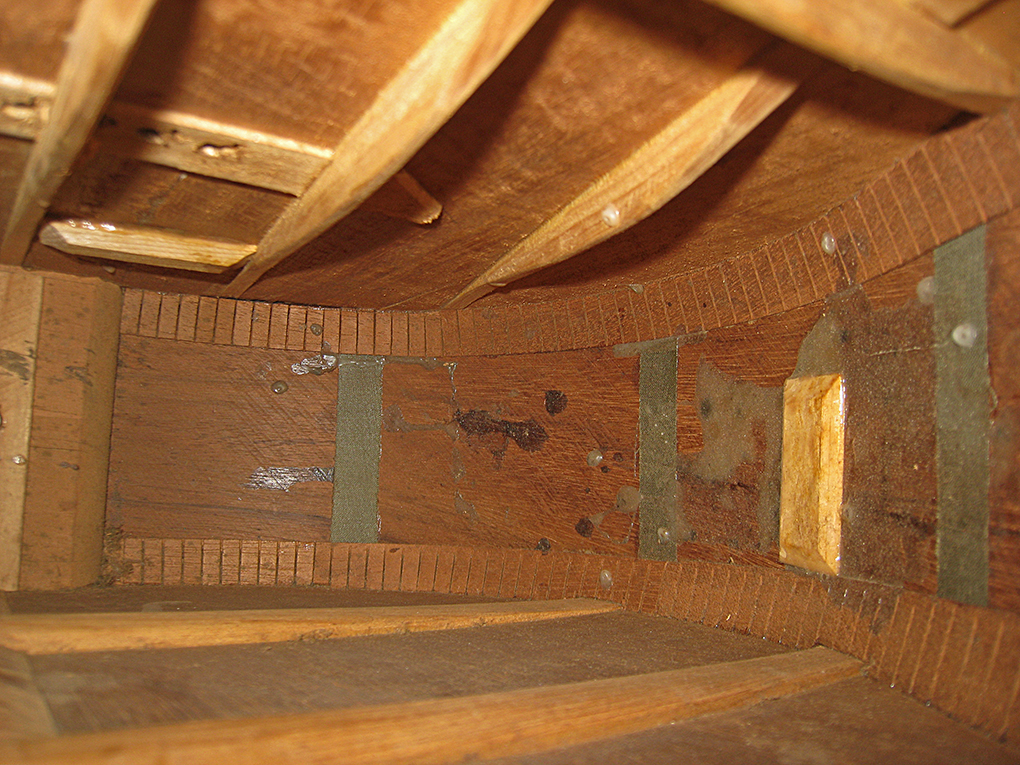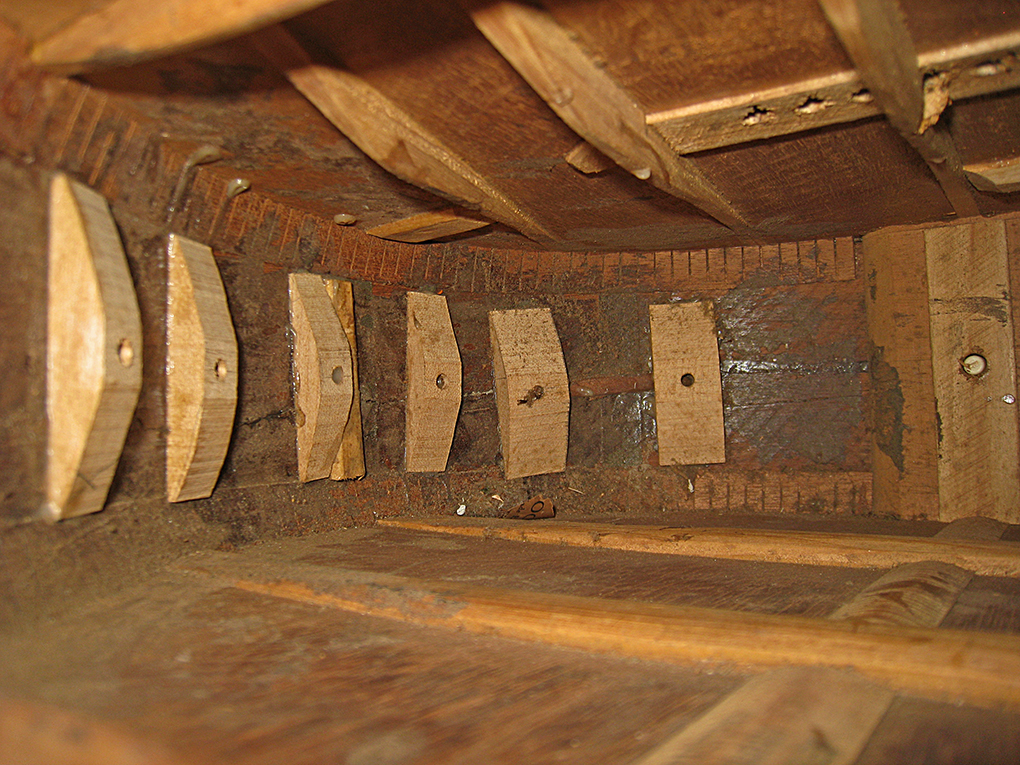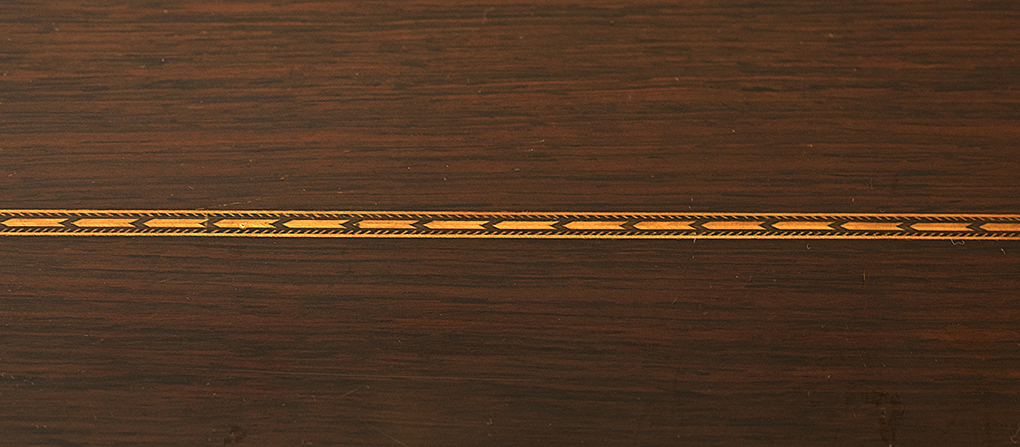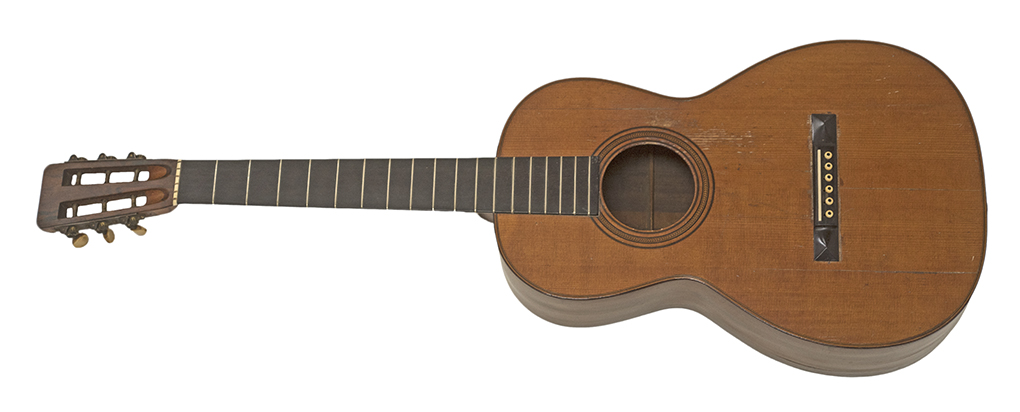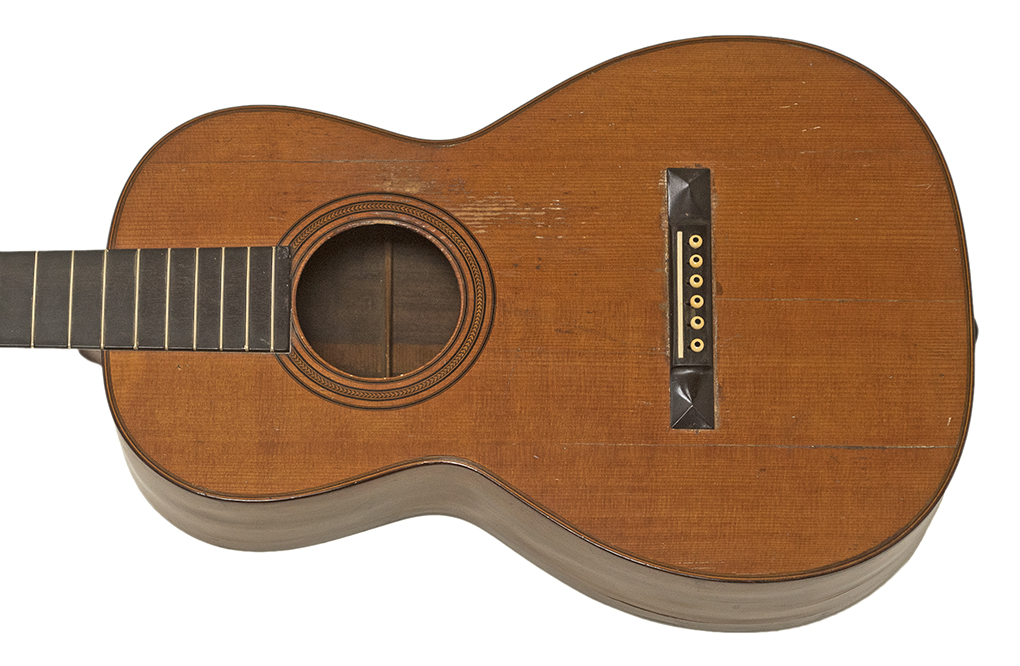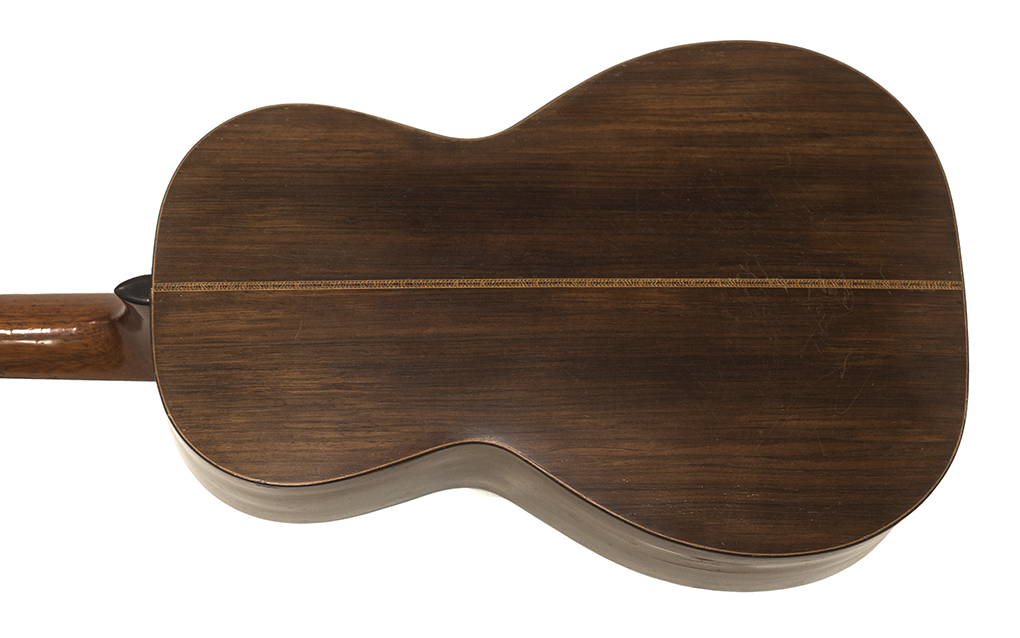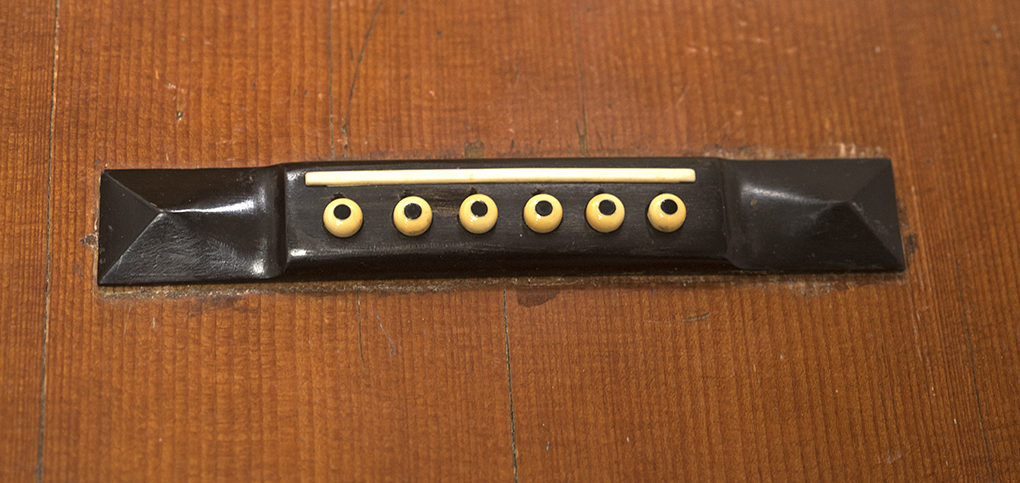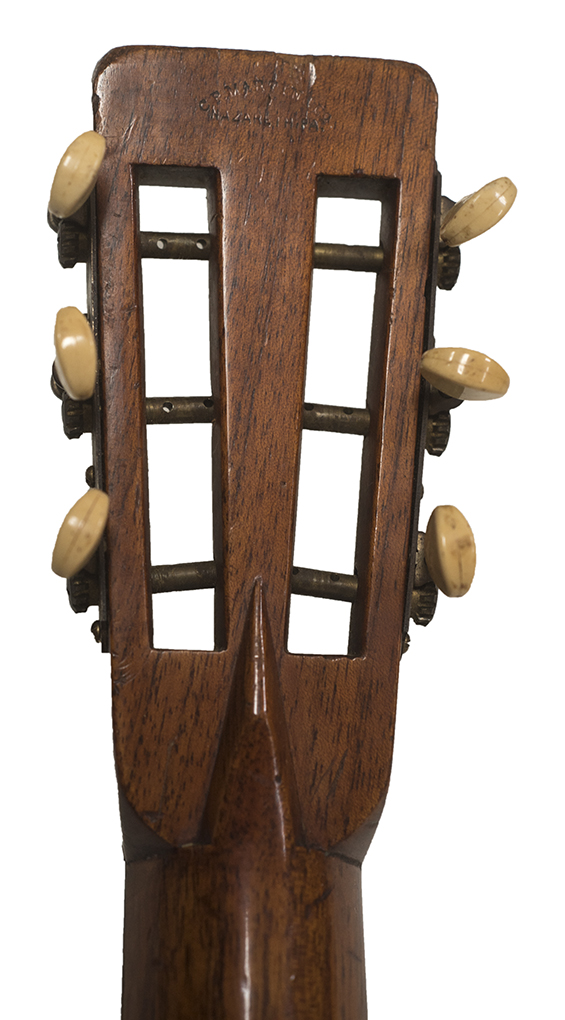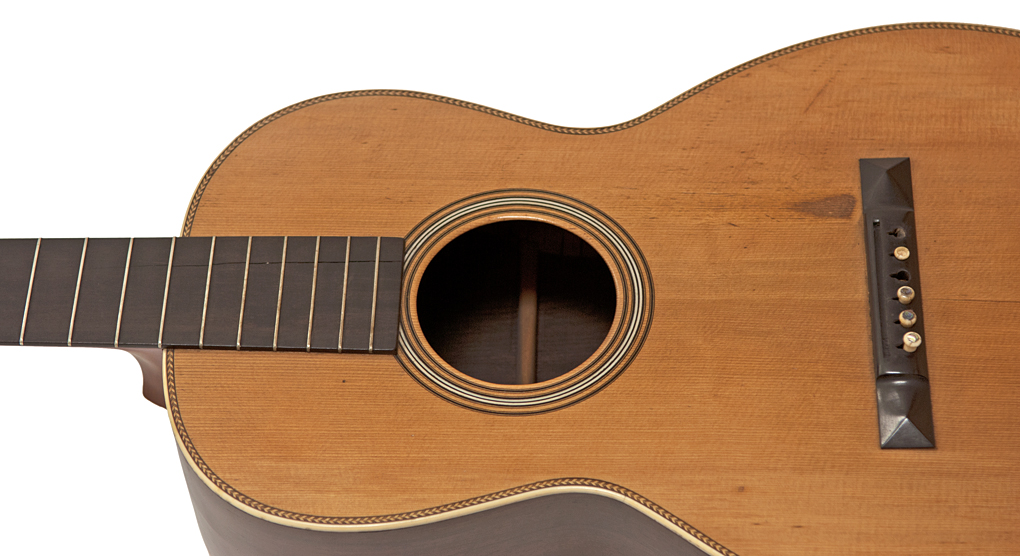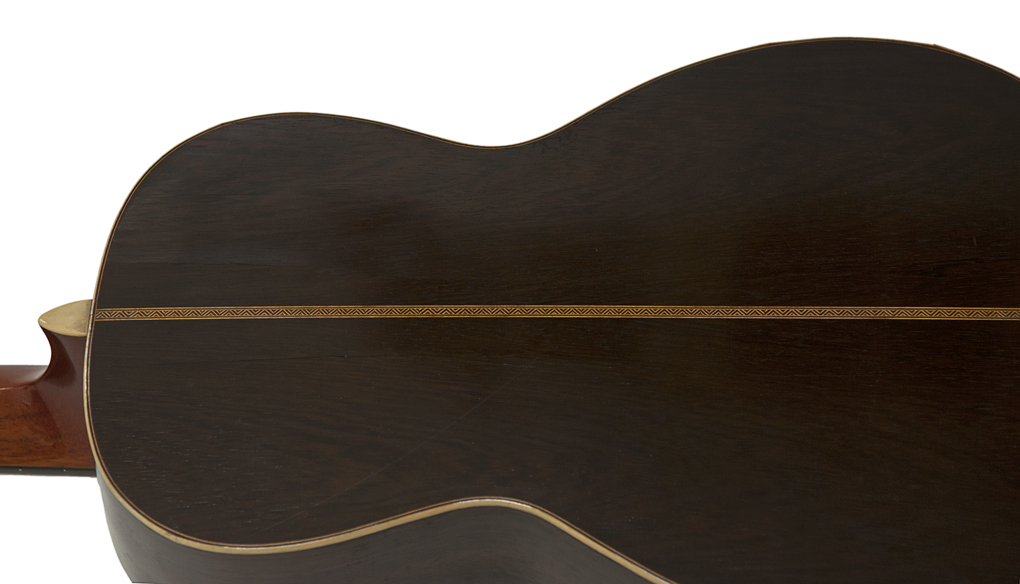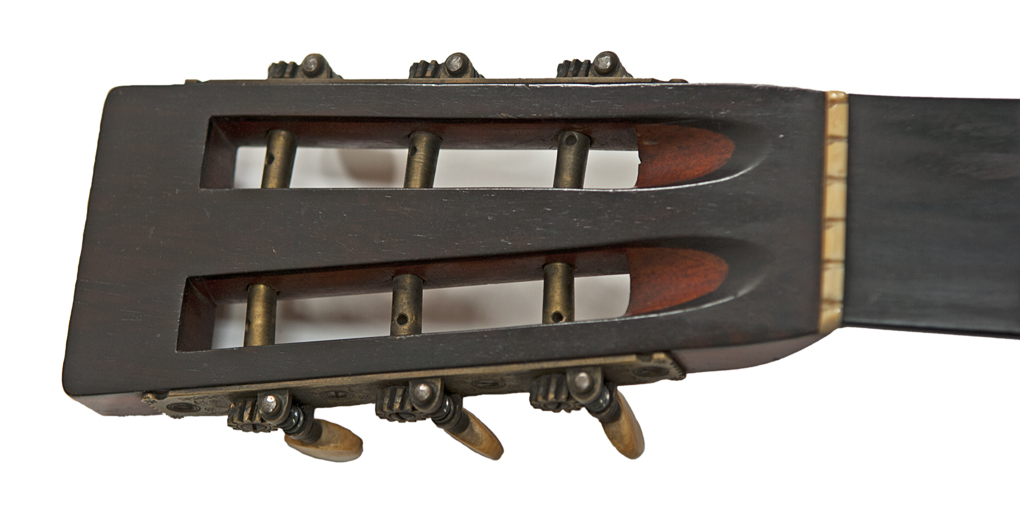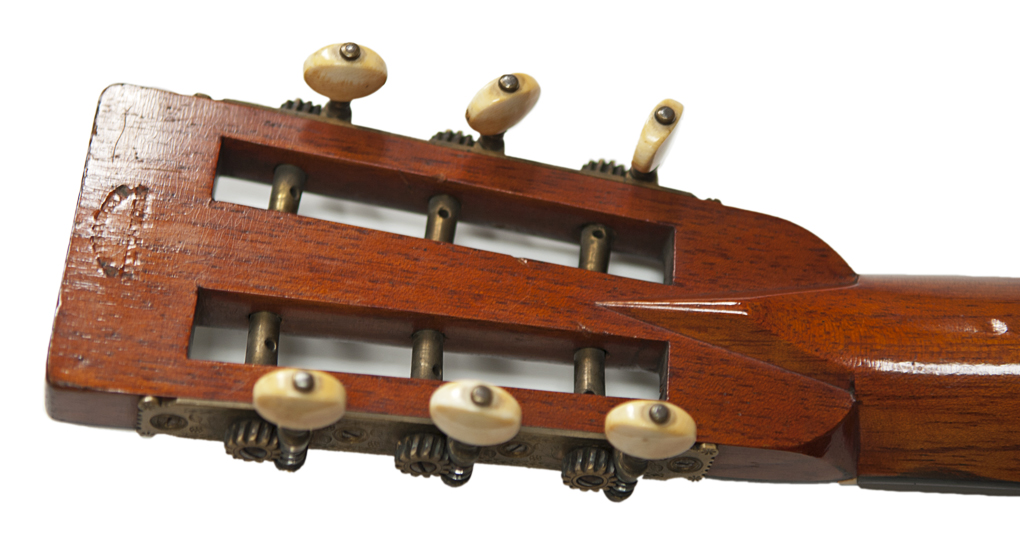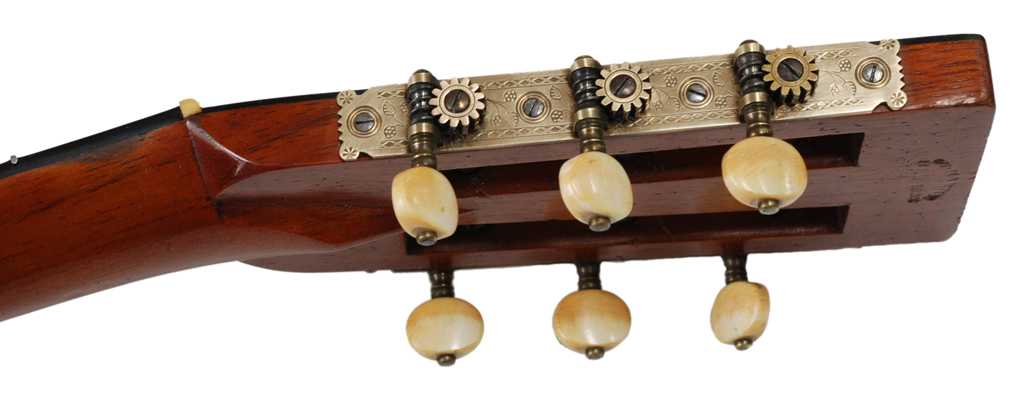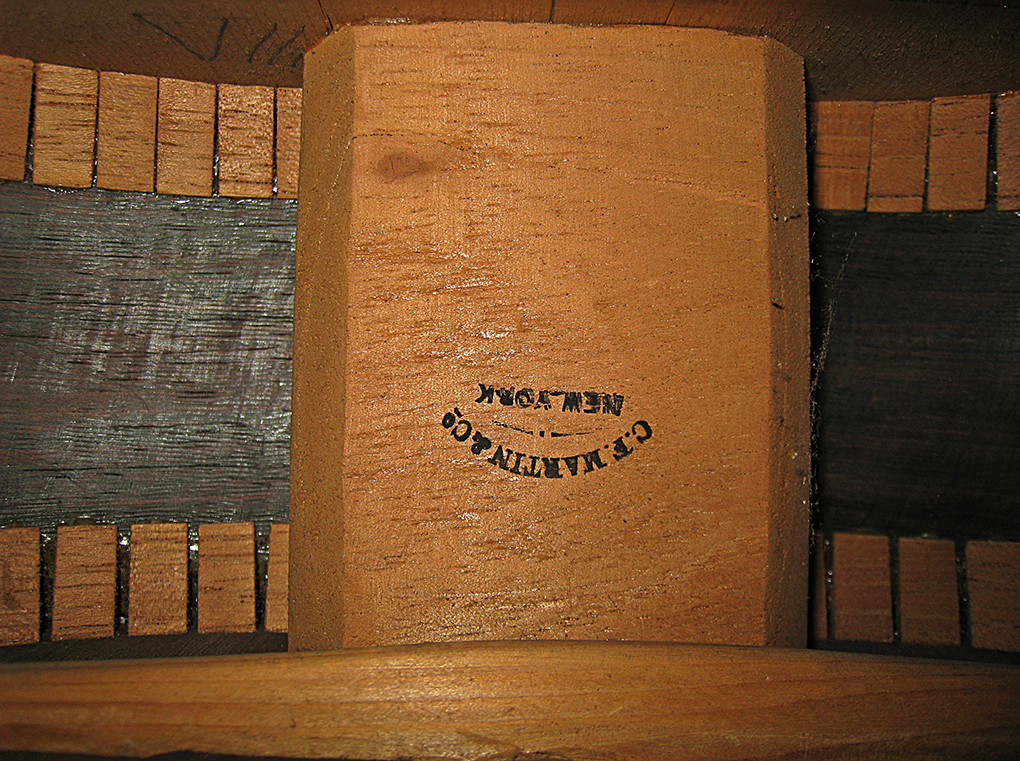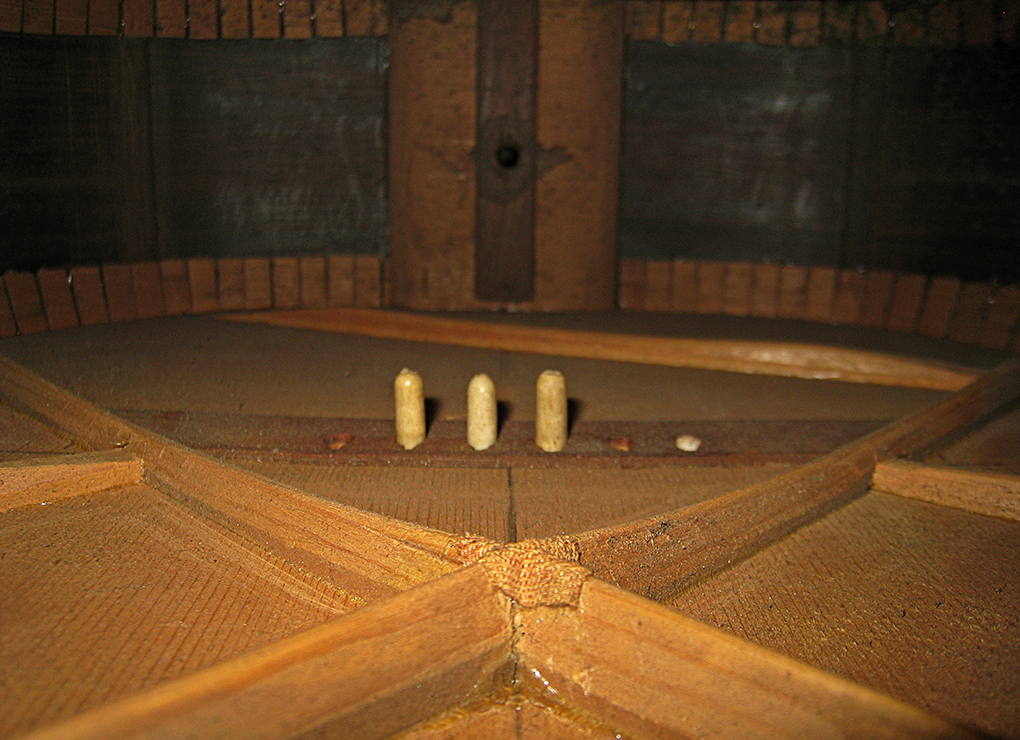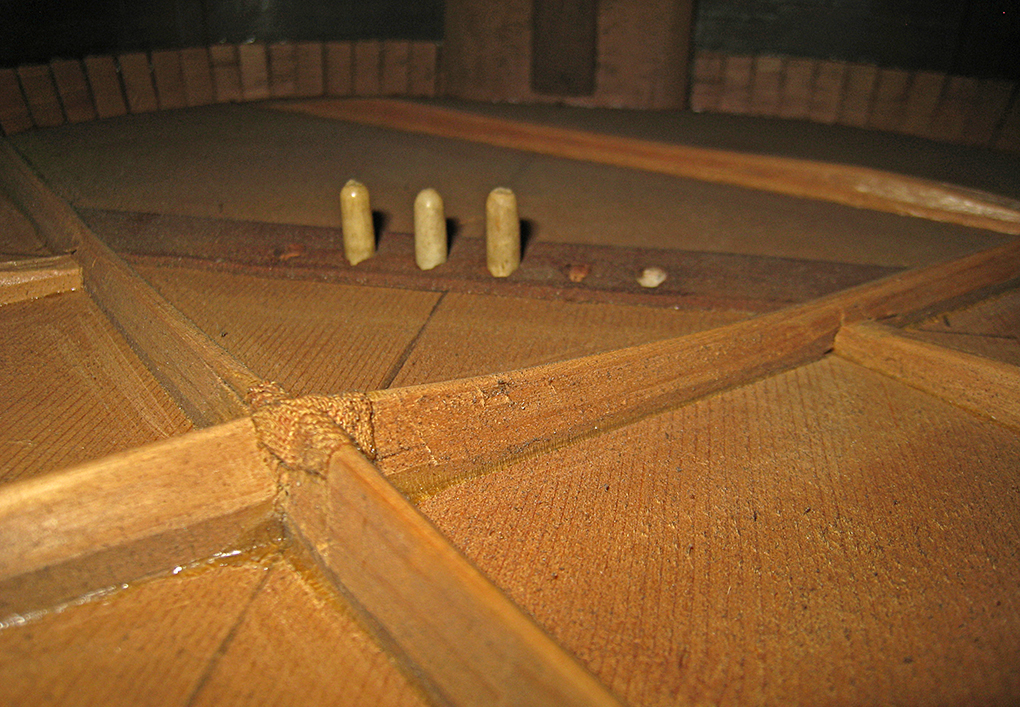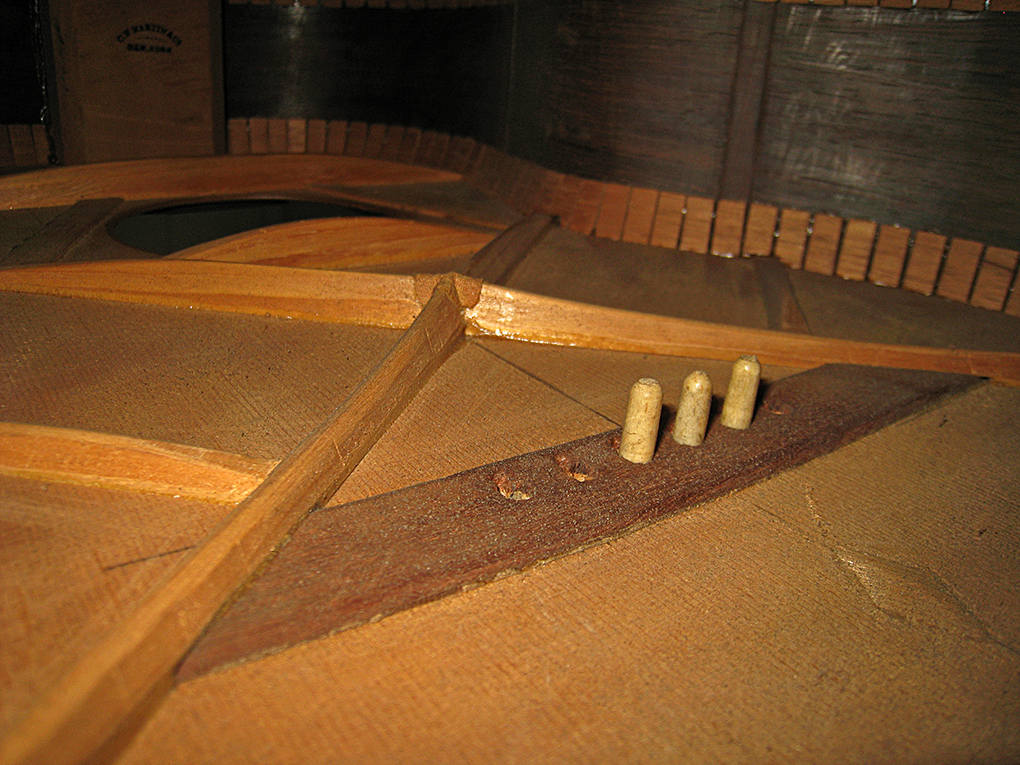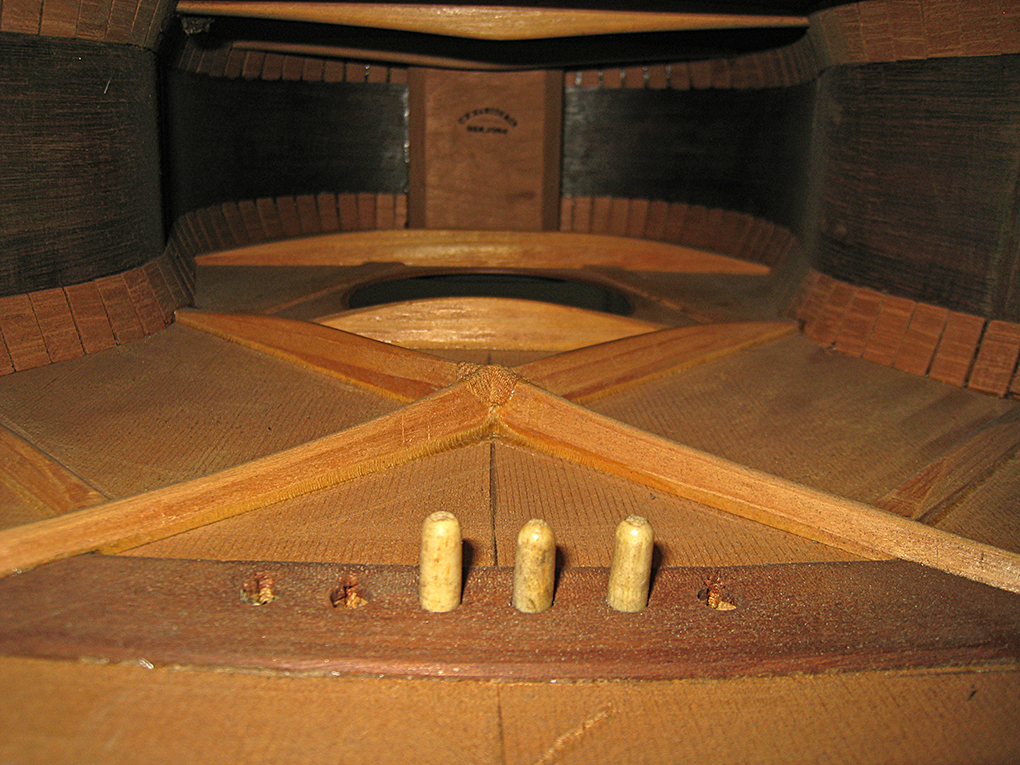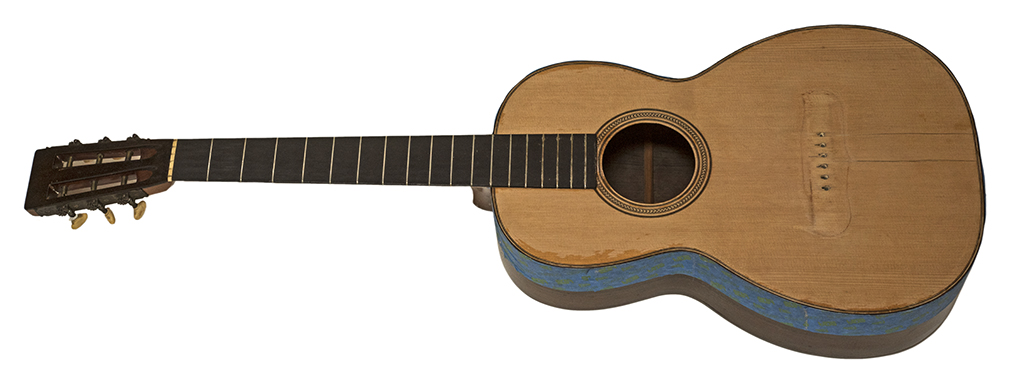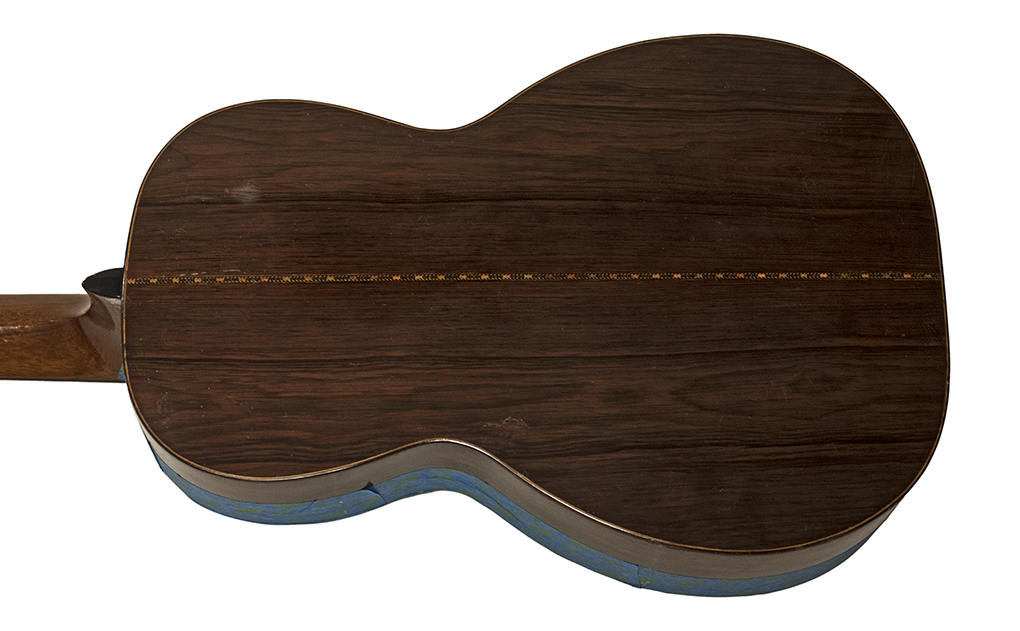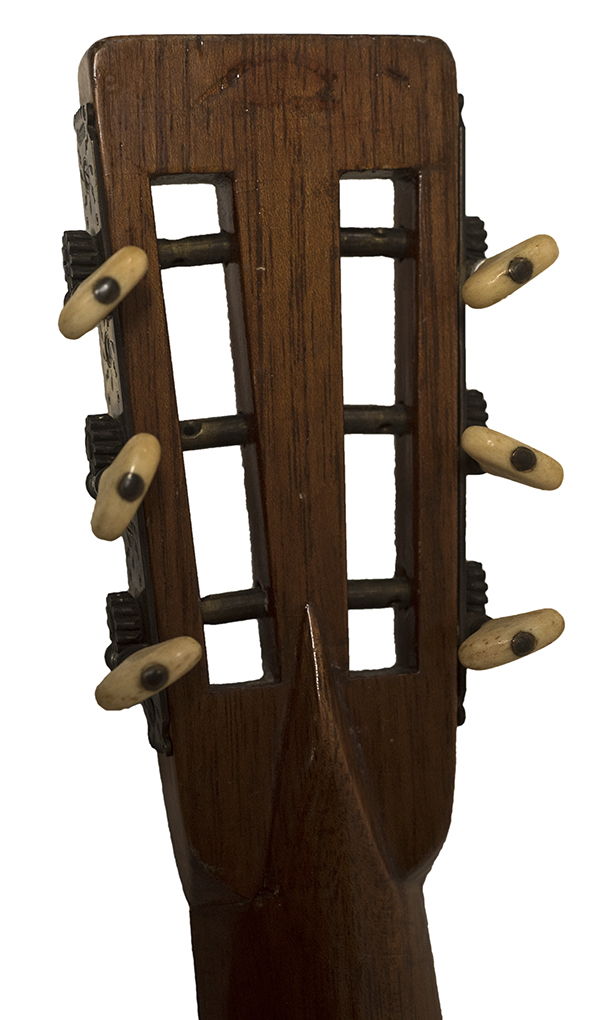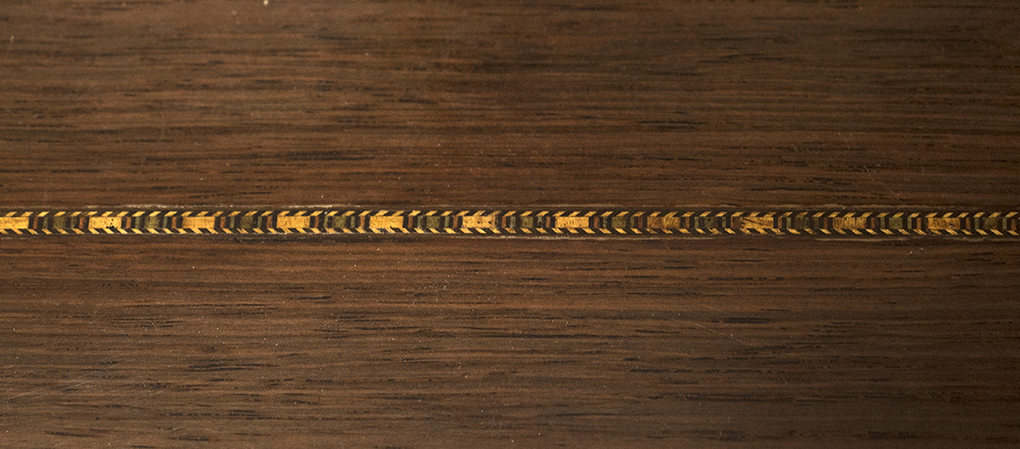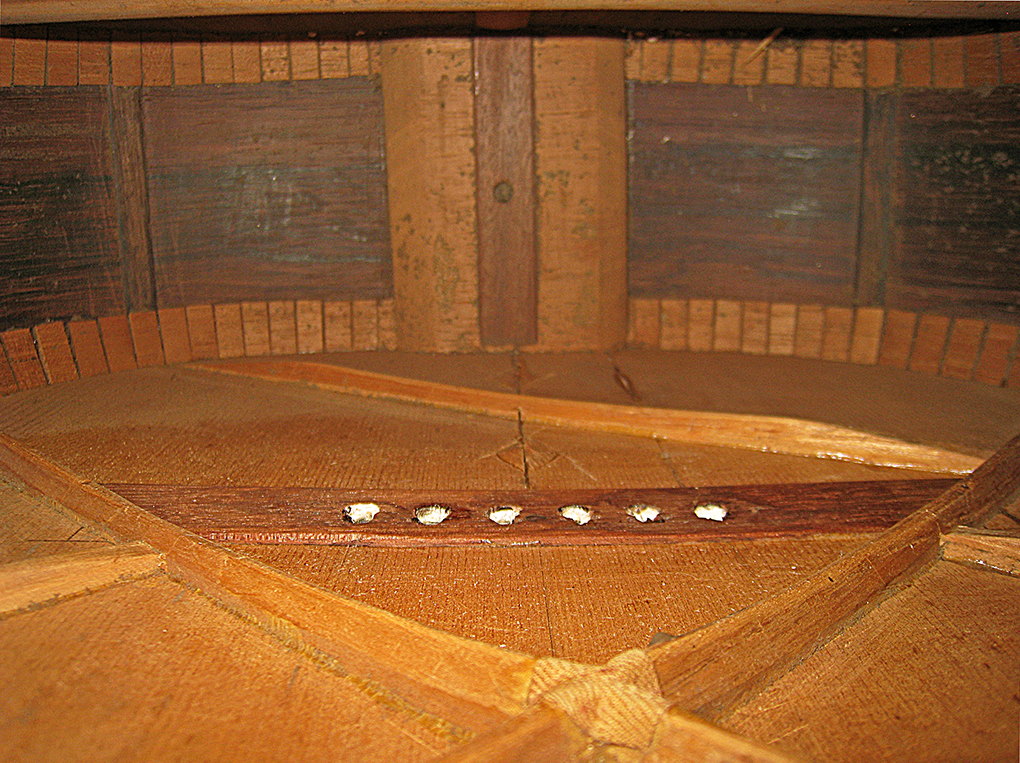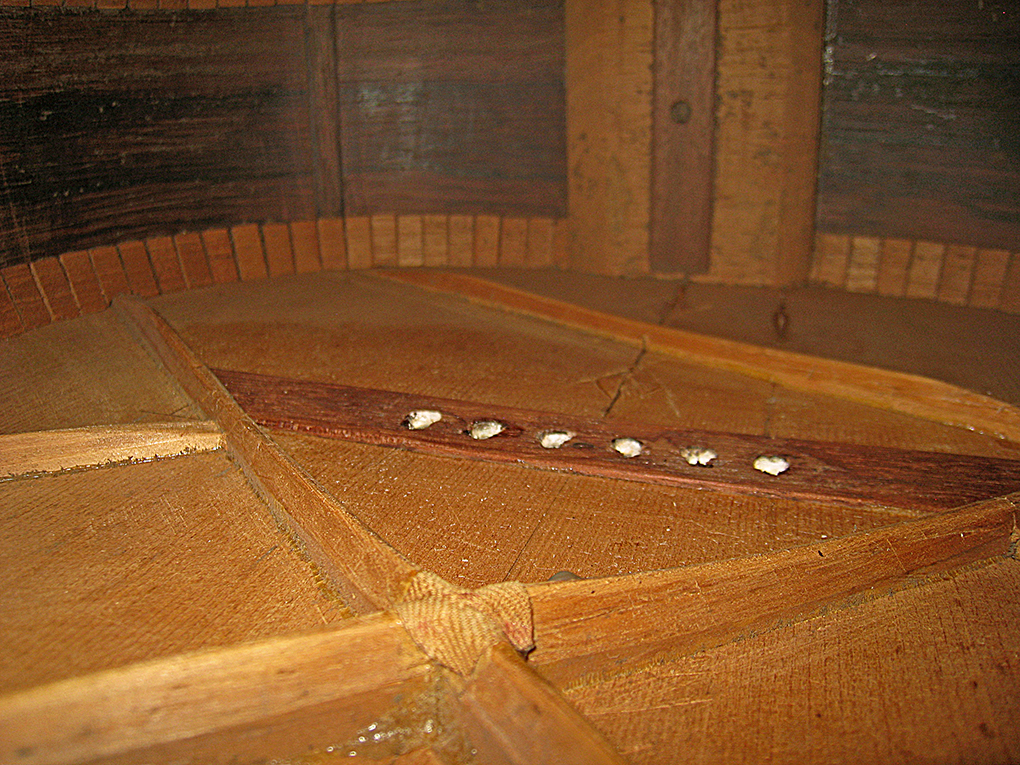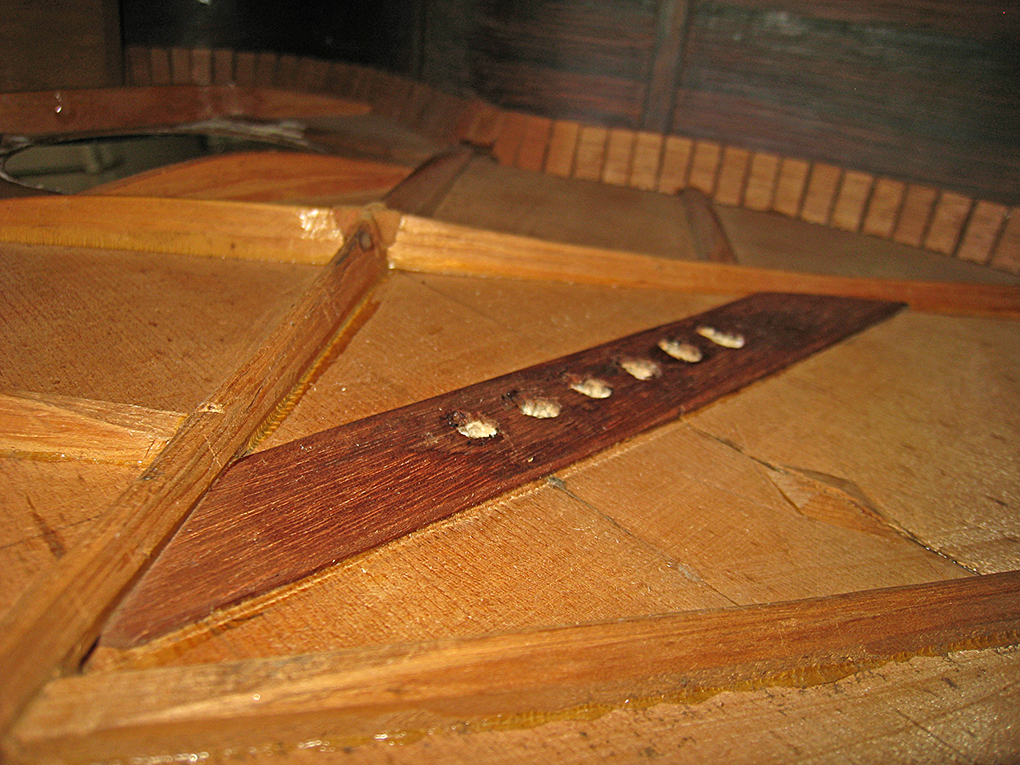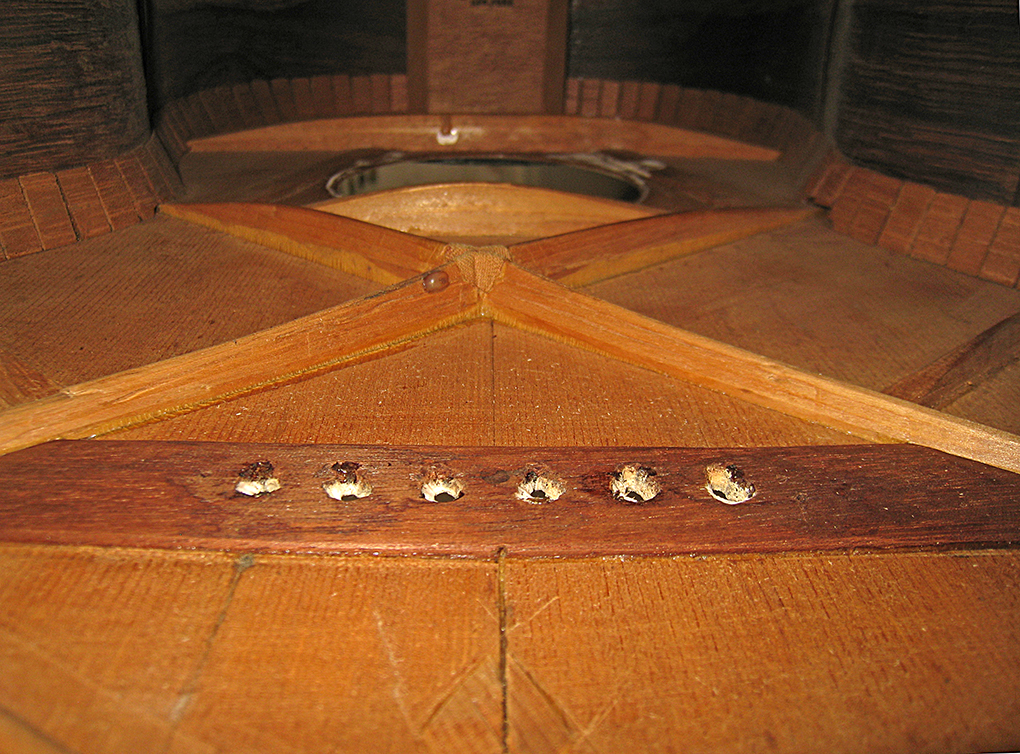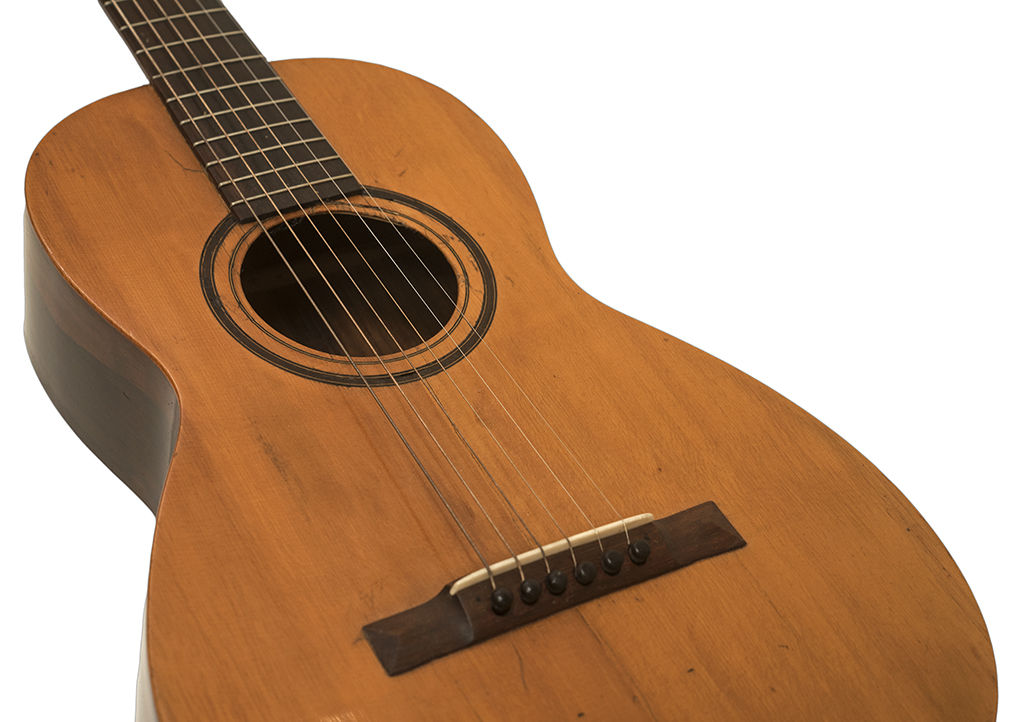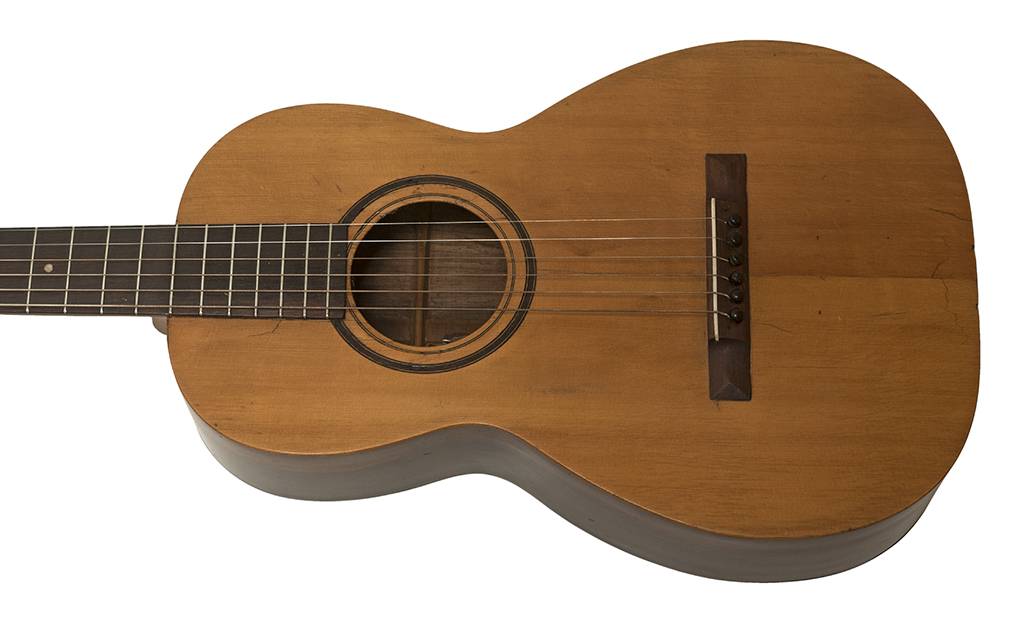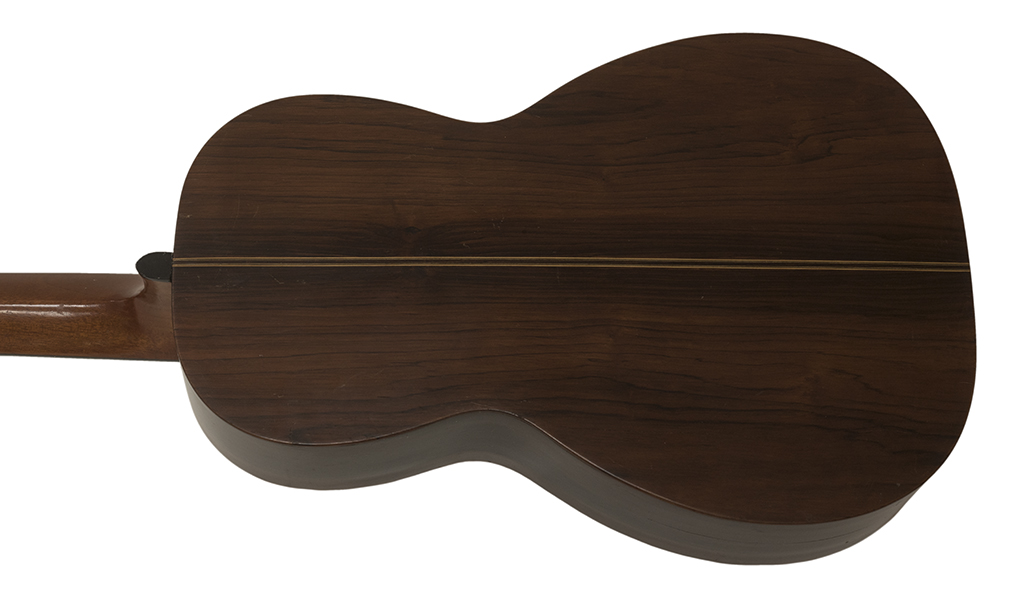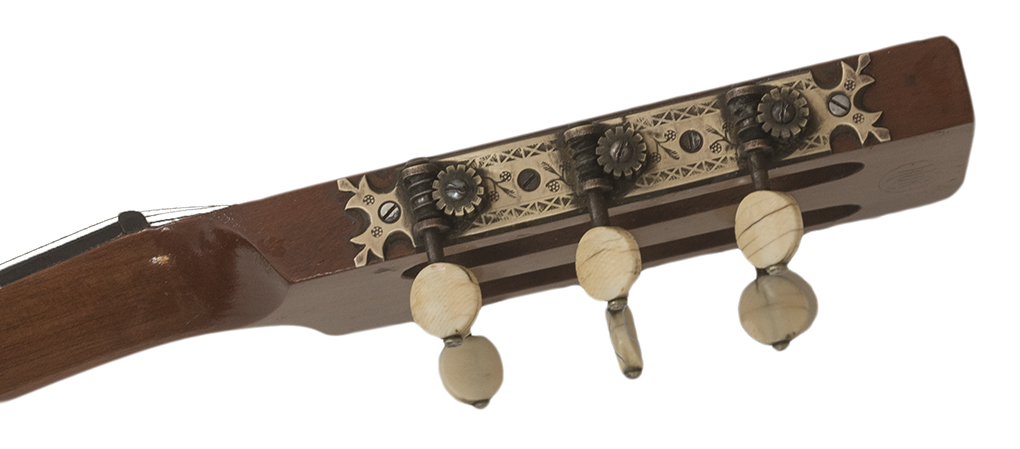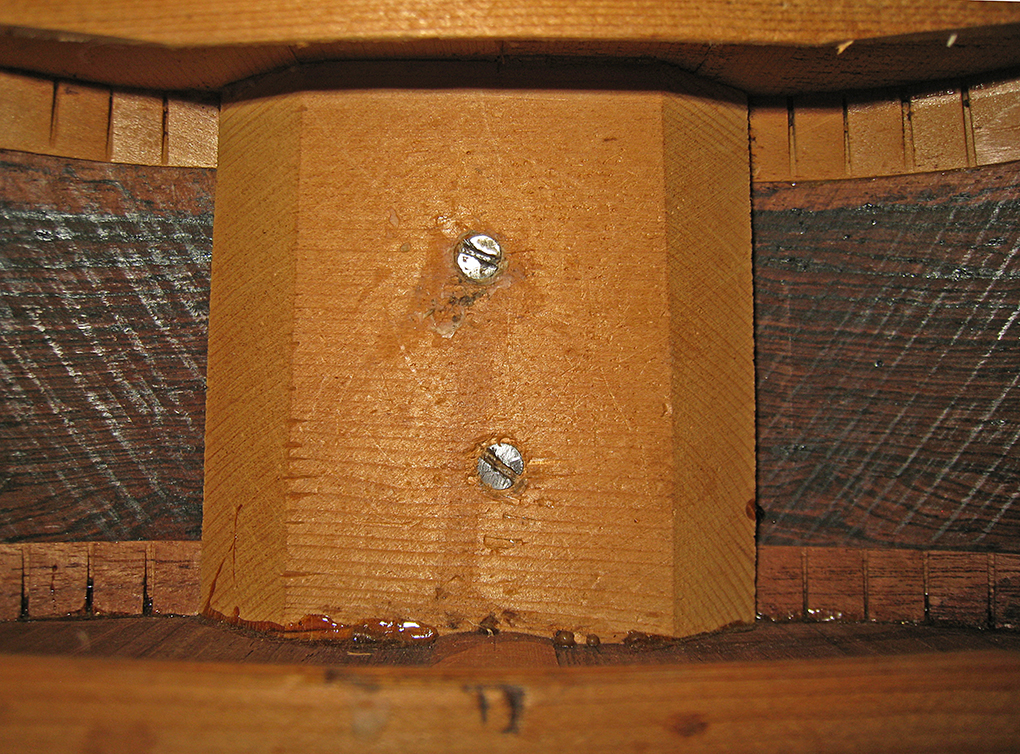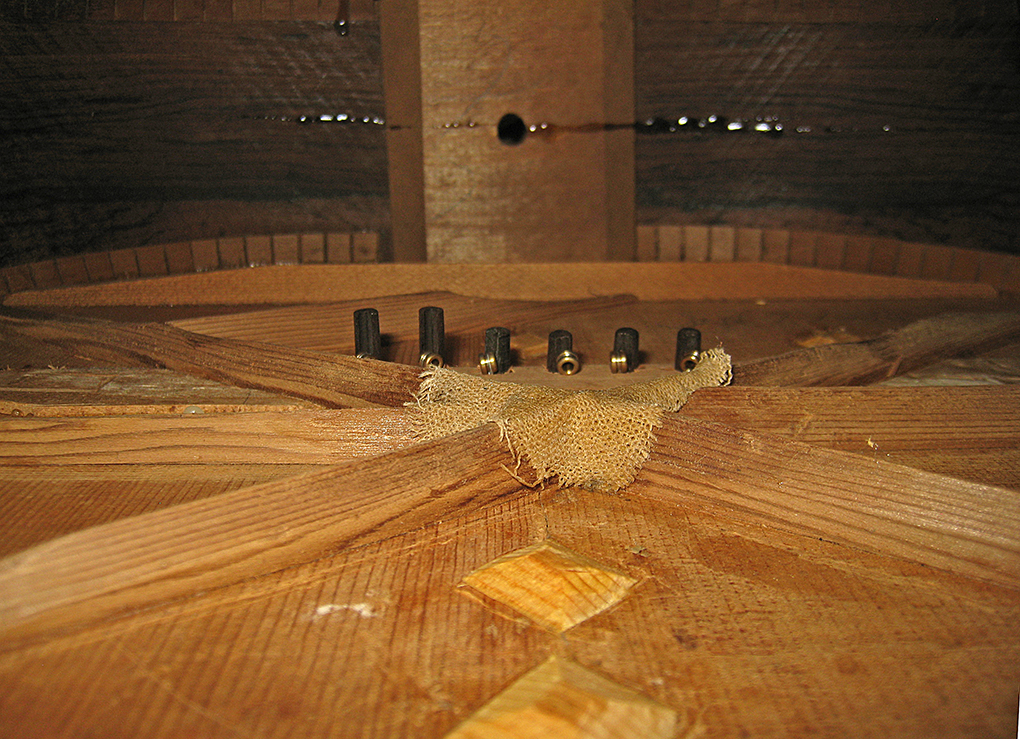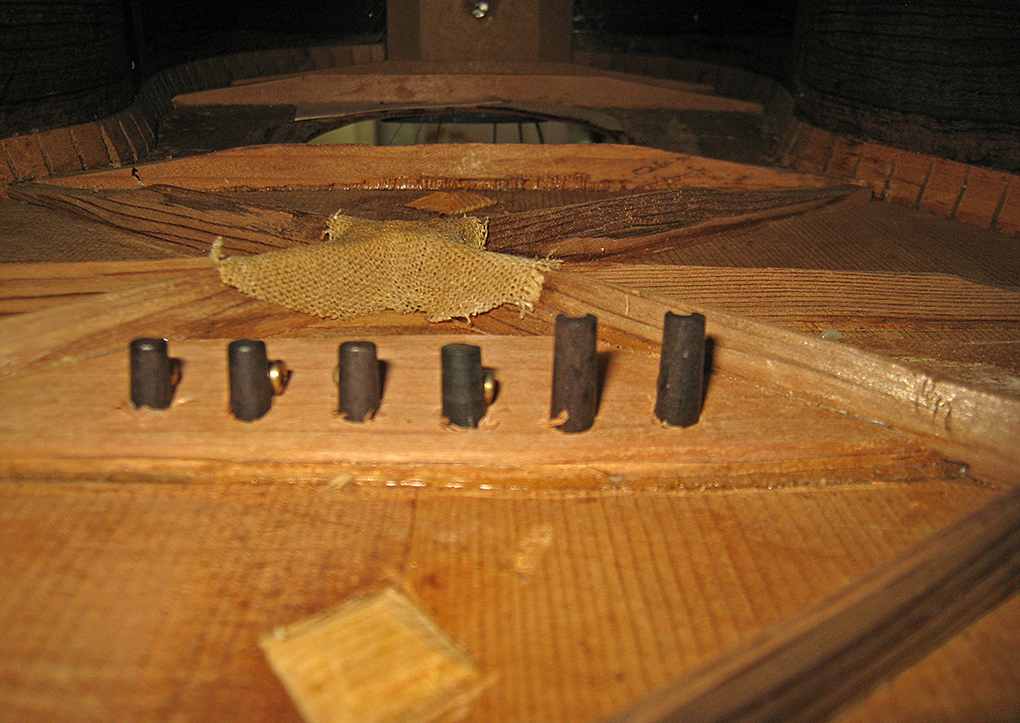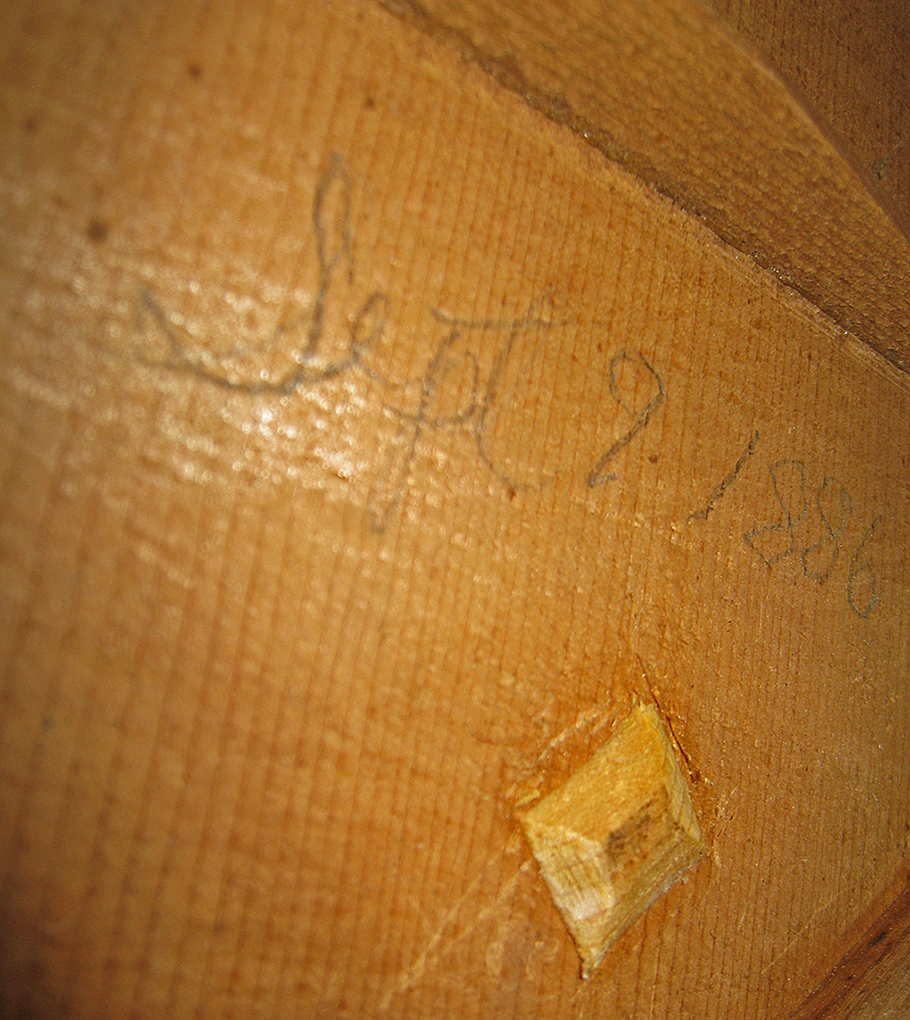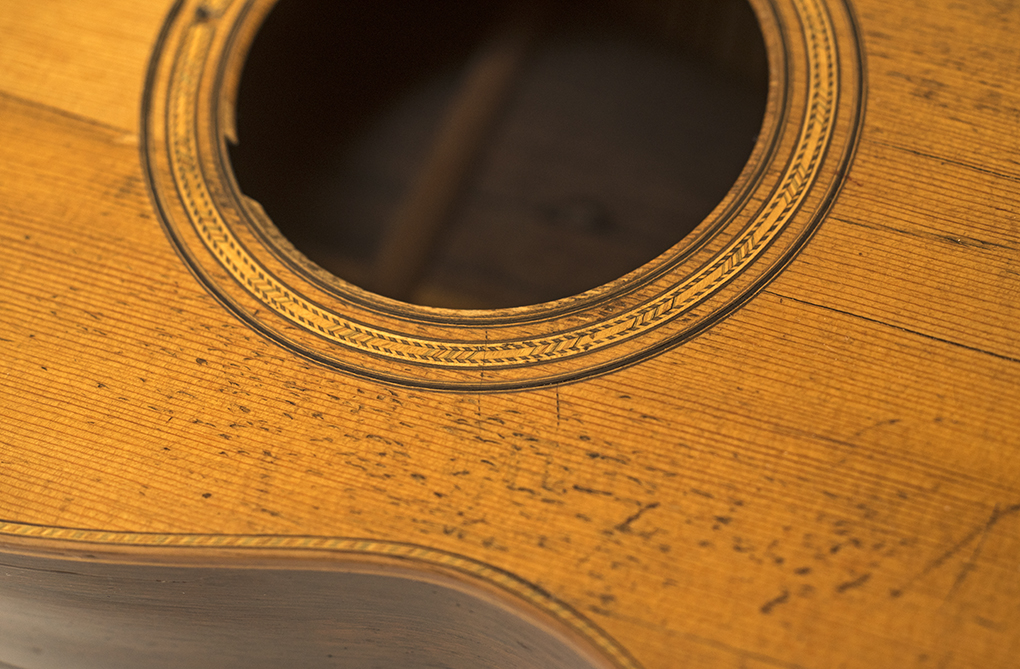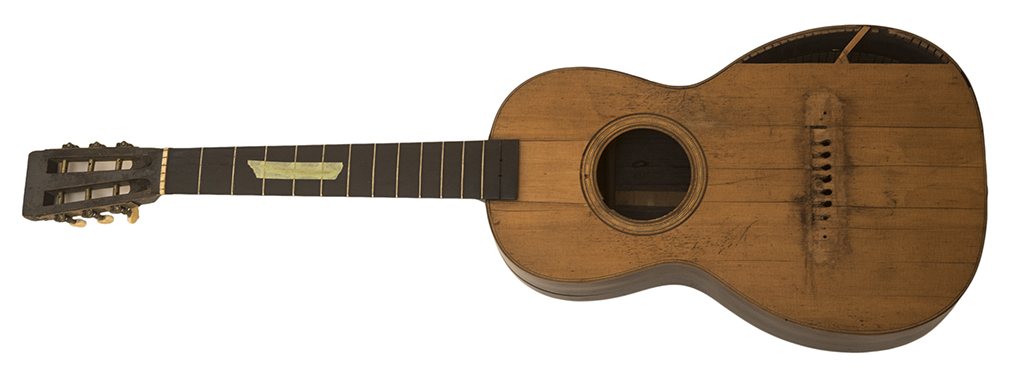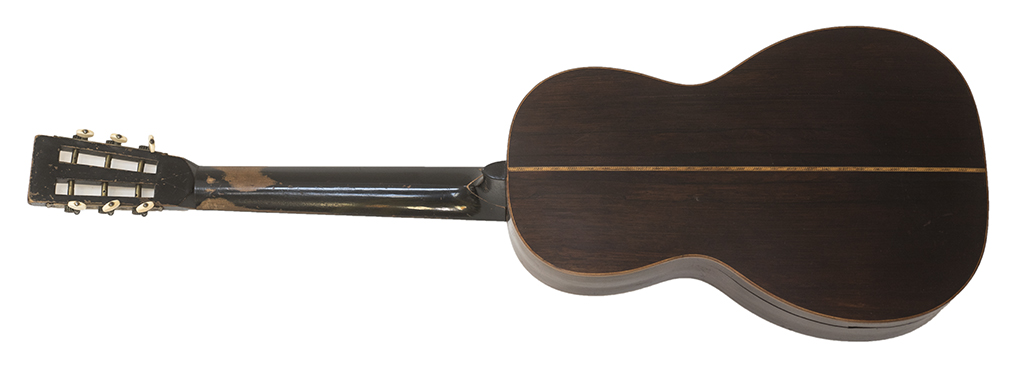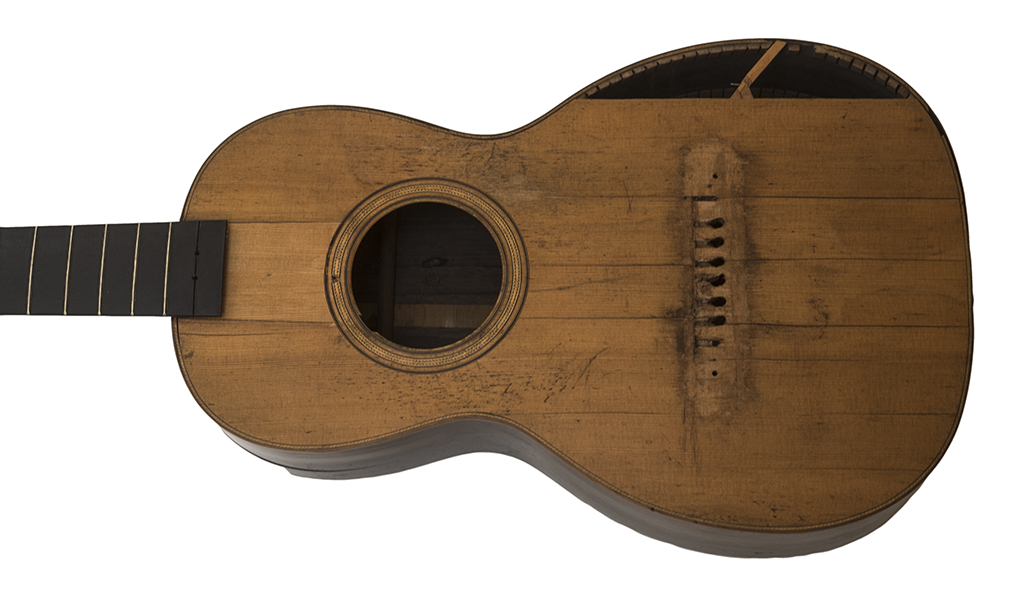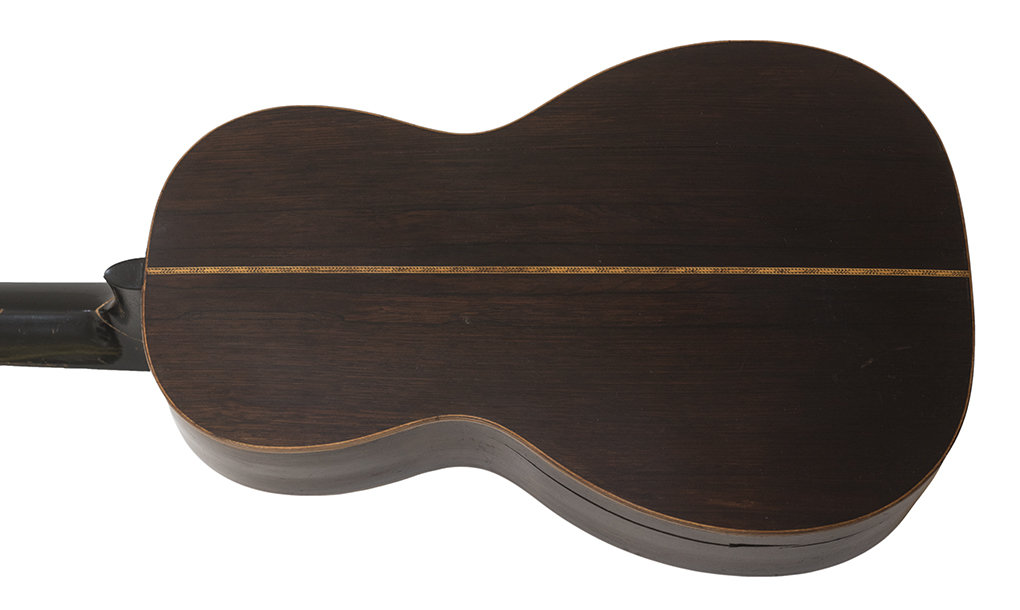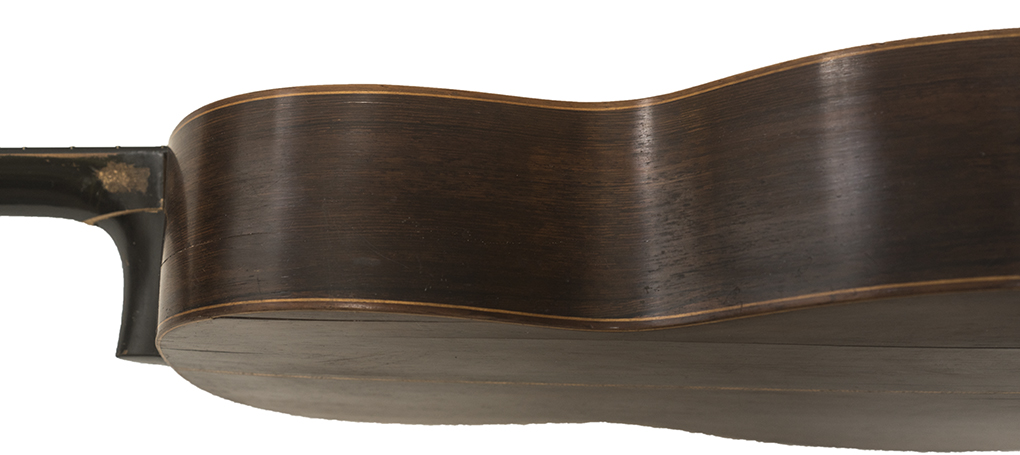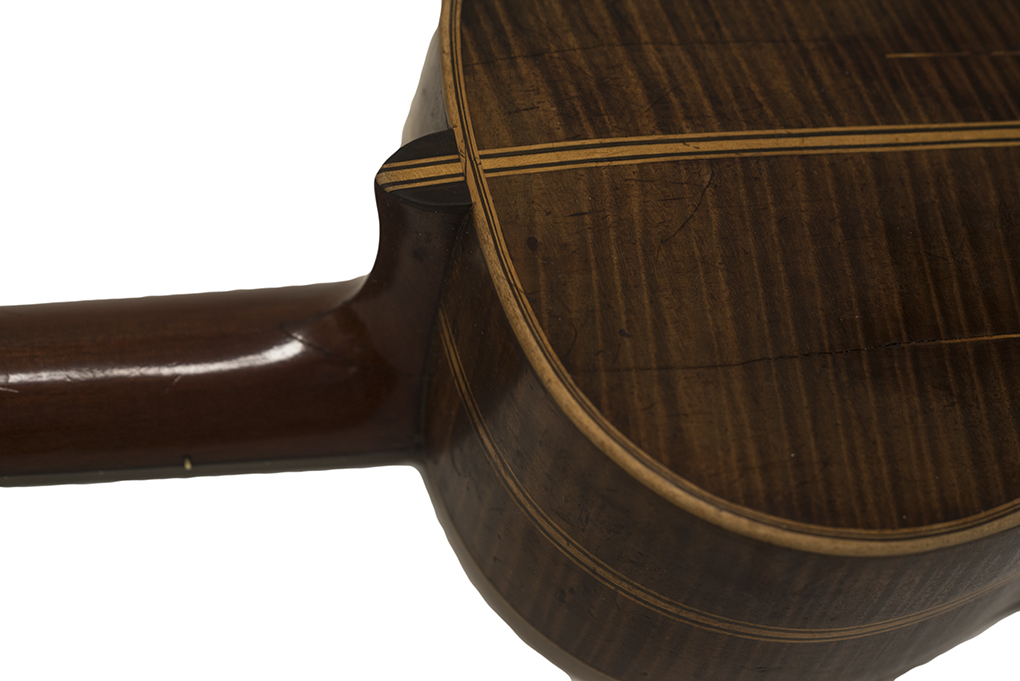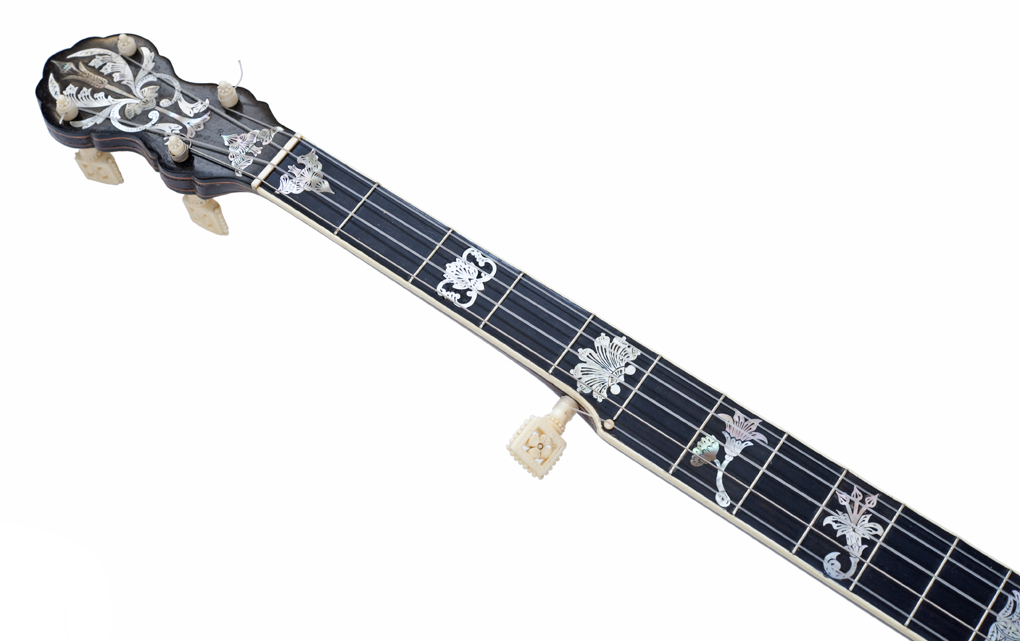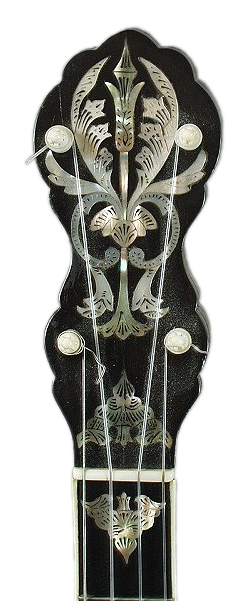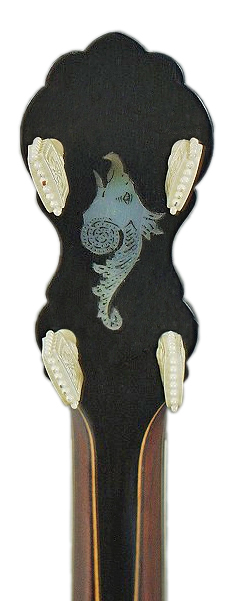Cleaning House
- Vintage
- Martin ~ Gibson
- and other Used
- Acoustic Guitars
- and other
Instruments
for Sale
After spending over two years away from home to sit with my
dad by the ocean, enjoying local New England seafood together
until he reached his 102nd birthday and then passed peacefully,
unfortunately, I've been sidetracked by chronic pain, and am now
recovering from surgery on my cervical spine. I certainly
hope that the procedure will bring me some relief, but at present
I am still not in shape to keep up with an overwhelming
number of inquiries and questions about guitars. I apologize
for the inconvenience this has caused.
Free to contact me if you wish, and even pester me again if time
is of the essence. I'll try my best to respond, but I don't
want to leave you with unrealistic expectations. I may not
be in shape to respond until I recover. The healing process
has been slow, and it can be painful now just to sit at the
computer. And many of these instruments need work that I
just haven't been up to handling yet.
Thanks for your understanding.
- - - - - -
Please do let me know if you need information to make a buying
decision immediately, and feel free to send me a friendly reminder
if you've been waiting to hear from me.
I am not a dealer. These are nicely used guitars from my
personal collection that I have purchased to study, to photograph
for my web site, and to play. While I originally purchase a
guitar with the thought of playing and keeping in my collection
indefinitely, many were purchased primarily to research and learn
from.
Many of the guitars have served
their purpose, I have more guitars than I can possibly play, and I
can't get to the bathroom without stepping over guitars, so it
makes sense now to thin the herd a bit and pass some of my guitars
on to folks who can play them more than I have time for,
not to make a profit, but to match
the instruments with the folks who will appreciate them the most.
It would not be appropriate to publicly post the values of
instruments in a personal collection as a dealer would. I
also respect your privacy, and don't think the world needs to know
how much you've paid to buy one of my guitars, unless you so
choose.
So if you let me know what guitars
you're interested in, what other specific photos might help you
make a decision, and any other information you might need, I'll
get back to you with prices, photos, and the information you need
to help with a potential purchase as soon as I can.
Serious shoppers may inquire about inspecting guitars in person in
Philadelphia or Southern New England. I've had folks drive 8
hours or fly from Austin, Texas to look at and purchase
guitars. If you can't check out a guitar in person,
I encourage you to send payment and
have me ship the guitar so you can to take the time to check it
out for a couple of days in the comfort of your home at your
leisure, and return it in the same condition for a full refund,
less shipping, if you find it's not for you, for any reason, no
excuses required.
I try to describe guitars as
accurately as I can, but there's no substitute for having a guitar
in hand to discover how it works in your hands and for the type of
music you play. Some folks are so wrapped up in playing with
their new toys that they don't get around to responding for a week
or more,
so if I don't hear back after 48
hours, I will assume you're busy, and that it's o.k. to use your
check for lunch money or to buy another guitar!
Send me your shipping address and I'll calculate your shipping
costs, including insurance, by UPS Ground, FedEx Home Delivery,
overnight or second day air, or International Priority Mail.
SOME CHEAP ADVICE ABOUT SHIPPING:
I do not include shipping in the cost of the instrument so you
will not be subsidizing the cost of someone with higher shipping
costs than yours. I will pass on to you the carrier’s actual
listed price for shipping only. I do not charge extra for
packing, or the cost of shipping cartons, bubble wrap, foam
peanuts, or other shipping materials.
I also pass on only the carrier’s
actual quoted price for insurance. I don’t have great hopes
for collecting insurance from a carrier. Realistically, the
cause of cracks and finish checking are hard to prove, and it can
be difficult to collect for other than missing packages or damage
where the carton was obviously crushed by a truck.
I insure with a carrier primarily
to ensure the more careful handling given to a “high value”
package. All of my instruments are insured by Heritage, the
primary insurer of the leading dealers, museums, and high-end
collectors, and do not pass on to you the considerable extra costs
of insuring with Heritage to cover damage in transit.
Lately I've recommend choosing a carrier based on the quality of
the local driver. I’ve had drivers from UPS who have served
me consistently and thoughtfully for years, leaving notes saying
“the package is in the carport, behind the snow shovel".
I’ve had other drivers who've left
computers sitting in the pouring rain and run off without even
ringing my doorbell. So the local driver who serves you well
at the time of delivery is often the best determinant of which
carrier to chose. On the other hand, UPS now handles
packages valued over $1000 as "high value" items.
When I asked FedEx if they made a
distinction for high value items, they responded "we treat all our
packages with care", which "Alexa" translates as: "we throw them
all onto the conveyor belts".
My UPS rep gave me a long list of
ways the “high value” Ground packages are treated with preference:
signed for at every step, never on a conveyor belt, last in/first
out of the airplane/truck, etc. So I am now giving
preference to UPS Ground.
If your local UPS driver is not the
best, or if you're away from home during the daytime hours, you
may do well to consider having me ship to the local UPS Store for
pickup at your convenience. If you have three spare hours,
I'll tell you the story of trying to collect on insurance from the
Post Office.
I generally prefer shipping early enough in the week to avoid
shipping over a weekend when possible. The vehicles do not
stop moving over a weekend. Travel time is measured in
business days, however, so a weekend will add two days to the
"transit time" without additional travel.
So a weekend may mean a guitar
sitting somewhere for as much as two days, likely in a vehicle
that's freezing or hot enough to melt glue.
If the weather is exceptionally poor, I may wish to delay
shipment, especially in winter, until the weather improves.
When the package arrives, you should let the package sit for
several hours before opening and tuning the guitar to pitch in
order to let the instrument acclimate to the indoor climate
to avoid structural damage or
finish checking caused when the wood and lacquer expand or
contract at different speeds.
I'll be sure to pack securely, which is the first key to safe
travel. I use proper guitar shipping cartons, pack well with
bubble wrap and/or foam peanuts, being especially sure the neck is
supported near the headstock and heel, and remove the end
pin.
If a guitar does not have a case, I
can usually find at least a chipboard case that I can provide to
you without extra charge to protect the guitar in shipping.
International buyers should know that due to restrictions
specified by the CITES Conventions on endangered species including
the ivory, pearl, and Brazilian Rosewood found on many of these
guitars, shipping overseas has become a tricky process.
I am still in the process of
obtaining the necessary licenses and permits, which takes some
time. Shipping requires both a fee and inspection at a
regional office.
I've gathered what I've learned about CITES so far here:
A Primer for
Obtaining Proper Permits for Shipping Vintage Guitars
and Other Musical Instruments Overseas from the USA
Payment by personal check is fine, and I can ship as soon as the
check clears, to avoid the trouble and expense of obtaining a bank
check. Or you can make a direct Paypal transfer from your
bank account to mine. Paypal payments are free of fees if
you select "Send to friends and family in the US".
Now that I'm finally getting back to people, the guitars are
selling! Interesting how that works! No rush at this
end. Whatever you decide is fine with me, but several people
have hesitated, missed out, and been disappointed. So as
soon as you decide and let me know that payment is on it's way, I
can put a guitar on hold. I just want the guitars to go to
good homes!
This information is current as of August 1, 2023.
Thanks again for your interest,
Robert
Click here to e-mail inquiries about
instruments for sale.
- Please note -
I've had problems with my server and your recent e-mails may have
bounced.
My apologies.
The problem should be solved, and your e-mails should get through
now.
If you have further problems, try this
alternate e-mail address.
AVAILABLE ACOUSTIC GUITARS:
Scroll down to see descriptions of the following guitars:
Martin 1944 000-18 - SOLD -
Martin 1945 0-18 - SOLD
Martin 1930 2-17
Martin 1929 00-28 G.P.
Martin 1927 5-17T Tenor
Martin 1922 Wurlitzer 2092 / 0-42
Martin 1920 0-18 - SOLD
Martin 1919 0-45 - SOLD
Martin 1919 Southern California Music Co. 0-18K / 1350
Martin 1917 rare Spruce top 1-18K
Martin 1916 Ditson Dreadnaught Style 1 - SOLD
Martin 1916 Ditson Dreadnaught Style 2
Martin 1916 Southern California Music Co. 0-18K / 1350
Martin 1907 0-30
Martin 1899 0-28
Martin 1898 1-21 Tinted top
Martin 1894 1-26
Martin 1870's 1-28
Martin 1860's 2-27
Martin 1860's Pearl Rosette 1-28 - SOLD
Martin 1860's 2 1/2 - 17 - SOLD
Martin 1860's 1-21
Martin 1850's 2-27
1932 Gibson Brazilian L-2 Tenor - SOLD
1932 Gibson Brazilian L-2 Tenor - SOLD
1932 Gibson Kel Kroydon
Gibson HG-20
Ashborn 2
Ashborn 1 - SOLD
Ashborn 6 - SOLD
Burkard Parlor Guitar
Haynes "Hub" Parlor
No - name 2-24 Parlor Guitar
No-Name Spanish Parlor Guitar - SOLD
Wolfram aluminum Fingerboard Parlor Guitar - SOLD
BANJOS
Fairbanks 1898 Special Electric No. 5
Fairbanks / Vega 1919 Whyte Laydie
UKE
Martin 1930's tenor ukulele - SOLD
LAP STEELS AND ELECTRIC GUITARS
HOLLOW BODY:
Gibson 1951 ES-5 - Blonde Flame Maple Pre-Switchmaster Model with
three P-90 pickups - SOLD
SOLID BODY:
National 1959 Town and Country
National 1964 Newport 82 with Map shaped Res-o-glass body - SOLD
1956 Rickenbacker Combo 400
1930's Rickenbacher Style B Spanish, Bakelite with chrome
metal plates and desirable 1 1/2" wide horseshoe pickup.
LAP STEEL:
1930's Rickenbacher Style B lap steel, Bakelite with chrome
metal plates and desirable 1 1/2" wide horseshoe pickup.
1930's Rickenbacher Style B lap steel, Bakelite with white
plates and desirable 1 1/2" wide horseshoe pickup.
1930's Rickenbacher Silver Hawaiian lap steel, Chrome Plated
with desirable 1 1/2" wide horseshoe pickup.
1930's Gibson E-150 Aluminum Body Lap Steel
c. 1946 K&F Lap Steel
National Chicagoan
1946 Early Fender Princeton #A158
1950's Fender Studio Deluxe - SOLD
1950's Fender Forrest White ON HOLD
Fender FS-52
IN THE SHOP AND COMING SOON:
Martin 1926 2-17
Martin 1930 or 1931 0-18T Tenor
Martin 1933 OM-18
Gibson/Recording King Electric with cool oval shape Charlie
Christian Pickups
National New Yorker 7 String Lap Steel
(You may inquire about buying the above guitars as-is.)
Martins
Martin 1944 000-18
I was once a Martin snob, and more so for rosewood
Martins. Certainly no other guitar has the lush sound of a
vintage Martin. And no wood can compare to Brazilian
Rosewood. OK, maybe I still am a snob!
But I've learned with age and
experience when I couldn't obtain a desired sound that these are
all tools in the toolbox, and sometimes a Gibson gives the sound
I'm looking for. Sometimes mahogany does the trick.
Some folks seem to "need" a '30's Martin with a 1 3/4' neck
width. A triple 0 is no better than a double 0 or single
0.
These are all just different
sounds.
I've become particularly partial to the Wartime mahogany Martins
with the combination of scalloped bracing, red spruce top, the
somewhat "meatier" but feather weight neck with ebony replacing
the steel rod for reinforcement, small maple bridge plate,
featherweight tuners due to wartime restrictions on steel, and
hide glue construction.
The guitar fits my ideal image of a vintage guitar, all original,
with wartime "peen end" Kluson tuners, and appropriate playing
wear to show it’s been enjoyed. The inside is pristine, with
an excellent original maple bridge plate.
The string height is 1/16” on the first string and 3/32” on the
sixth string at the 12th fret with the original full height bridge
and saddle.
The neck has crazing and capo marks, feels great, and has a
perfect neck set.
Serial # 88650
Stamped August 7, 1944
- SOLD -
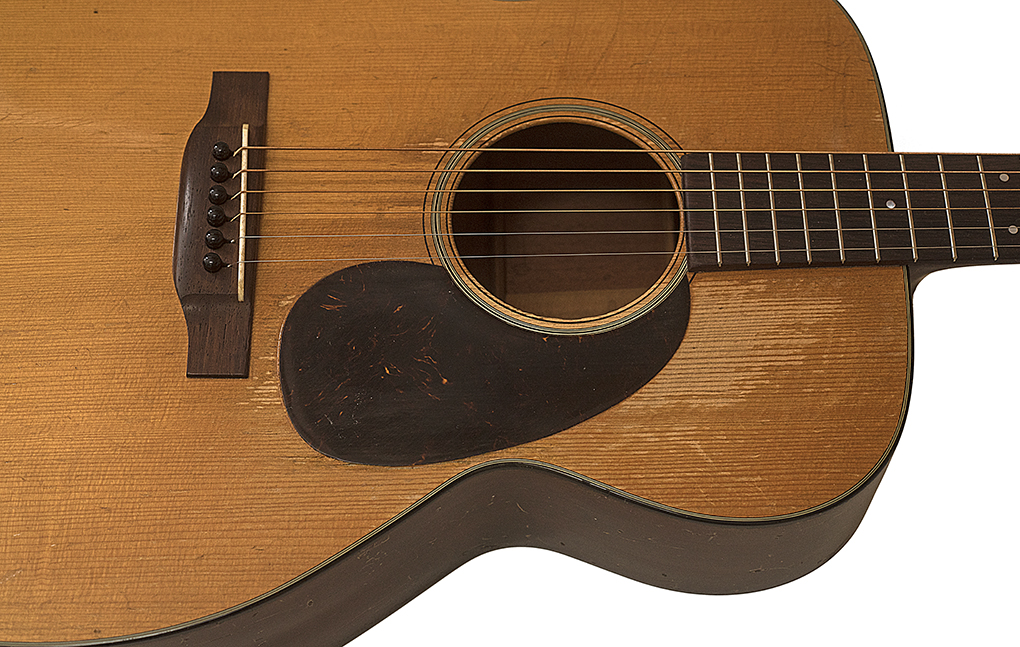
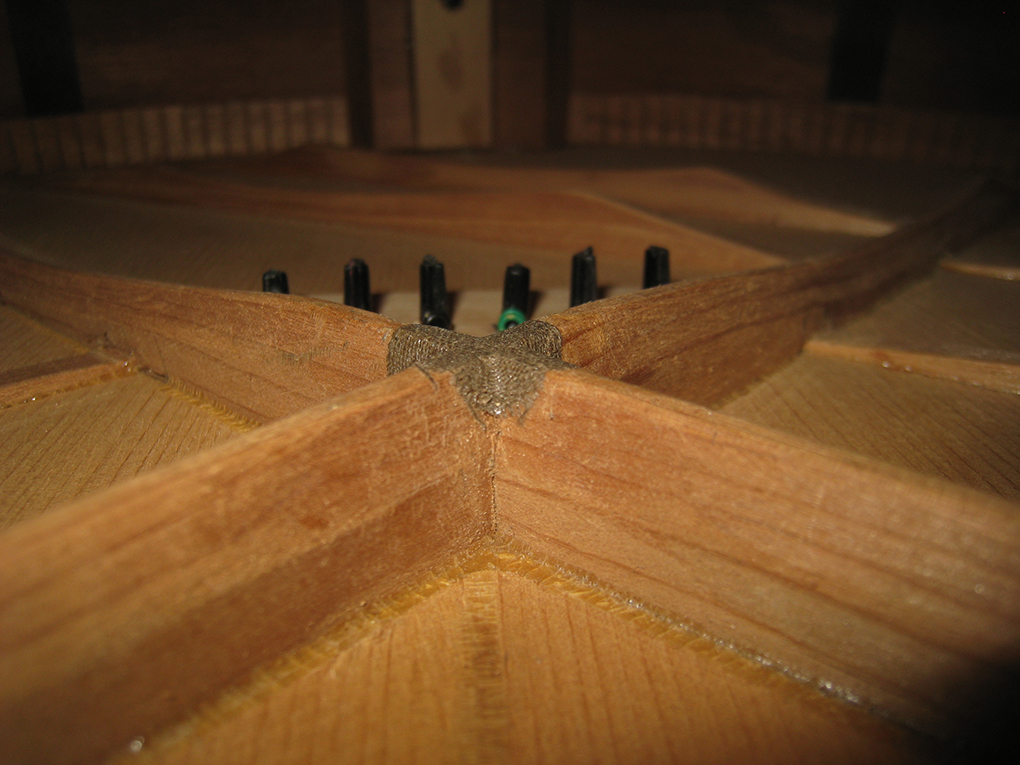
Martin 1945 0-18
Being such a fan of these 1945
Martins, I have a matching set of 0-18, 00-18, 000-18, and
D-18 from 1945.
I wasn't planning to sell these, but
since I'm breaking up the set, I've decided to make this
0-18 available to someone with more time to play it as well.
Now that I have a house full of
Martins of all sizes, I've decided that the single 0 is the
most under rated. Far from lacking in bass, the bass
is tighter and cuts through the mix.
I agree with F.H. Martin who thought
the single 0 was their best balanced guitar. This is a
magical guitar.
Serial #90997
Stamped 4/3/45
- SOLD -
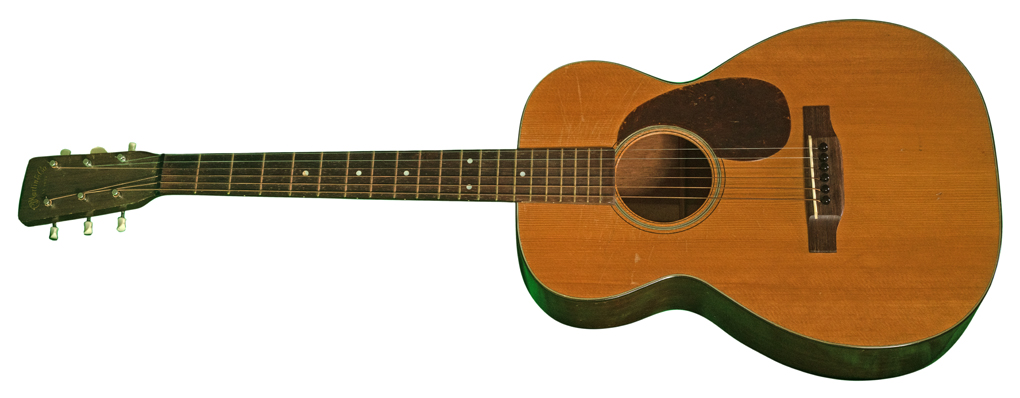
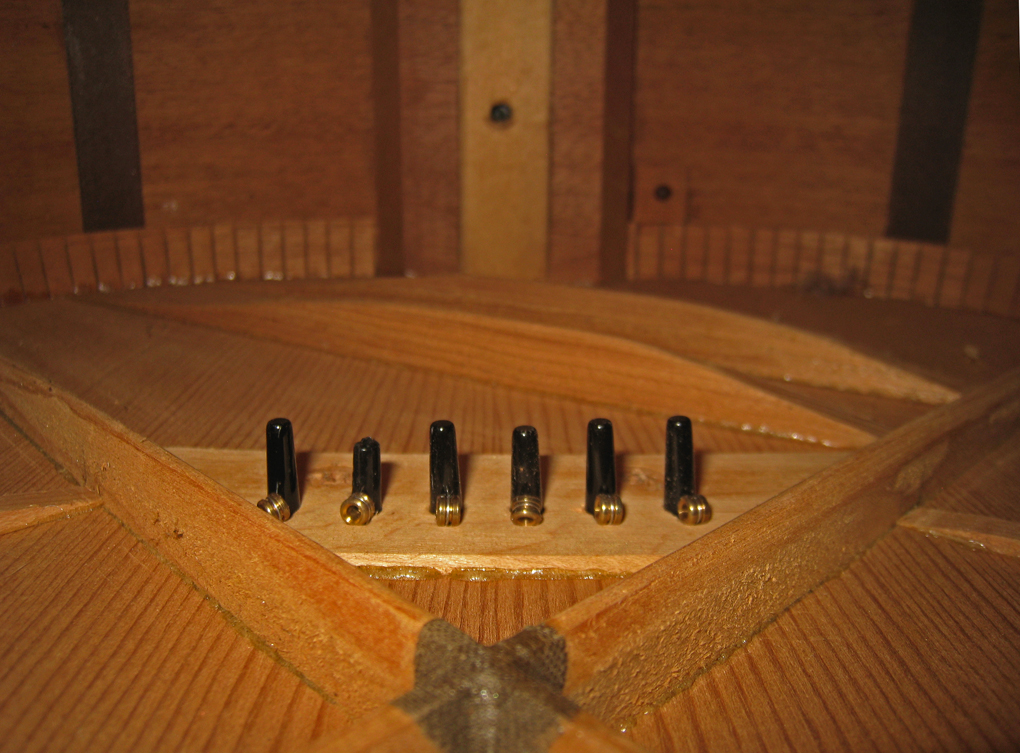
Martin
1935 0-17
Until now I've been selling guitars
only to thin out my collection. I haven't done
this before, but a very nice woman traveled
here to show me a terrific
guitar and ask for advice,
and so many people were disappointed to miss out on the
last one I sold
that I decided to help make her guitar available.
In absolutely beautiful, all original
condition, with only minor nicks and scratches. Has had
a neck set with no other visible work done.
The only minor issue I see is a low
saddle. I would
have preferred setting the neck to a full height saddle, but
it plays and sounds
great as is, so I would let it be if it
were mine. The bridge plate is prefect and untouched.
Original Waverley "clipped end” tuners.
Light fret wear on the first two
strings of the first fret only.
The string height is comfortable at
5/64” on the first string and 8/64” on the sixth string.
In new case.
Shop Order # 938
Stamped on September 27, 1935
Serial Number 61095
- SOLD -
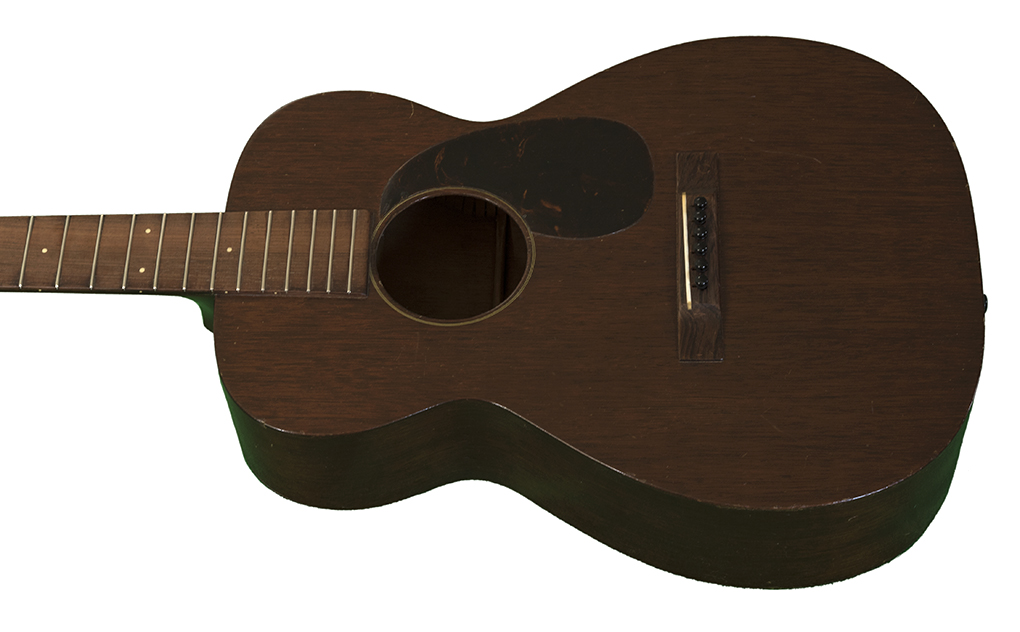
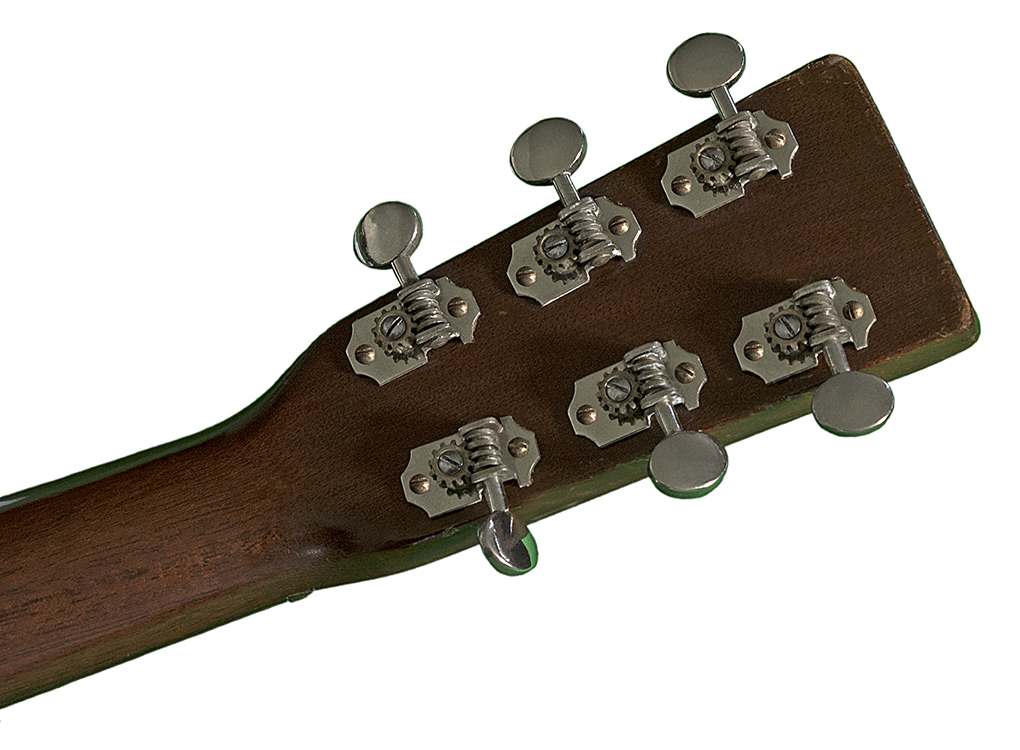
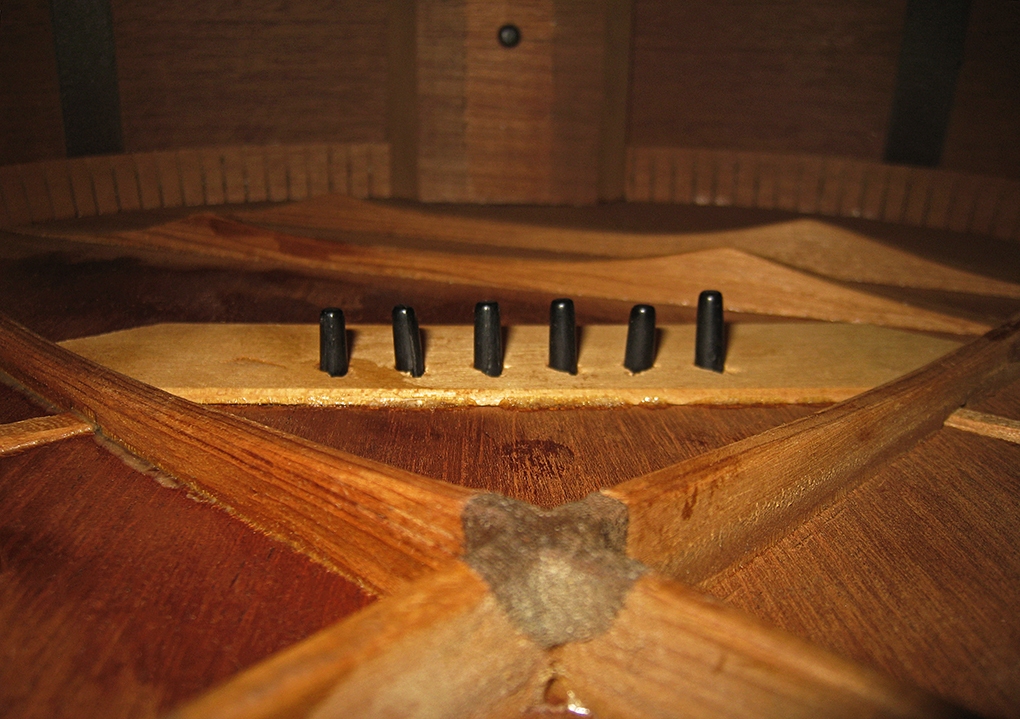
Martin 1933 OM-18
The OM is one of my
favorite guitars, and certainly one of Martin's
greatest creations. This one happens to have a
somewhat less typical neck for an OM-18 with a
softer, more subtle "V",
and a shallow depth
front to back that's reminiscent of my rare early
OM-28 that has perhaps my favorite neck of any
Martin I've ever played.
Wide enough to
finger easily, but perfectly comfortable to wrap
your hand around, without the thicker "shoulders" of
later 1 3/4" necks.
The OM became a
little more solid each year, since the early ones
were vulnerable to have the top crack near the
fingerboard extension, so this one is perfectly
stable, with a flat top,
prepared to take
the strings of your choice with no worries, but
still with a lighter build than even a mid-thirties
Martin.
Among OM
aficionados, it's almost a given that even the
nicest original OM-18 will have significant back and
side cracks due to the light weight and thinness of
the mahogany.
This example has no
back cracks at all, and unusually short side
cracks. The original clipped-end Grovers are
perhaps the most desirable and hardest to find of
any tuners for a vintage Martin.
They may have a
tendency to slip a bit, but I find that you learn to
work with them with experience.
The original belly
bridge has developed a hairline crack that I haven't
had a chance to repair, but could easily be made
invisible with glue and ebony dust.
The beautiful
original hexagonal maple bridge plate is notched
into the scalloped braces.
The pre-war OM is
legendary for good reason. With a long scale
and relatively wide but shallow neck for easy
fingering, it is considered by many to be the
quintessential fingerpicking guitar.
But in truth, while
a nice pre-war OM is a thing of beauty, many people
who extol their virtues have never actually played
one, and a good many examples have a tendency to
sound harsh and less than ideal, with little
warmth!
This is a nice one!
Hi E at 12th fret -
4/32", string height 14/32", bridge height 11.5/32",
saddle height 2.5/32"
"Excellent
condition. This is the guitar the modern makers are
trying to copy. Last pre-war production year for
this model. 000 size body with mahogany back and
sides, Adirondack spruce top, 1-3/4 inch nut with a
V profile neck,
ebony fingerboard
and bridge, long scale at 25.4 inches. It has been
played and shows some playing wear as well as a
couple of short repaired side cracks with spots of
light overspray. No top or back cracks.
Neck has been
reset, frets are fine, tuners are original clipped
end Grovers, and the action is low and comfortable.
Very lightweight guitar with a beautiful open clear
sound.
Its an extremely
complex tone with lots of volume, clear trebles, and
a strong focused bass. It has a quick and delicate
sound that responds equally well to fingerstyle or a
flatpick." - Mandolin World Headquarters
"repaired side
cracks, over sprayed sides & neck" - Larry Wexer
3lb 4.2oz.
- NEEDS NEW BRIDGE
-
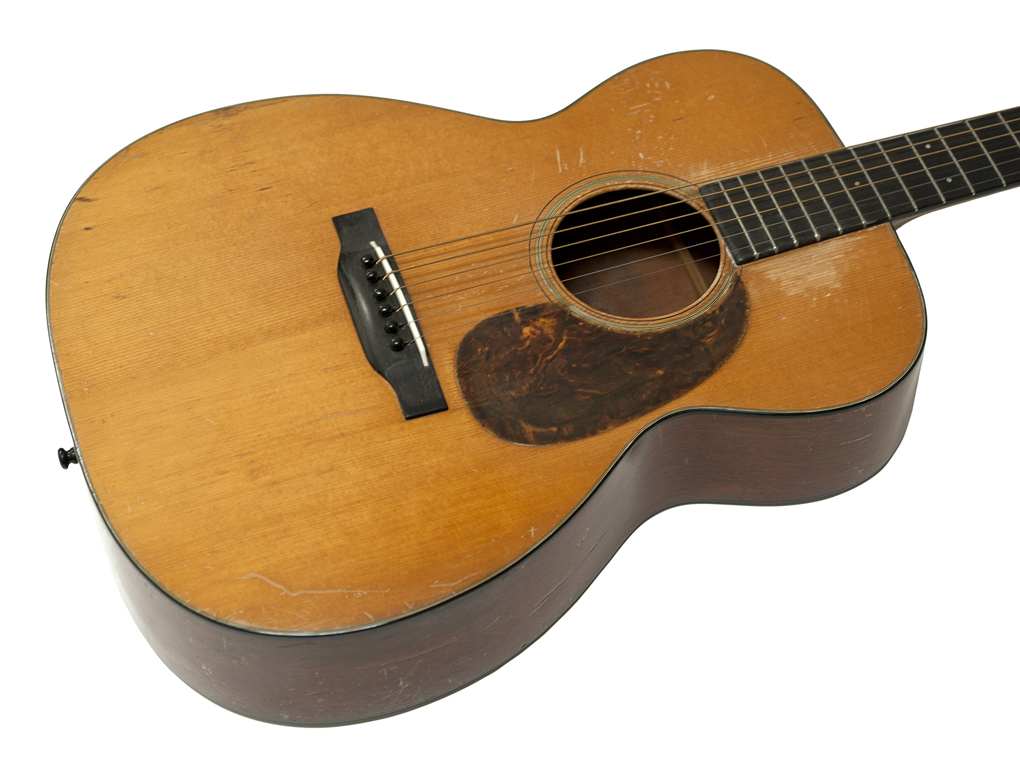
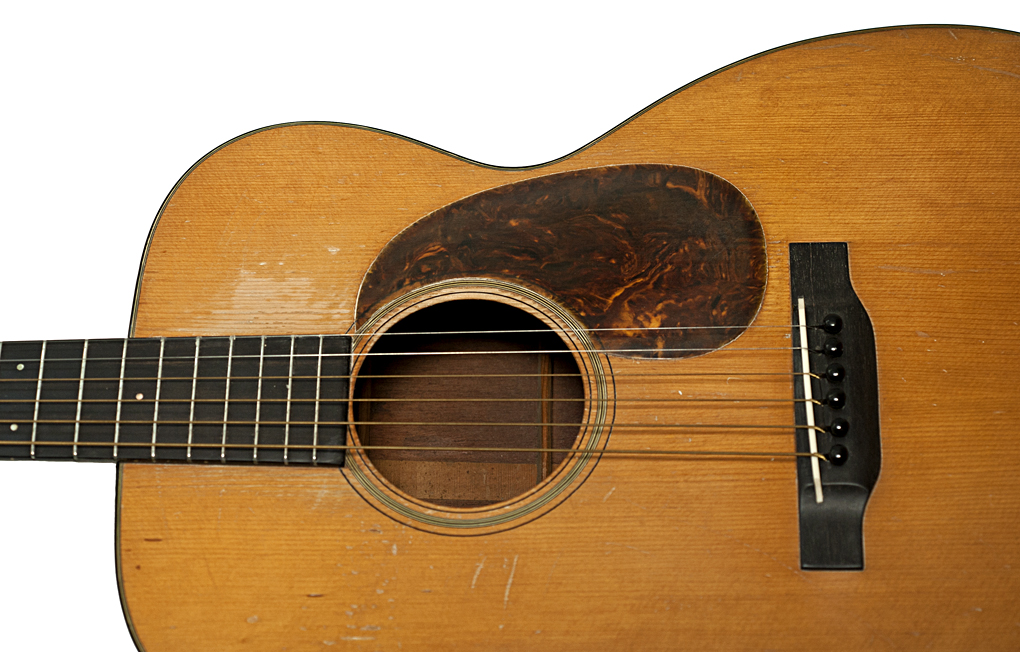
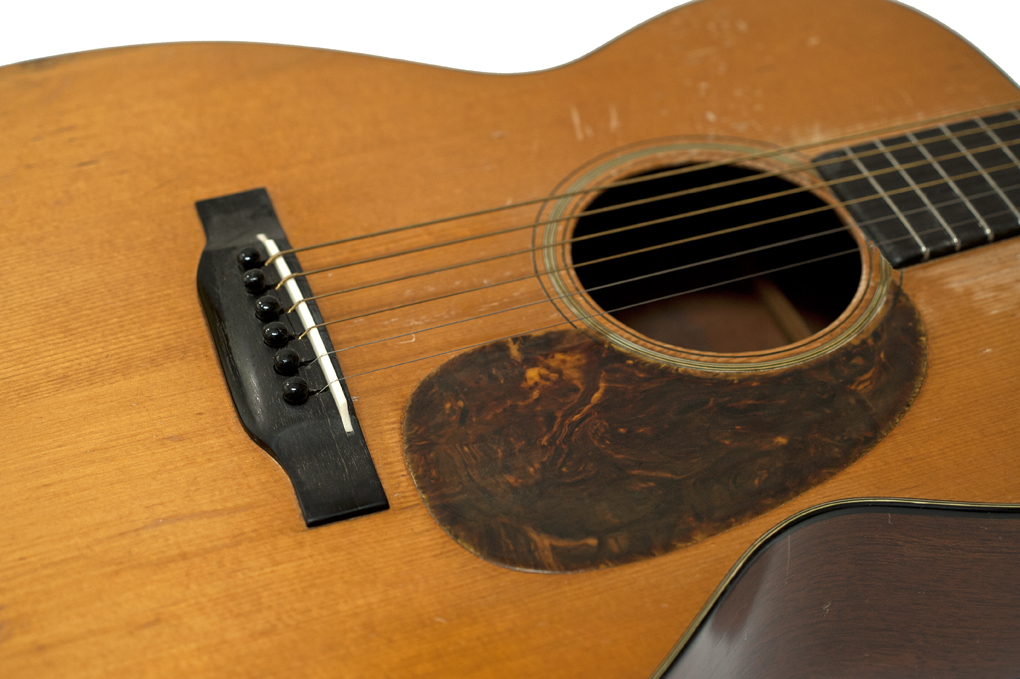
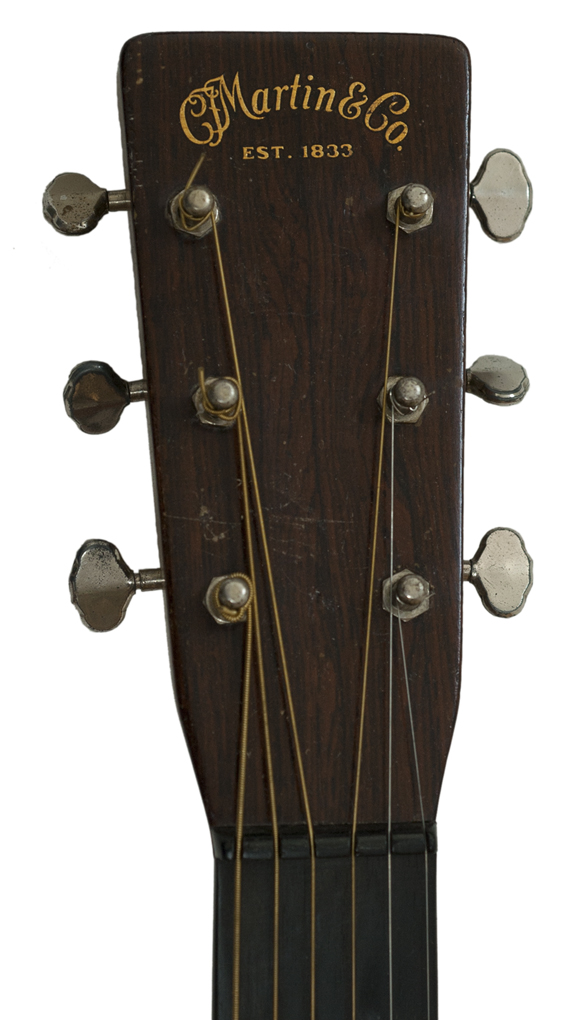
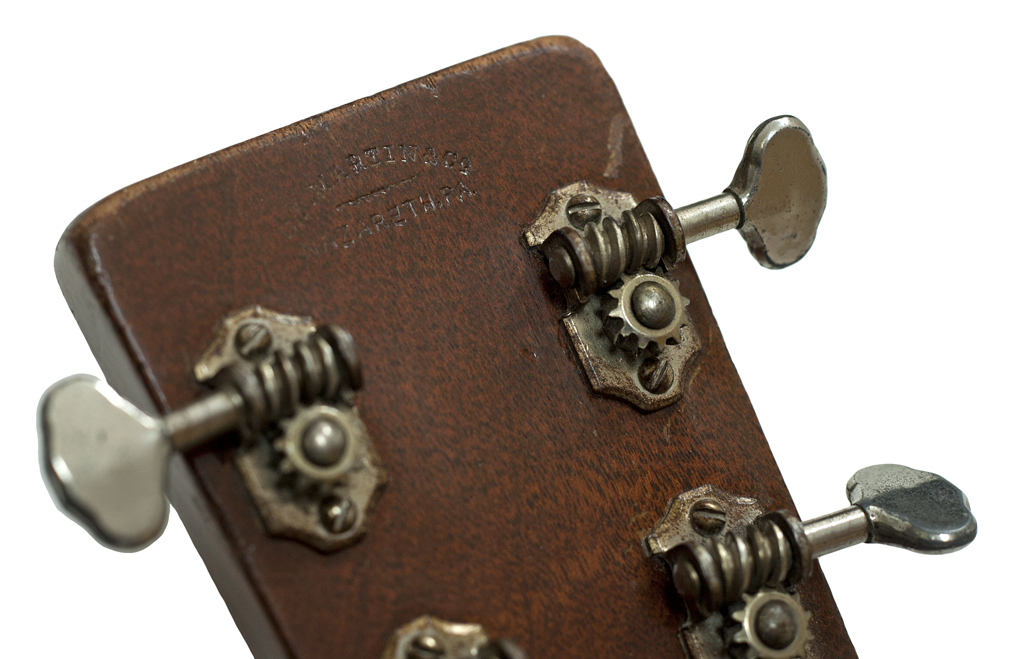
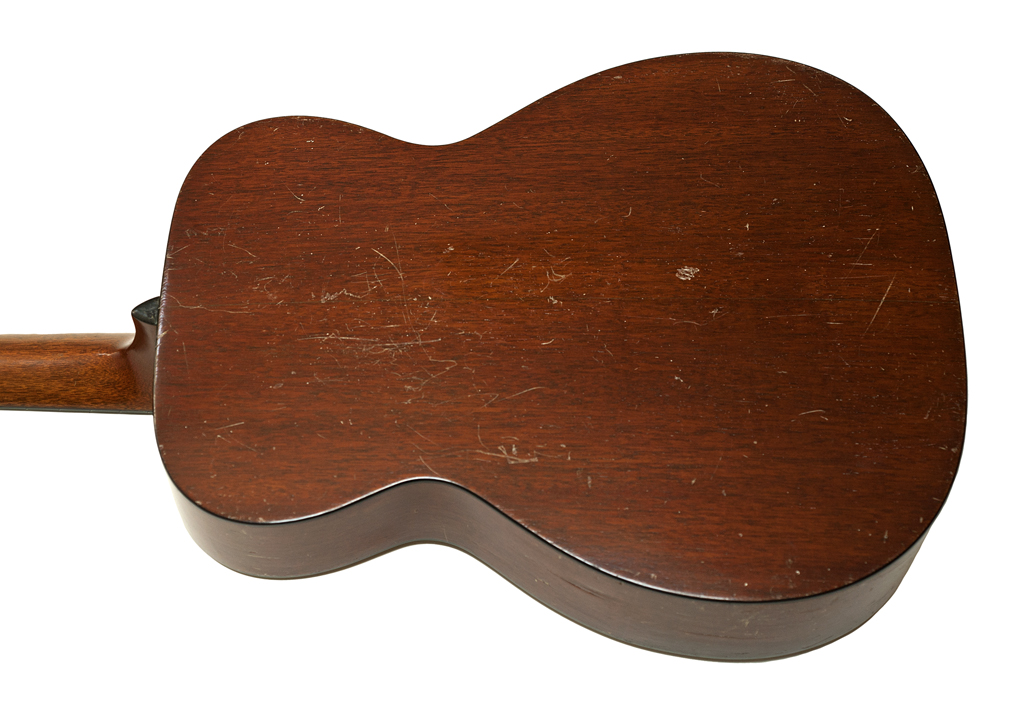
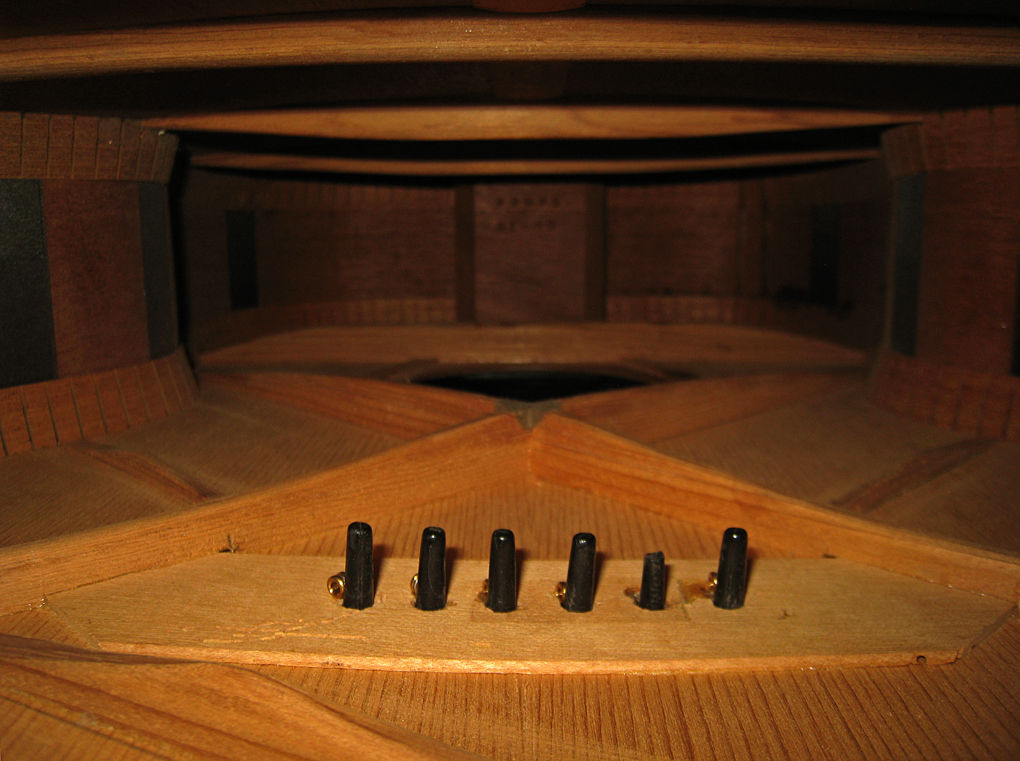
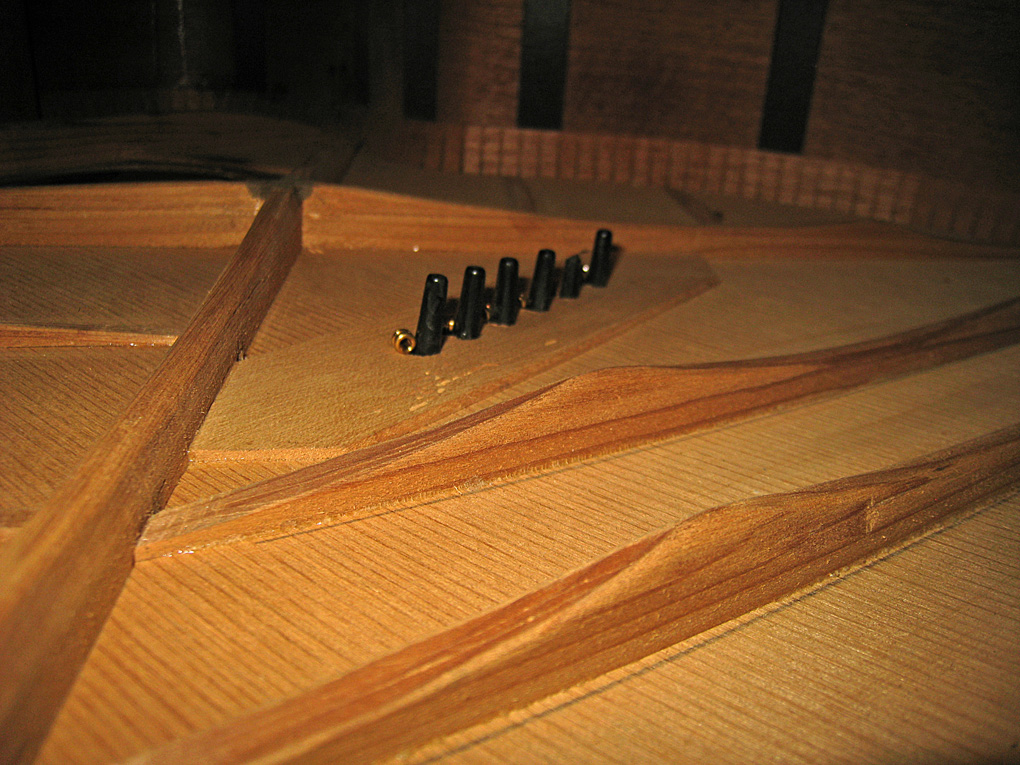
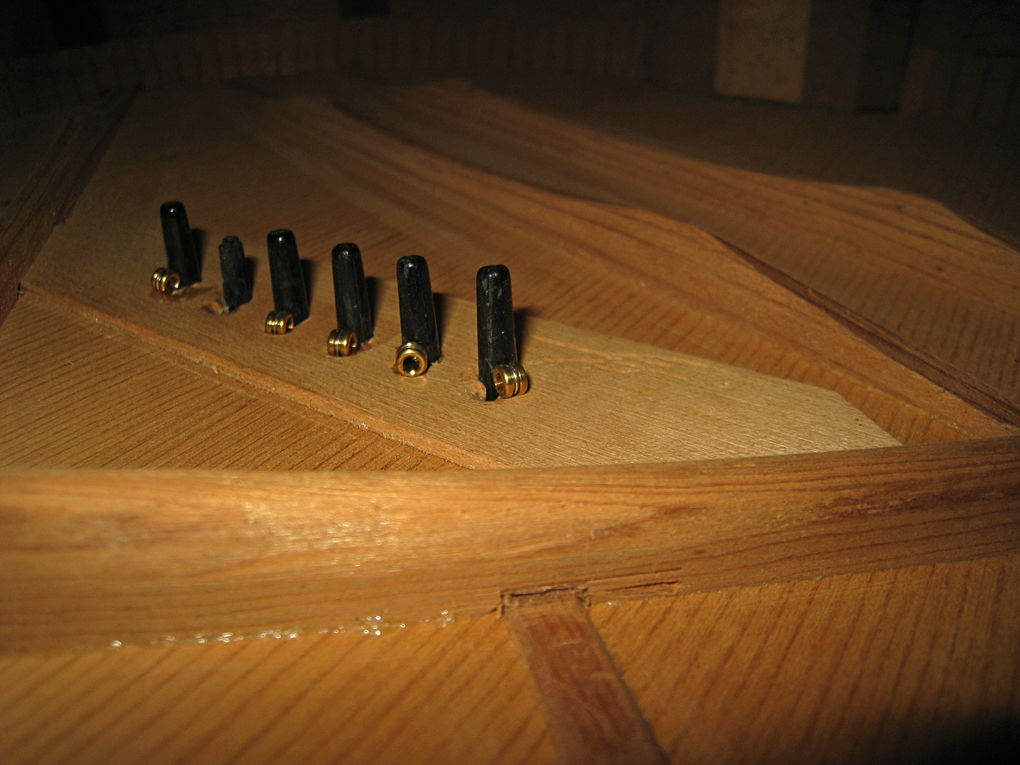
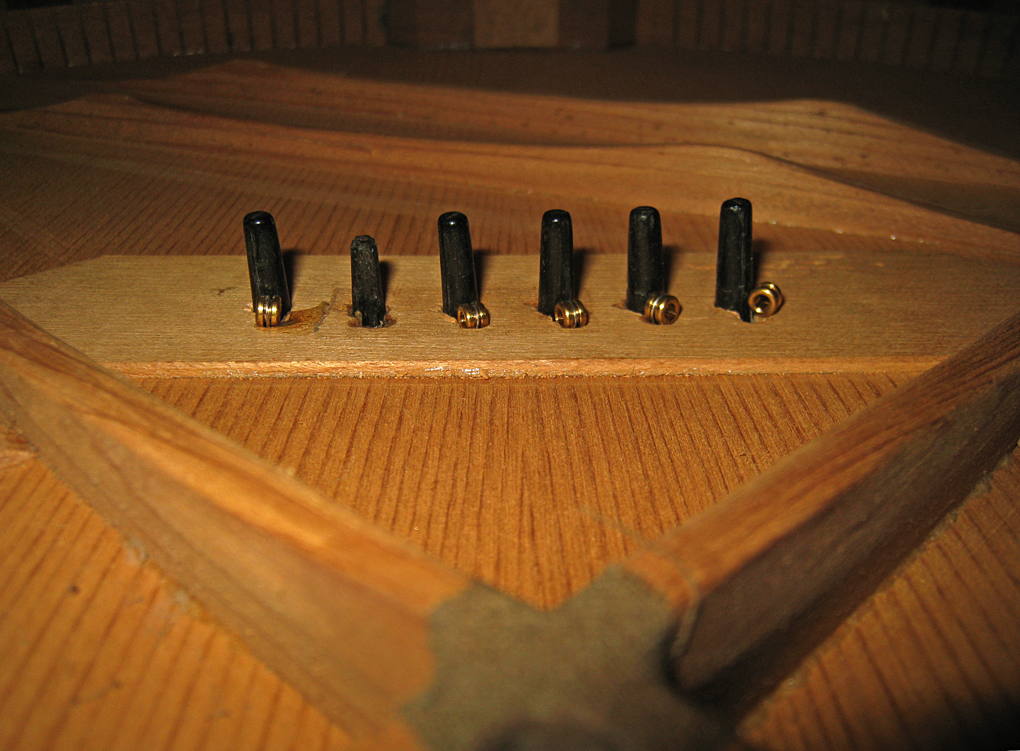
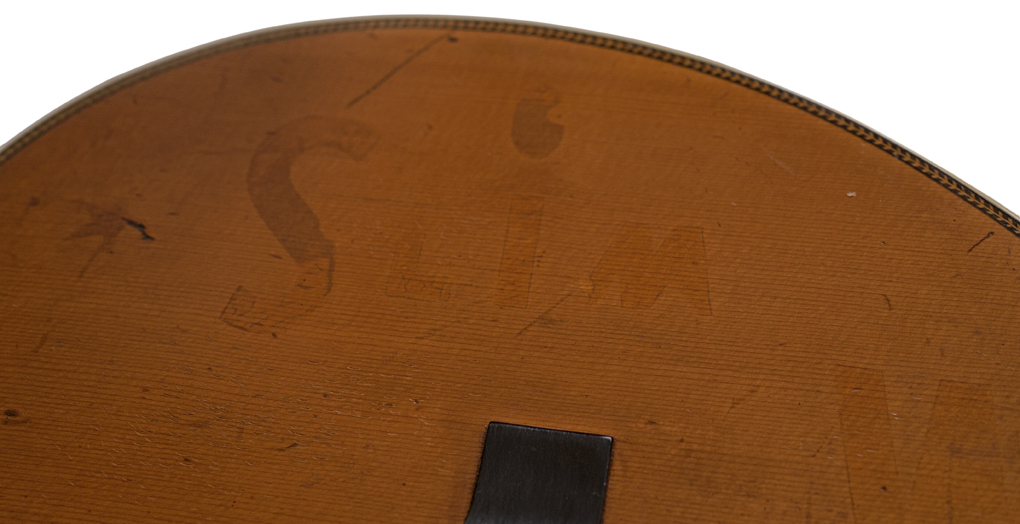
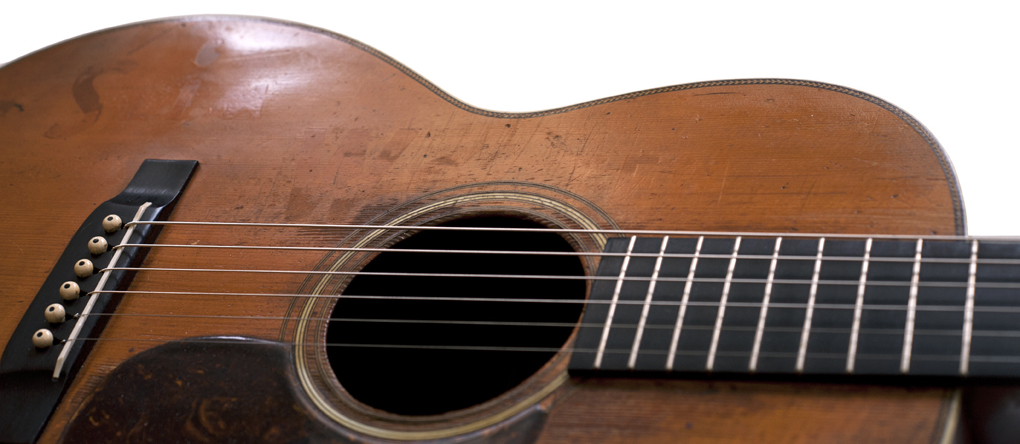
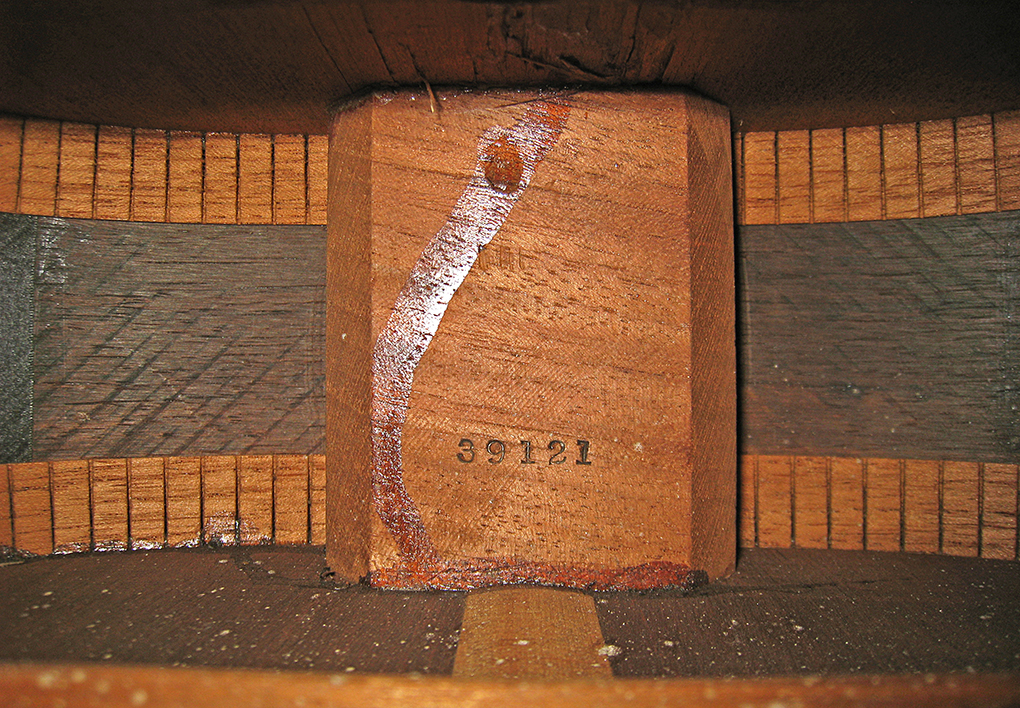
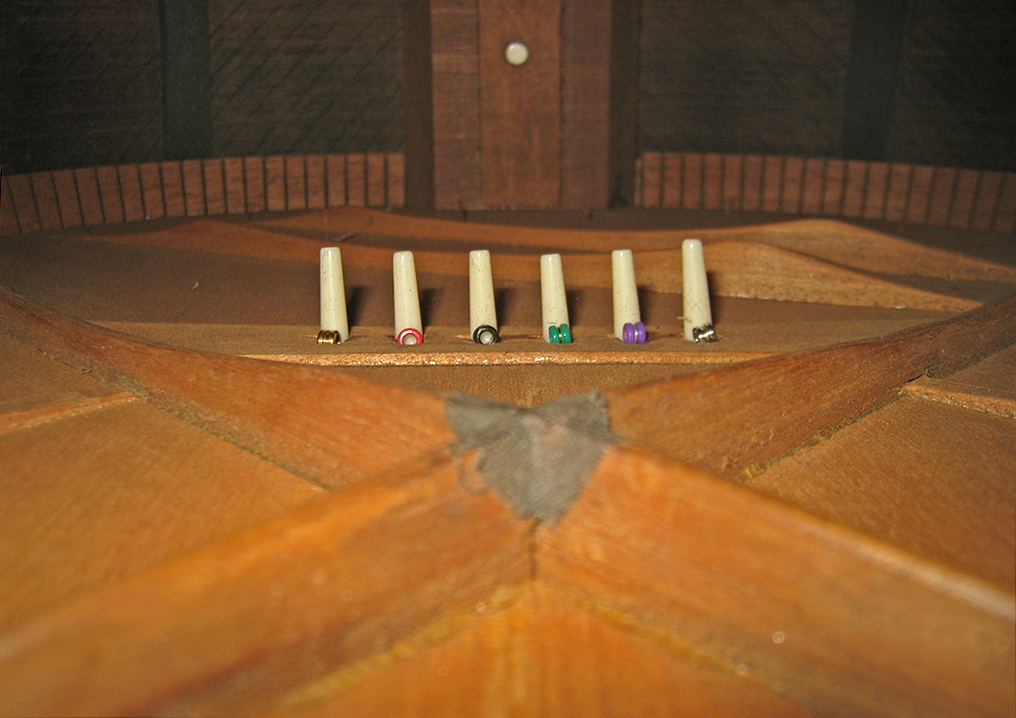
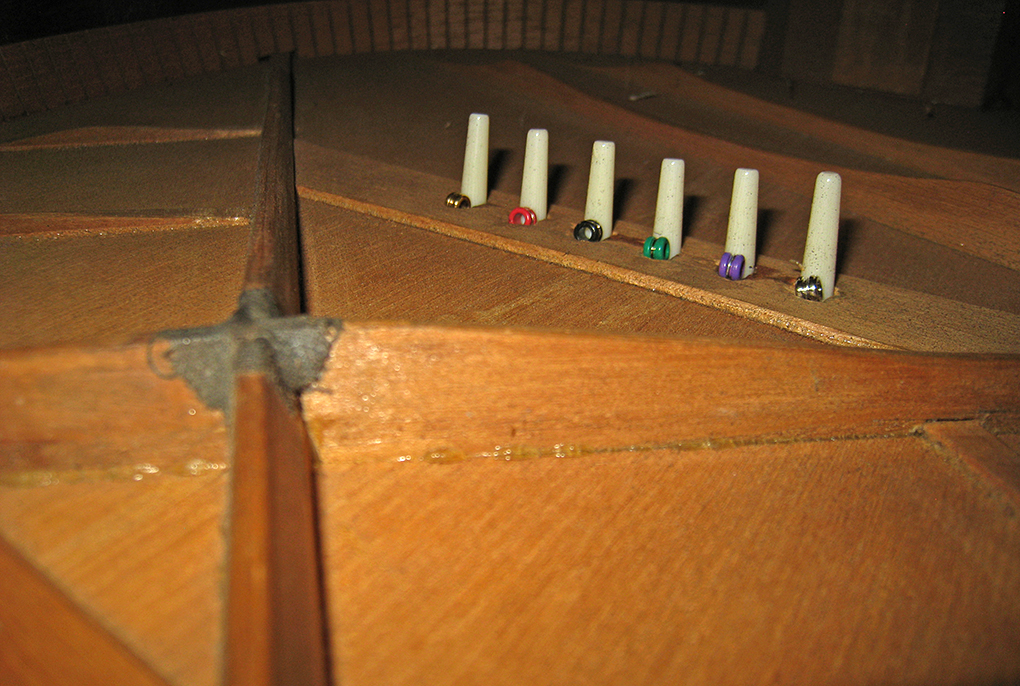
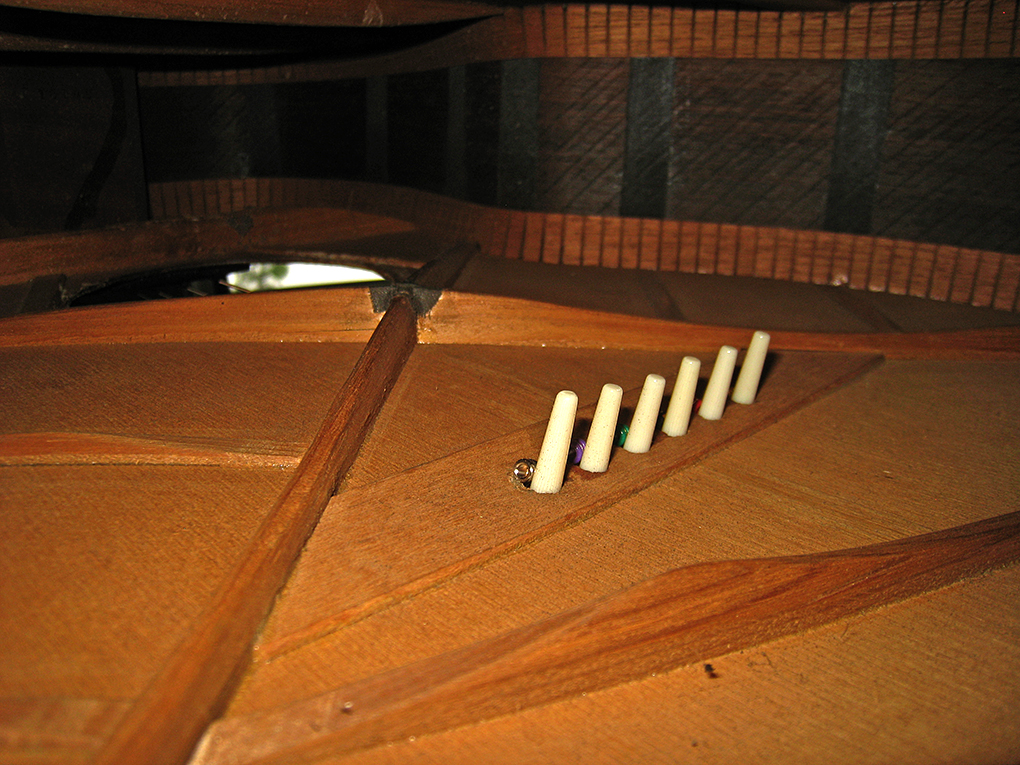
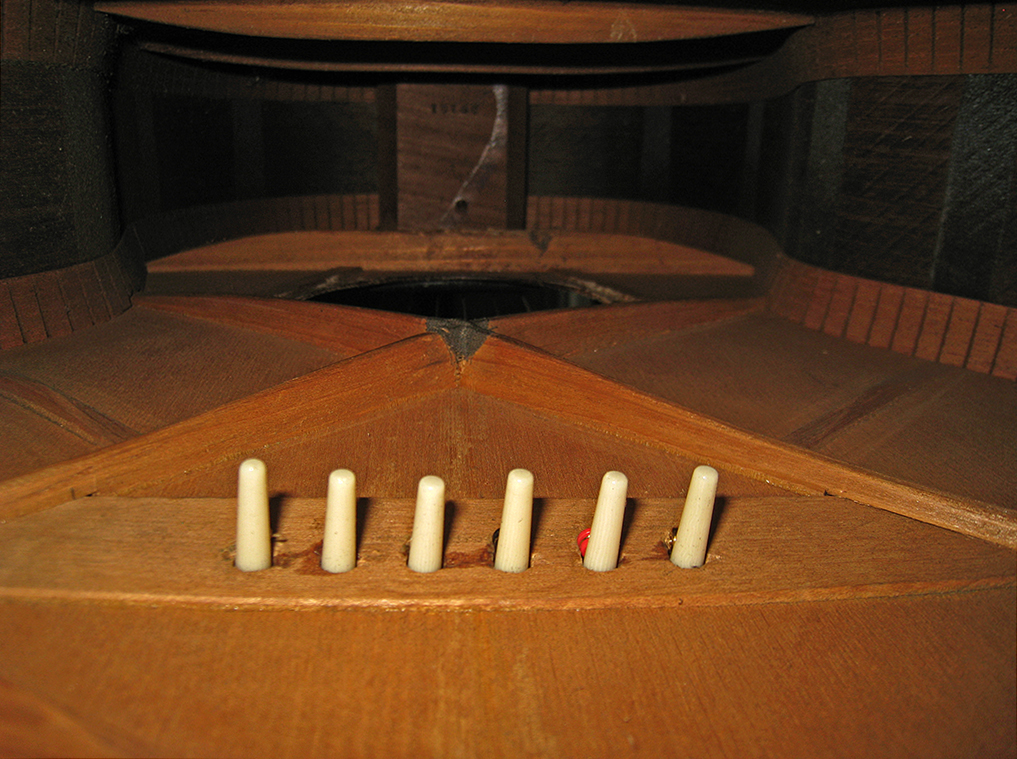
Martin
1927 5-17T
This late 1920's
5-17 tenor guitar is solid and in decent shape, with
three minor top cracks, and no back or side cracks,
only a few tiny dents in the sides.
The neck has had a
perfect re-set, with a string height of 1/16" on the
first string, and 3/32" on the 4th string.
With scalloped bracing and perfect original bridge
plate.
The banjo tuners
have been replaced with vintage period non-geared
pegs.
Serial number 31496
C. F. Martin / Ditson
1926 2-17
Style 2-17 Martin built for the Ditson
Company
Beautiful all original condition.
The string height is
excellent at the 12th fret at 4/32" on both the
Hi E and low E, with a nice neck set, bridge and
saddle height.
Serial #25193
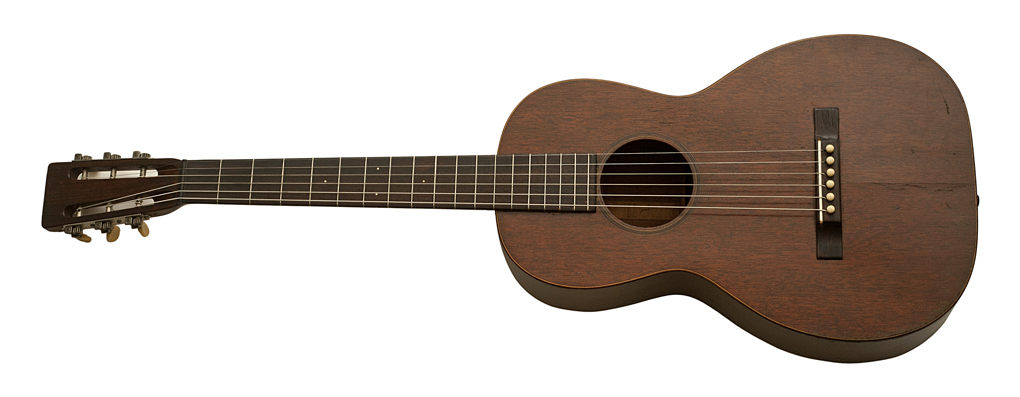
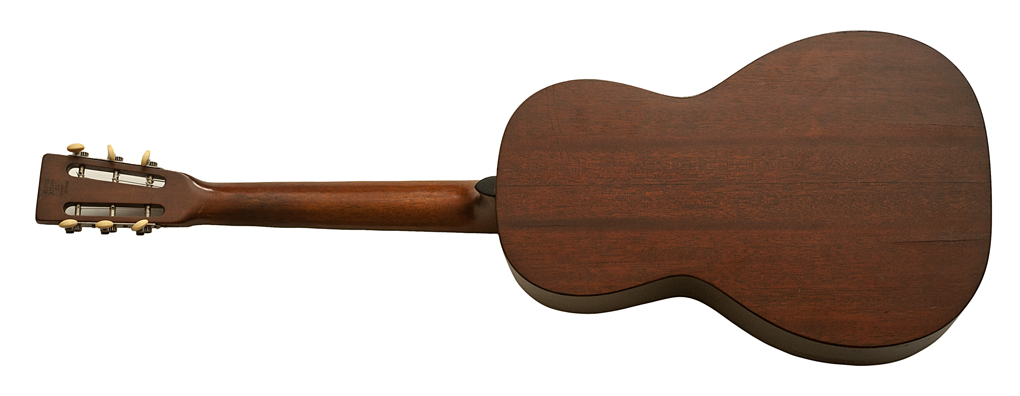
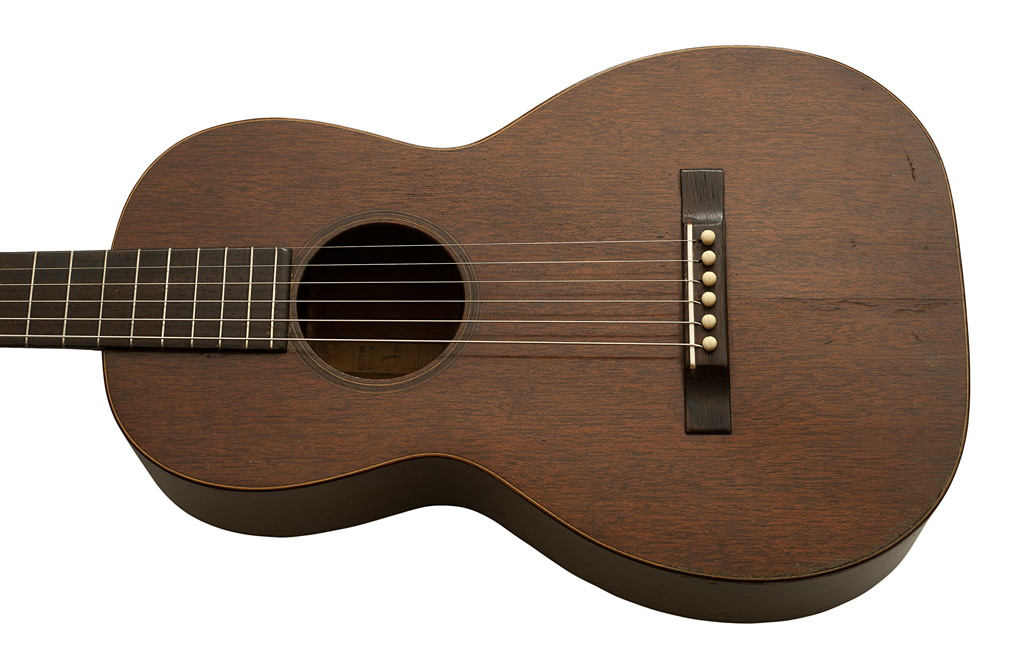
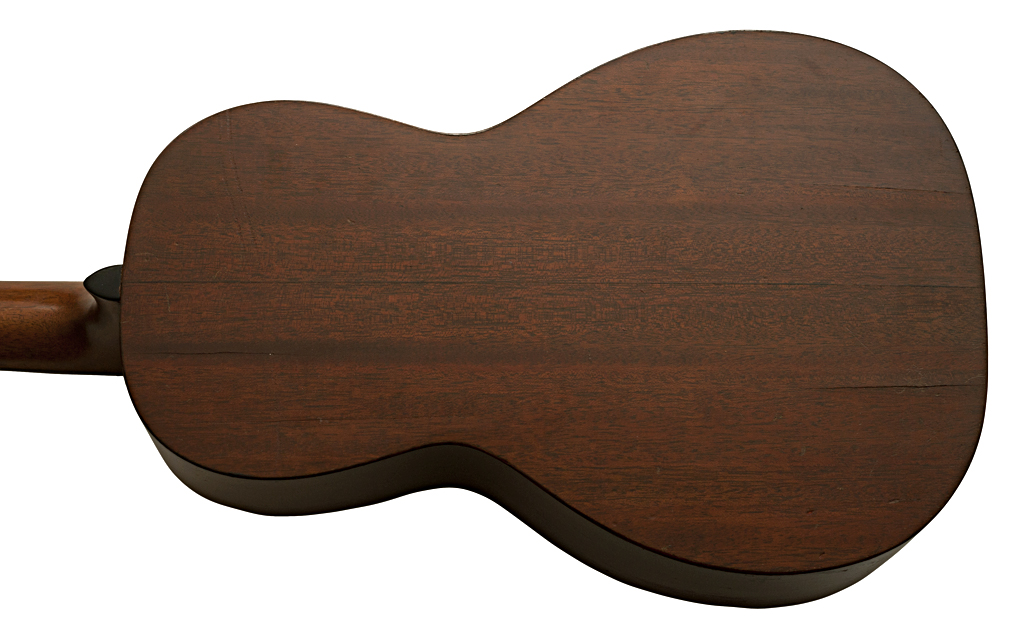

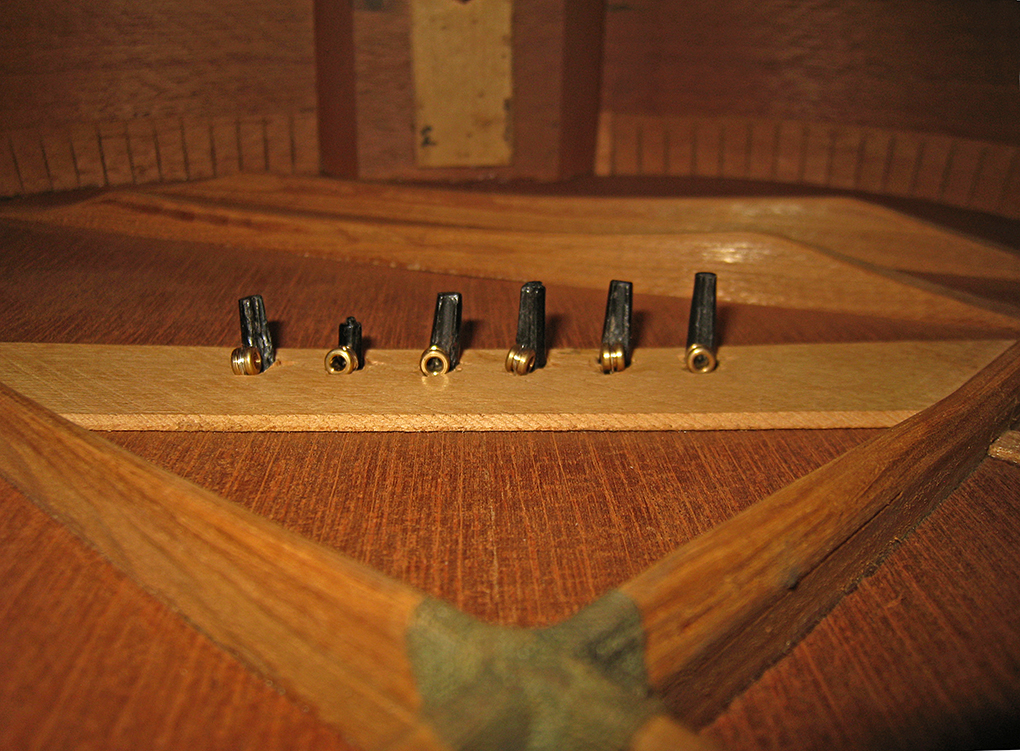
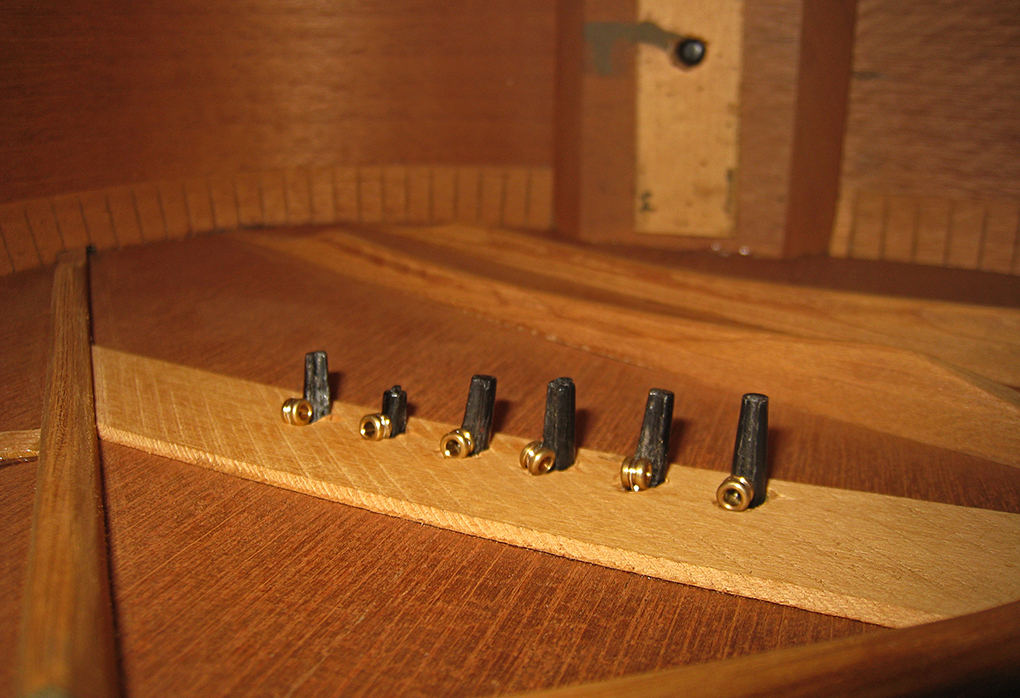
C. F. Martin / Wurlitzer
1922 2092 / 0-42
Beautiful original condition variation of the style 42 made
for the Wurlitzer Company, one of Martin's most important
accounts.
Sold as the Wurlitzer model number 2092.
One of only 11 made in this style, the finest of the models
produced by Martin exclusively for the Wurlitzer Company
Martin Serial Number 17128
A rare and important instrument with the appointments of a
Martin Style 42, which was Martin's top of the line model for
roughly 50 years.
This example is illustrated in the book "Martin Guitars, a
Technical Reference" by Johnston & Boak.
This later example has a Martin serial number and Martin Style
42 appointments.
Designed with the finest materials available on a Martin of
the time, including ivory nut and saddle, and top and back
body binding, fingerboard bindings, and tuning pegs all made
of Ivoroid.
An abalone pearl border is inlaid on
the top of the guitar. An additional connecting
link of pearl is inlaid around the end of the fingerboard,
and abalone is also inlaid into the soundhole ring, as
well as the bridge pins, and end pin.
Beautiful 45 style marquetry
in backstripe. The back and sides are French Polished
Brazilian Rosewood, the top is red spruce, and the fingerboard
is ebony, with Martin style 42 fancy inlays.
Dove tail joined headstock and neck
with volute. Scalloped X style braces. The pyramid
style bridge is a perfect replica of the original except for
improved intonation, made by TJ Thompson to replace an earlier
oversize replacement.
Thanks to work done for me by T.J. Thompson, the guitar has a
perfect neck set, with a string height of 1/16" on the first
string, beautifully playing bar frets, and a perfectly stable
top and wonderful sound with silk and steel strings.
"C. F. Martin & Co. Nazareth, PA" is stamped inside the
guitar on the center strip inside the back.
The name "Wurlitzer" is stamped on the back of the
headstock above "C. F. Martin & Co. Nazareth, PA”.
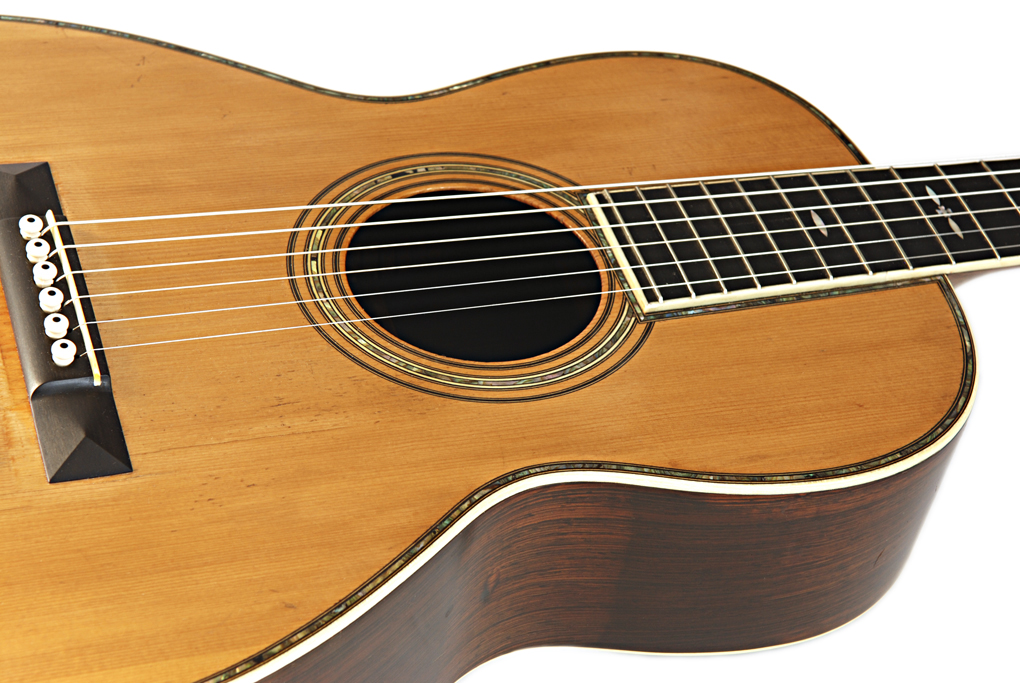
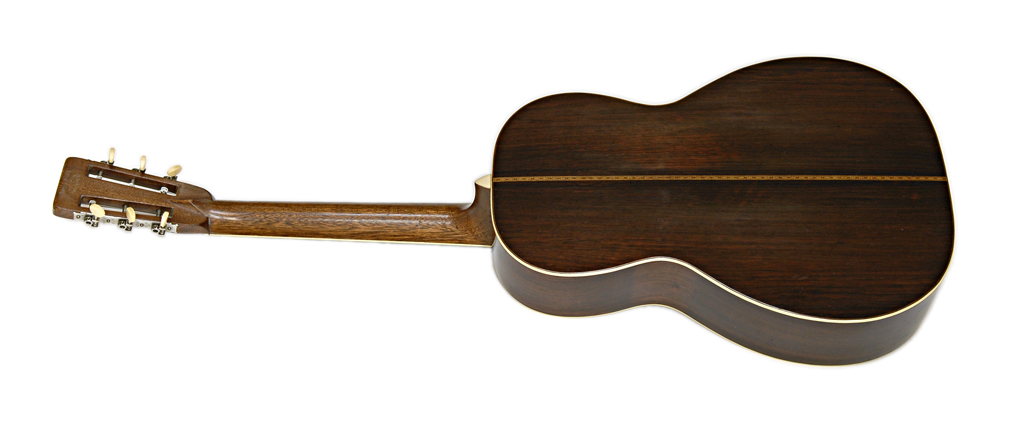
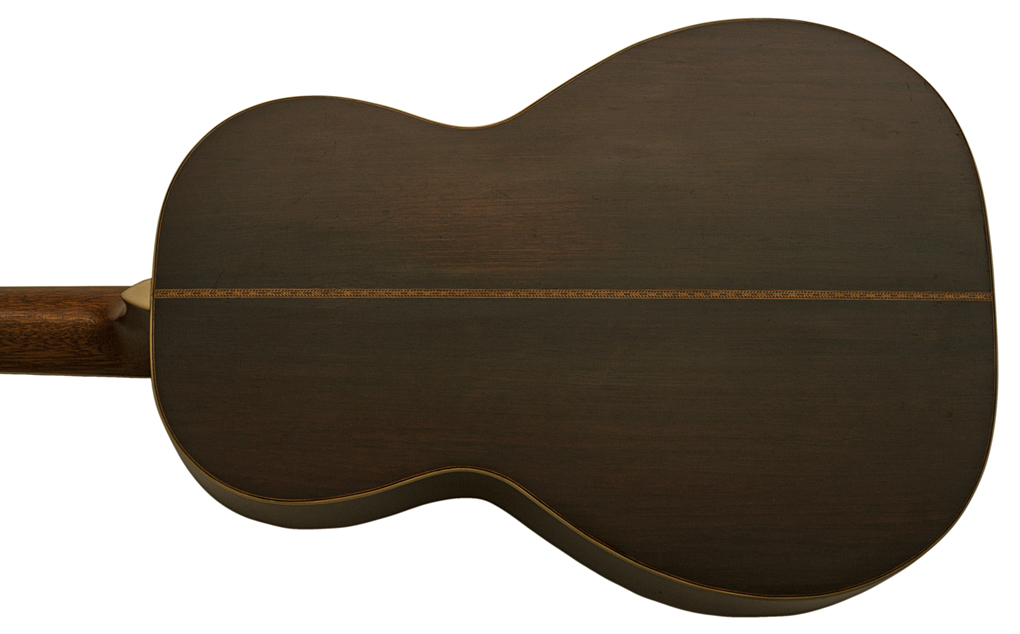
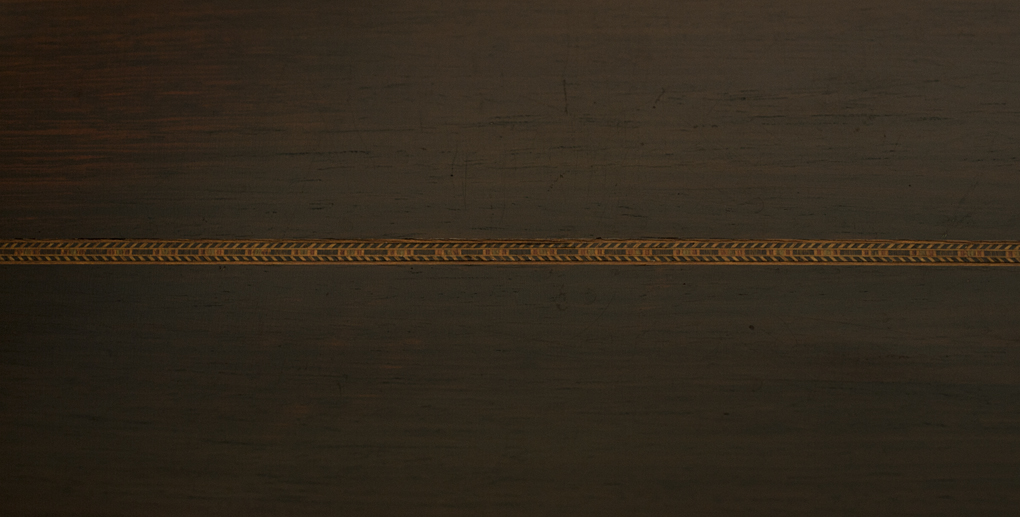
Unlike the early 2092, with the
Wurlitzer stamp only, the later version features both
Wurlitzer and Martin stamps.
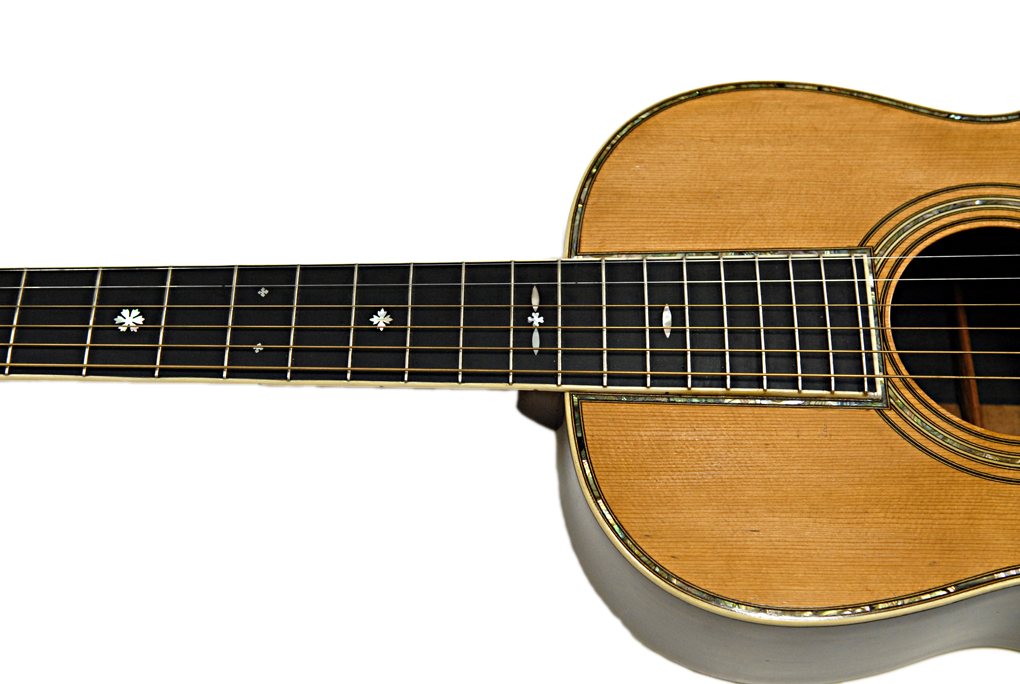
Unlike the early 2092, with the
Wurlitzer stamp only, the later version features both
Wurlitzer and Martin stamps.
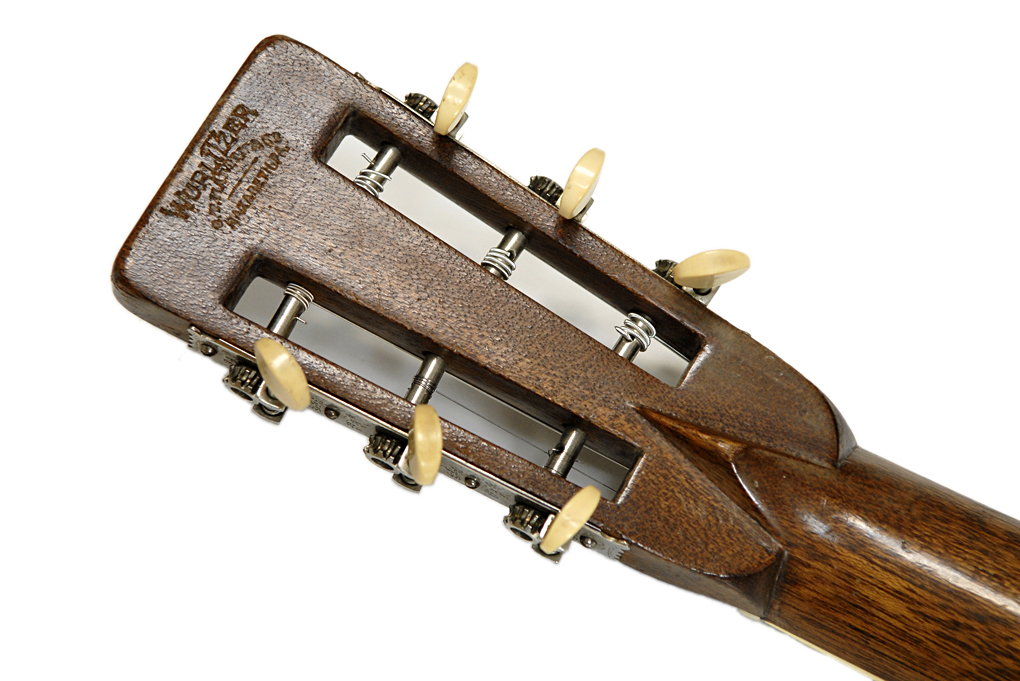
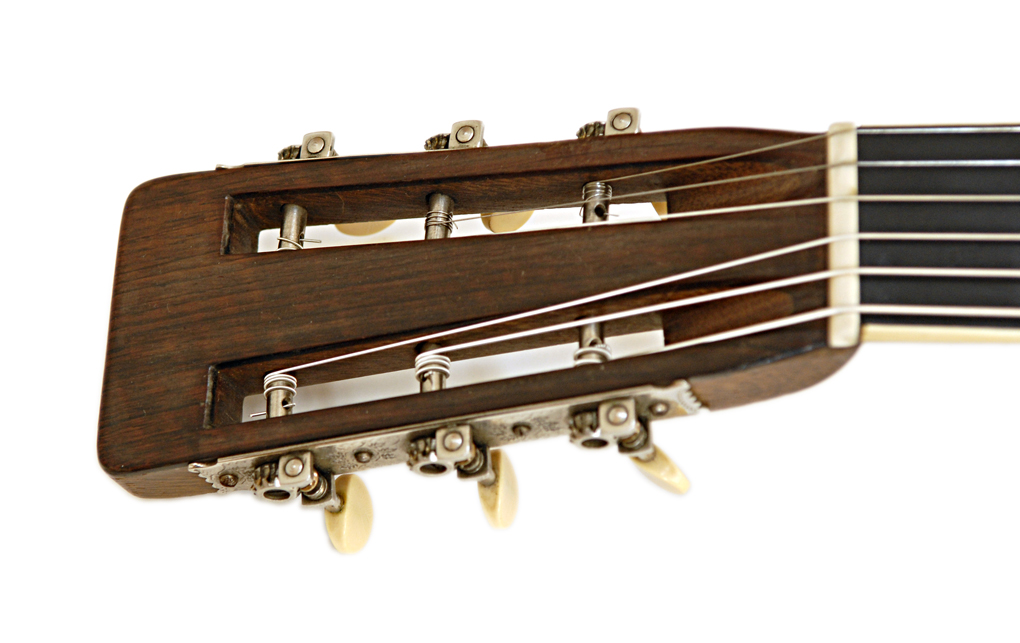
The tuners on the Style 42 are
typically silver Waverleys with an engraved design.
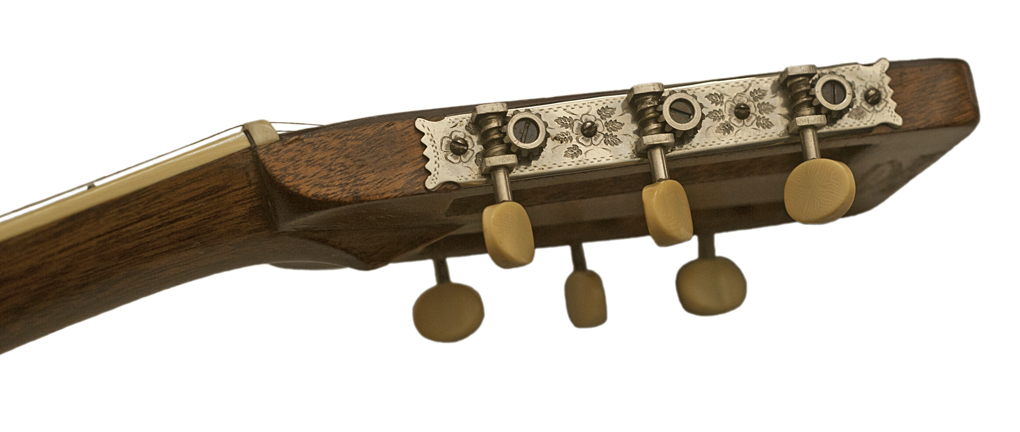 The only compromise to this
guitar is the mark left from an earlier oversize bridge,
and the touched up finish.
The only compromise to this
guitar is the mark left from an earlier oversize bridge,
and the touched up finish.
I'm in the process of cleaning
up the top and finish to be considerably less
noticeable. The touch up above was done by one of
the most acclaimed luthiers in the business.
Unfortunately, the detailed
finish work of even the most expert luthiers can't
compare to the work of those in other fields.
I've been learning from a
museum curator who has a lot more tools in her toolbox,
have been making tremendous progress, and expect that
this should look very nice when new finish is applied.
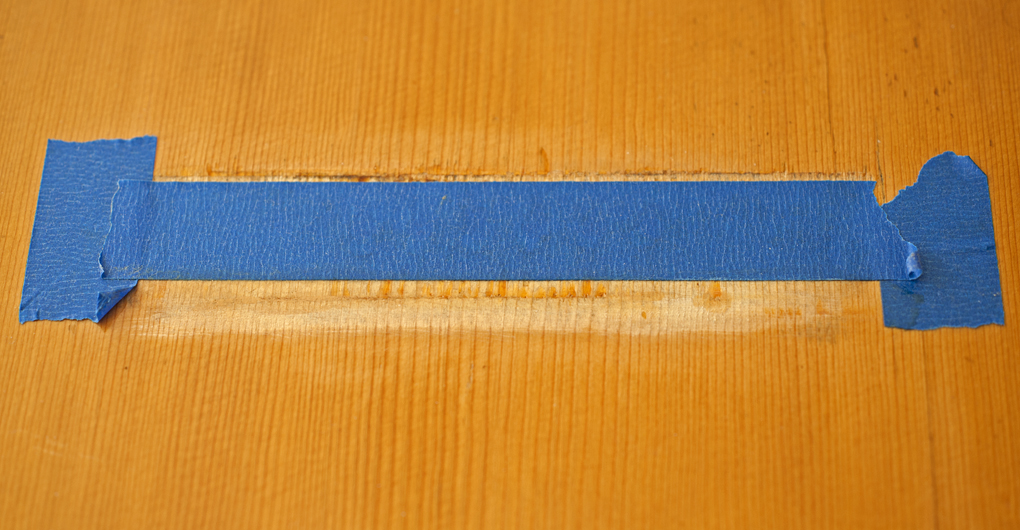
The top has the correct amount of
belly behind the bridge.
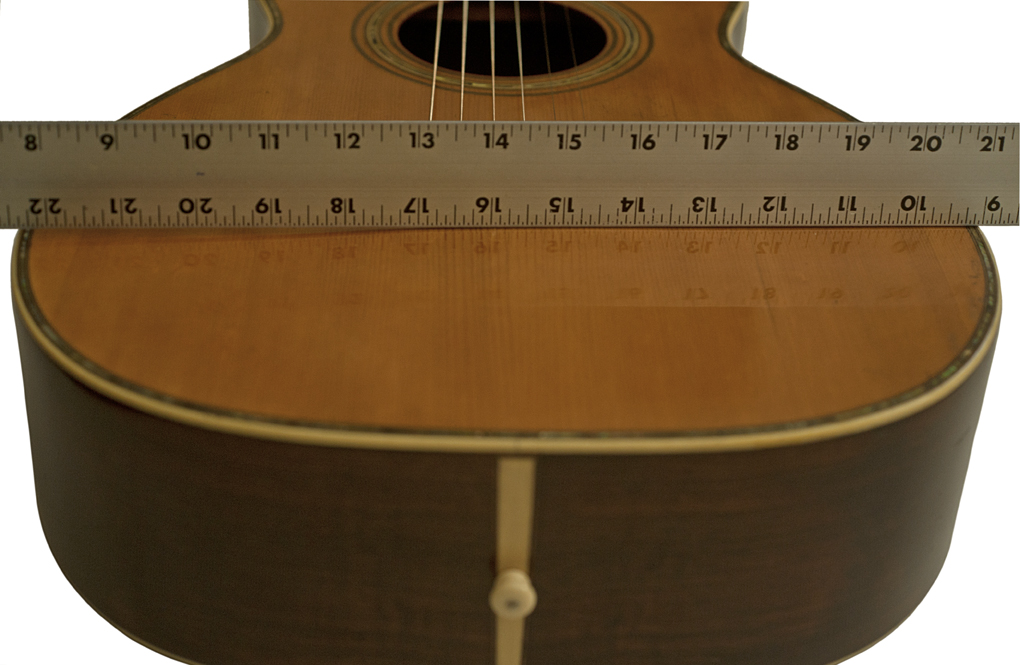
Laying a straight edge across the
frets, the straight edge meets the top of the front edge of
the bridge showing a perfect neck angle.

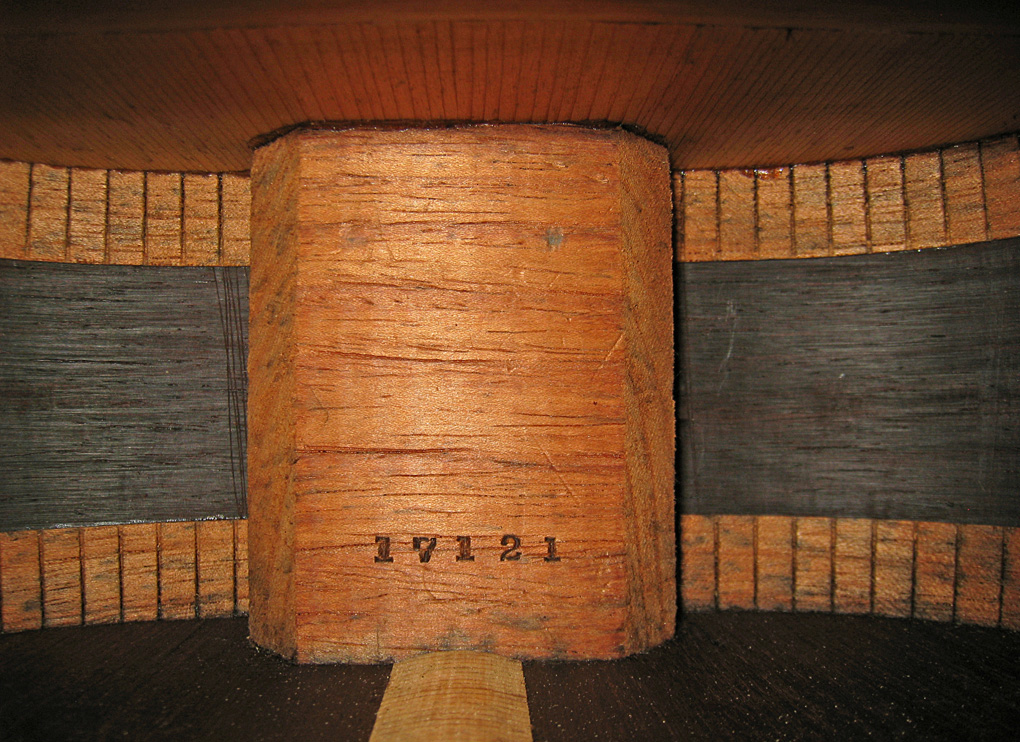
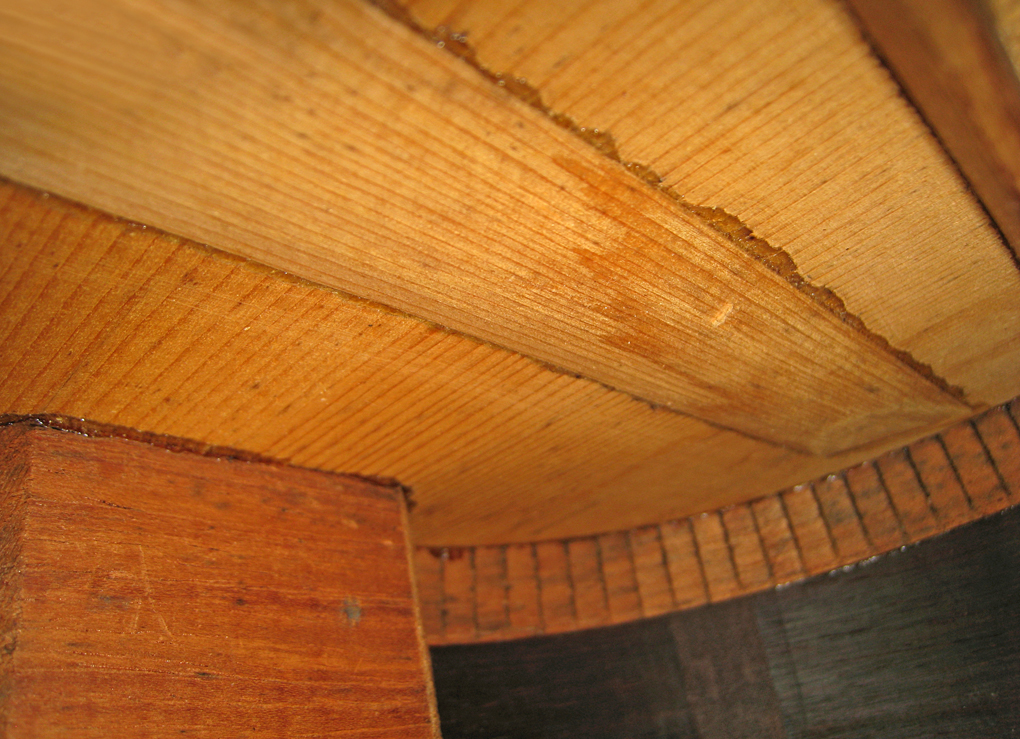
The interior is extremely clean, with
one nicely done spruce top cleat on the treble side and a
rosewood bridge plate. Rosewood bridge plates have
attracted a
bad reputation due to the unnecessarily
oversized rosewood bridge plates used by Martin in the 1960's,
and ignorance of the fact that most of the
nicest early Martins did not have maple
plates.
The diamond spruce cleats on the center seam are an original
feature seen on small body 12 fret Martins as late as the "New
Yorker" models of the 1960’s.
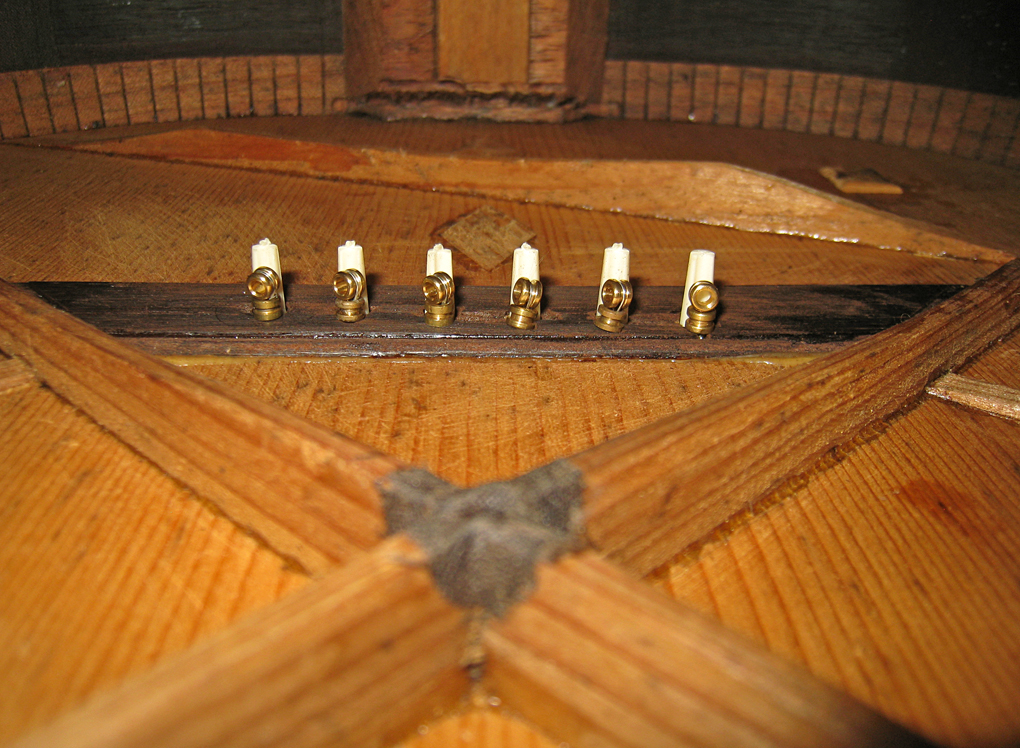
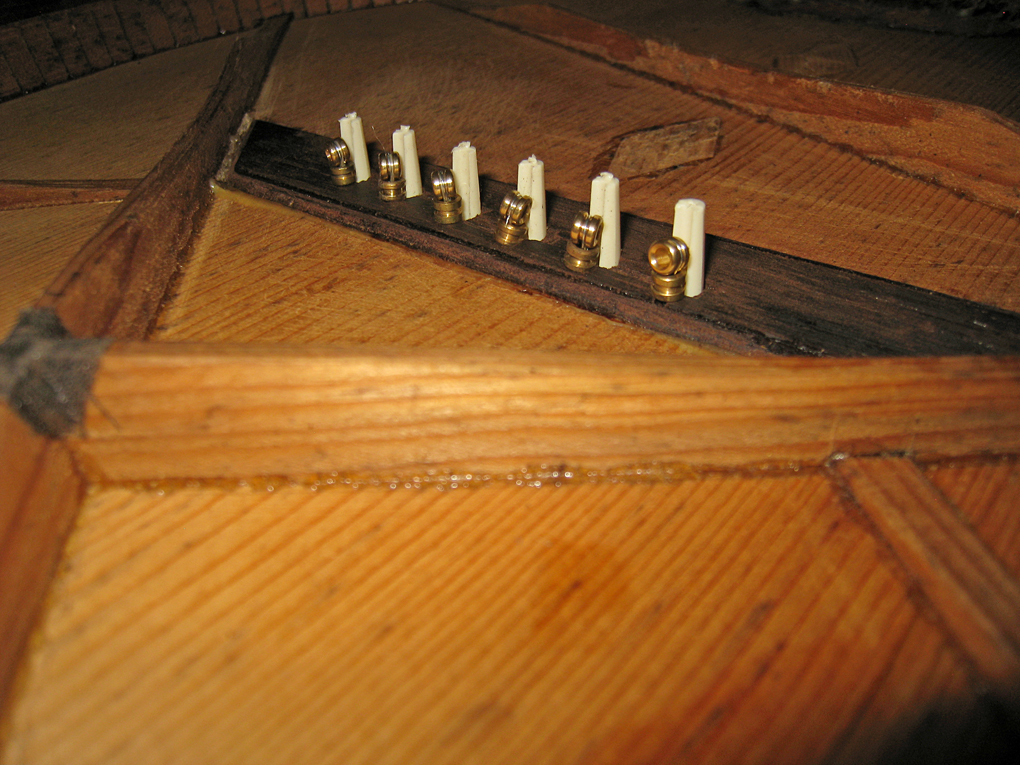
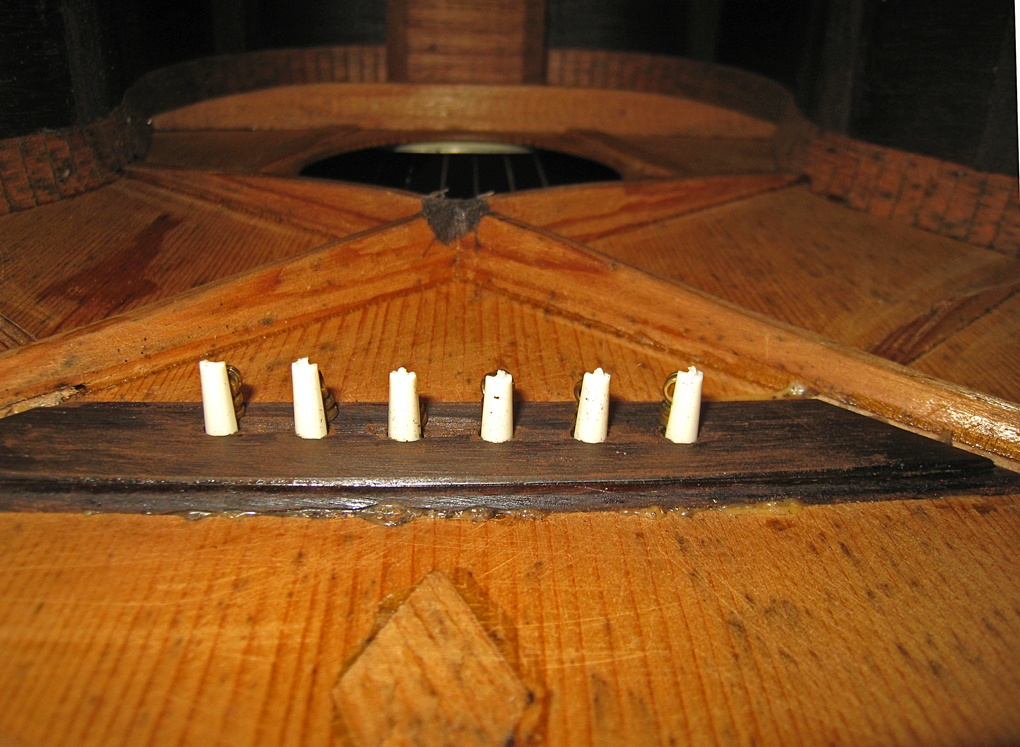
C. F. Martin 1920 0-18
Beautiful original condition style 18 in Martin's favorite
size.
The action is 1/8” on the high E and 5/32” on the low E at the
12th fret.
With original Waverly tuners.
The finish is all original and very nice. Minor playwear
and fingerboard divots with only one single, almost-invisible
1” long hairline crack on the entire guitar.
It has had a pair of thin bolts added to the bridge, a common
addition when steel strings became available, which could
easily be removed.
Shipped to the Sherman Clay Store in San Francisco, California
on May 3rd, 1920
Serial number 14768
-SOLD -
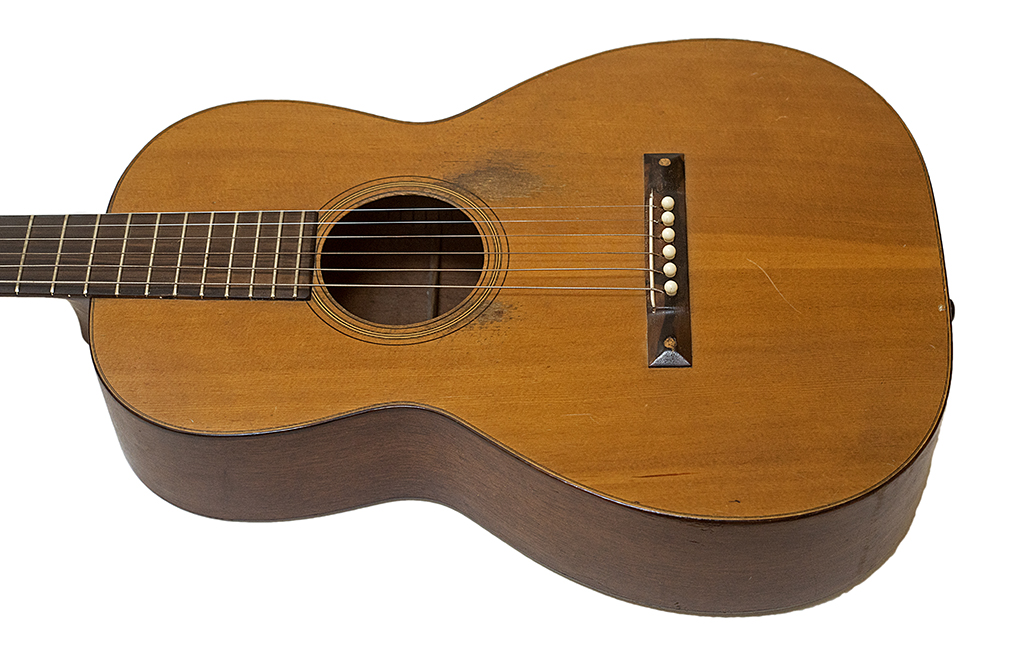
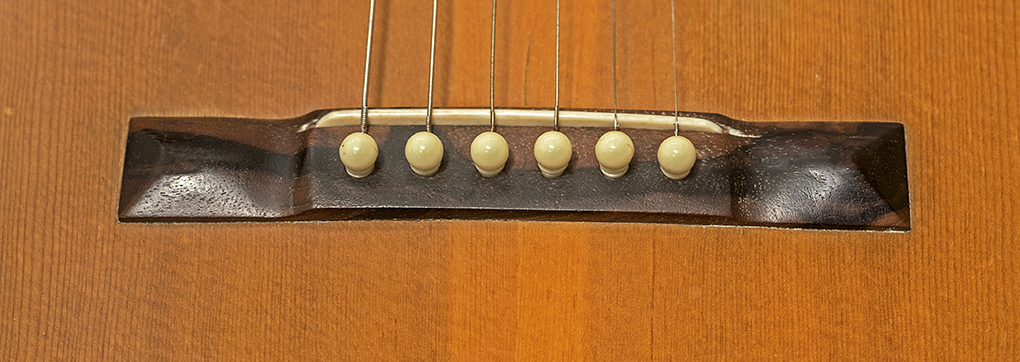
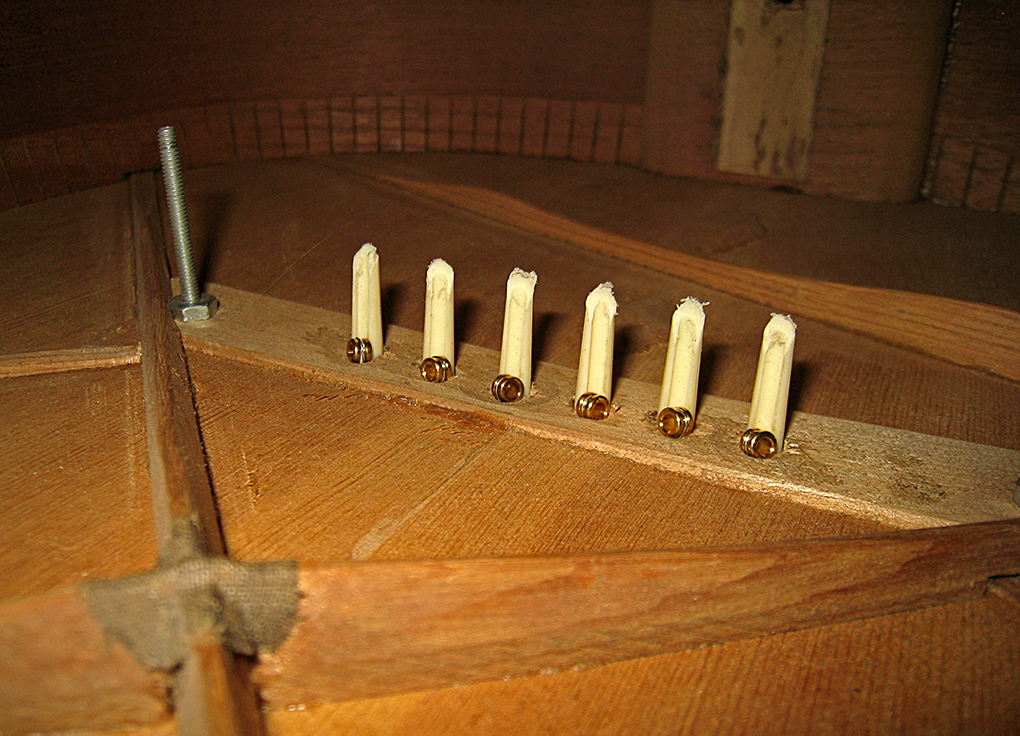
Martin 1919 Southern
California Music Co. 0-18K / 1350
The koa wood for these was supplied by SoCal from the big
Island of Hawaii.
Later versions were made with raised strings and frets ground
flush with the fingerboard, but the earliest Martin Hawaiians
were made with regular frets for regular
Spanish style playing, and came with a nut extender to raise
the strings for Hawaiian style music, so don't need a
conversion to play in the conventional "Spanish" style.
String height 5/32 on the 6th string, 4/32 on the 1st string
at the 12th fret.
Serial #14003


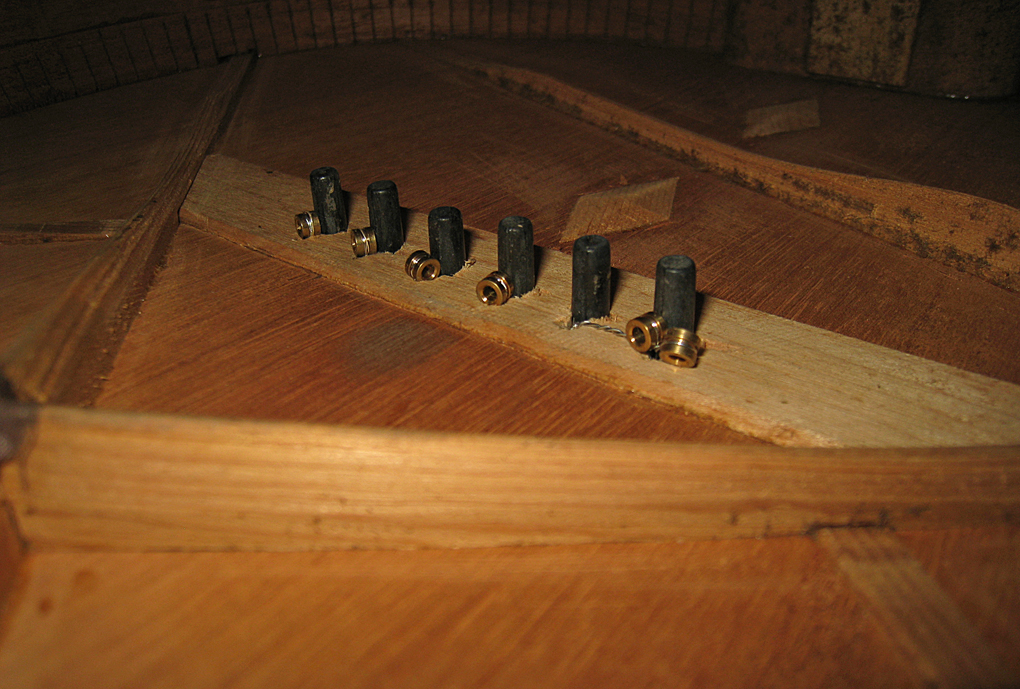
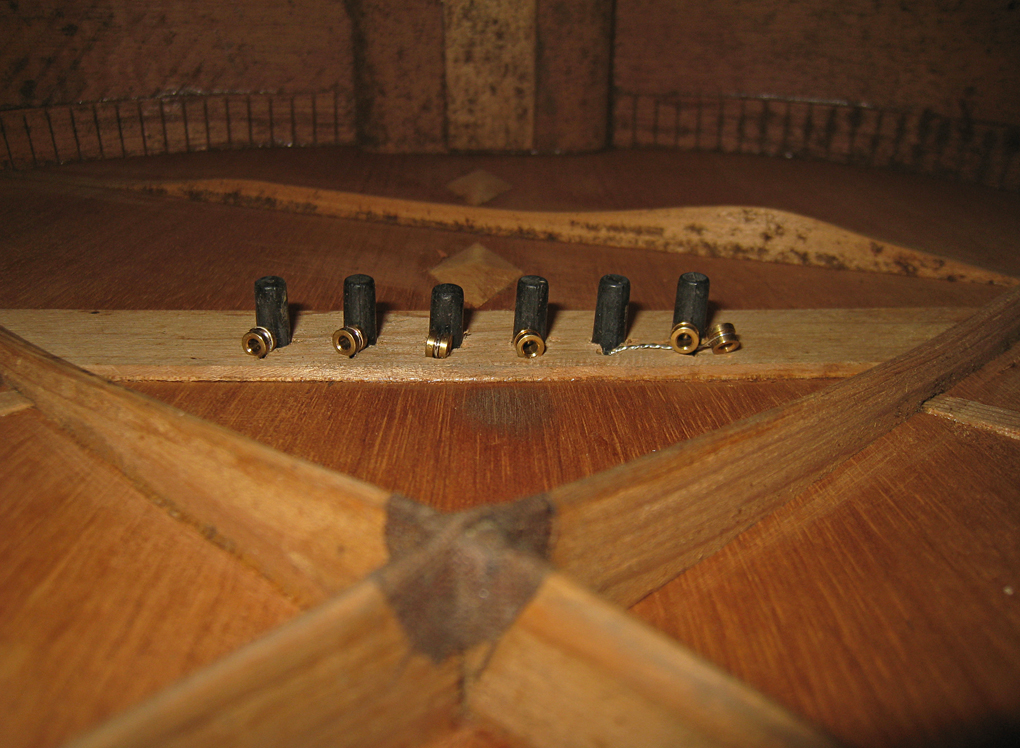
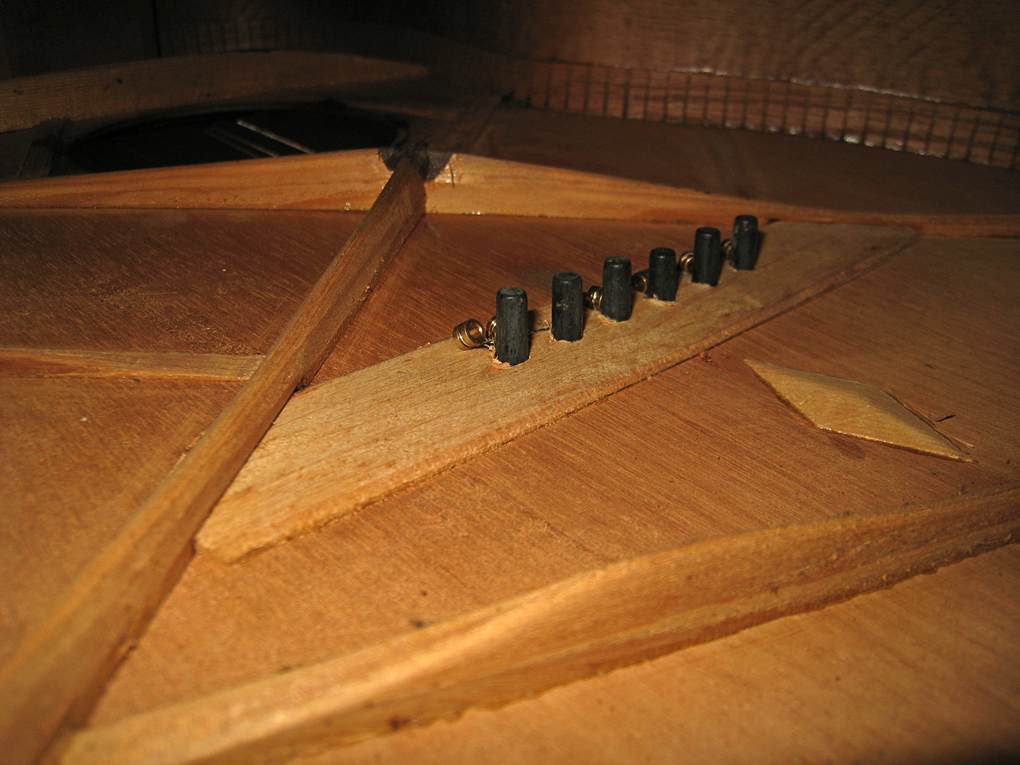
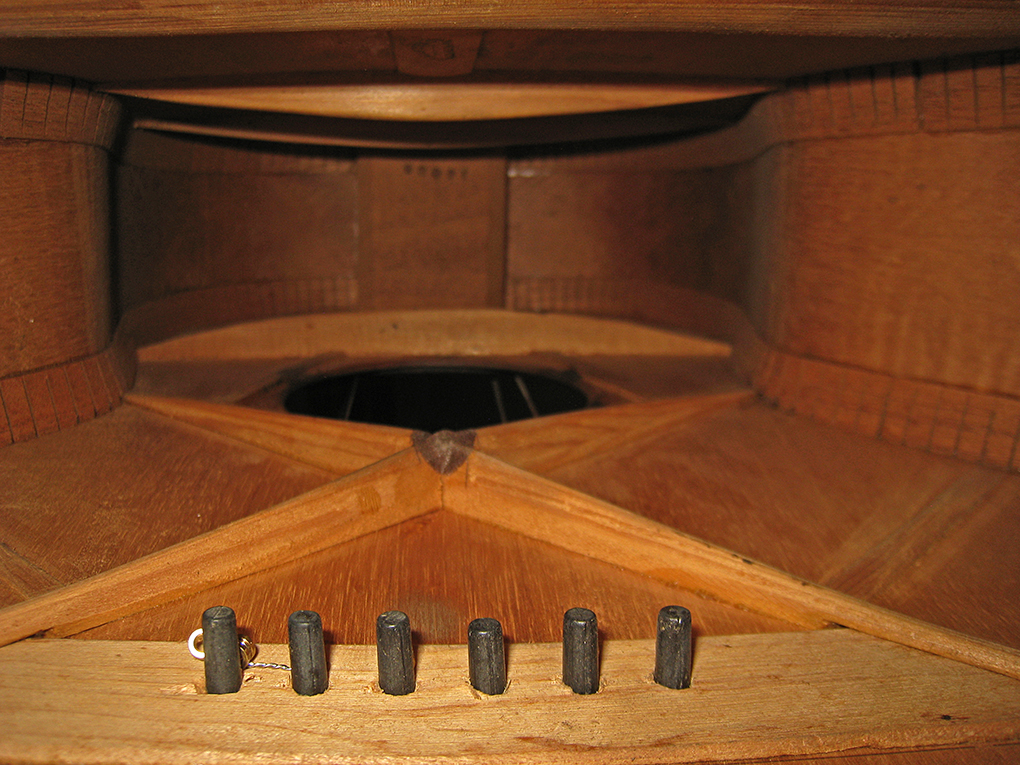
C.F. Martin 1919 O-45
An original, pre-war Martin top-of-the-line Style 45
guitar with a rare early "Airplane Spruce" top.
My photographs of this guitar appear on p. 80 of Johnston,
Boak & Longworth, "Martin Guitars, a Technical Reference".
In the late teens, Martin was experimenting with what was then
known as "Airplane Spruce”, a Sitka Spruce from the Northwest
produced for airplanes for WWI.
By the time World War II ended in November, 1918, production
of Western spruce for aircraft by the Spruce Production
Division of the Army
had reached 10,000 sq. ft. per month, and left a newly built
infrastructure and one billion board feet of spruce.
A new original OM Style pickguard has been fashioned for this
guitar by TJ Thompson.
A traditional 45 style torch inlay in abalone decorates the
headstock, and 45 style fancy inlays adorn the ebony
fingerboard.
Abalone "heart" inlaid on the perimeter of the top, sides, and
back of the guitar is unusually brilliant and fine.
T.J., who routinely works of pearl Martins, commented that
this was the most intense pearl he had seen.
The unique backstrip on this example, while not the style most
often associated with the Style 45, was typical in this
period.
- SOLD -
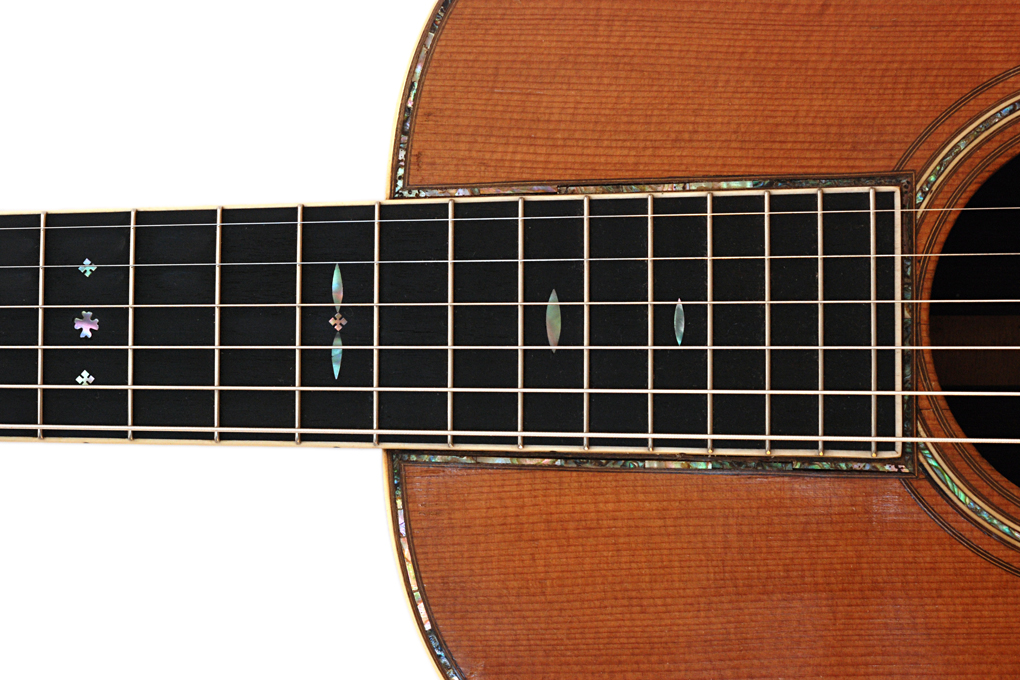
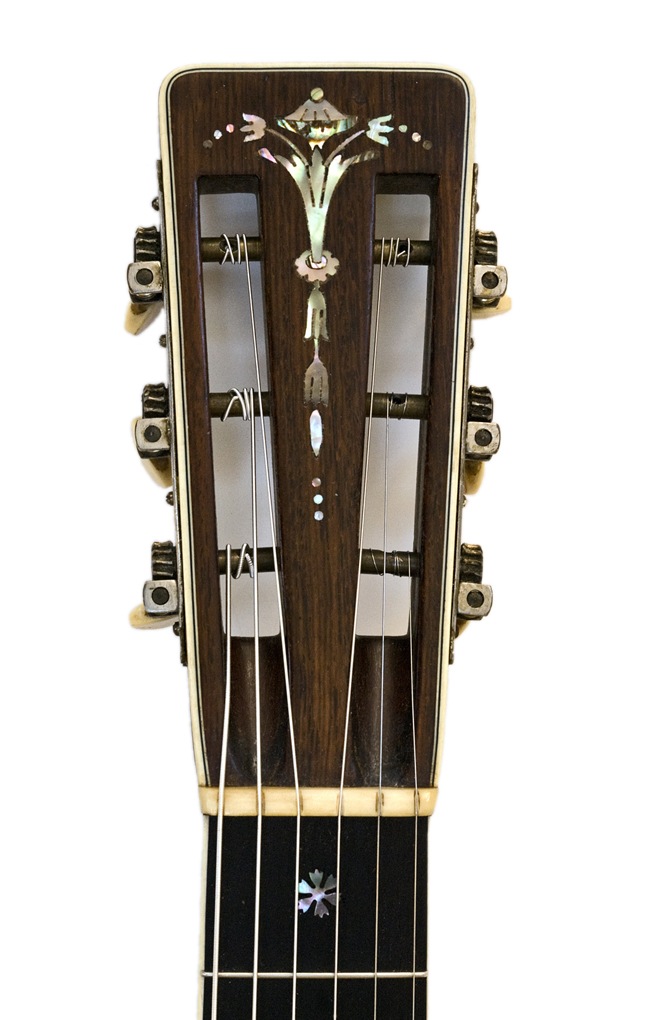
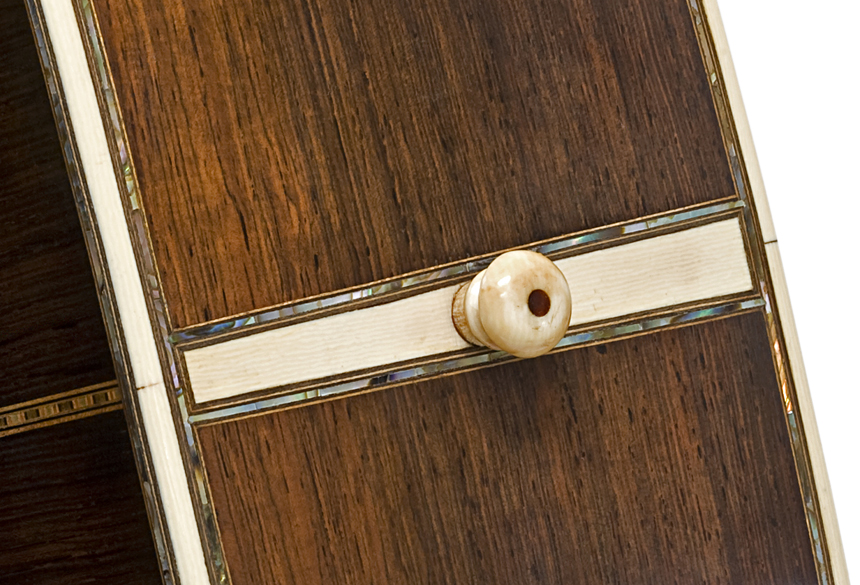
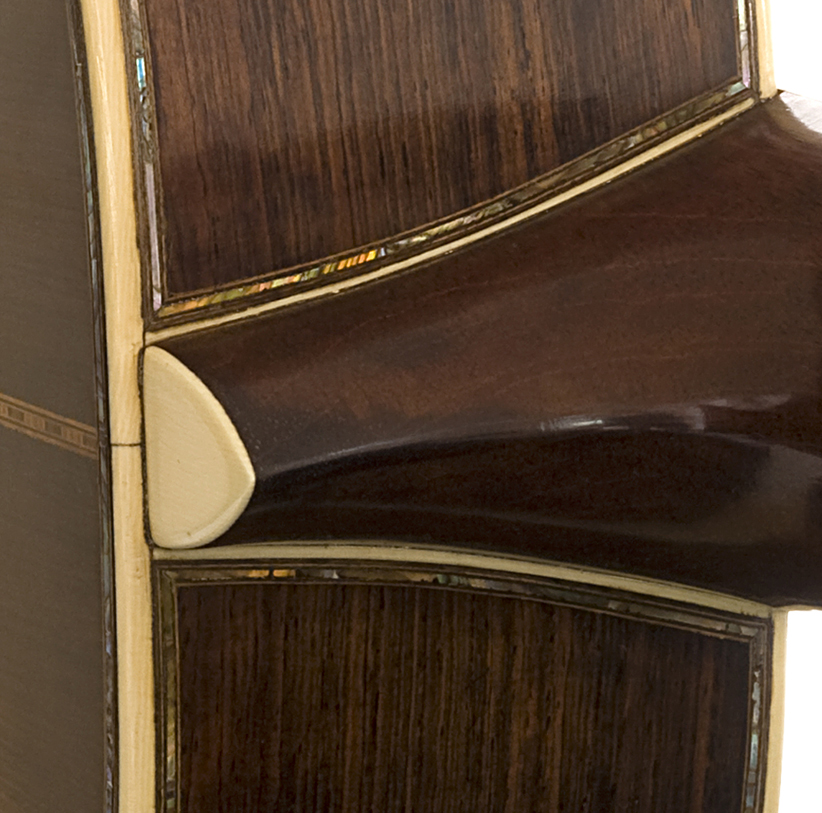
Martin 1917 Spruce top 1-18K
This unusual rare example is a
Size 1 Style 18 guitar with spruce top and koa back and
sides, the first to be made with a spruce top since the
original samples made for SoCal.
String height 6/32" on both the
1st and 6th strings at the 12th fret.
Very good condition.
Serial number 12959
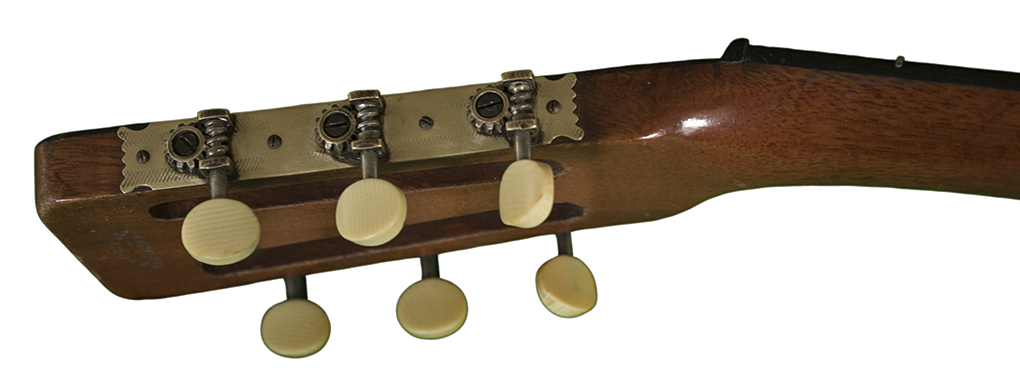
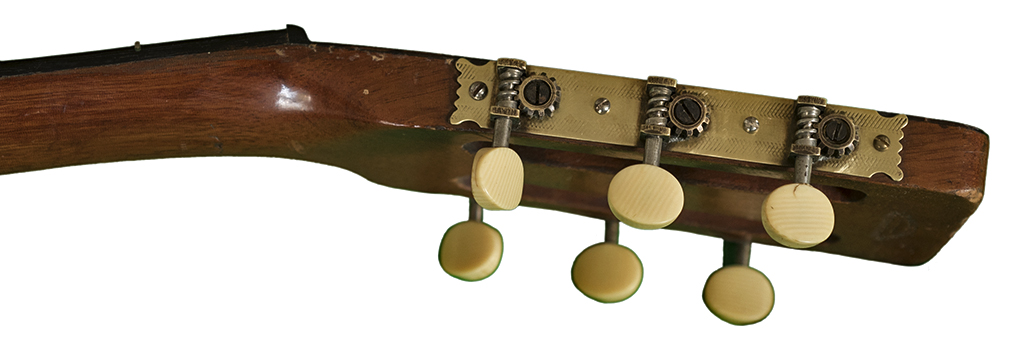
Martin /1916 Ditson Model 1 Dreadnaught Guitar
With the advent of interest in Hawaiian music and
culture in the teens, Martin made their first Hawaiian guitars
for the Ditson Stores and the Southern California Music
Company.
Ironically, Martin chose to move from X bracing to
fan bracing for these first production guitars made by Martin
for steel strings.
The earliest Dreadnaughts were built in three
sizes, the "Standard" size 1, the "Concert" size 11, and the
"Extra Large" size 111, which became the Dreadnaught of
today.
With three quality levels, these became the 1, 2,
3, 11, 22, 33, and 111. A 222 and 333 was never built for
Ditson.
This early example is a Ditson Style 1, the
smallest of the "Dreadnaught" shaped guitars
From the second batch of Ditson "Standard" Style 1
guitars.
Stamped October 24,
1916
Excellent original condition.
Added bridge plate cap
which could easily be removed with fine original bridge plate
intact underneath.
Ditson Serial Number 118.
- SOLD -
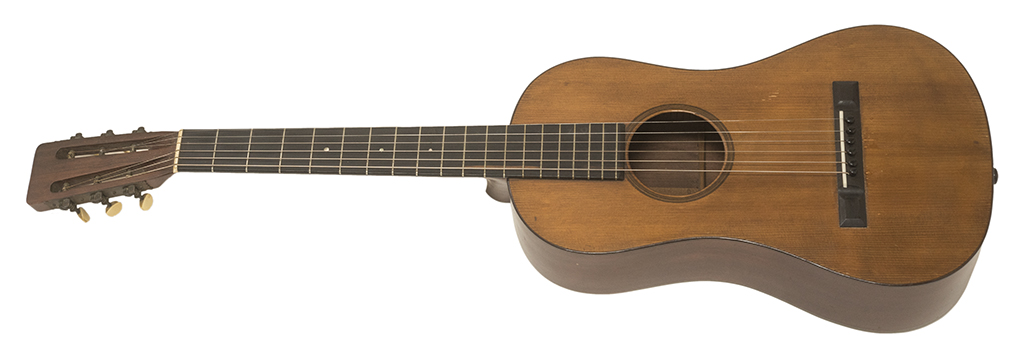
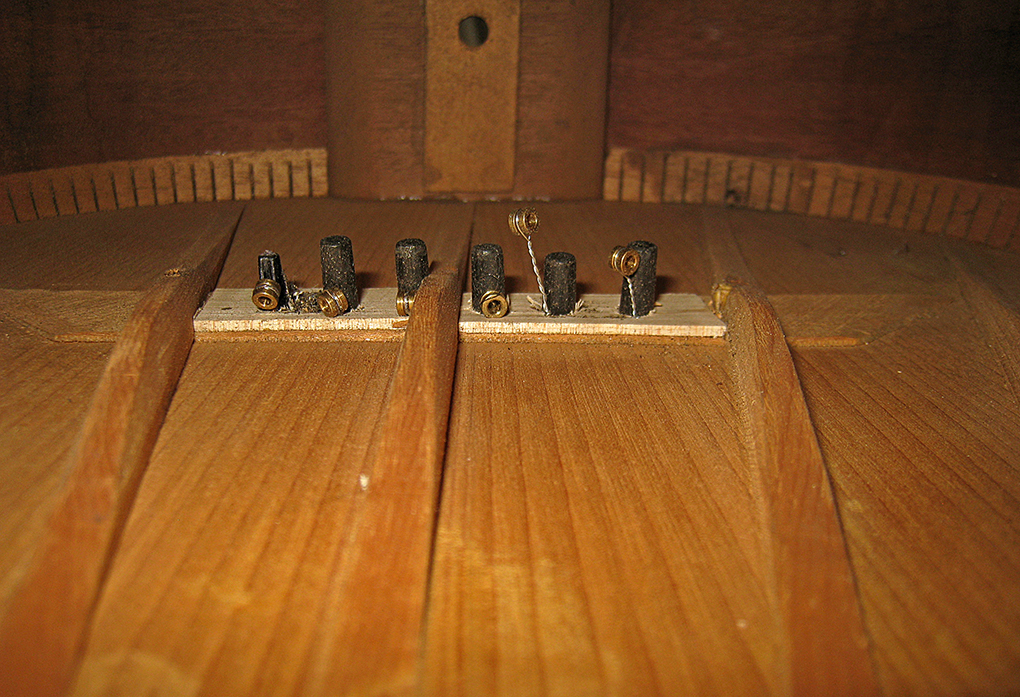
Martin /1916 Ditson Model 2 Dreadnaught Standard Guitar
Immaculate early example of a Model 2 Ditson
Standard Size Guitar
Serial #144
From the third batch of Ditson "Standard" Style 2
guitars.
Stamped December 4, 1916

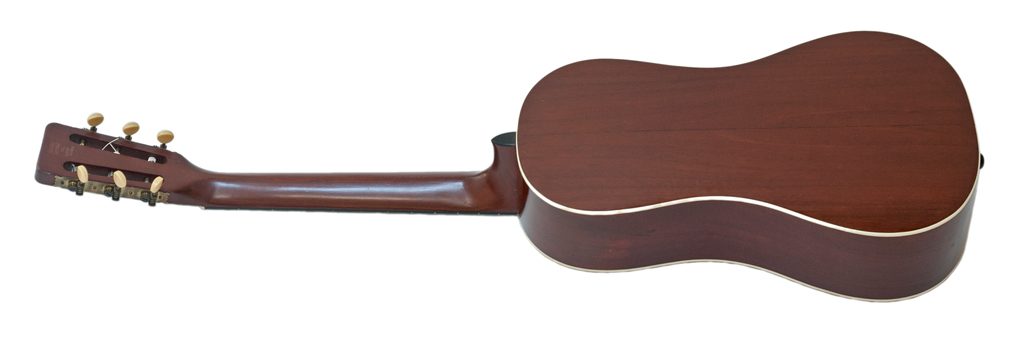
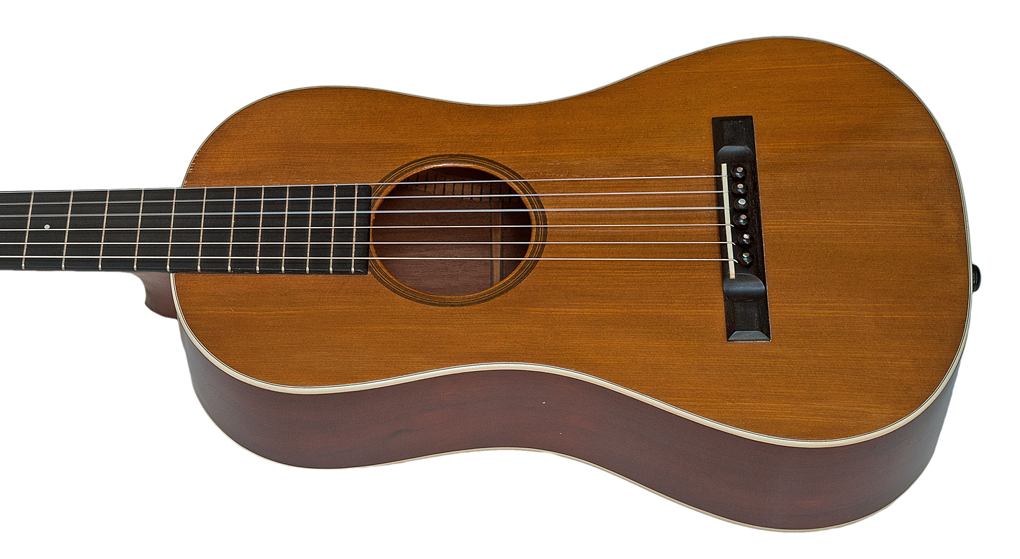
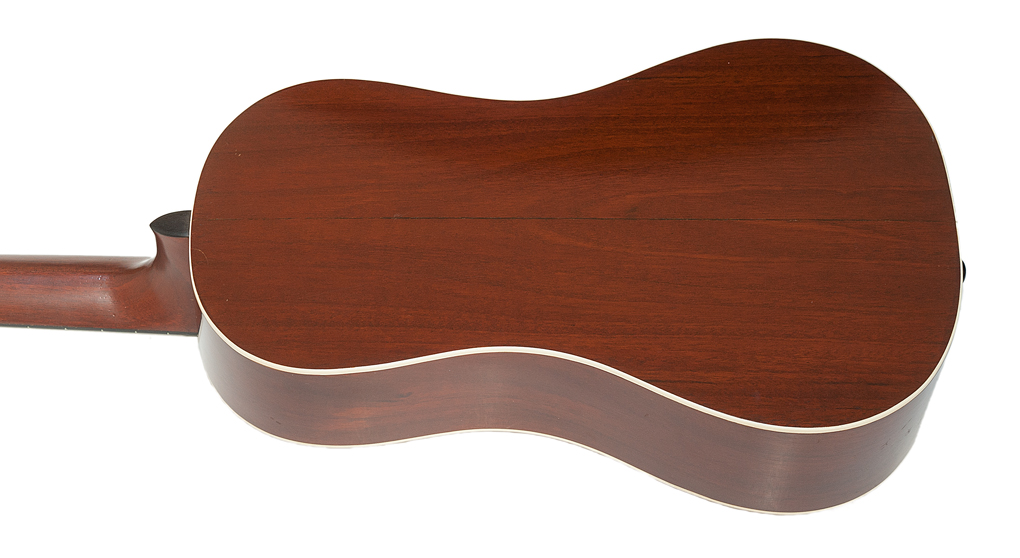
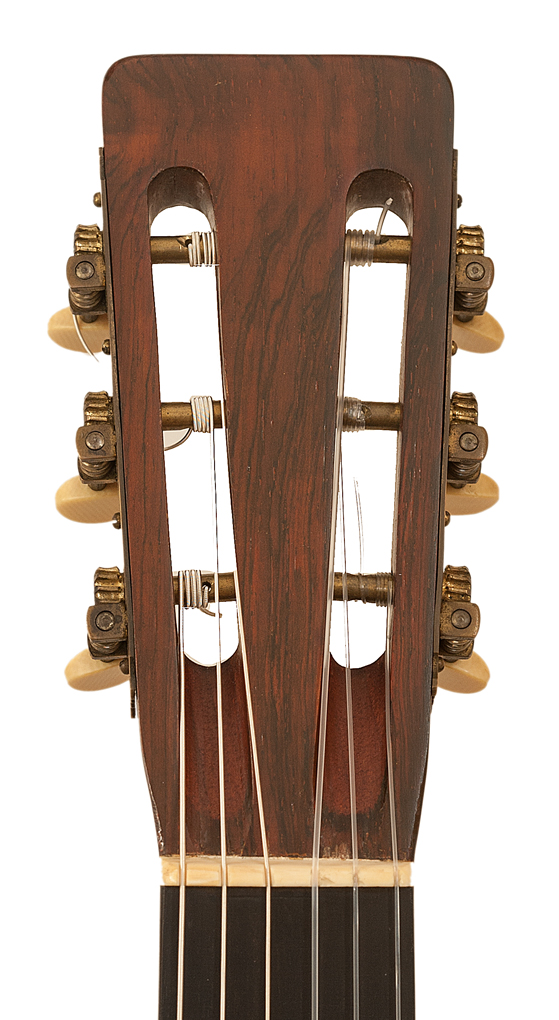
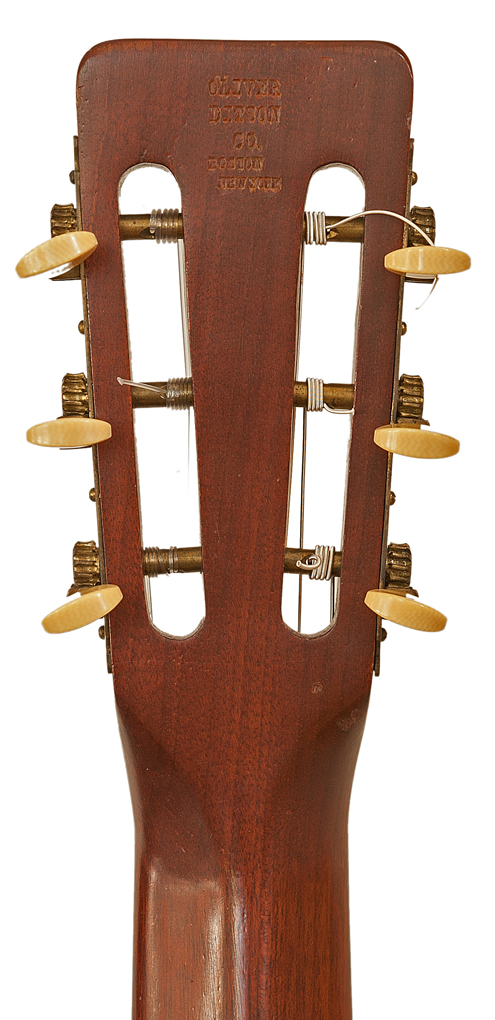
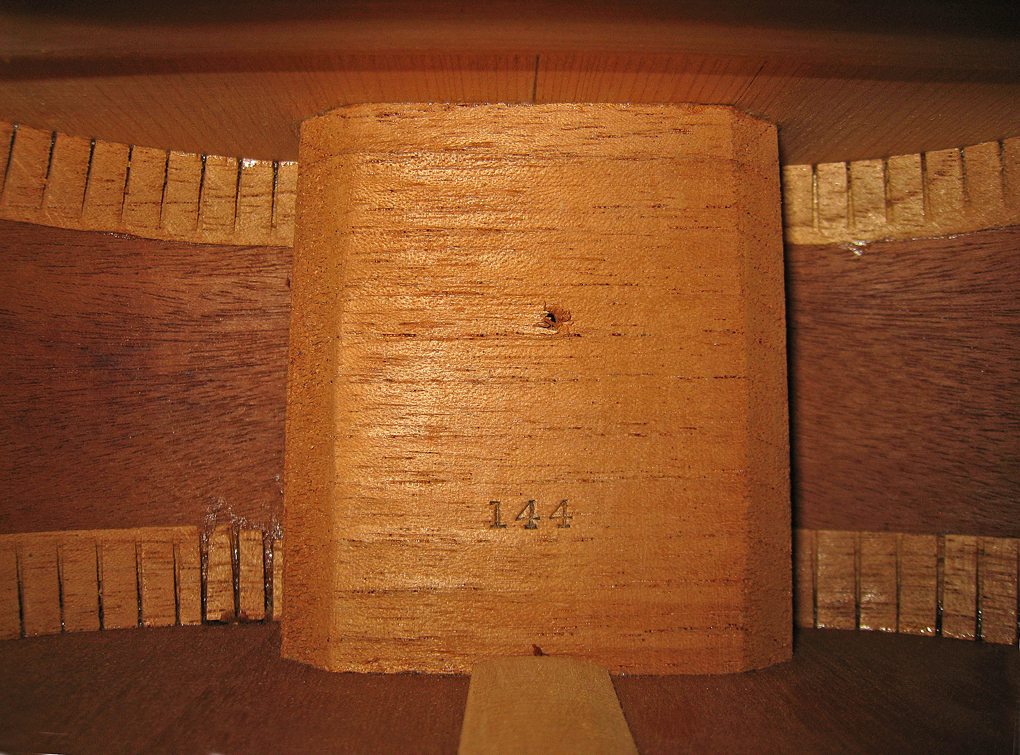
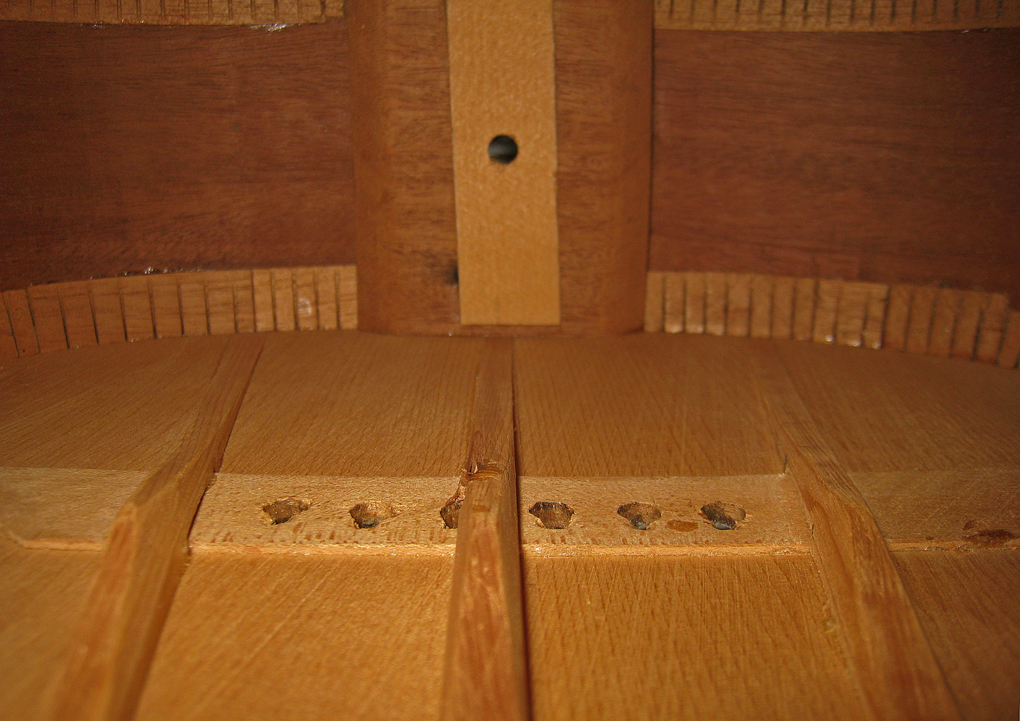
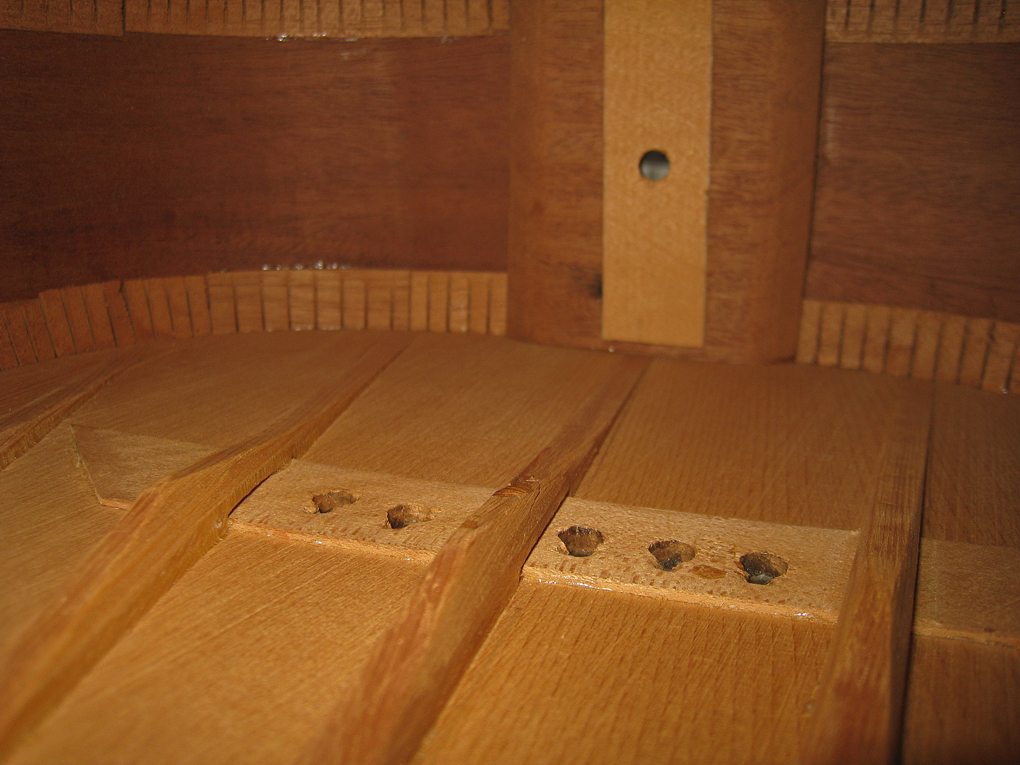
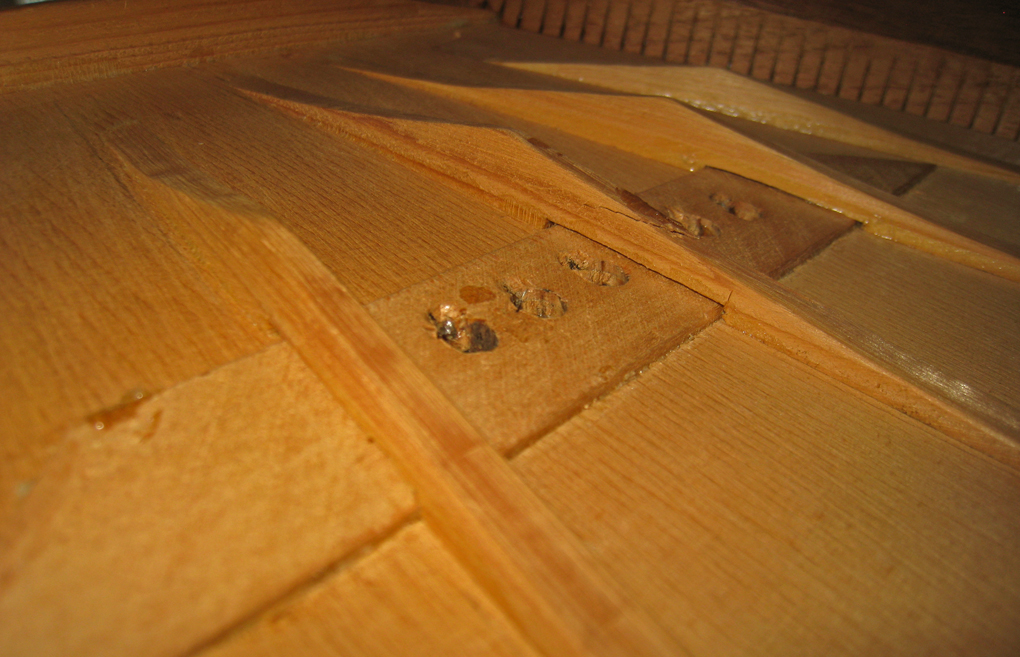
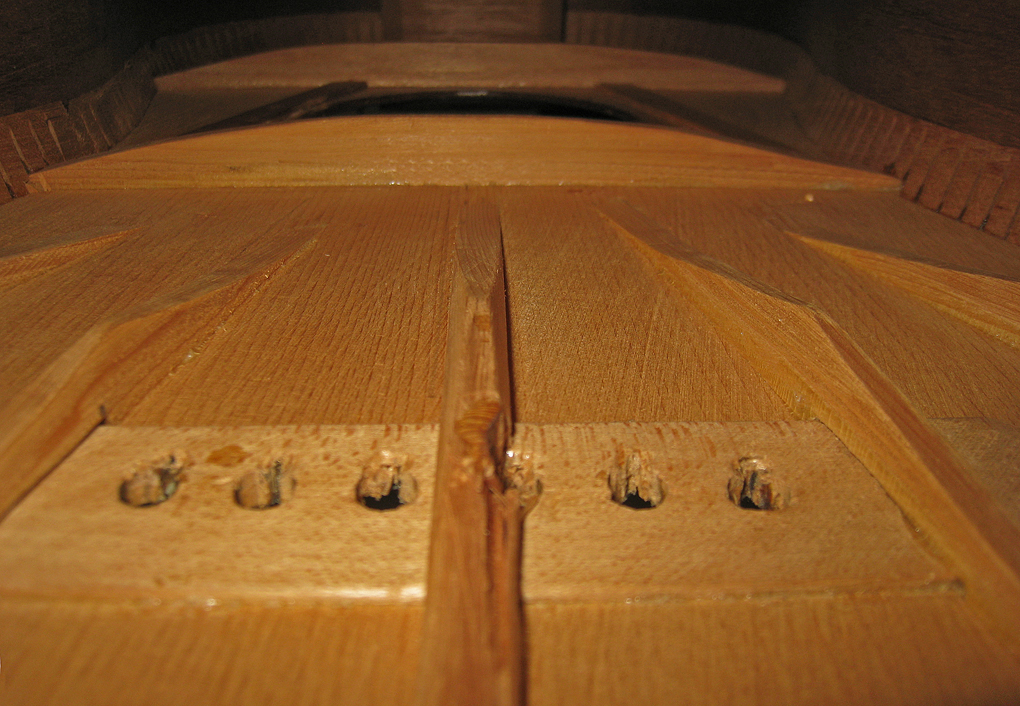
Martin 1907 0-30
A very desirable model, the 30 series Martins are my favorite
model of the 20th century.
A carryover from the 1800's, the Style
30 combines a pearl rosette with large snowflake inlays and
the beautiful top marquetry and arrowhead back strip seen in
earlier days.
This guitar even has the genuine ivory
binding "to the nut" as Martin said in the old days, which
runs along the fingerboard to the headstock.
The genuine ivory was replaced by
"Celluloid" just a few years later.
Very good condition with tight top cracks and properly
repaired top under bridge to correct pin hole wear.
Includes a new reproduction pyramid bridge.
String height 2/32" on both the
1st and 6th strings at the 12th fret.
- SOLD -
I've cleaned the top and begun
to touch up the area of the larger footprint, clean out
a couple of the larger dark cracks, and carve a new
ebony pyramid bridge.
The footprint need a few more
layers of finish to match the rest of the top, the
cracks need to be filled, and the new bridge need pin
holes and a saddle.
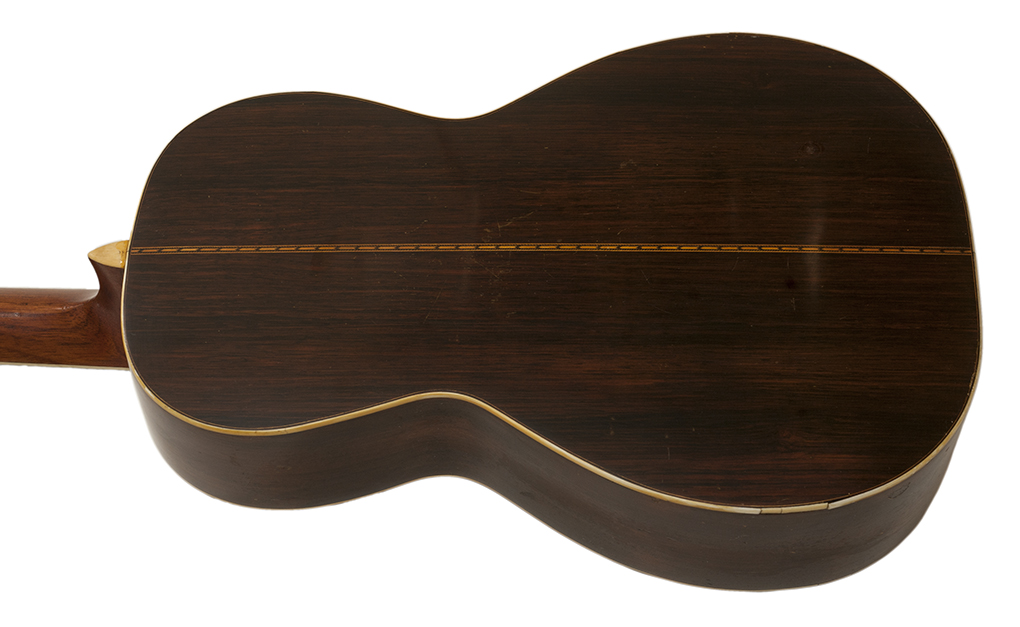
This guitar has one of my
favorite arrowhead backstrips, one of the most tasteful
I've seen on any Martin...
String height 4/32" on the 6th
string, 3/32" on the 1st string at the 12th fret.
Installing proper exact
reproduction pyramid bridge.
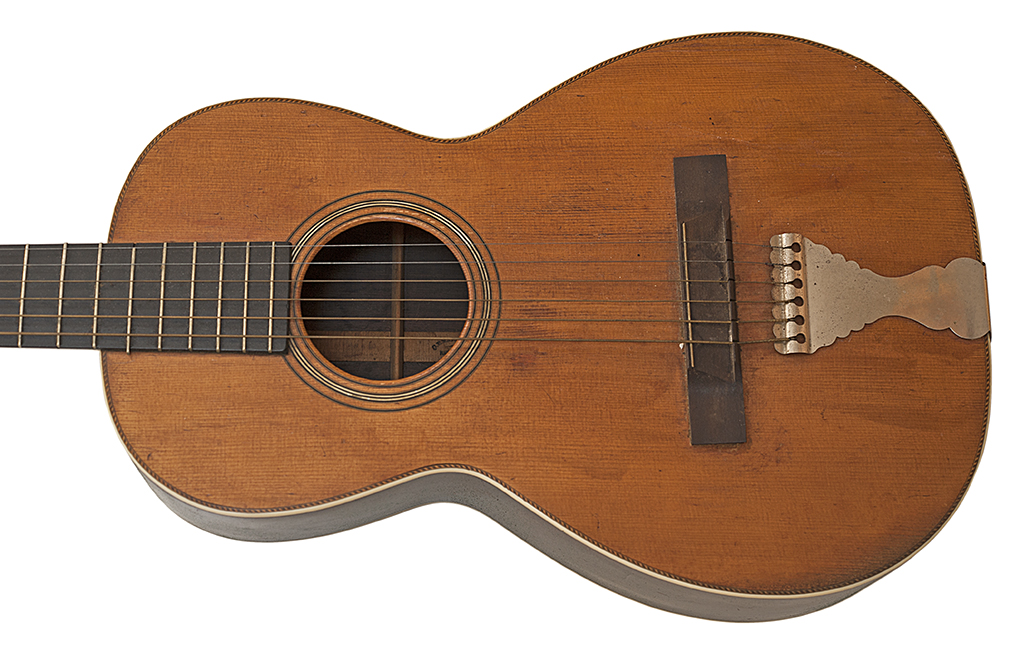


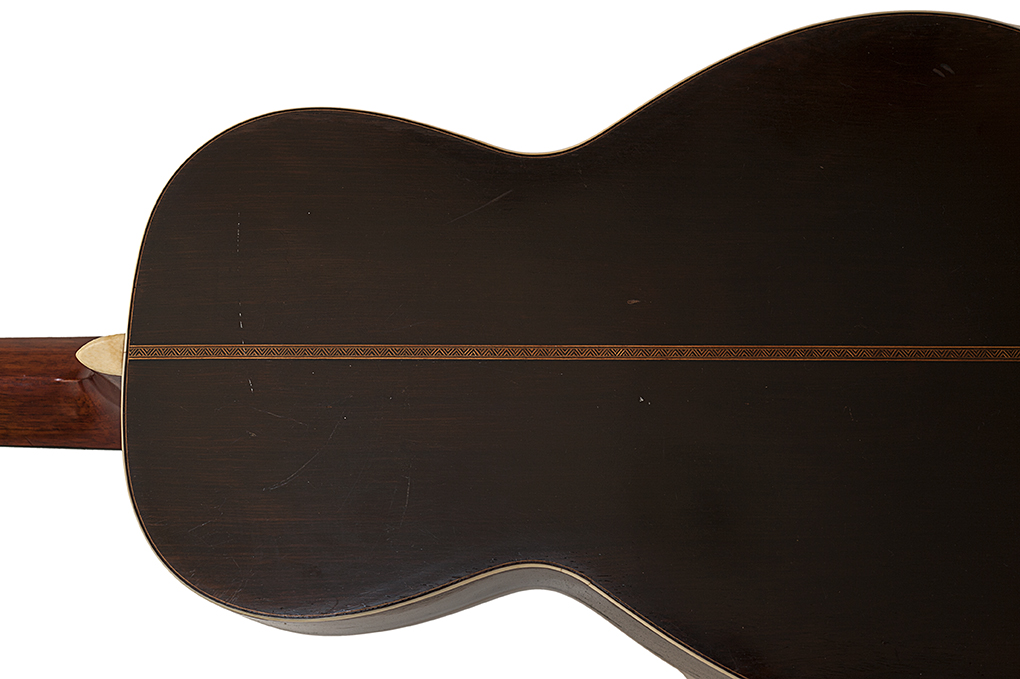
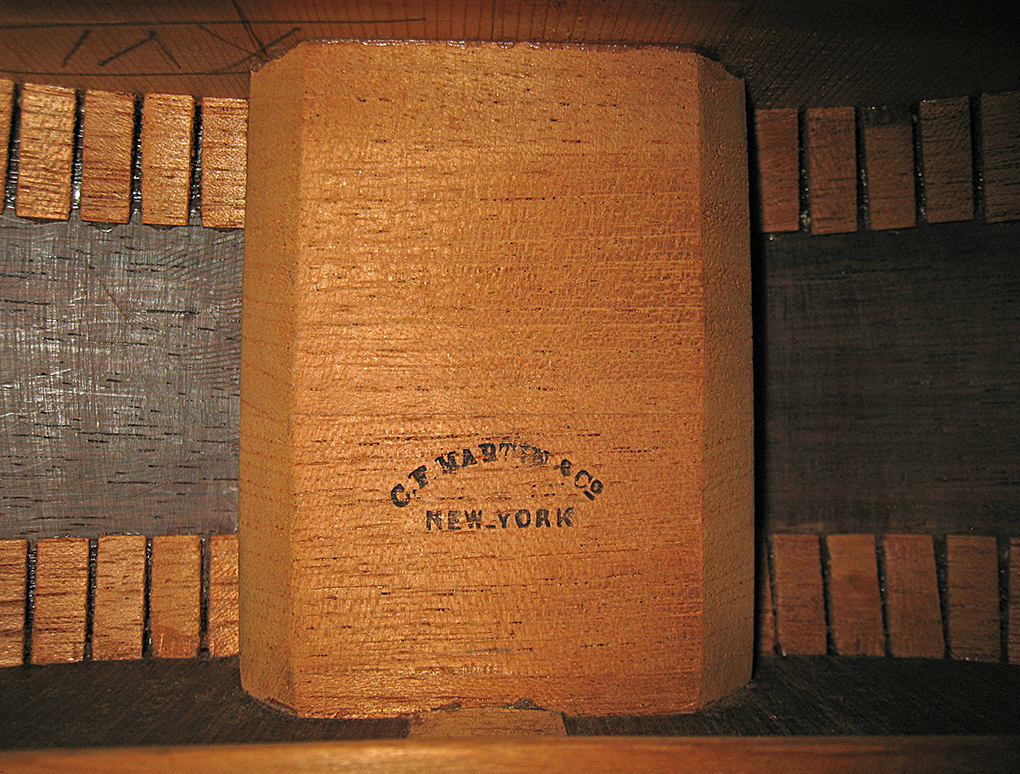
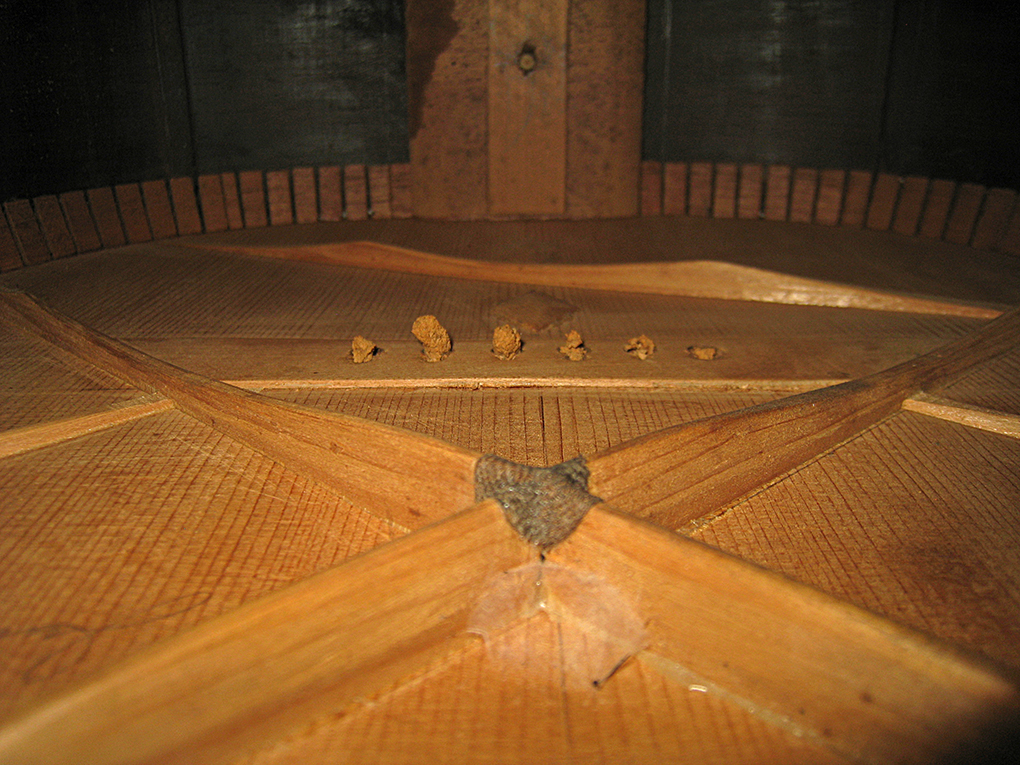
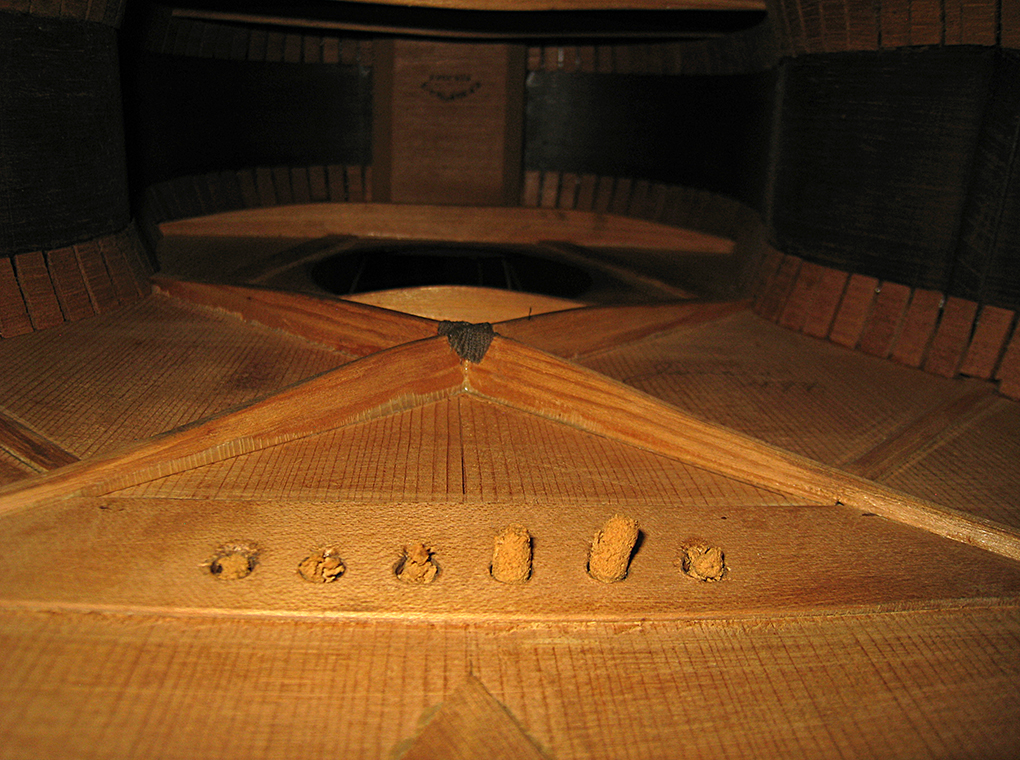
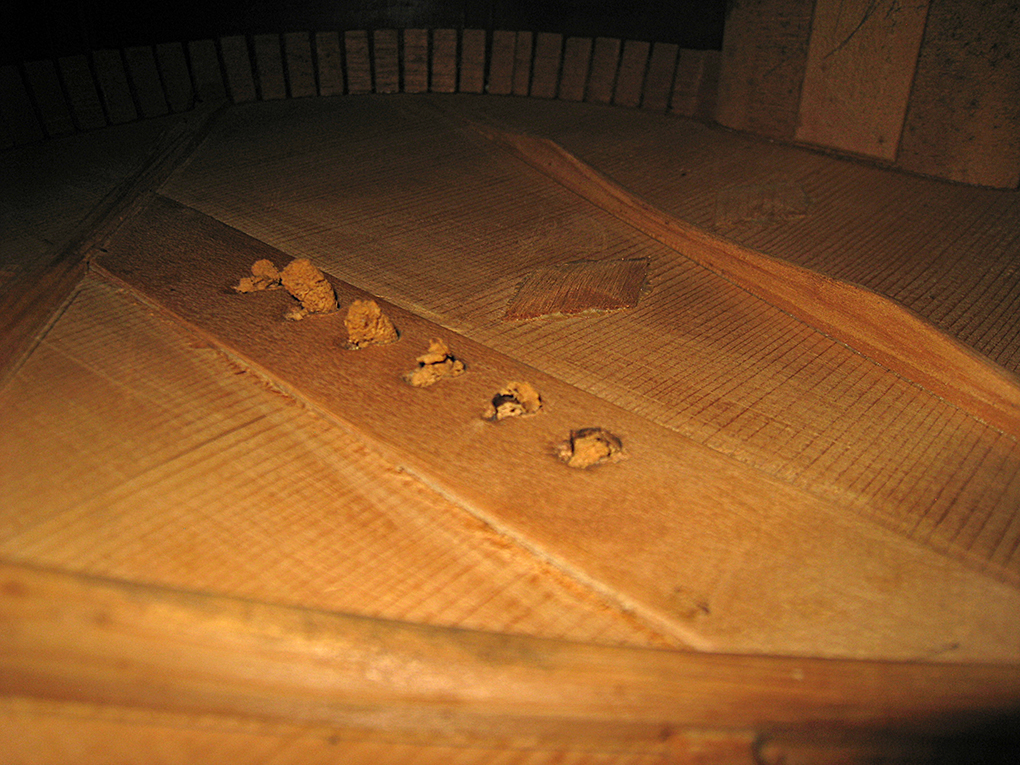
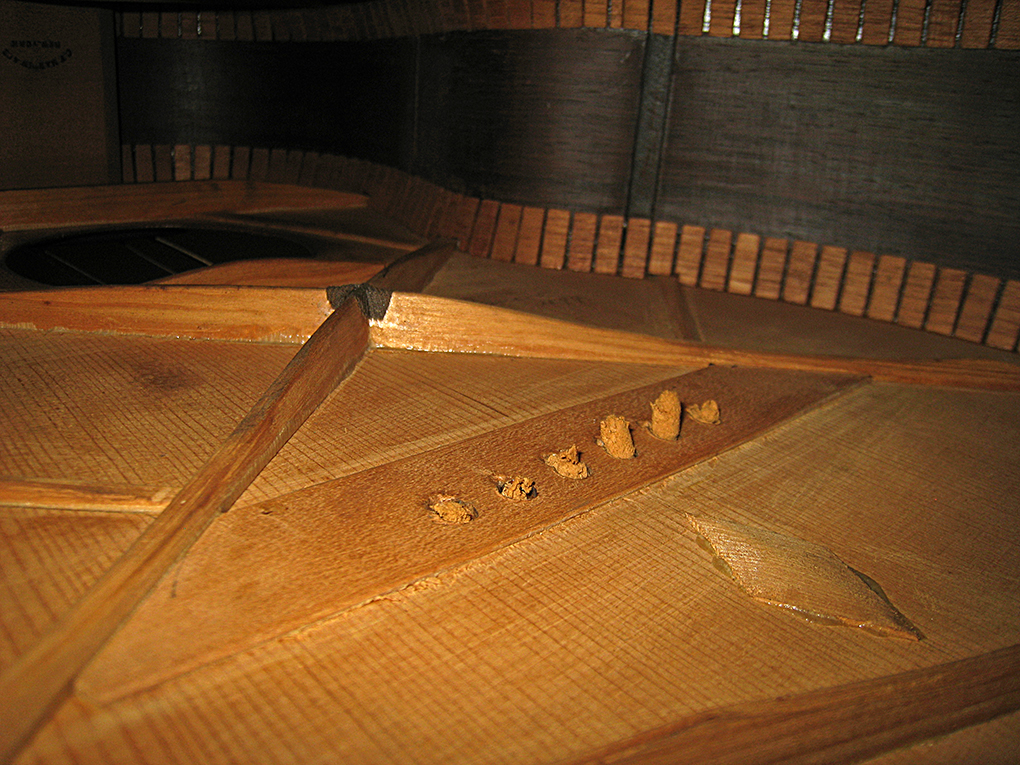
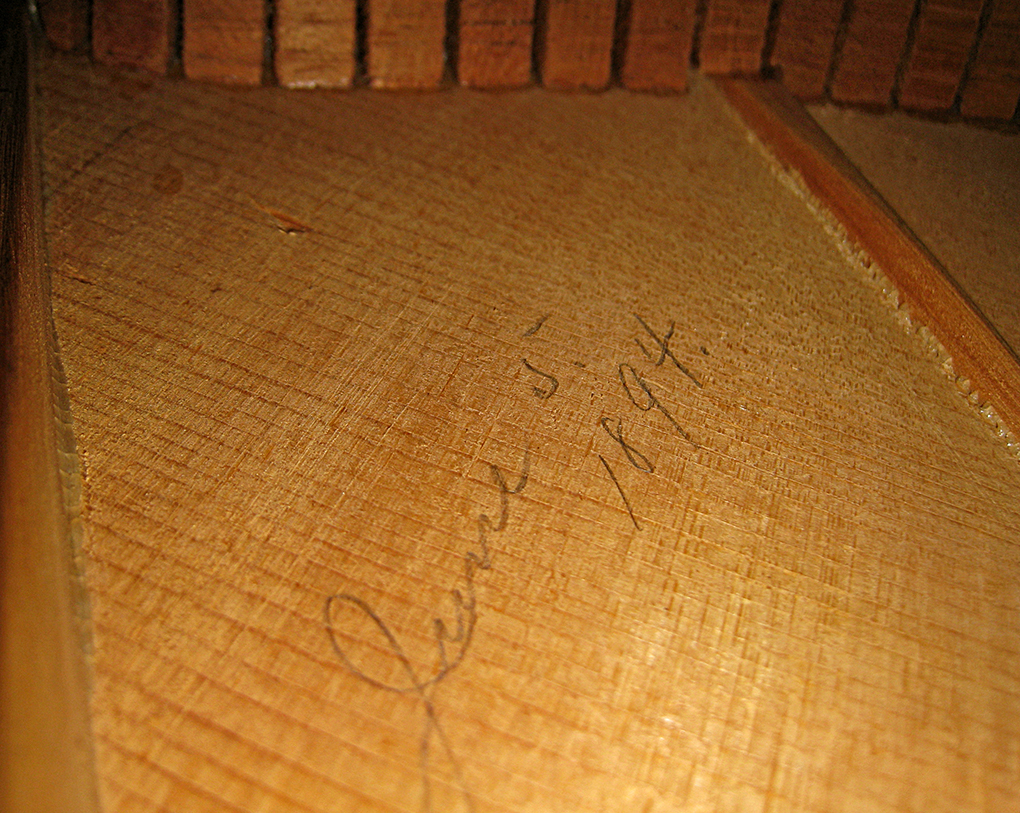
1870's
Martin 1-28
All original in fine
condition
Choice "Adirondack" Eastern
red spruce top with herringbone marquetry and ivory
bindings, Brazilian rosewood back and sides, ebony
fingerboard and pyramid bridge. Original hard to
find Seidel tuners with ivory buttons.
Very good original
condition.
String height 2.5/32"
on both the 1st and 6th strings at the 12th
fret.
1840's Martin 1-28 with Pearl
An historically important
instrument. It has long been believed that the first
Style 28 Martins had a pearl rosette. This is a rare,
difficult to find example of such an instrument.
In nice original condition, with
Jerome tuners and 1840's nickel silver nut.
String
height 3.5/32" on the 6th string, 2.5/32" on the 1st
string at the 12th fret.
- SOLD -
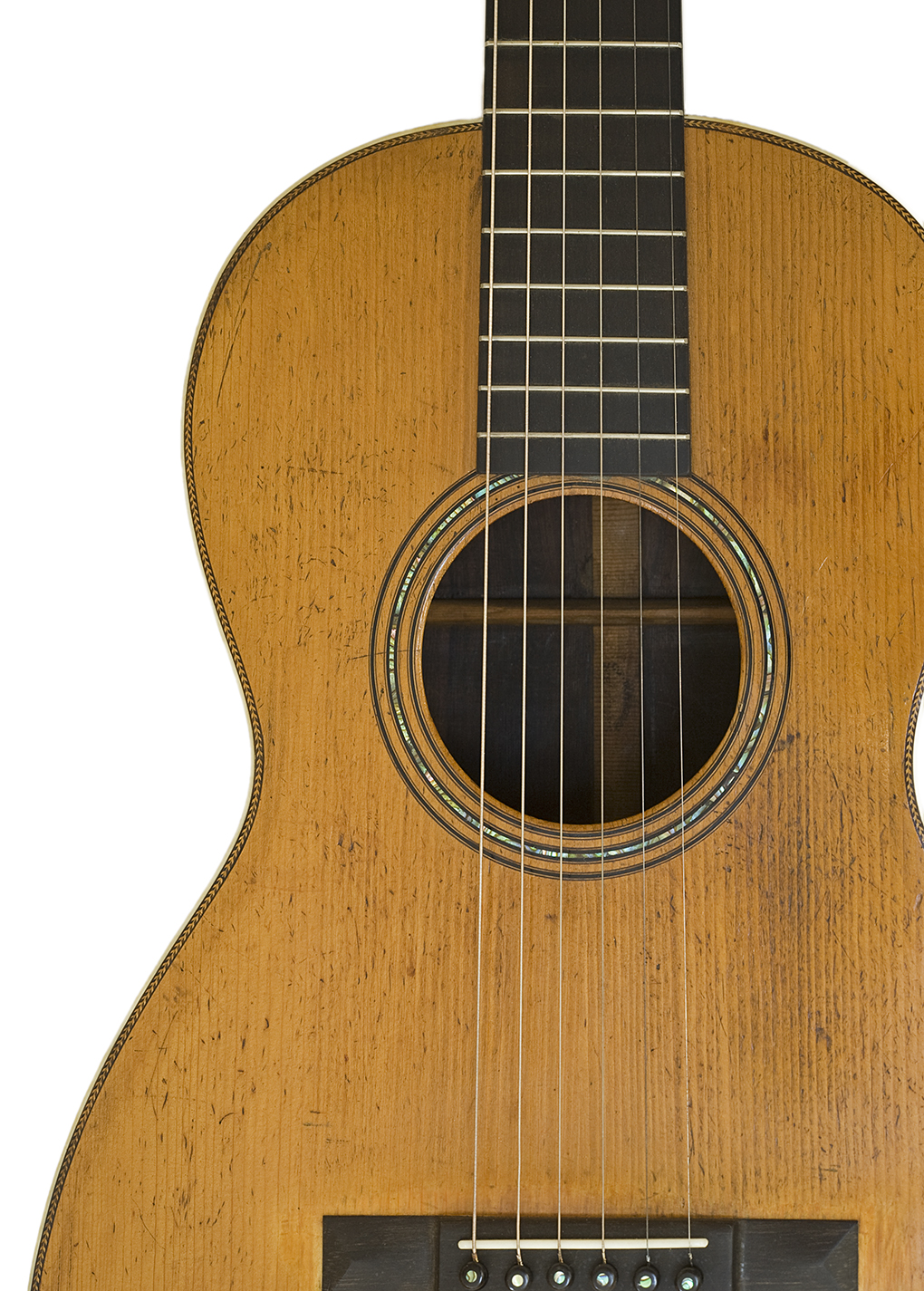
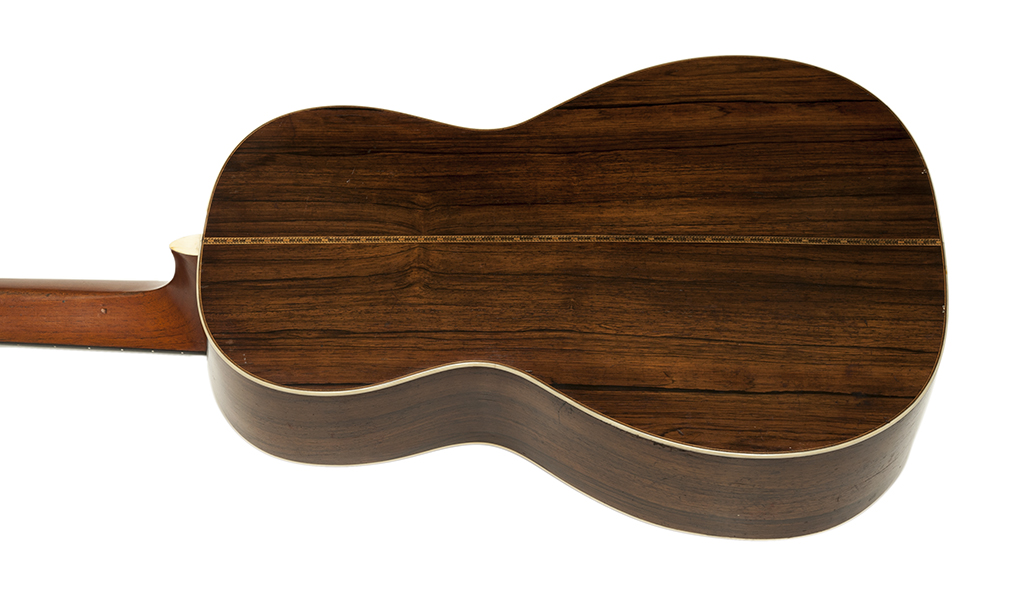
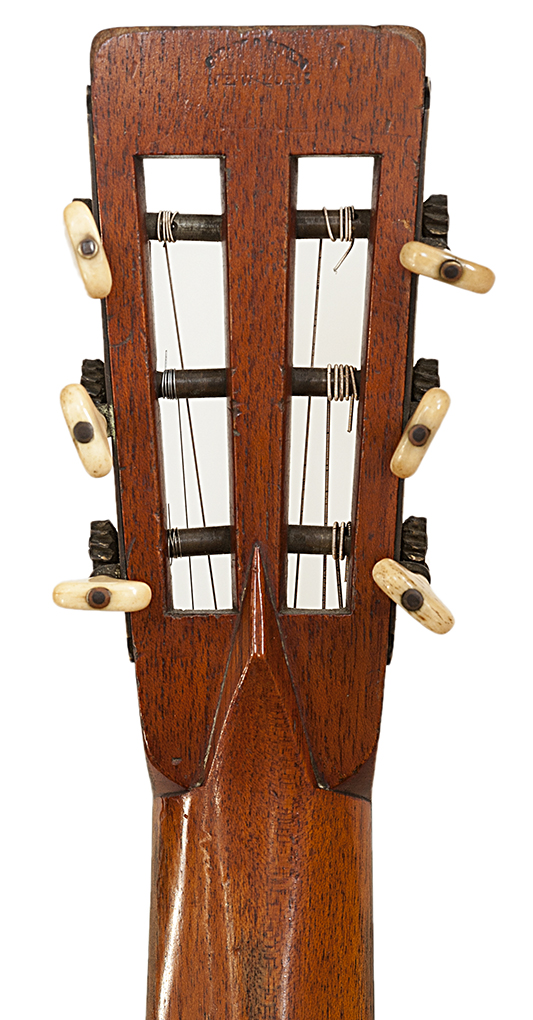
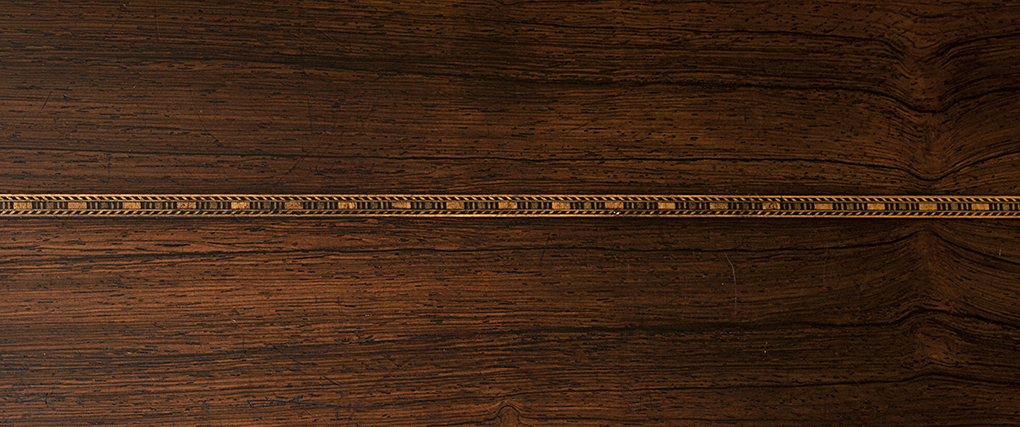
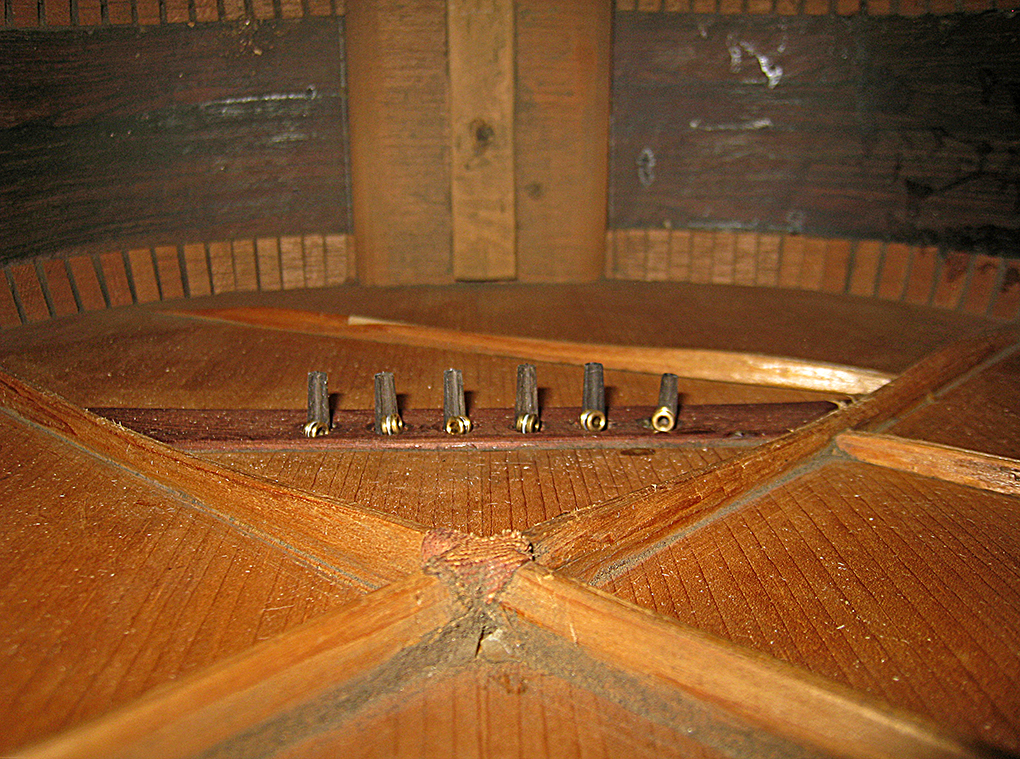
Martin 1860 2-27
Early "pre-corporation" example with spruce back
and rosewood veneer.
All original in excellent condition except for
extra pearl added to bridge and section of replaced spruce top
and marquetry.
Original "notched in"
bridge plate with added smaller rosewood cap which can be easily
removed.
Excellent string height of 2/32" on both the
1st and 6th strings at the 12th fret.
No serial number
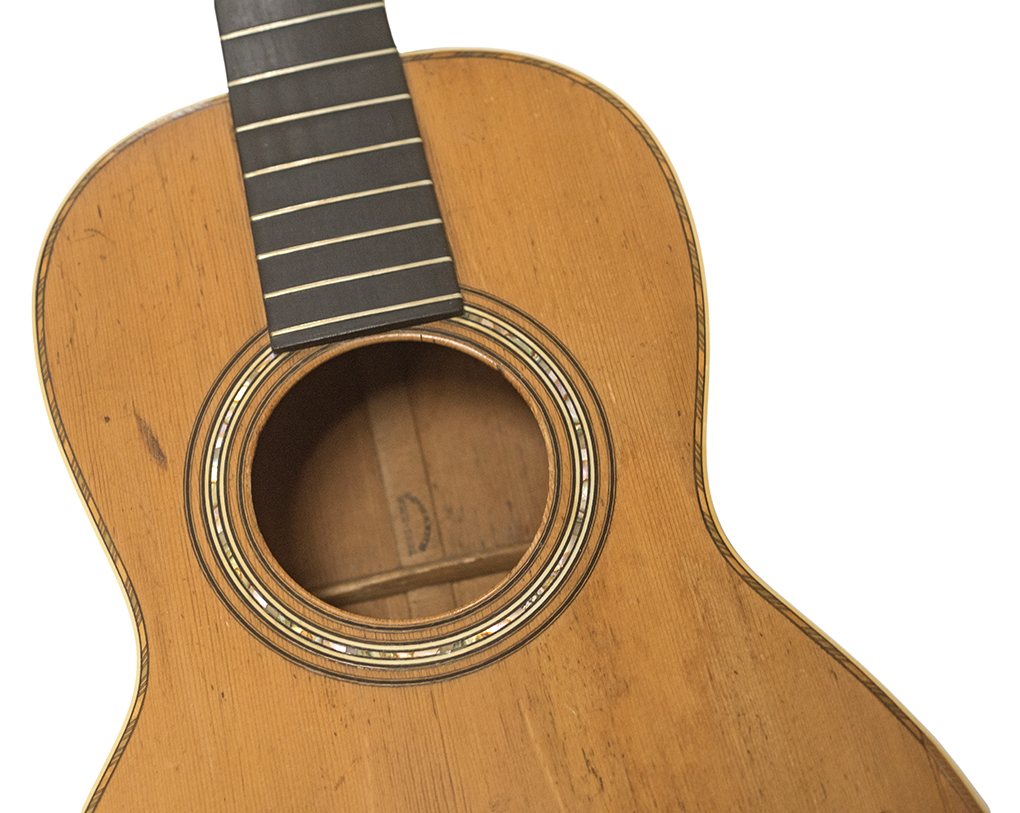
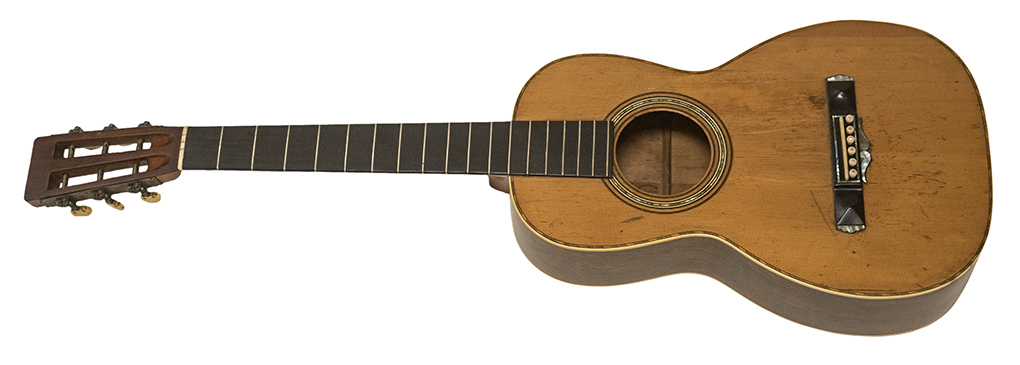


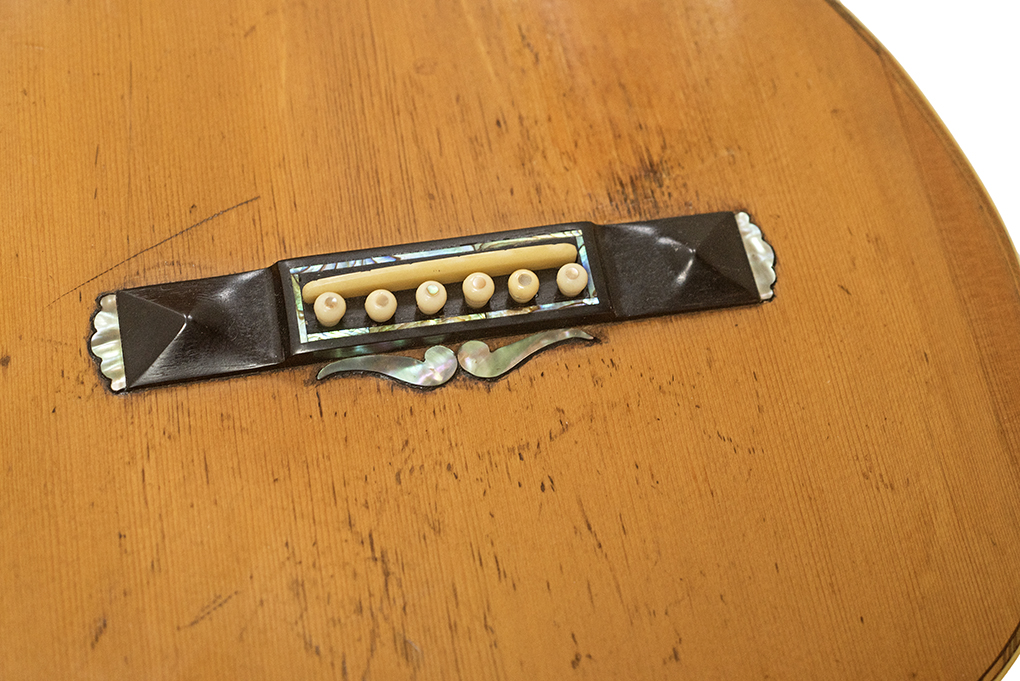

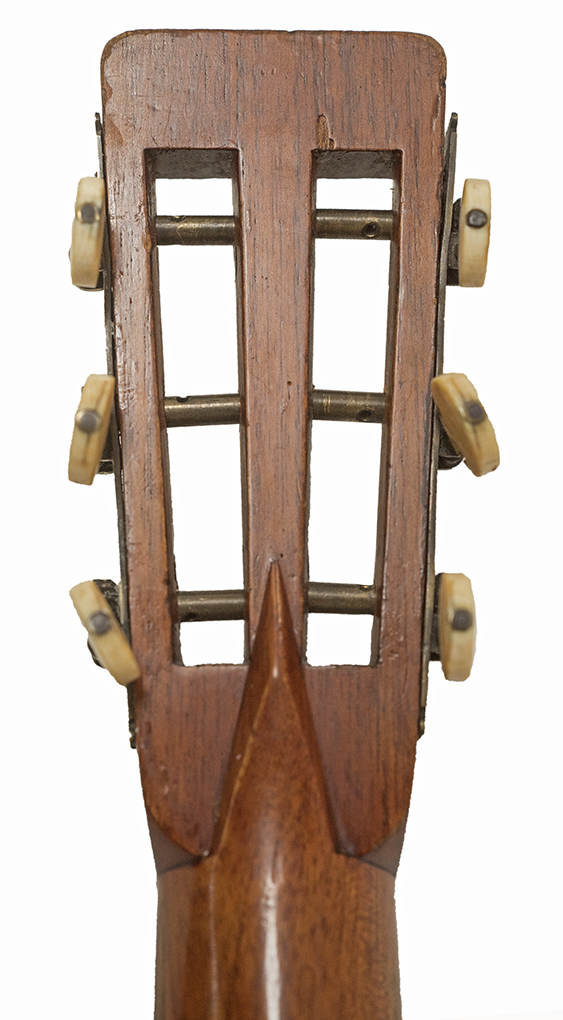
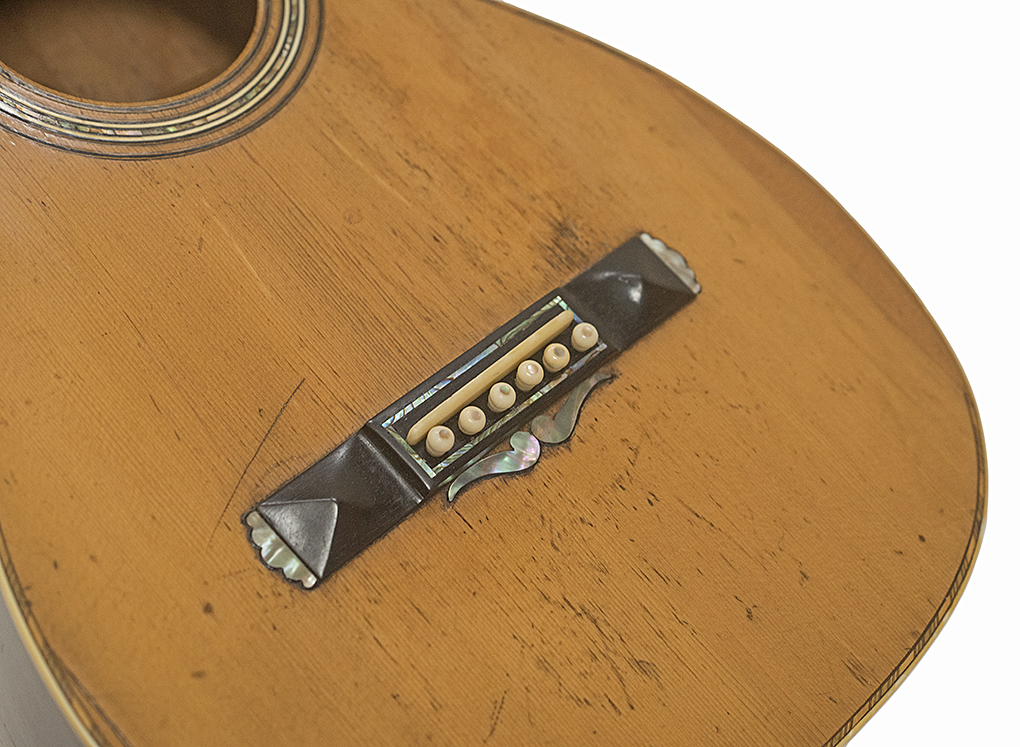


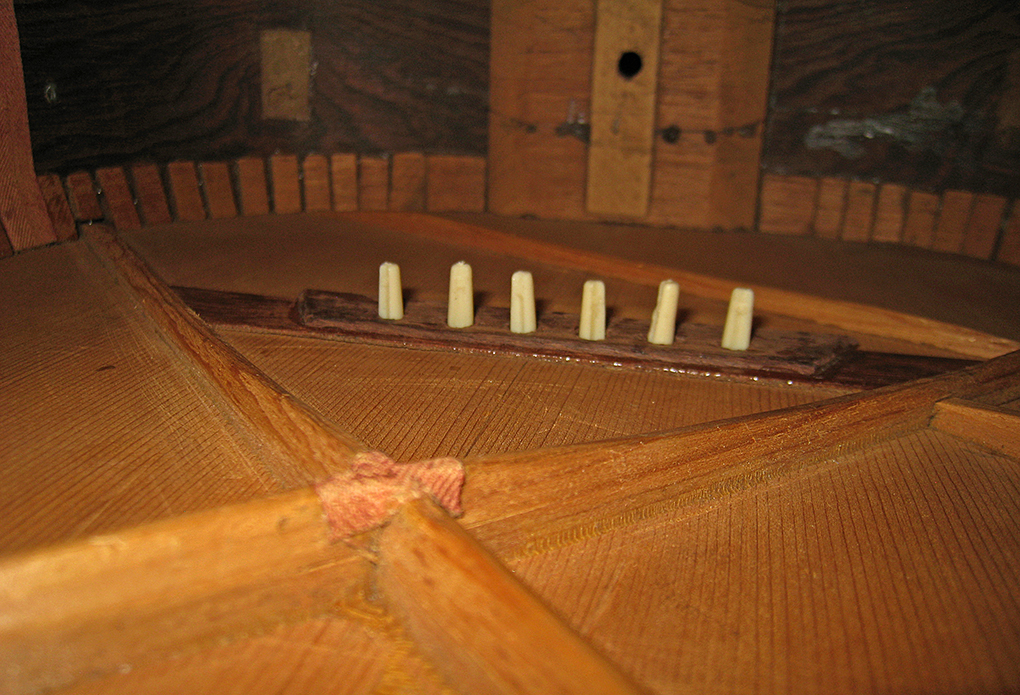
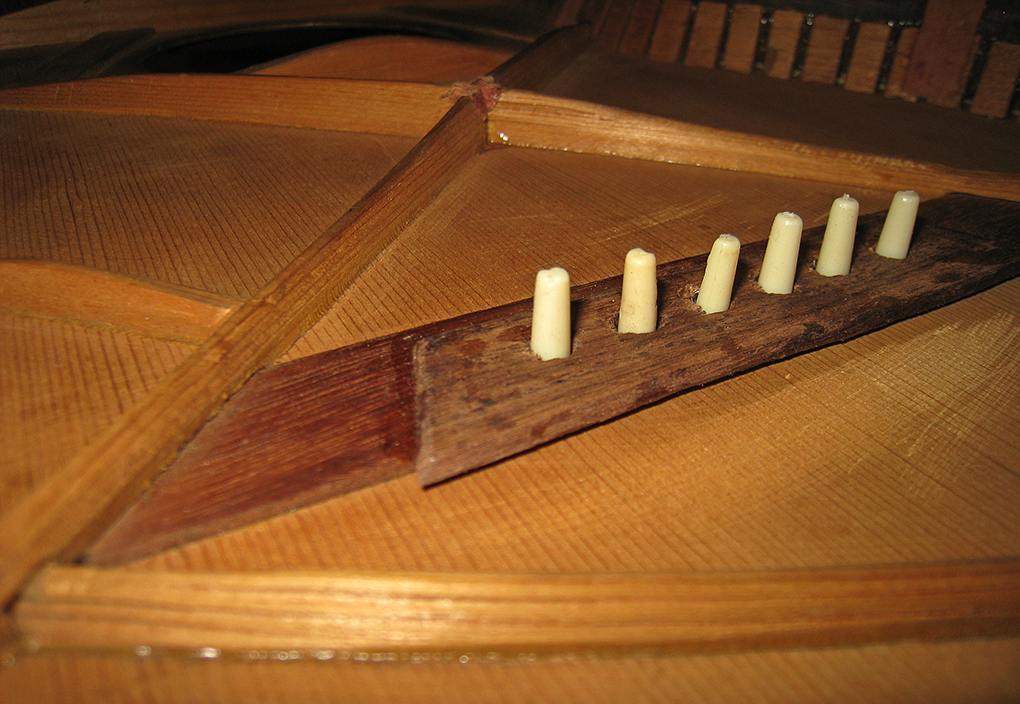
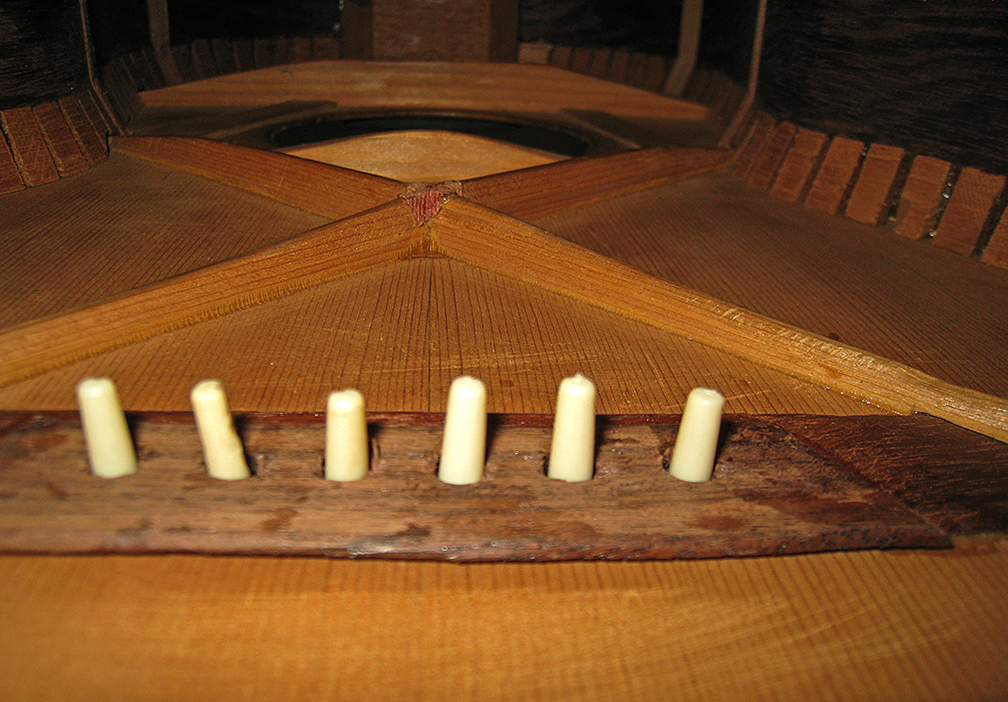 Martin 1860 1-21
New top finish and period correct reproduction pyramid bridge
being added.
Martin 1860 1-21
New top finish and period correct reproduction pyramid bridge
being added.
Perfect original
"notched-in" bridge plate.
String height 4/32" on both the
1st and 6th strings at the 12th fret.
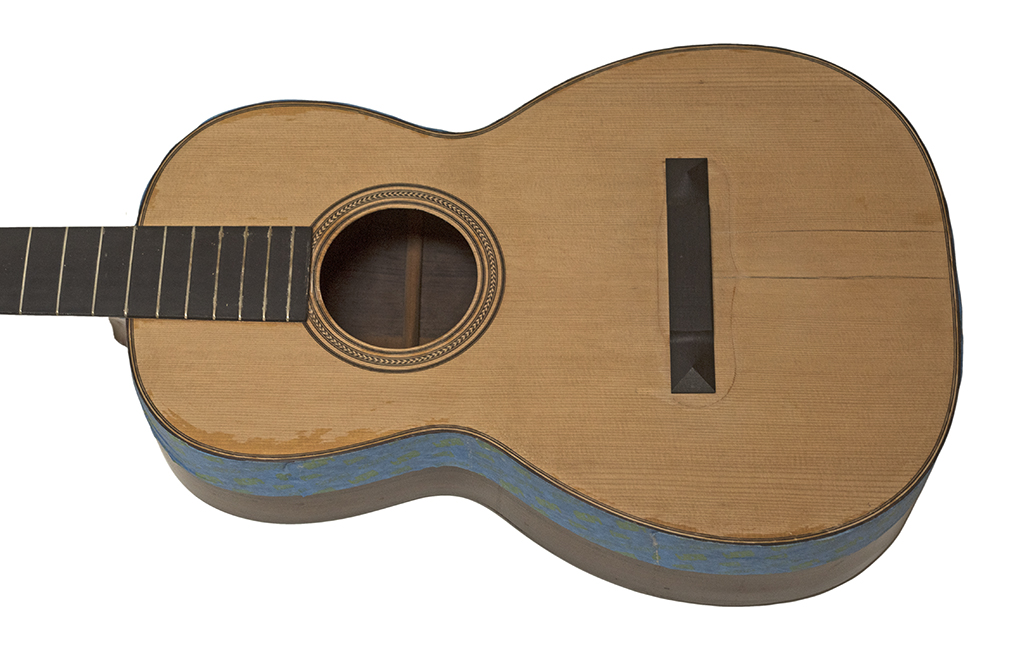
He was far ahead of his time with
regard to manufacturing and design. (He averaged 54 guitars per
month with usually less than ten men working in his shop.) The
quality of his instruments is superb.
He designed and manufactured his
own tuners, "T" style fret wire -- Martin didn't use "T" wire
until the 1930s! -- and employed a unique fan- braced body and
neck construction.
This is a standard size Ashborn Style 2, generally seen as the
most popular grade. This guitar has a distinctive bridge and
tuners that complement the Rosewood veneer over spruce back and
beautiful Rosewood clad neck.
With original coffin case, also made by Ashborn in his Connecticut
factory.
Two 5” non-structural cracks on back veneer repaired with cleats,
five top cracks, good playable condition.
3/32" string height at 12th fret.
1 13/16" neck width at nut.
2 lb. 4.8 oz.
Serial number 5770.
Only $3,500!
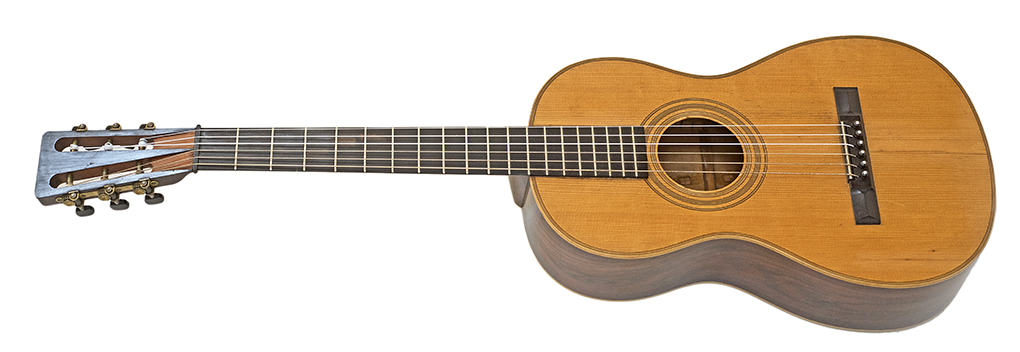
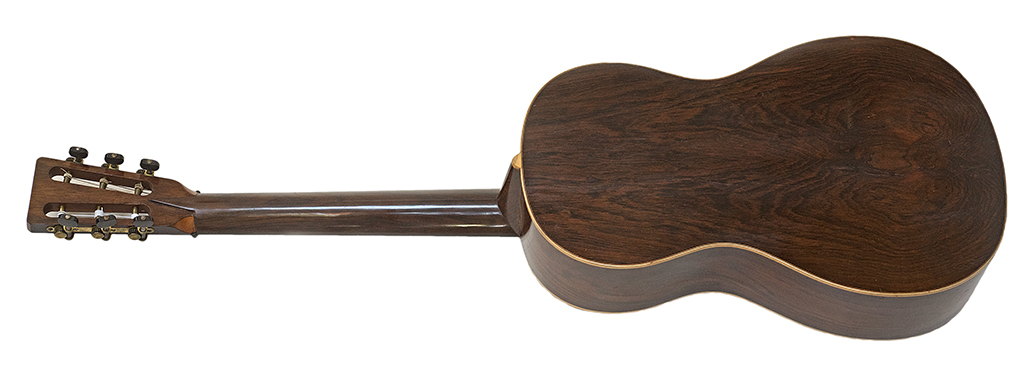

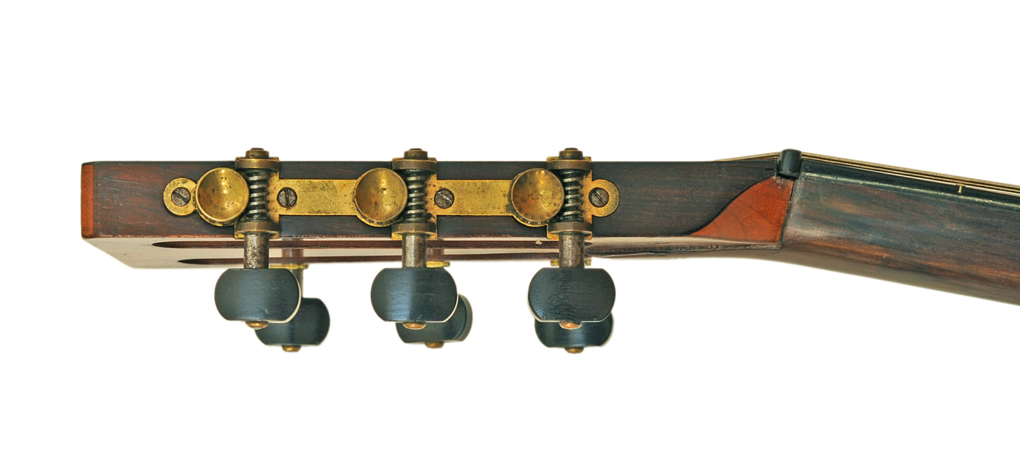
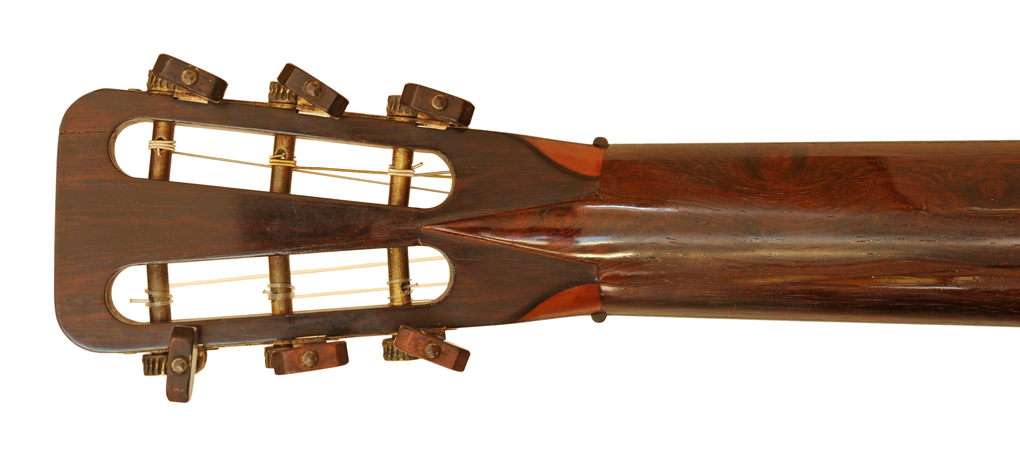
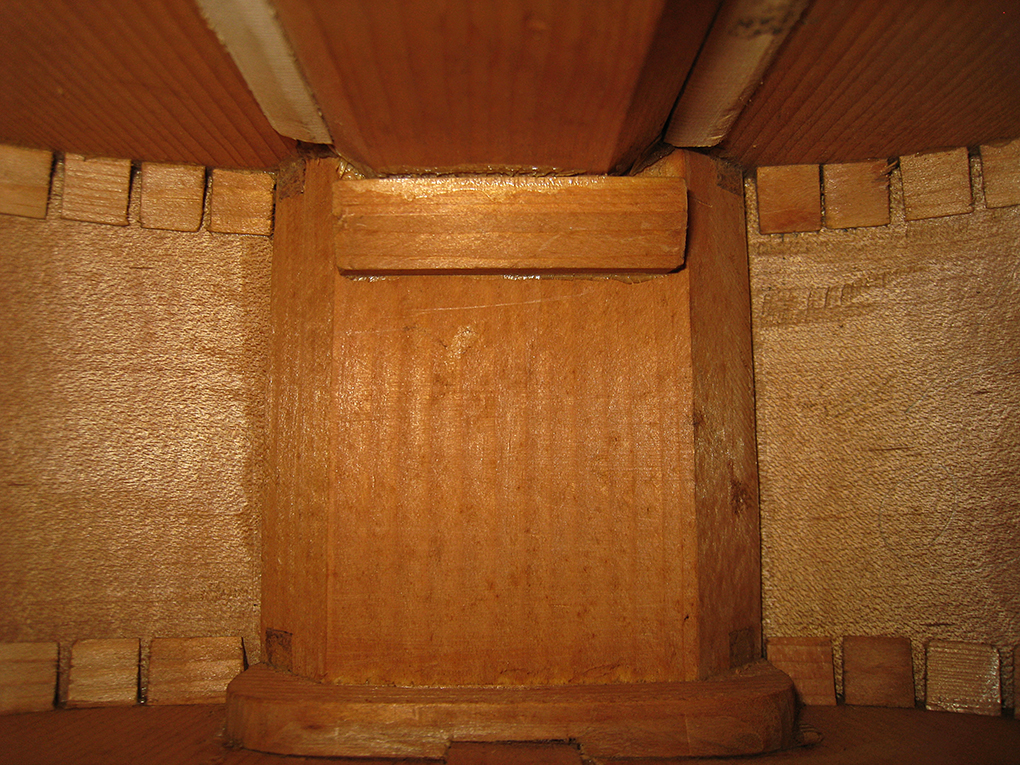
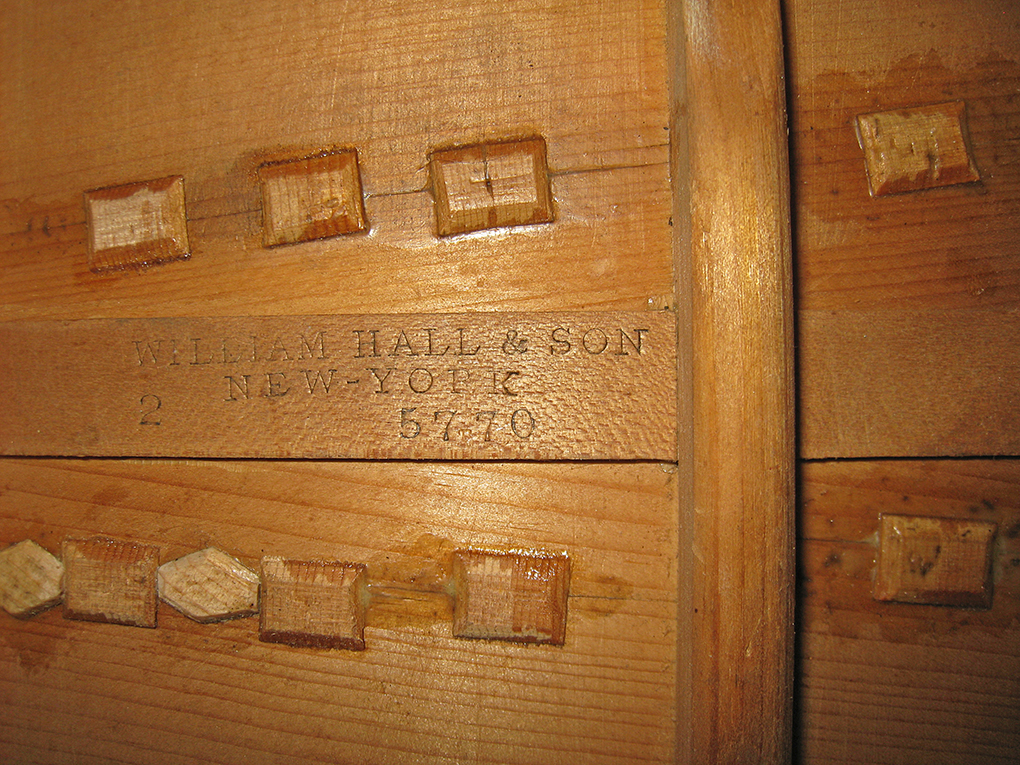
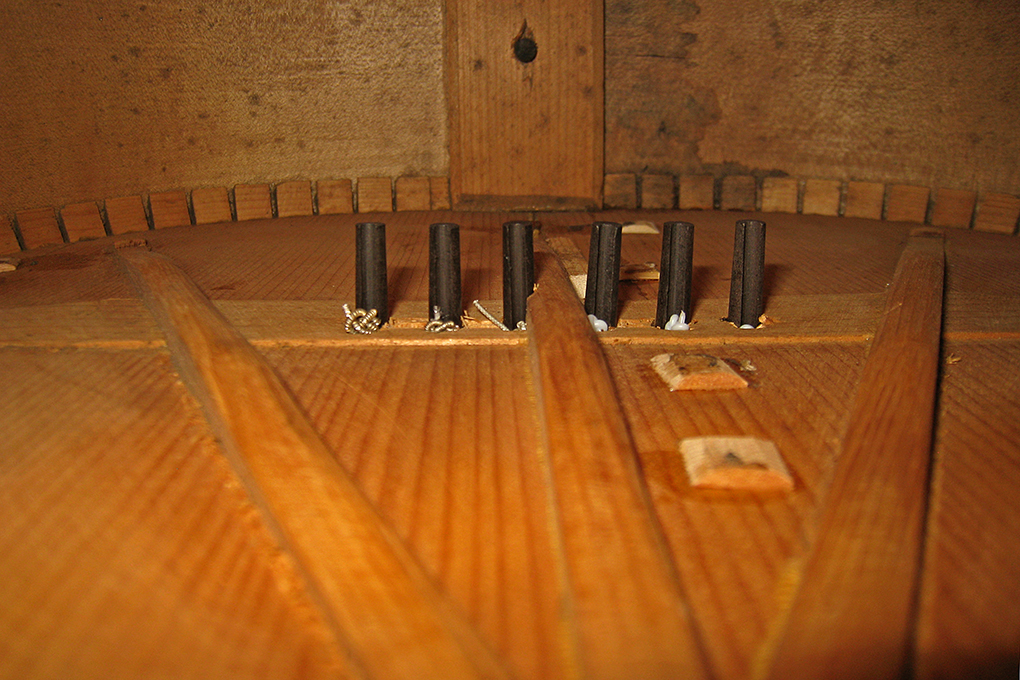
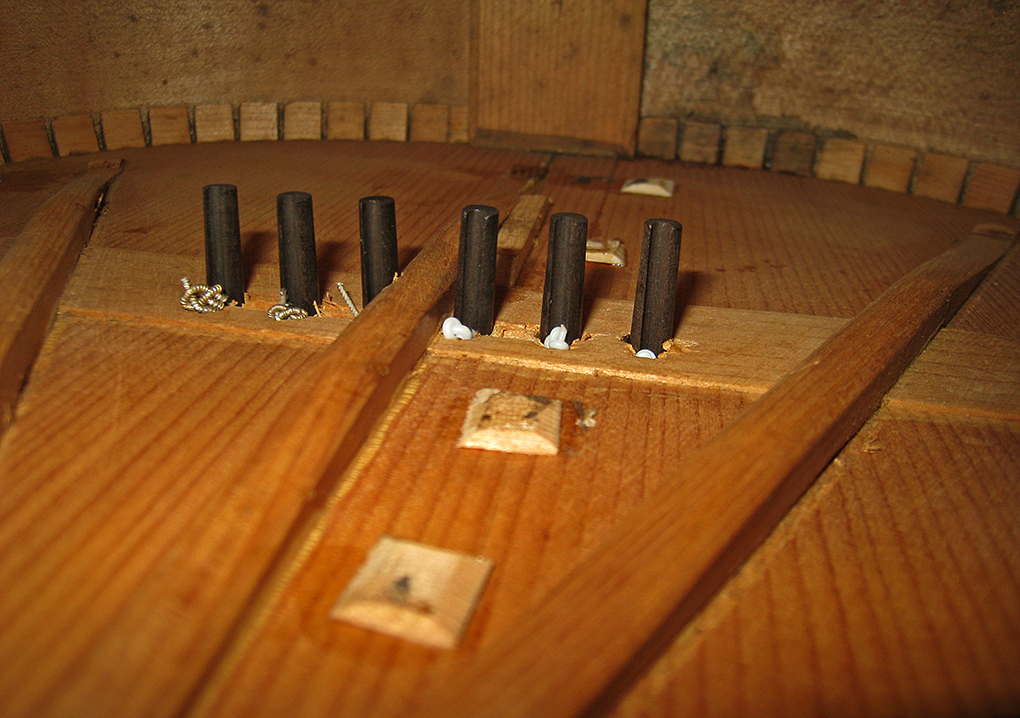
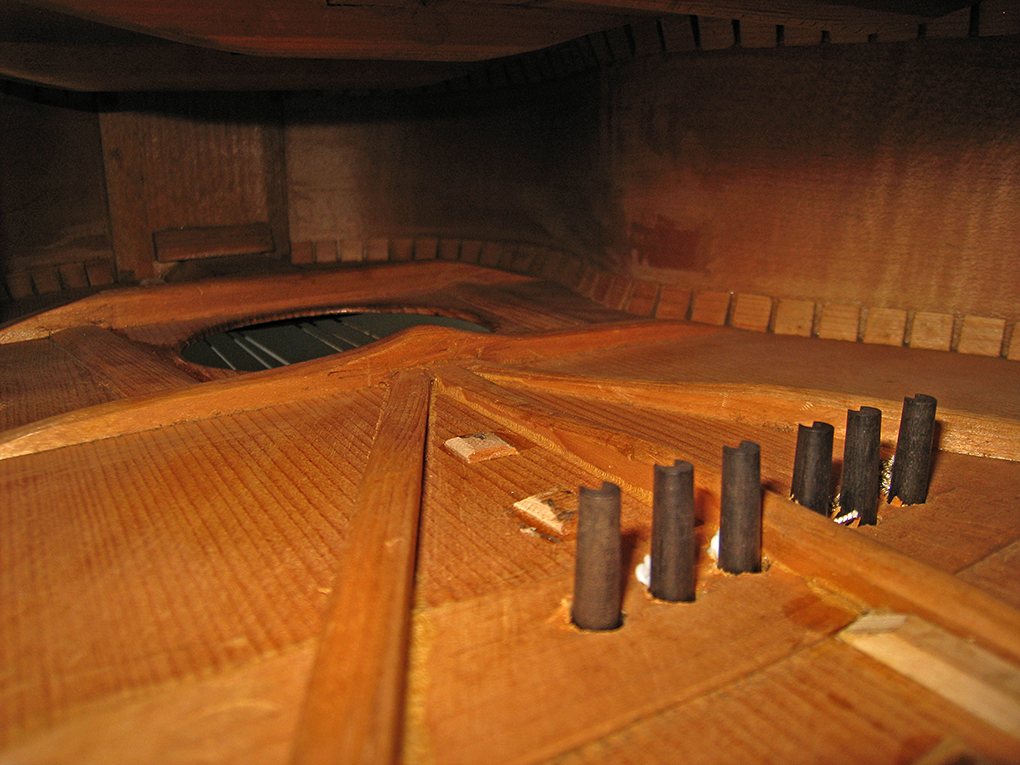
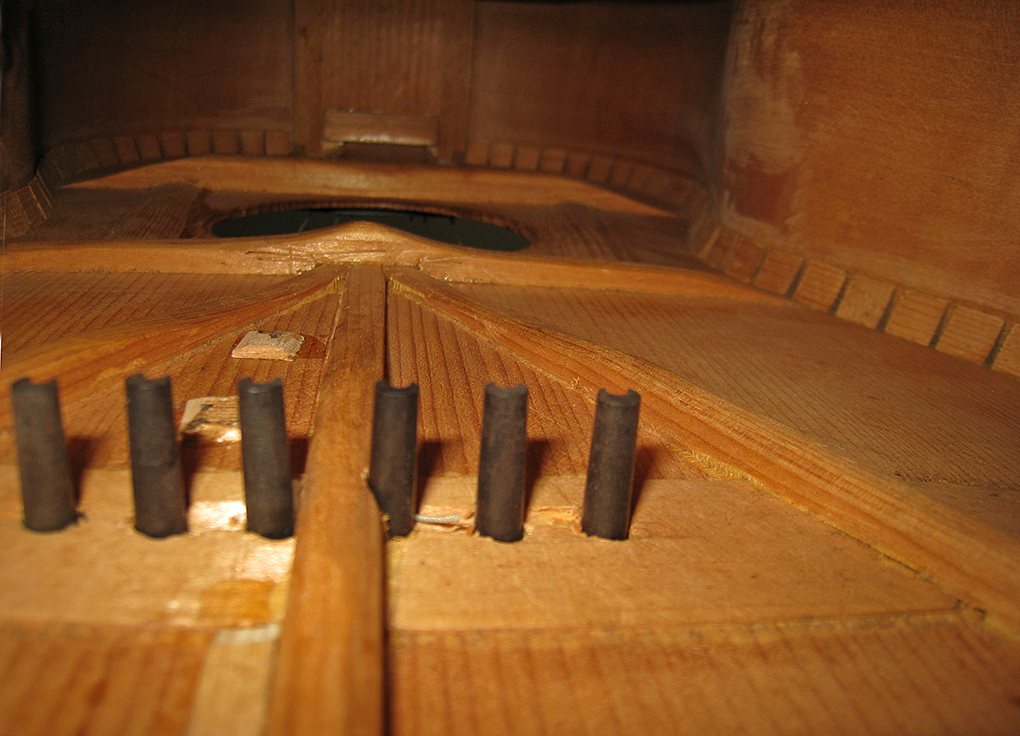 James
Ashborn c. 1850's Model 6 Guitar
for
James
Ashborn c. 1850's Model 6 Guitar
for
William Hall & Son
Just a few years ago, only two of ornate the-top-of-the-line
Connecticut Yankee built Model 6 Ashborns were known to exist, and
each one was believed to be unique. Since then, I have
discovered three more, including this one, which is nearly
identical to the third one found.
These Ashborns are carefully
documented in Gura's Martin book, and the "Inventing the American
Guitar" Book.
Sold "as-is".
Rosewood veneer neck and rosewood veneer over spruce back.
Original distinctive Ashborn built headstock, tuners, bridge,
bridge plate, and neck block. Fan braced.
With original coffin case, also made by Ashborn in his Connecticut
factory.
1 13/16" neck width at nut.
2 lb. 5.4 oz.
Serial number 3721
- SOLD -

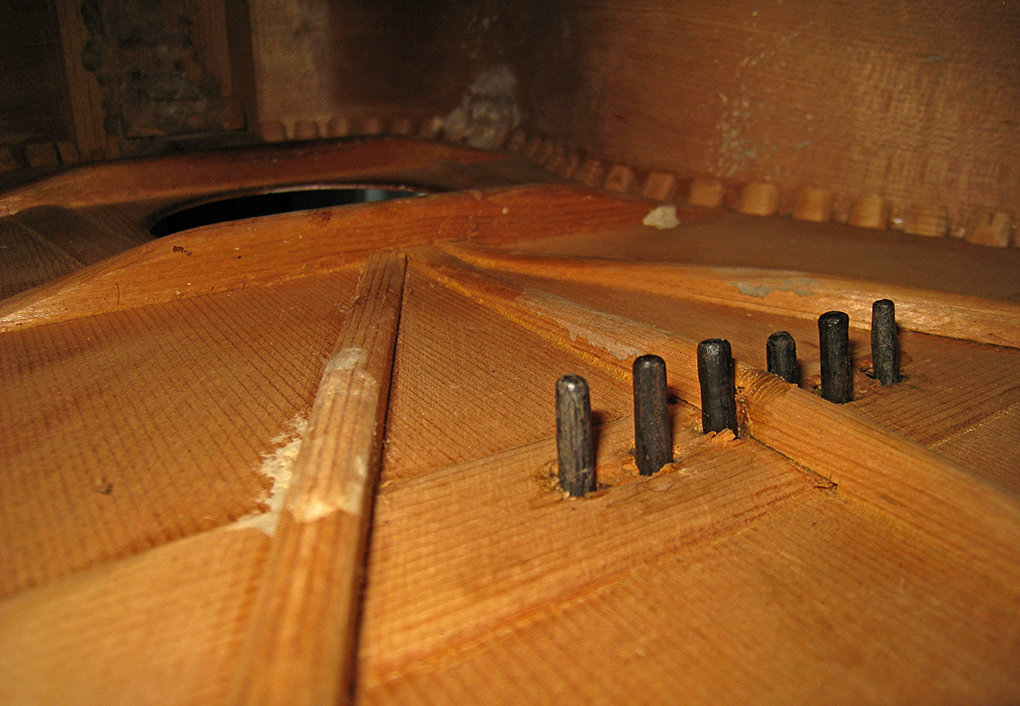 James
Ashborn c. 1850's Model 1 Guitar
James
Ashborn c. 1850's Model 1 Guitar
Solid mahogany neck and solid back. Original distinctive
Ashborn built headstock, tuners, bridge, bridge plate, and neck
block. Fan braced.
With original coffin case, also made by Ashborn in his Connecticut
factory.
New Neck Set String height 4/32" on both the 1st and 6th
strings at the 12th fret.
1 15/16" neck width at nut.
2 lb. 3.8 oz.
No serial number.
No Dealer name.
- SOLD -
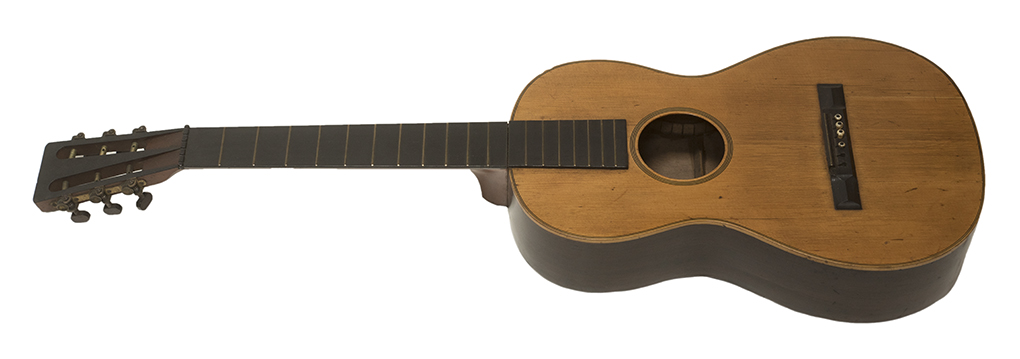 Burkard Spanish Style Parlor
Guitar
Burkard Spanish Style Parlor
Guitar
Similar to Martin 2-24. Needs restoration. Neck has
been removed for neck set.
Beautiful Brazilian rosewood back
and sides.
ONLY $875!
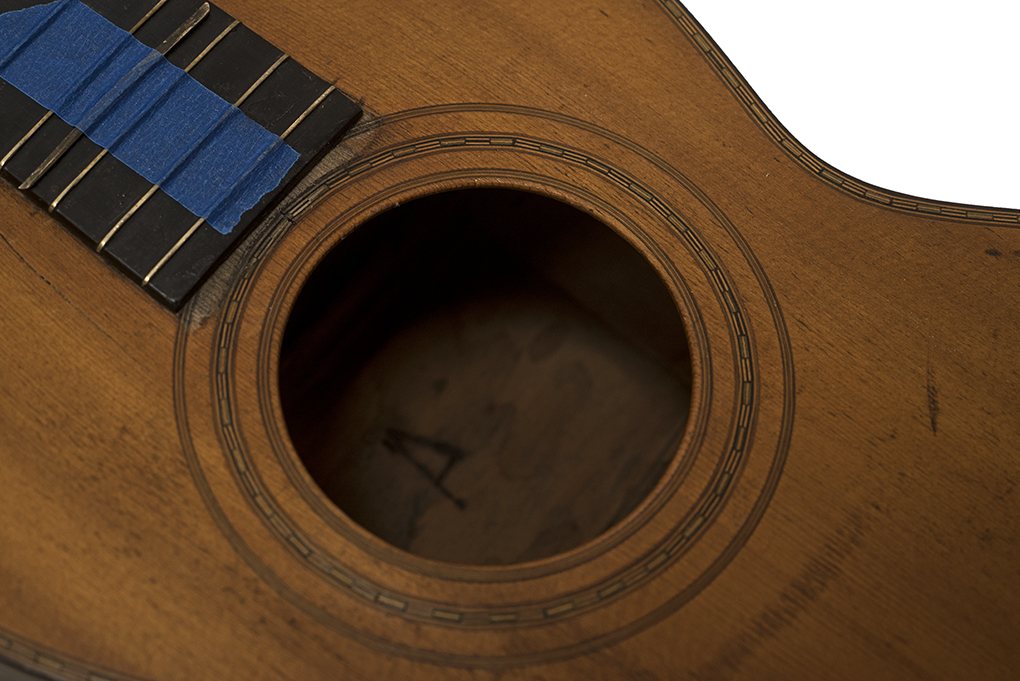
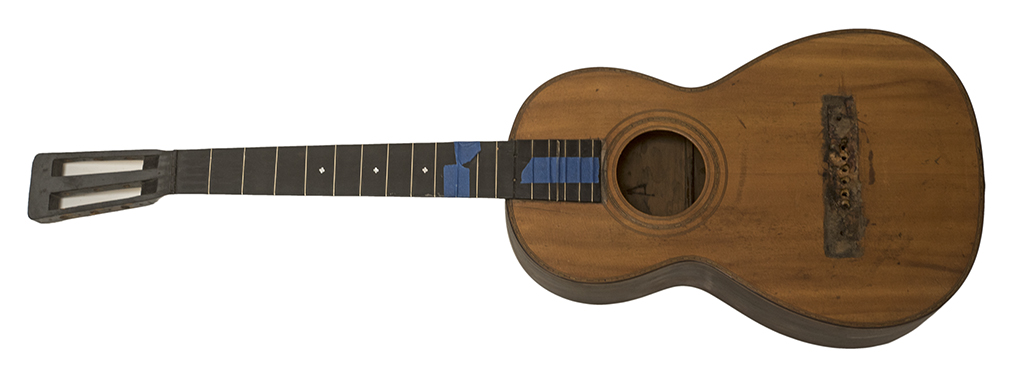
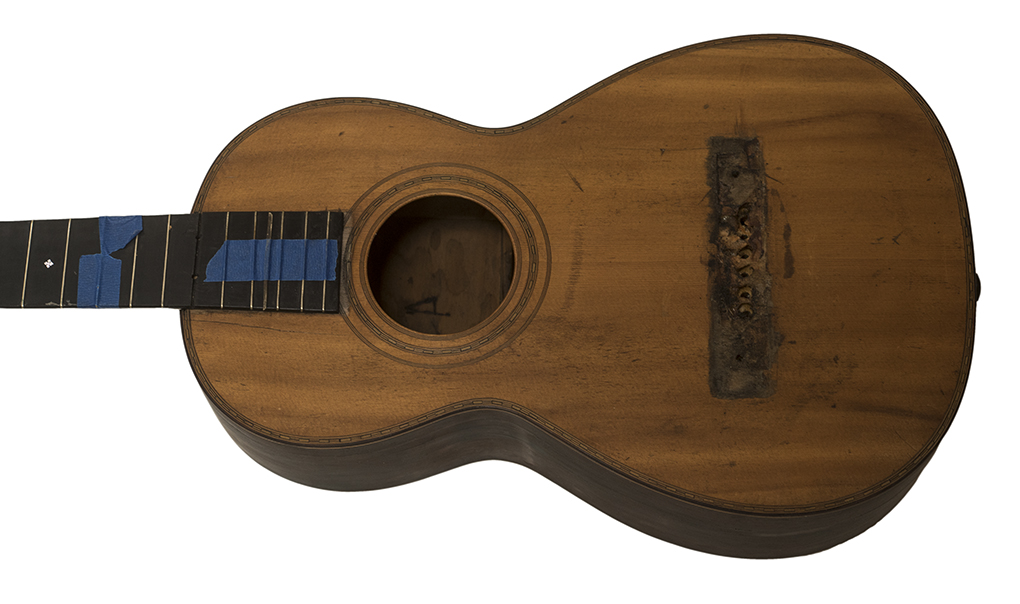
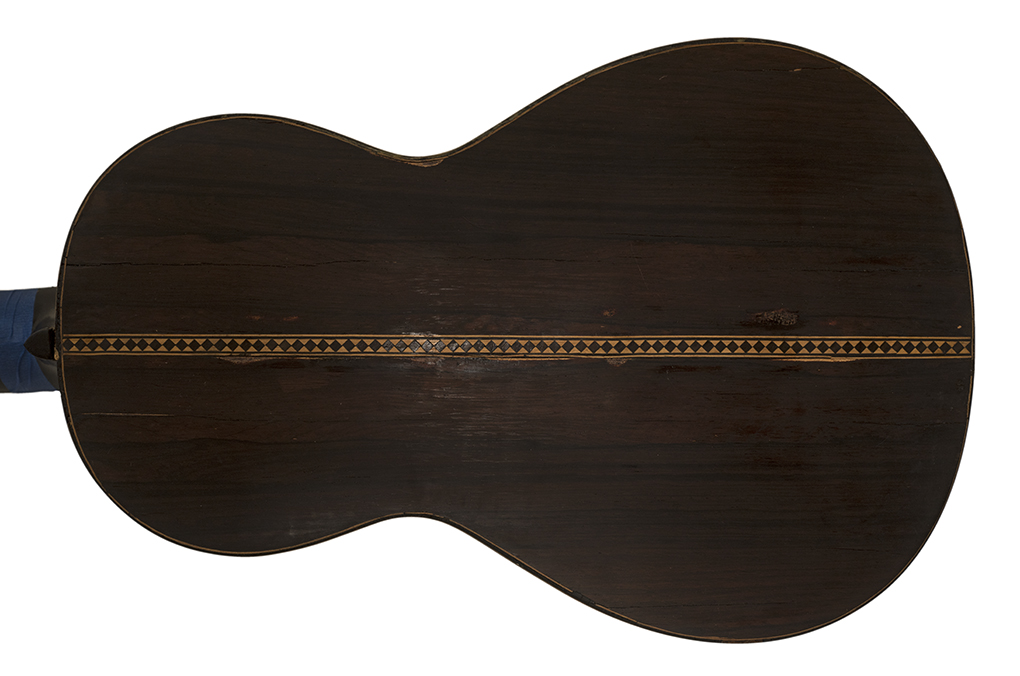
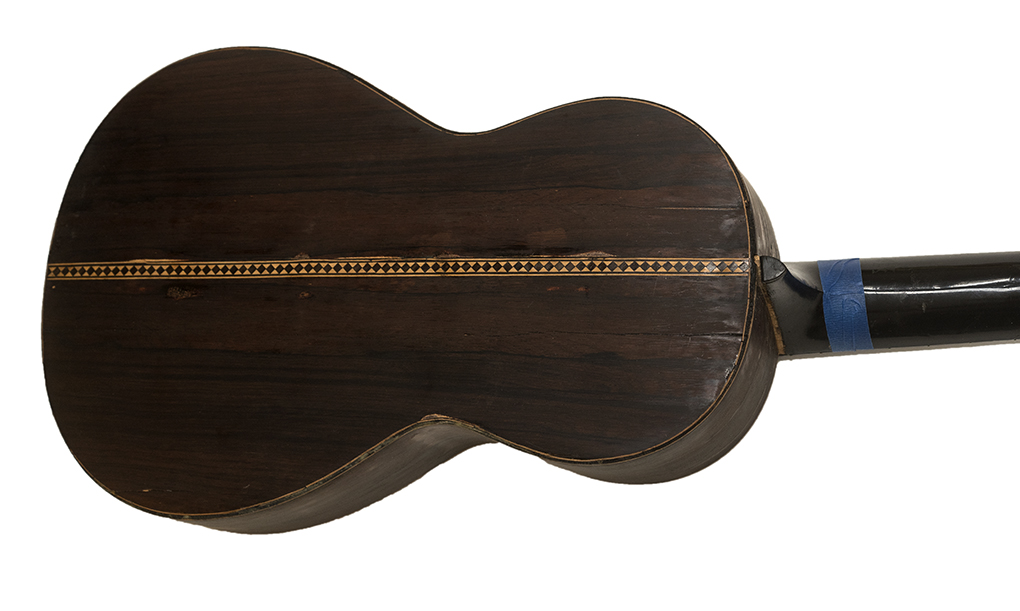
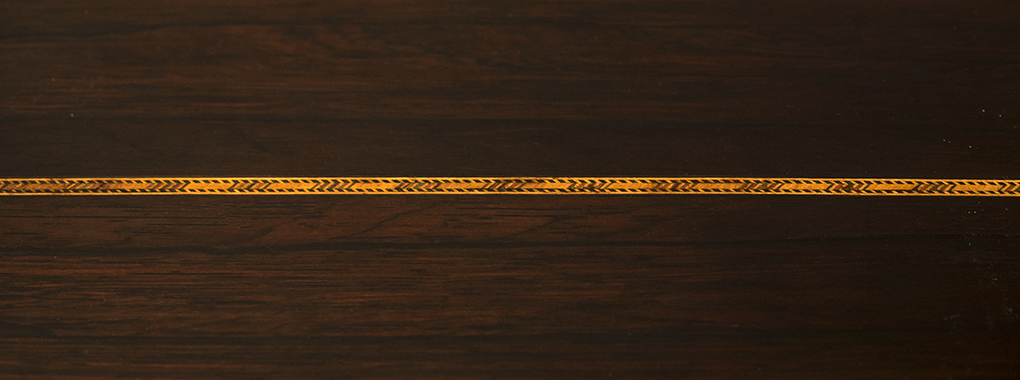
Gibsons
1921 Gibson Style L1
Guitar
From 1908 to 1925, the small body, 13 1/2" wide, narrow waist L
Style Gibson guitars, the mainstay of the Gibson line, were
archtop guitars
with a round hole, tailpiece with pins set in a "tortoise"
Celluloid block, raised pickguard, 13 frets clear of the body, and
a slanted "The Gibson" logo on the headstock.
- SOLD -
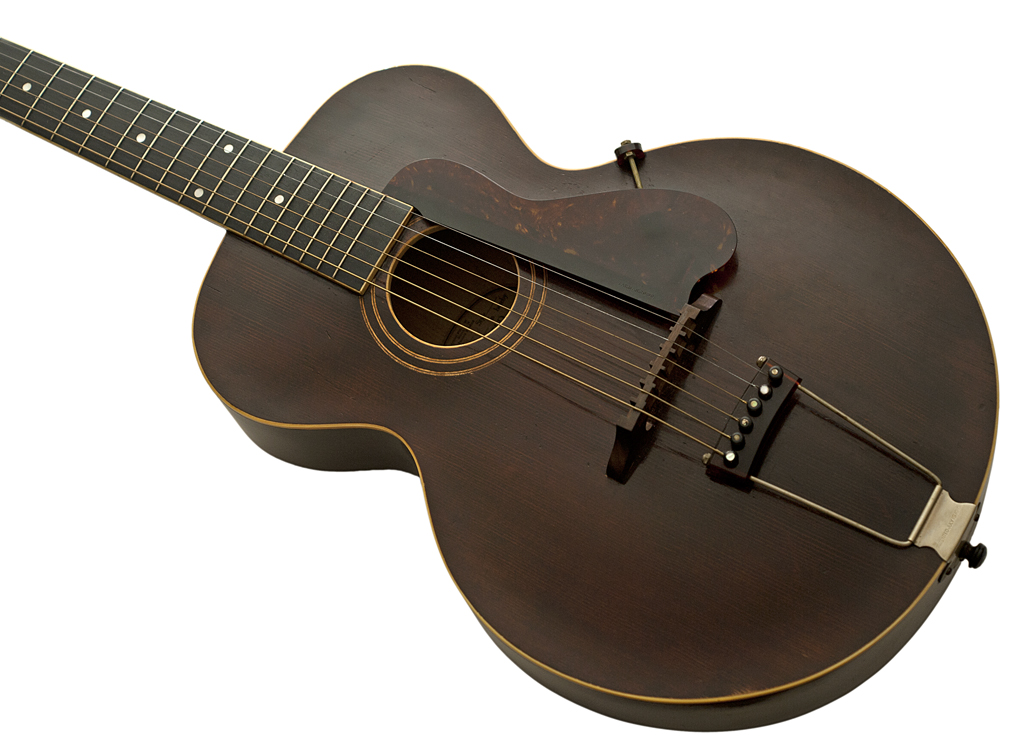
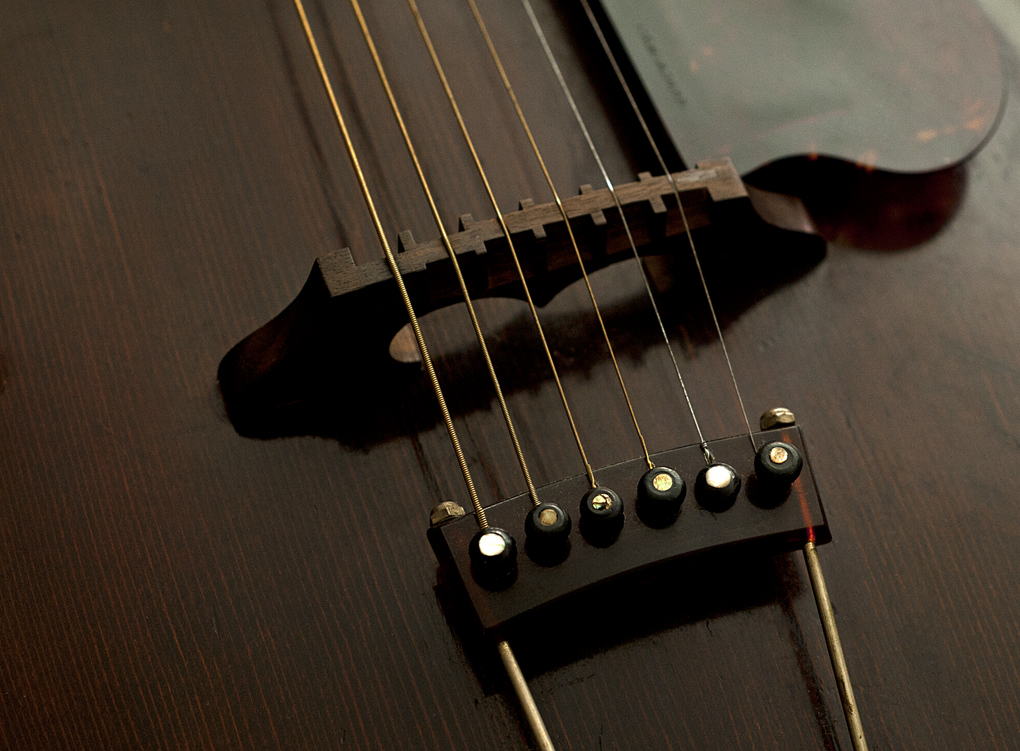
Gibson 1929 HG-20 Hawaiian
Dreadnaught Guitar
The Gibson HG-20 was one of the first three
Gibson Hawaiian models, introduced in 1929.
Excellent condition. Top cracks. Small section of back
veneer needs repair.
Perfect neck set with low string
height of 2/32" at the 12th fret.
FON # 302
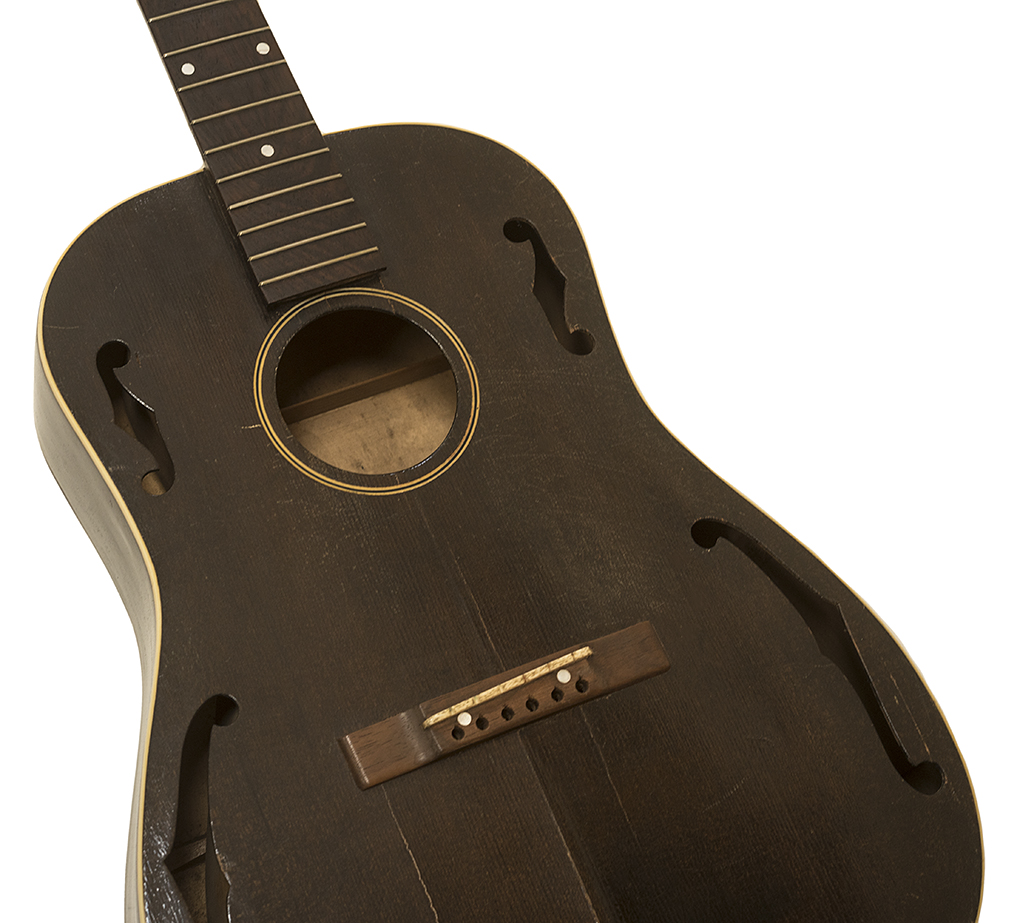
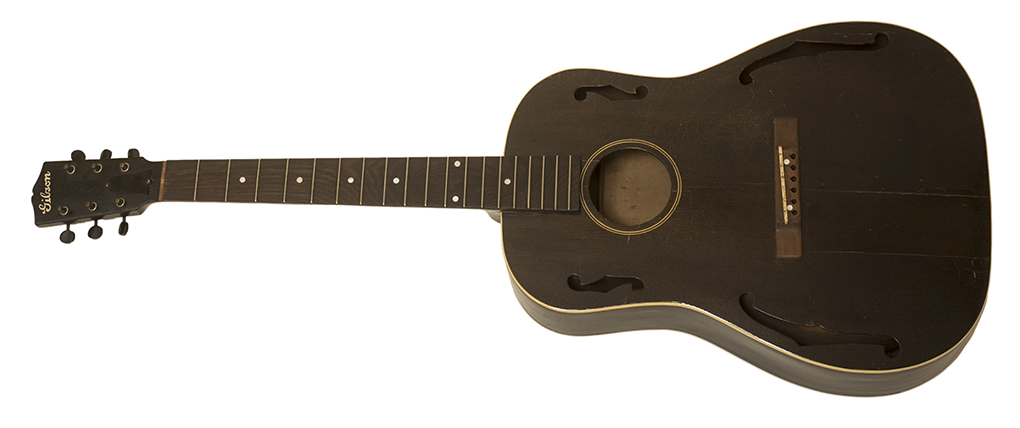
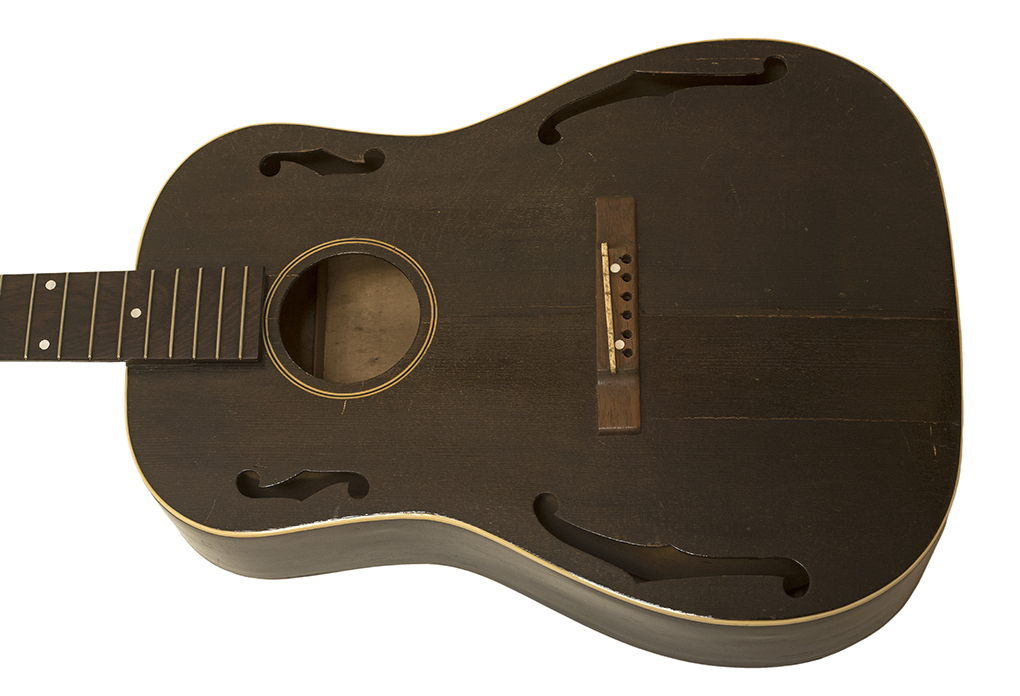
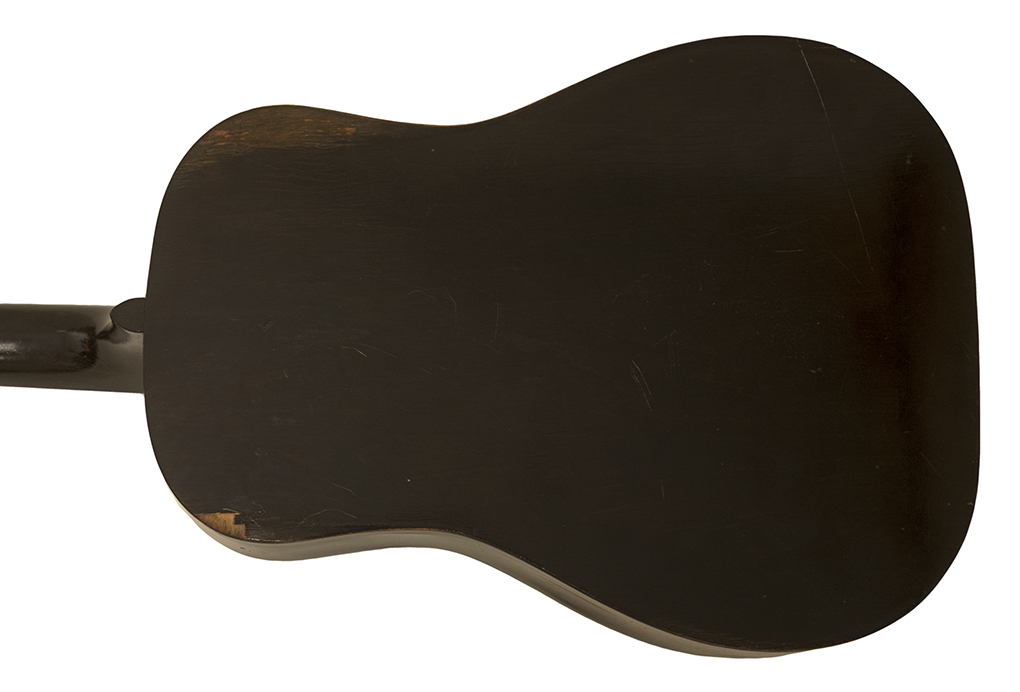
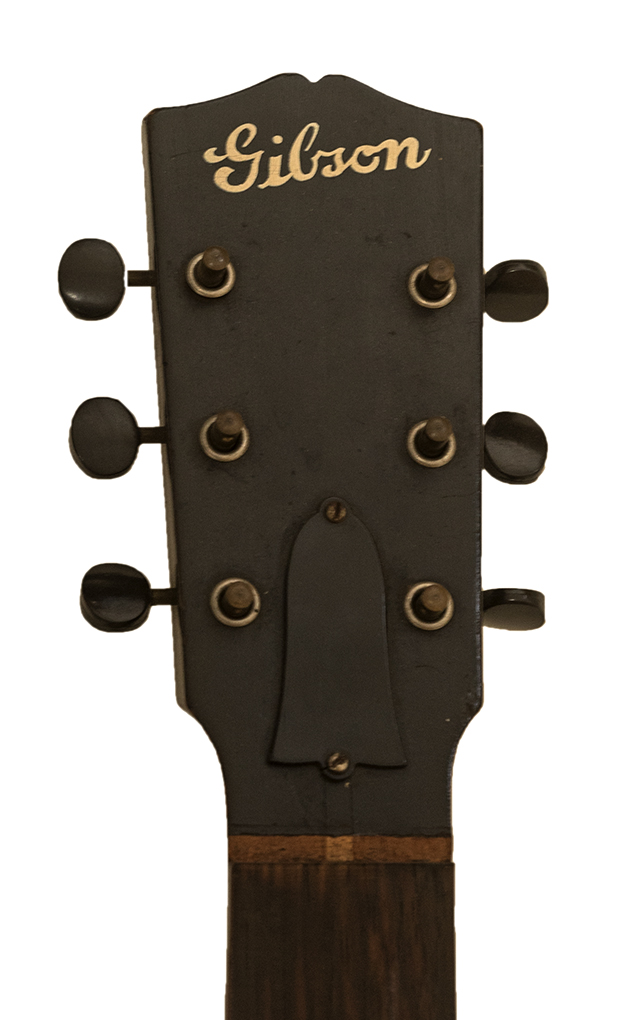
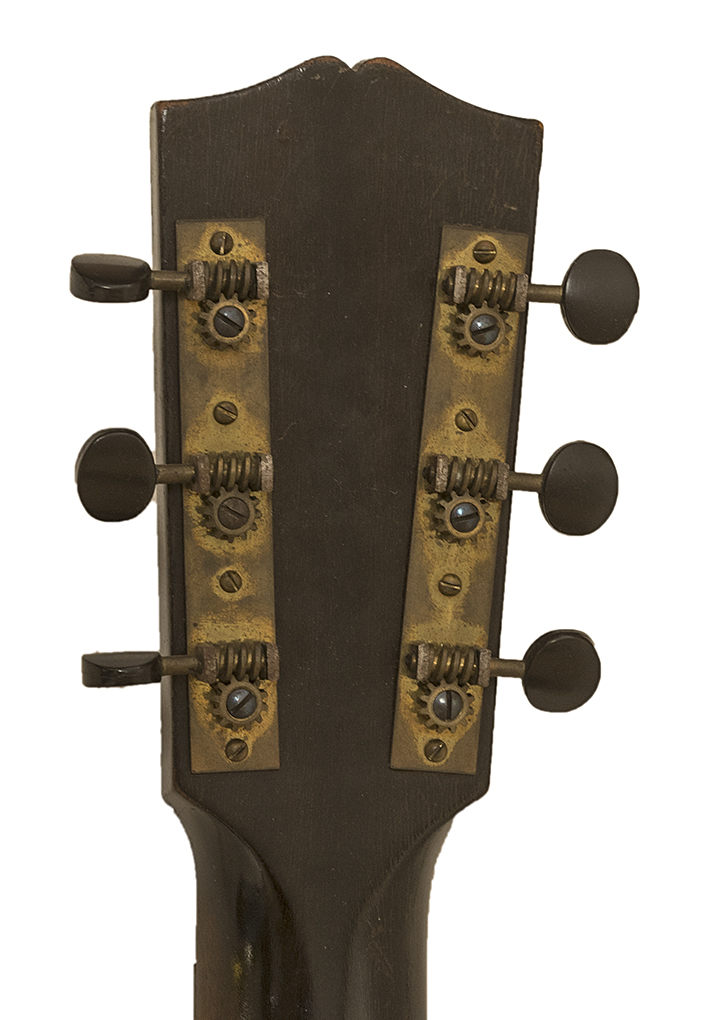
Gibson 1931 Brazilian Rosewood L-2
The Gibson L-2 changed several times in the
transition from the 1920's to the 1930's, from small 13 1/2" to
large 14 3/4" wide body, from 12 frets to 13, to 14, mahogany to
rosewood and back, from pin bridge to trapeze tailpiece and back,
from raised to large glued pickguard, and from natural top to
Argentine Grey with Gold Sparkle border and back.
While Gibson made relatively few rosewood guitars, it's long been
assumed that those vintage rosewood Gibsons were built with
Brazilian rosewood. It's recently been discovered, however,
that even rare and expensive rosewood Gibsons such as the Advanced
Jumbo built from 1935 on were built with Amazon or East Indian
rosewood.
This 1931 L-2 is made from beautiful Brazilian Rosewood of the
kind rarely seen on Gibsons, and having much more of the
appearance of the most attractive rosewood Martins.
Schoenberg Guitars is currently selling the identical version of
this guitar converted with a pin bridge for $15,575 with the
description: Extremely rare and fine Brazilian rosewood Gibson 13
fretter... These came in a variety of configurations, this one
originally having a tailpiece and floating bridge.
The "jester" peghead inlay is the
iconic identifier of its status as this very special model."
The Schoenberg guitar has slab cut rosewood, while mine has
Brazilian that would have made Martin proud in their "Golden Era",
and is available at a fraction of the price!
Gibson 1931 L-2 FON 119
- SOLD -
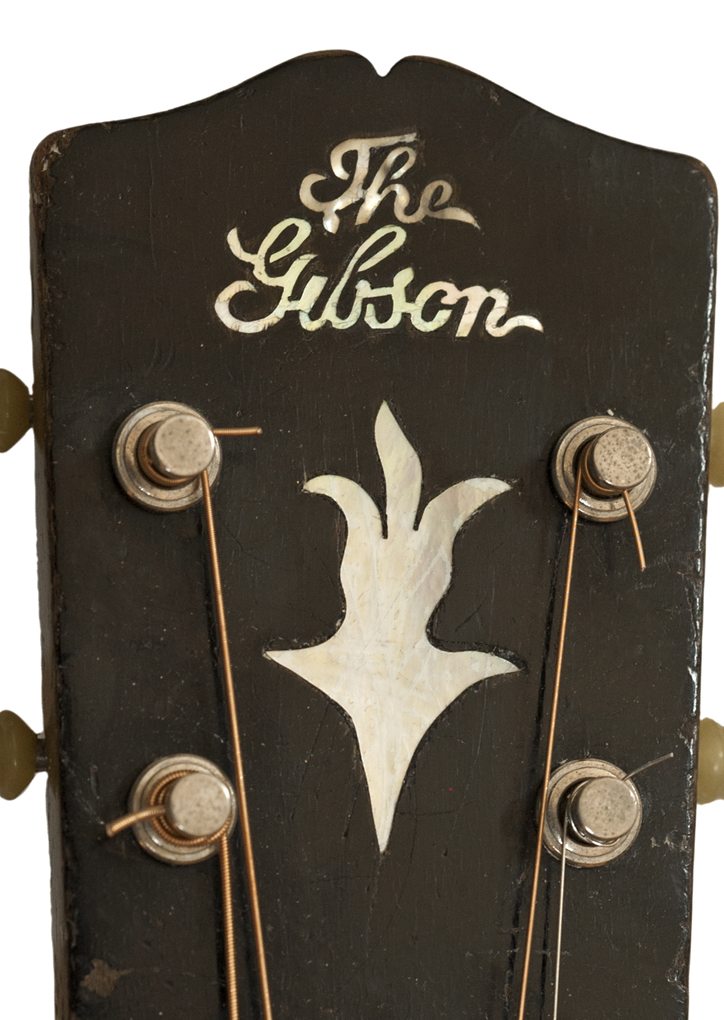
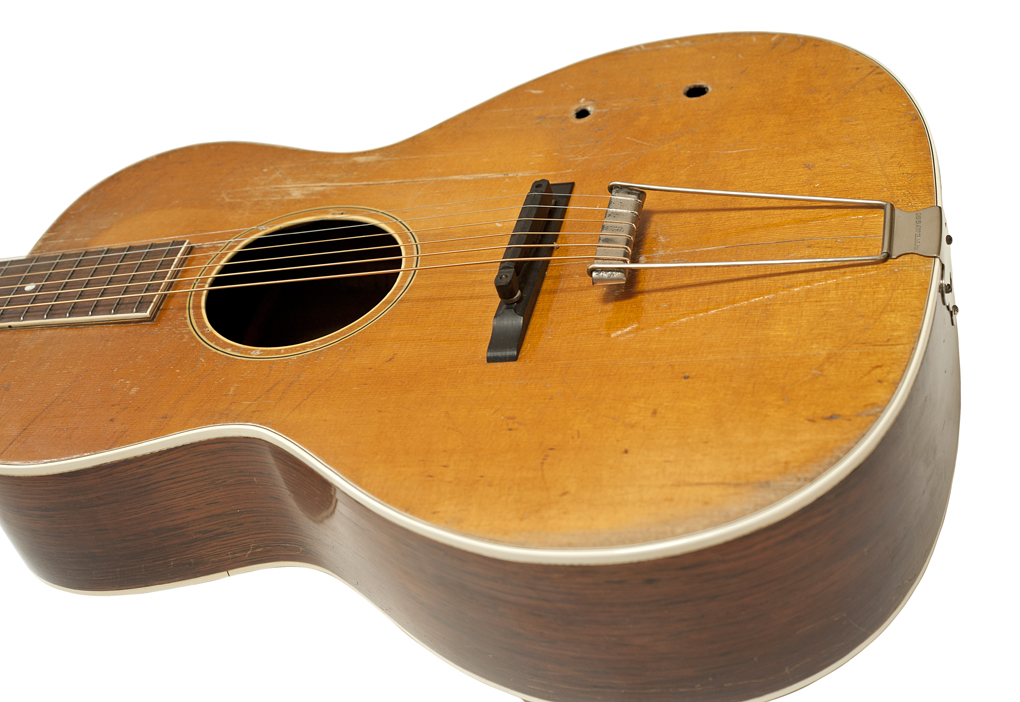
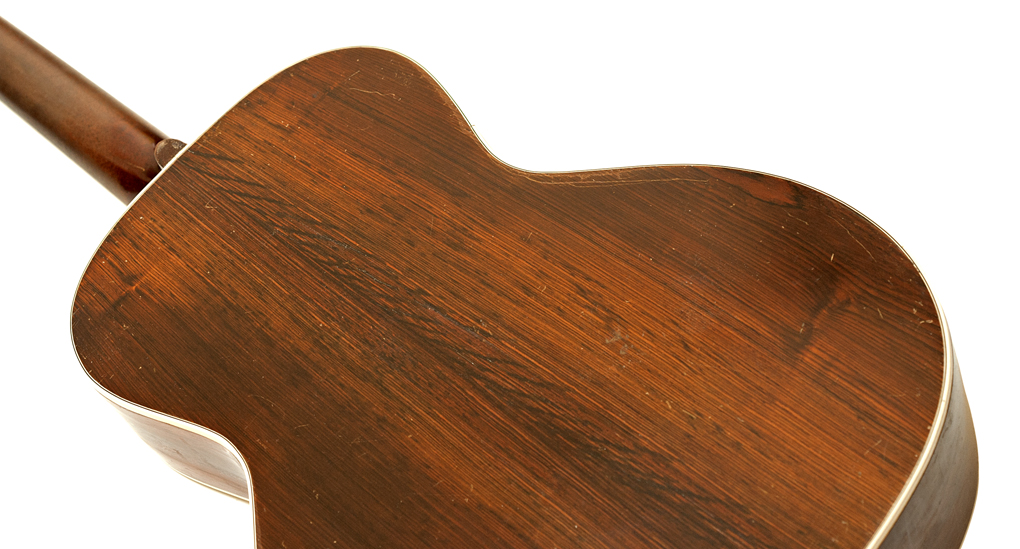
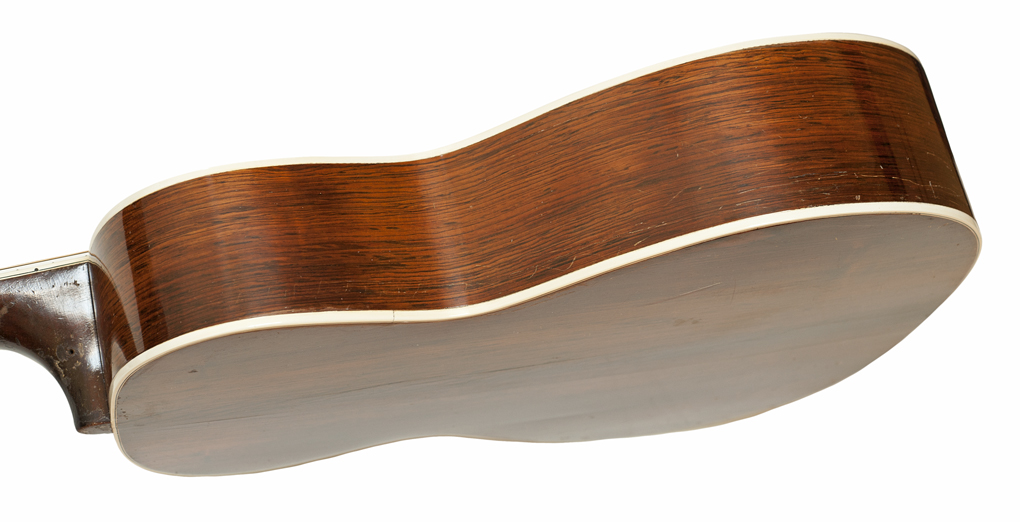
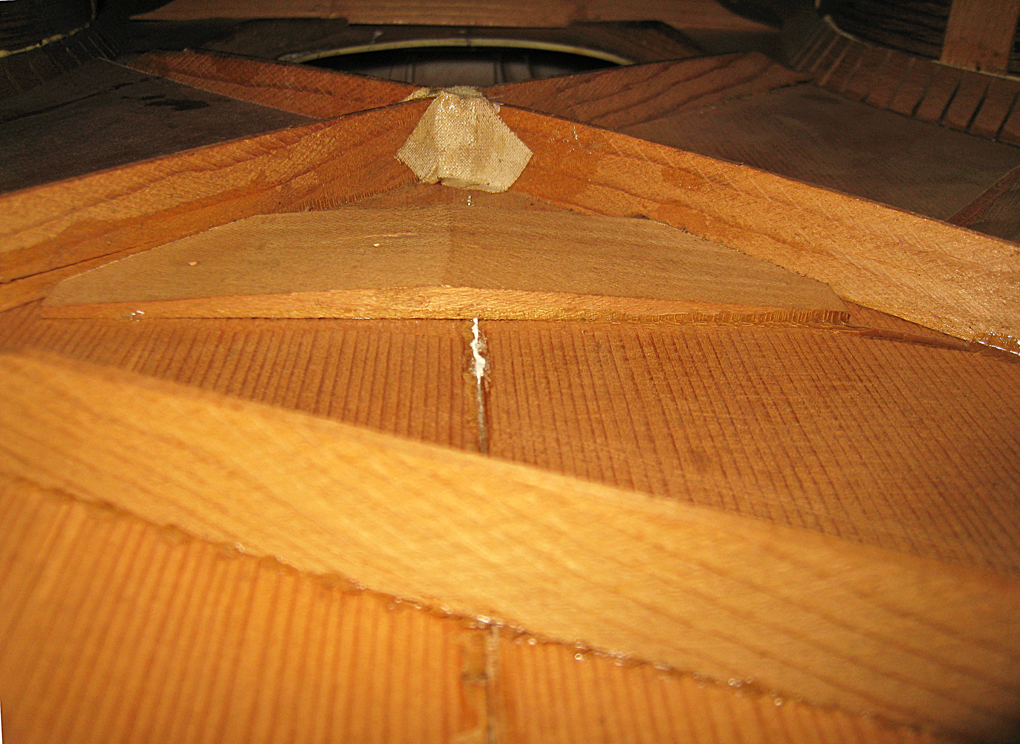
Gibson 1951 Blonde Flame Maple
ES-5 Pre-Switchmaster Guitar with Three P-90 Pickups
In the desirable natural blonde finish, with gold plated hardware
including gold waffle tulip button tuners. The guitar is in
wonderful condition, and is all original with the exception of
work completed under Duke Robillard's direction.
A very special one. The ES-5, the electric top-of-the-line
equivalent to the acoustic L-5 when Gibson archtops were graded 1
to 5, is the guitar made famous by T-Bone Walker who, along with
Charlie Christian and Django Reinhardt, largely defined the sound
of the electric guitar.
The early pre-Switchmaster ES-5 is a wonderful guitar, but
impractical in its limitations. A lack of a switch to select
pickups means having to adjust individual volume controls and then
re-adjusting the tone controls every time you want to solo or
change pickups to produce a new sound.
I was extremely fortunate to
receive an education from my friend Duke Robillard, who T-Bone
Walker's biographer has called T-Bone re-incarnated. Duke advised
me to add a pickup selector switch, but it didn't end there. I had
no idea how complicated wiring electrics could be.
Wiring pickups is not nearly as
straightforward as one would think. Duke also calculated and
explained to me how to wire the electronics to allow for selecting
the most useful combinations of pickups, taking into account how
changing one setting can affect another.
Absolutely nobody knows how to make
a guitar work the way Duke does, and it didn't hurt that Duke set
me up to have his most trusted luthier do the work for me. Working
together, they did a magnificent job.
EXC; Light surface scratches on back, slight finish checking, some
polish wear on trapeze tailpiece. With original hard shell
brown Gibson case.
- SOLD -
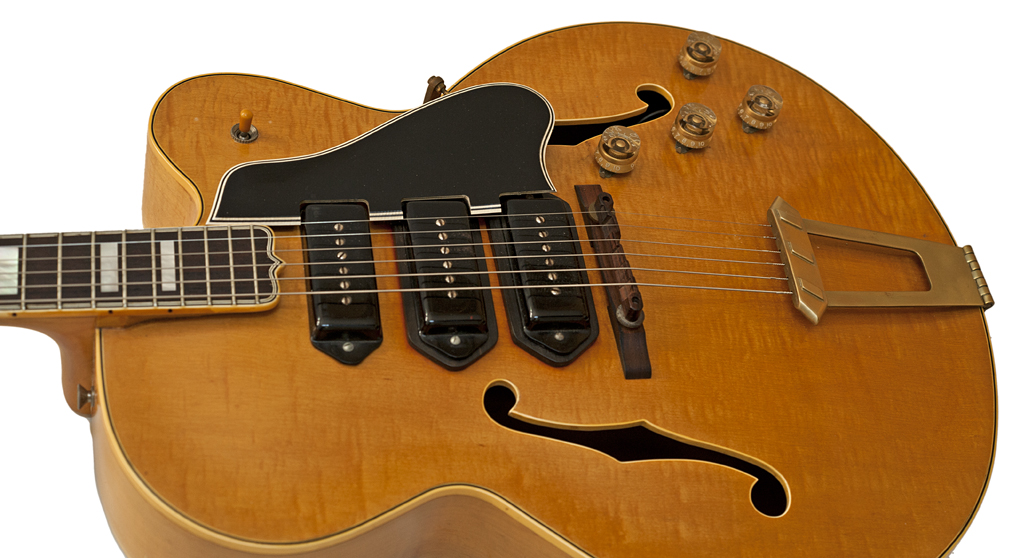
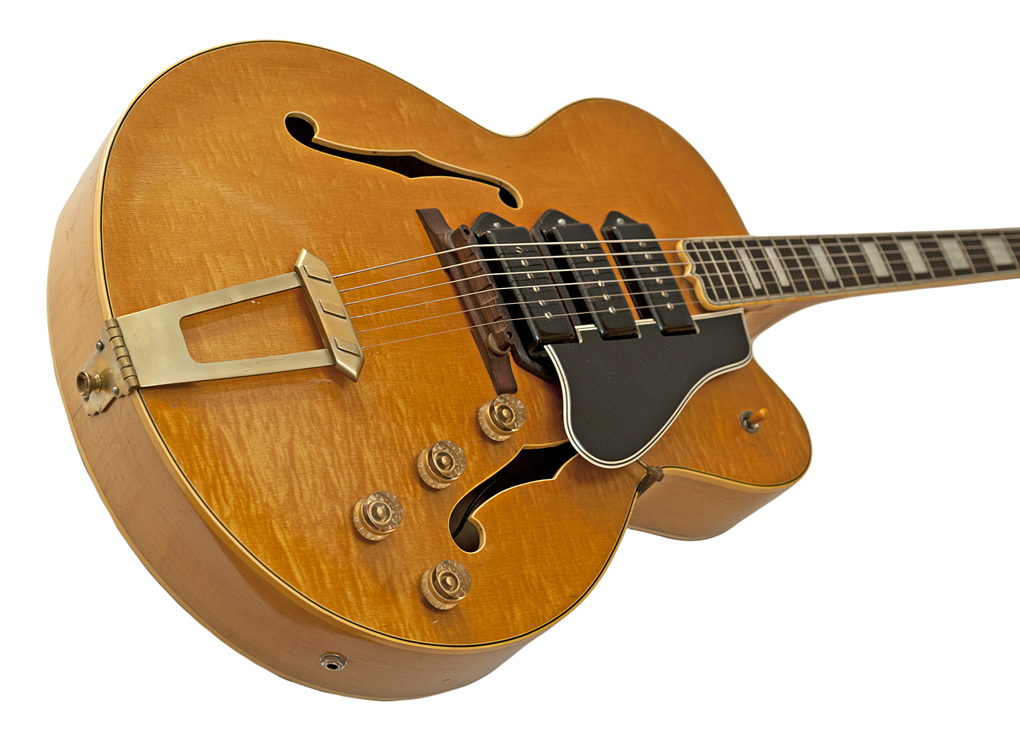 Gibson 1933 L-2 Rosewood Tenor
Guitar
Gibson 1933 L-2 Rosewood Tenor
Guitar
A tenor version of the Rosewood L-2 illustrated above. Tenor
guitars are seeing a resurgence on the West Coast. You won't
find a neater example than this one!
A rare rosewood Gibson that's
unusual in being a transitional L-2 example with Brazilian
rosewood sides, with a back of the same rosewood that you'll find
on an early Advanced Jumbo!
Looks beautiful inside, with a small clean maple bridge plate and
the great razor thin braces typical of the period.
- SOLD -
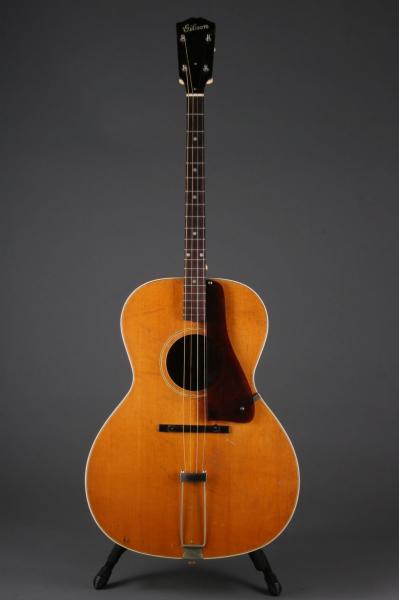
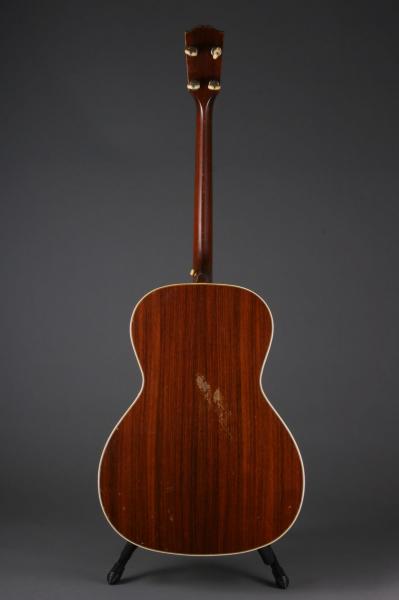
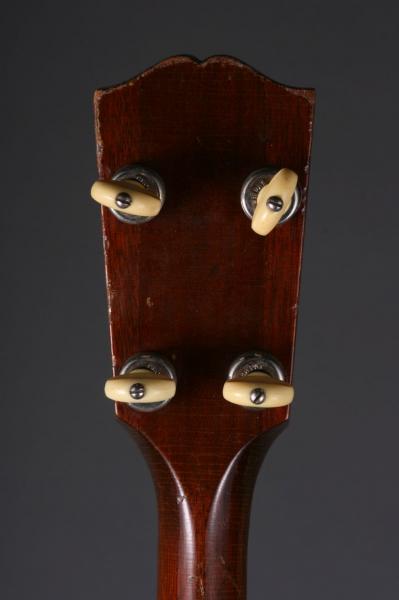
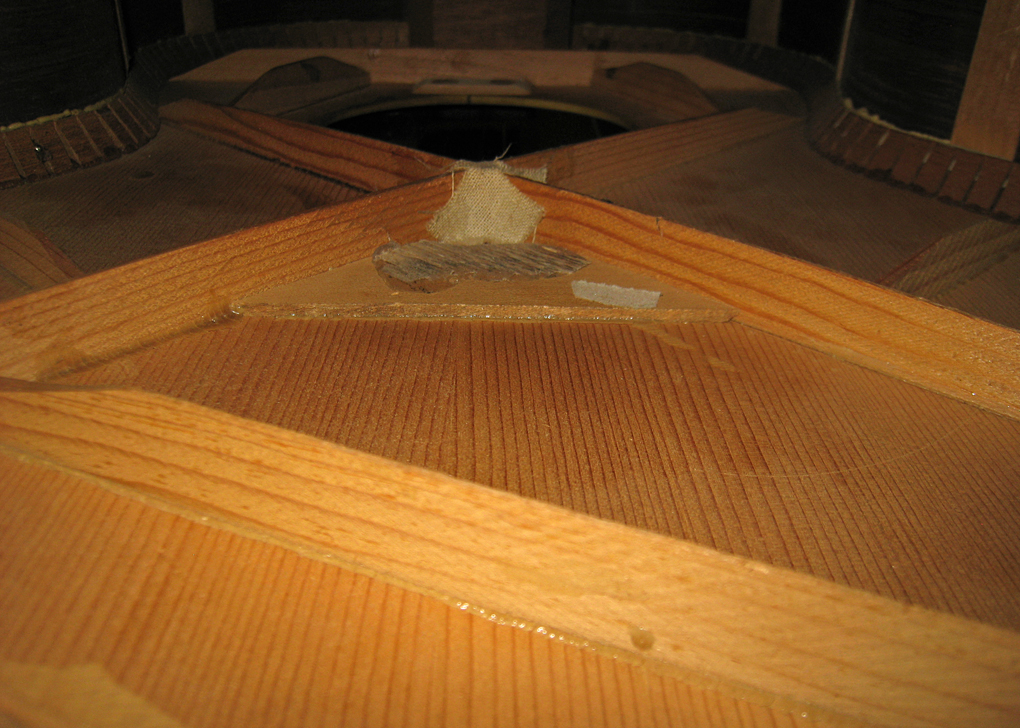 1886 Haynes "Hub" Parlor Guitar
1886 Haynes "Hub" Parlor Guitar
A "Hub" 12 fret guitar built by the noted Haynes Company of
Boston.
With fancy original tuners.
Beautiful Brazilian rosewood.
Sold "as-is" but in beautiful
condition, with perfect neck set.
String height 2.5/32" on the 6th
string, 2/32" on the 1st string at the 12th fret
Beautiful Brazilian rosewood.
No serial number.
- SOLD -
Wolfram
"Triumph" Aluminum
Fingerboard Parlor
Guitar
Made by Thomas Wolfram in Columbus Ohio, an unusual parlor guitar
with an aluminum fingerboard.
Patented in 1893, only 300 made
In all original fine condition. The bridge is split and
needs to be filled and glued.
- SOLD -
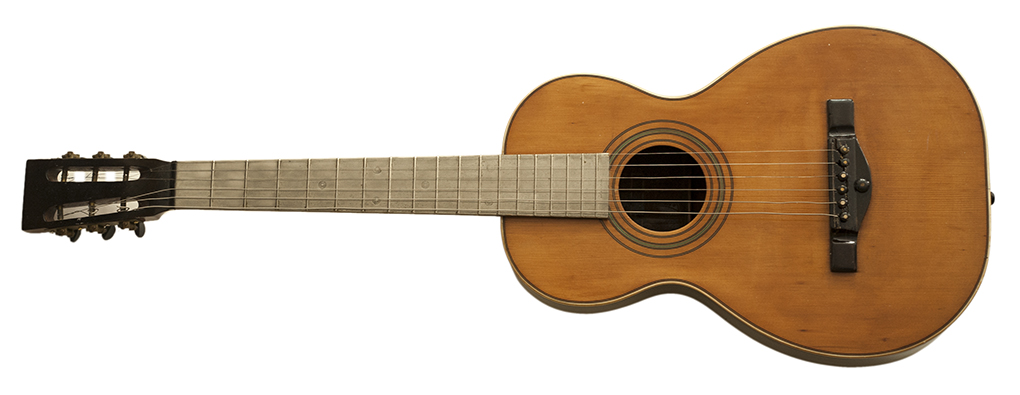
1898 Fairbanks Special
Electric #5
All original in fine condition
with 26" scale, 10.5" rim, and calfskin head
This 1898 Fairbanks No.5 Special Electric is one of the earliest
examples of the fanciful Victorian engraved pearl inlay that
became the standard for the highest grade Fairbanks and Vega
banjos.
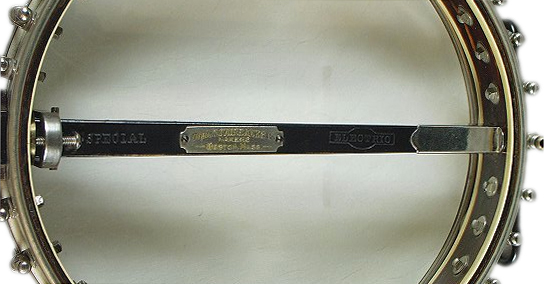

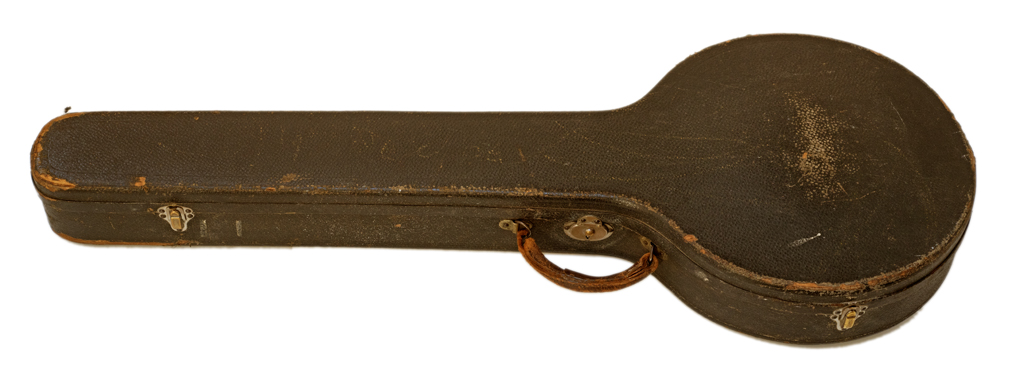
Fairbanks
Vega Whyte Laydie Banjo #2
All original in fine condition
An iconic banjo, a Whyte Laydie built after the Fairbanks Company
was bought by Vega, but before the name was changed. The
ultimate clawhammer and frailing banjo with original 5 string
neck.
This is the banjo I dreamed of owning someday growing up!
Entirely original, including tone ring, 5 string neck, tuners,
tail piece, and all 28 brackets, and near perfect, with minor
scuffing of rim. New sturdy hard shell TKL case.
A beautiful example.
27" scale.
11 3/8" rim
Signed Jos. B. Rogers Jr. *** highest grade calfskin banjo head
from Farmingdale, NJ.
Matching serial numbers of 36753 on rim and dowel.
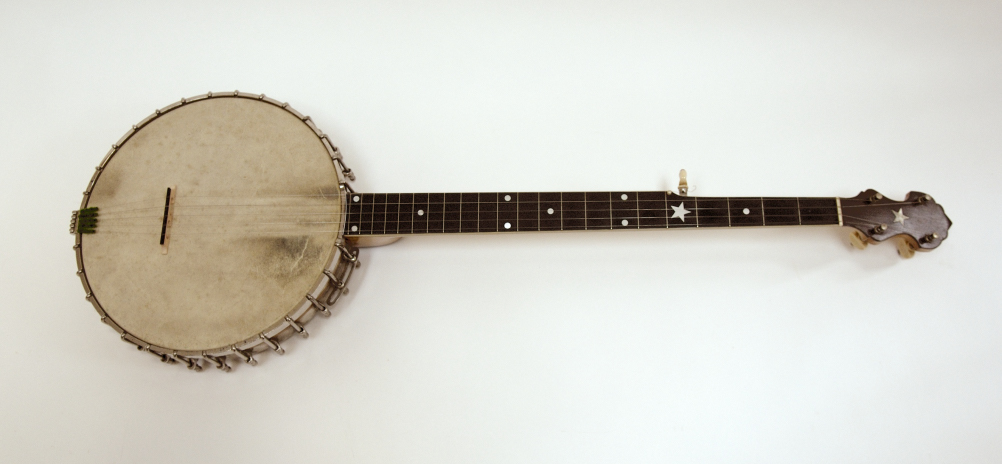
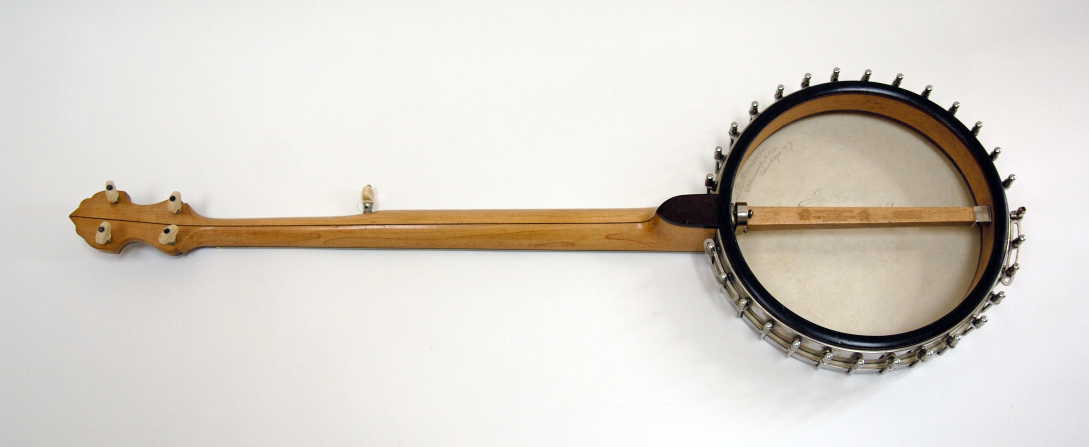
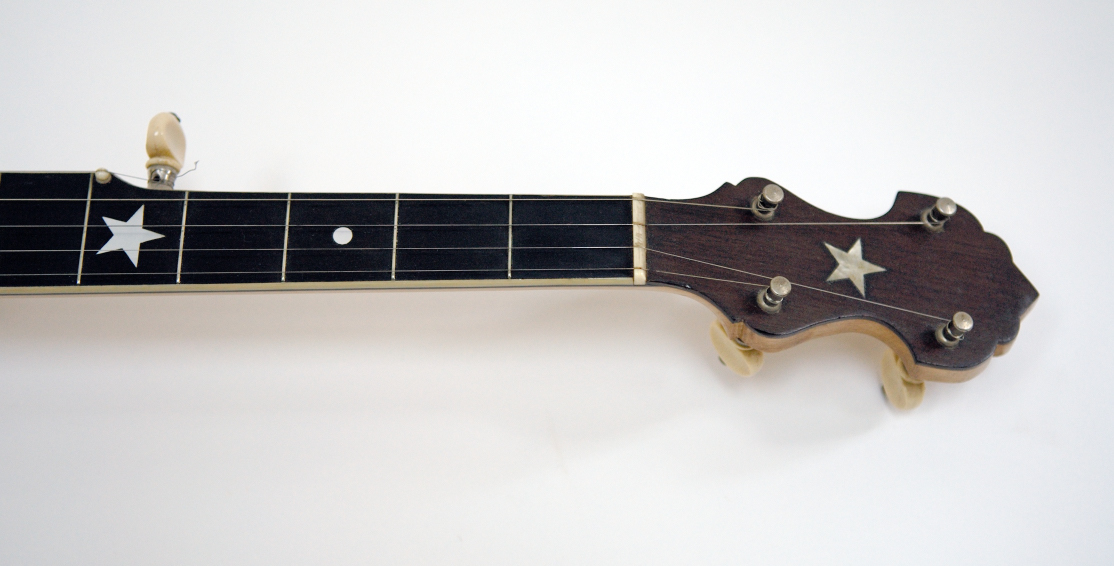
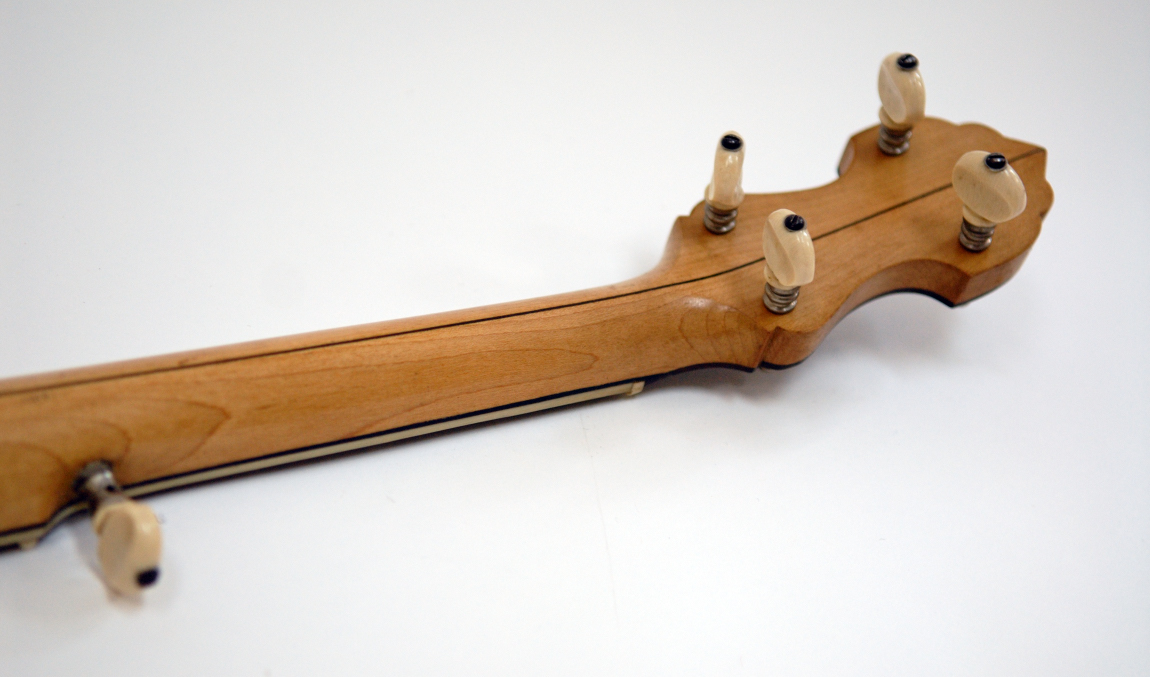
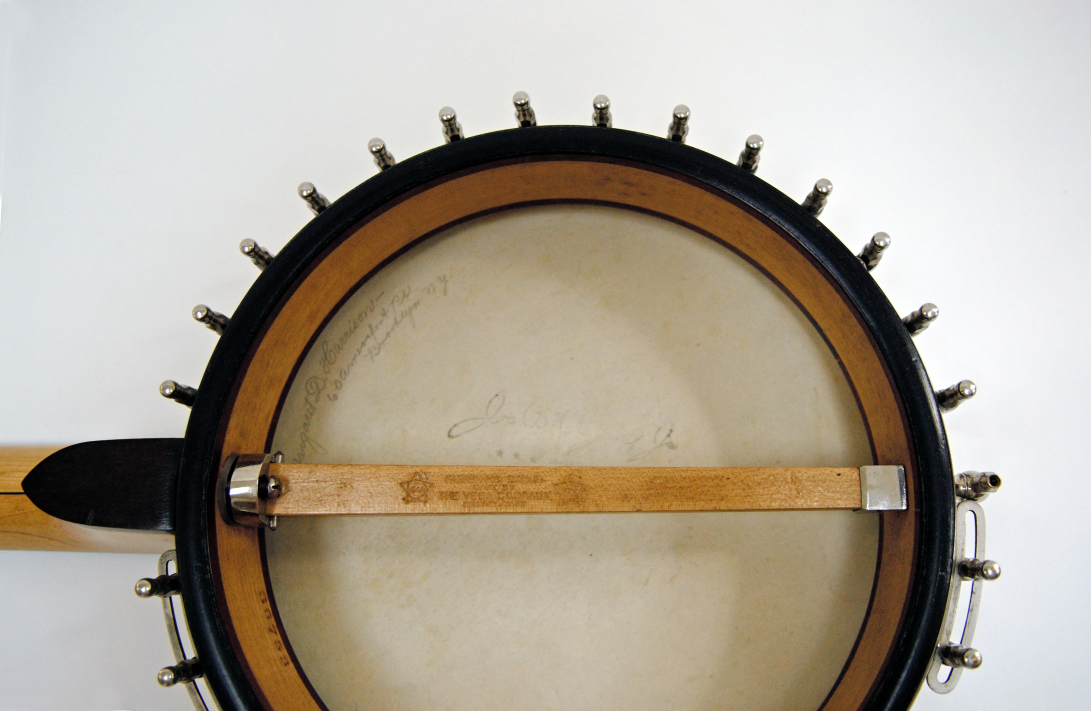

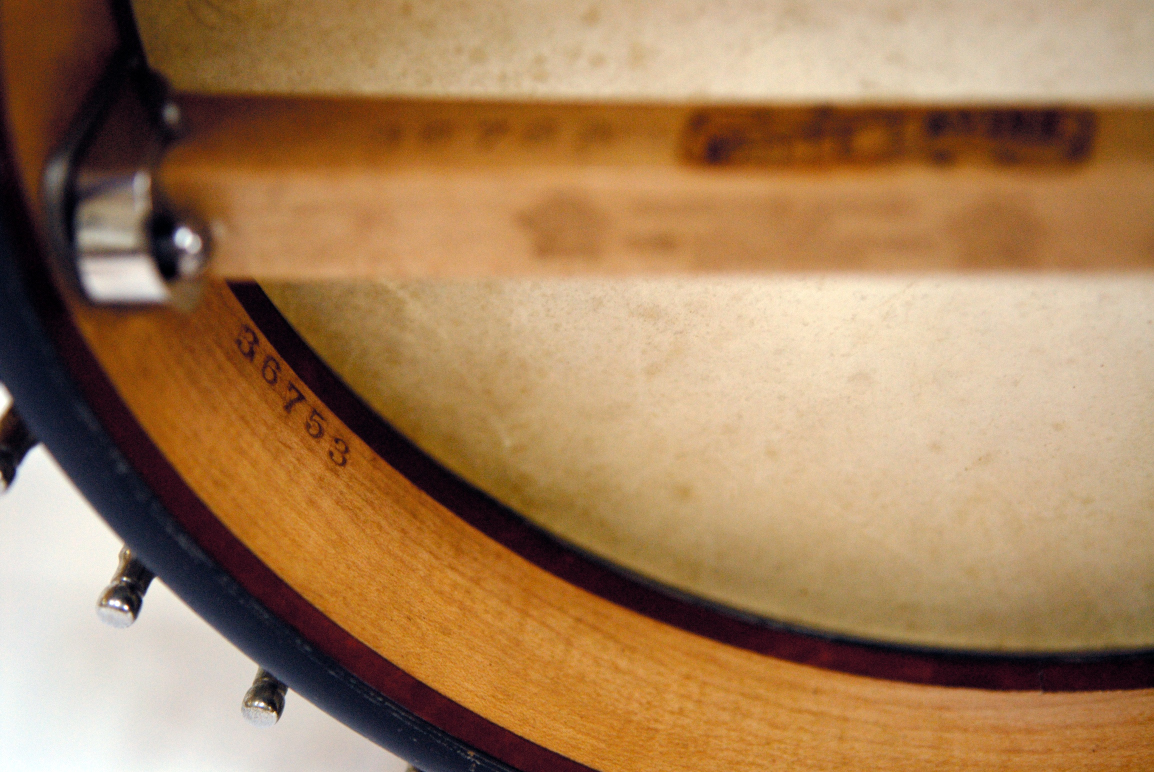
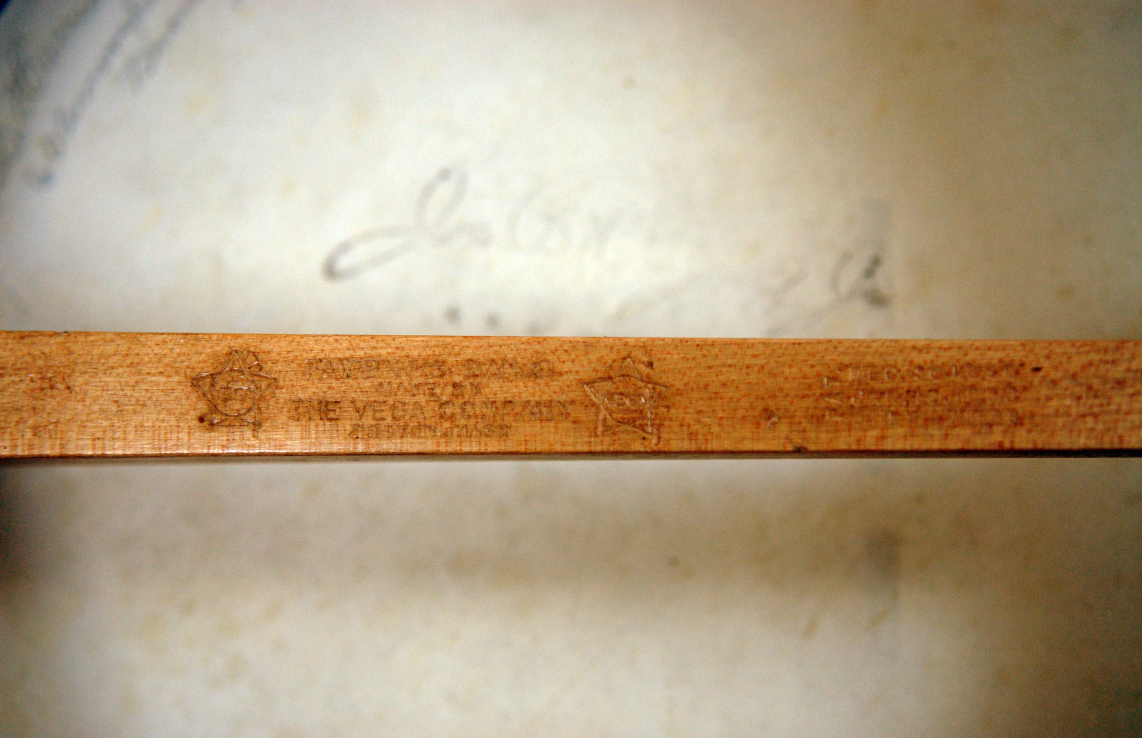 1955
National Town and Country
1955
National Town and Country
with six controls and three pickups, one under the bridge...
and Original 1955 Brown Hard Shell Case, similar to the case for a
1955 Les Paul
I was introduced to the National single cut solid body by my
friend Bernie Leadon of the Eagles, couldn't believe the
incredible sound, and had to find one.
Fortunately I was eventually able
to find two! Besides looking way cool, this guitar's pickups
have the same screaming sound as the National lap steel played by
David Lindley with Jackson Browne.
Built by Valco in Chicago, this guitar has a single cutaway maple
body with plastic backplate, bolt-on neck, and a bound Rosewood
fretboard with parallelogram inlays.
Other features include two single
coil pickups plus under bridge pickup, a trapeze tailpiece,
adjustable Rosewood bridge, and 3-on-a-plate tuners.
Comes with its original 1955 brown hard shell case, which bears
similarity to the case for a 1955 Les Paul.
VG+; some finish checking, wear to the back of the neck, rusted
tuner housings
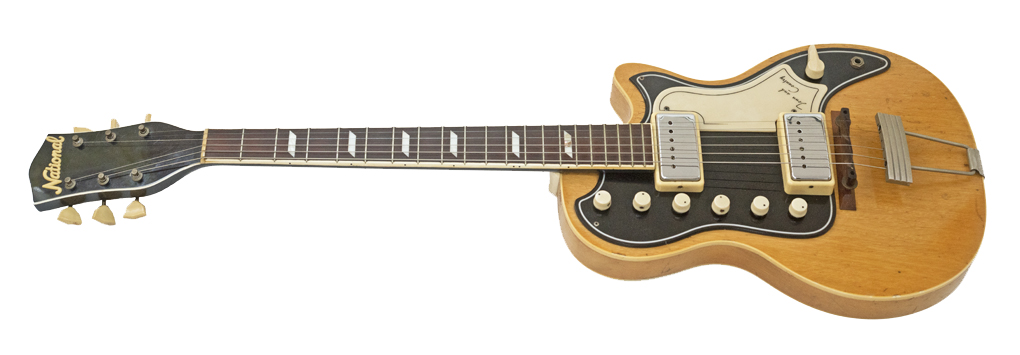
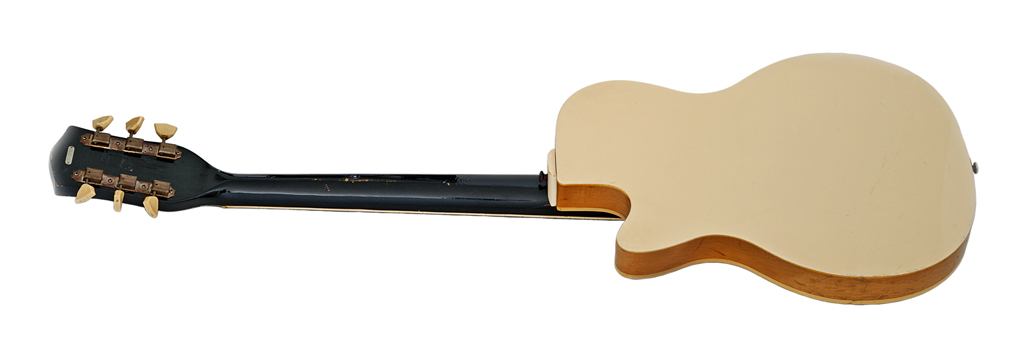
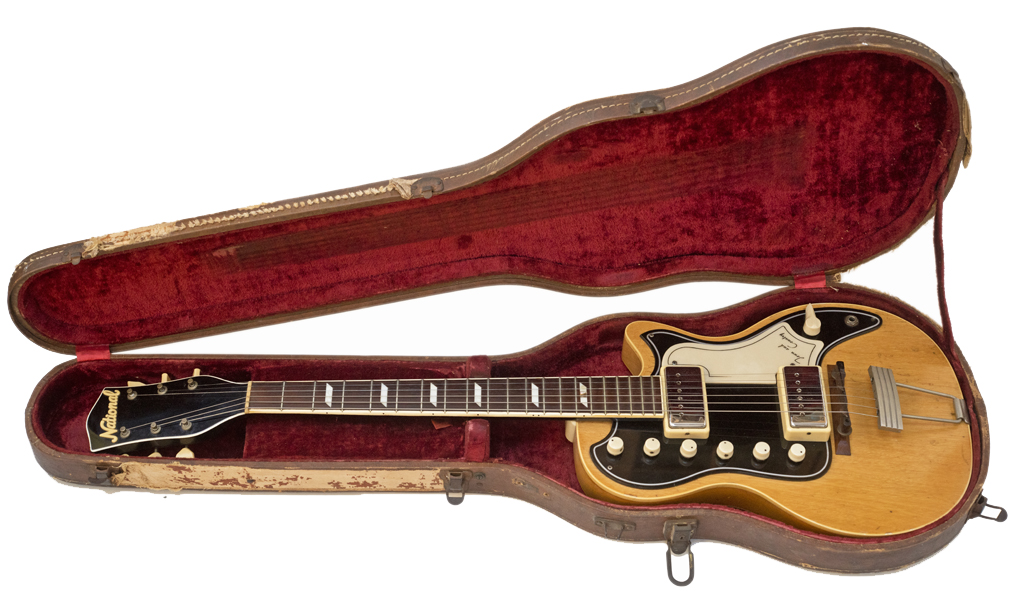
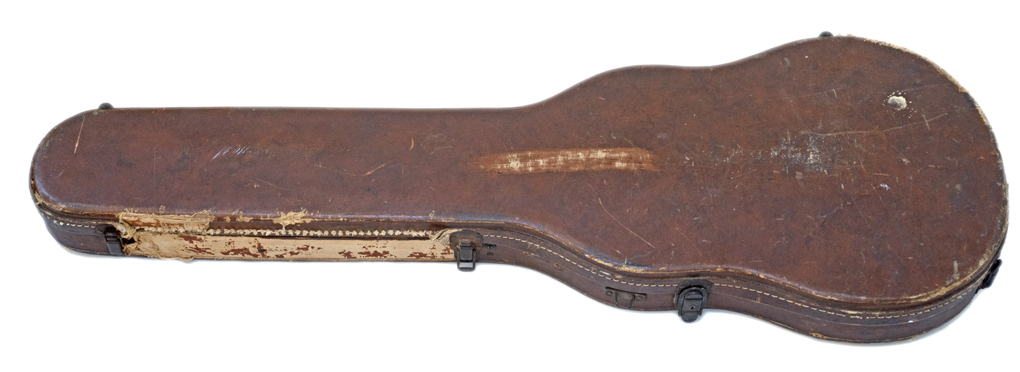 National
Newport 82
National
Newport 82
with "Map shaped body"
Serial#: S20691
With it's fiberglass body, the National Newport, with it's body
shaped like the USA, is definitely among the coolest and most
innovative guitars in history.
In beautiful near-mint all original condition.
Produced for a mere two-year period, the fiberglass-bodied Newport
82 evolved from the Val-Pro 84, and features a highly-polished
Pepper Red fiberglass exterior, a single "standard" pickup,
controls on the bass side of the body,
an adjustable Rosewood bridge, an
asymmetrical ("Gumby") plastic veneered headstock profile, and
vibrato tailpiece.
- SOLD -
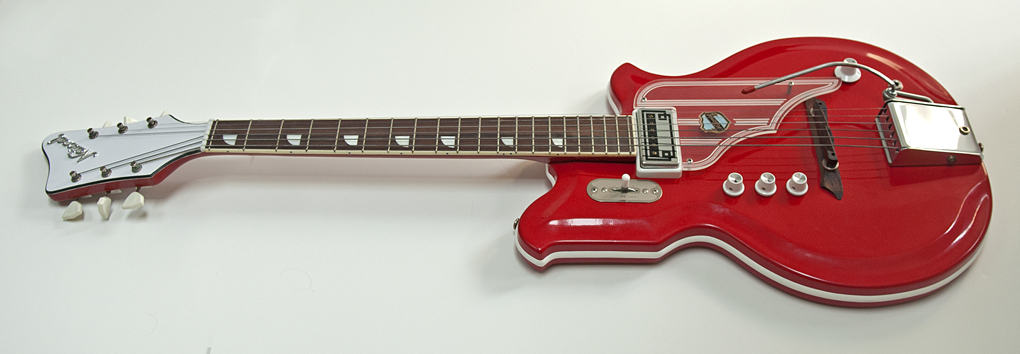
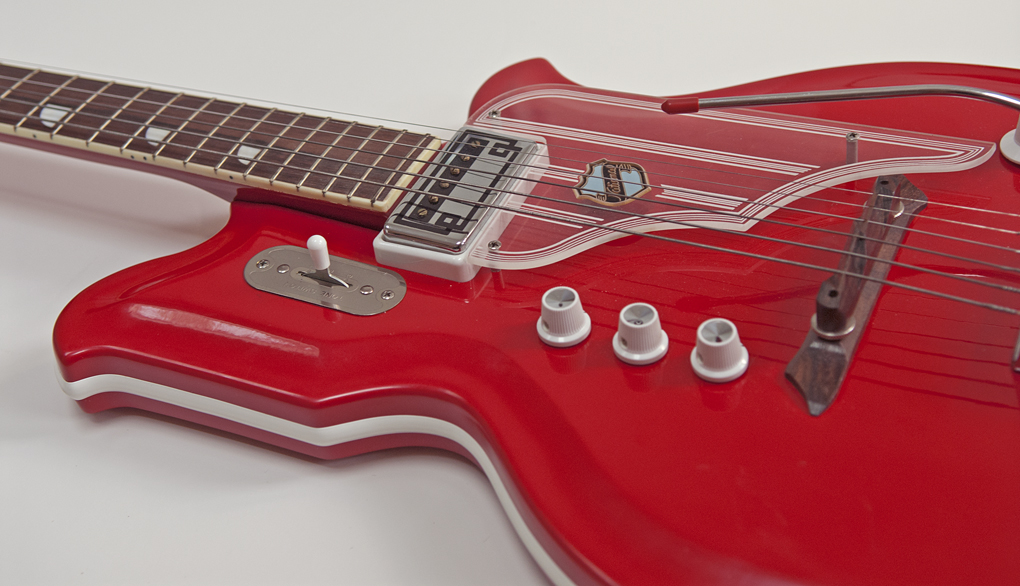
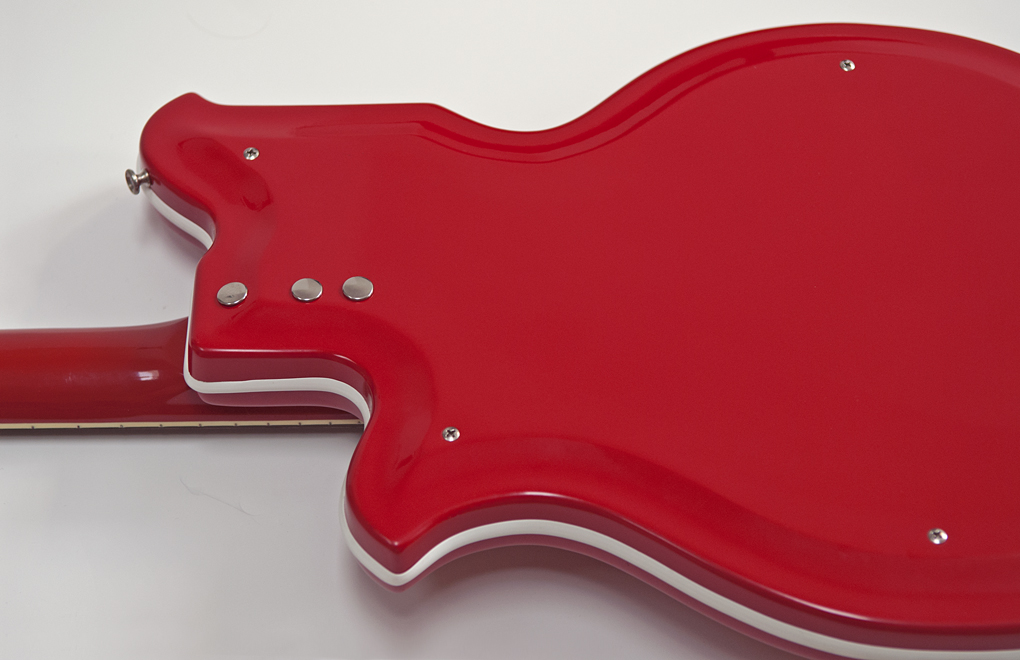
National
Chicagoan
ONLY $350!


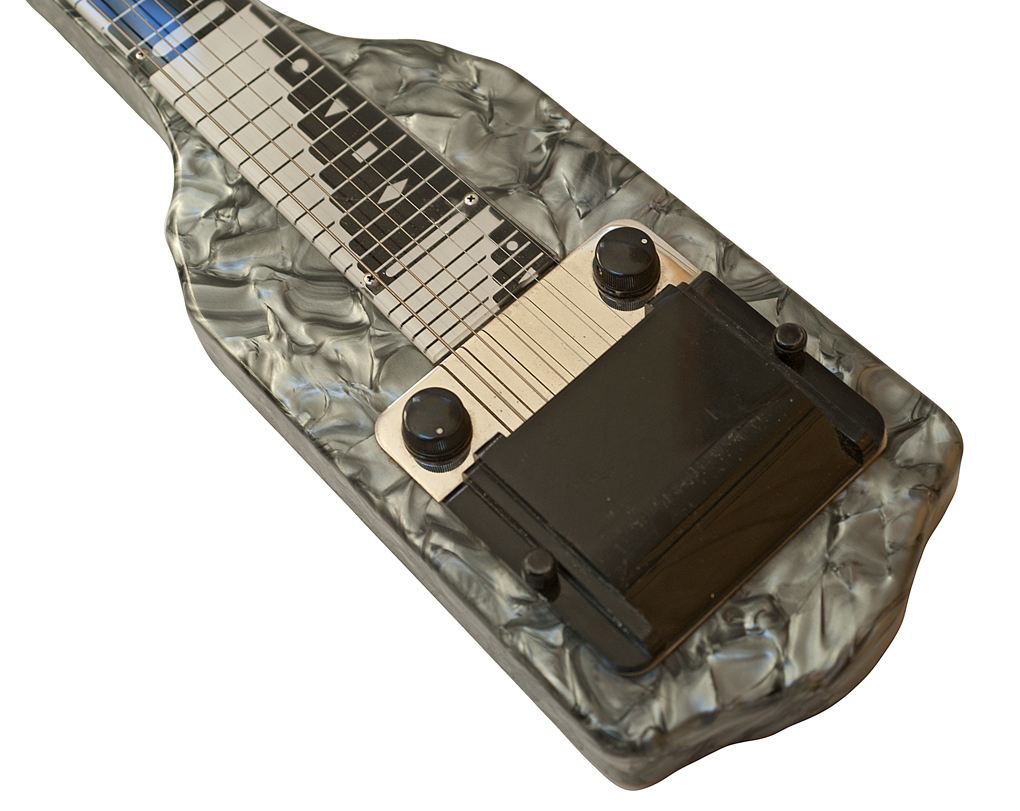
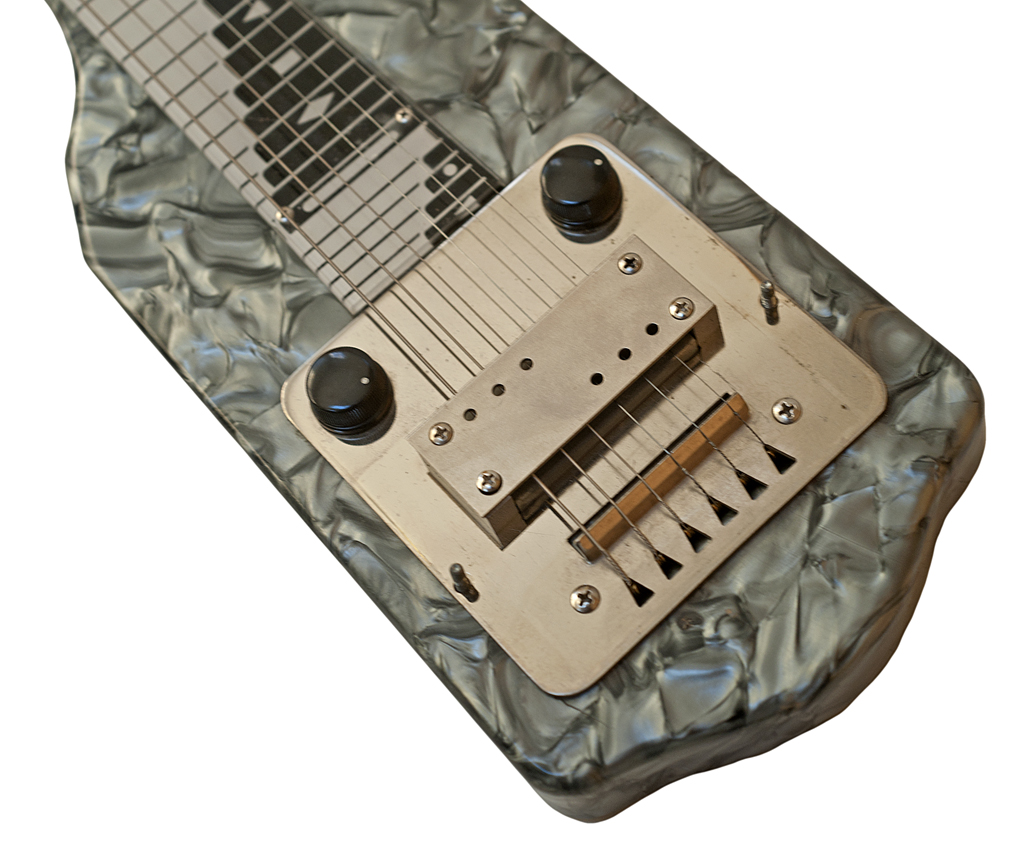
1930's Gibson E-150 Aluminum Body Lap Steel
Serial #231
with the rare first early version
of the
EH-150 Amp
A rare combination, after 80 years this is still one of the
best-sounding electric guitar pickups and still one of the best
sounding tube amps ever made.
An important piece of history, the first Gibson lap steel, and one
of the earliest solid body electric guitars, one of less than 100
made. This instrument comes with its original hard shell case.
Like Rickenbacker, Gibson also made their first lap steel guitars
with an aluminum body. These guitars had the same style of pickup
made famous by Charlie Christian on the archtop guitars he played
with Benny Goodman's band.
The amplifier is a beautiful example of the first extremely rare
version of a Gibson EH-150 amplifier, with square
leather-reinforced corners, in unbelievable condition.
The guitar has areas of natural corrosion on the aluminum.
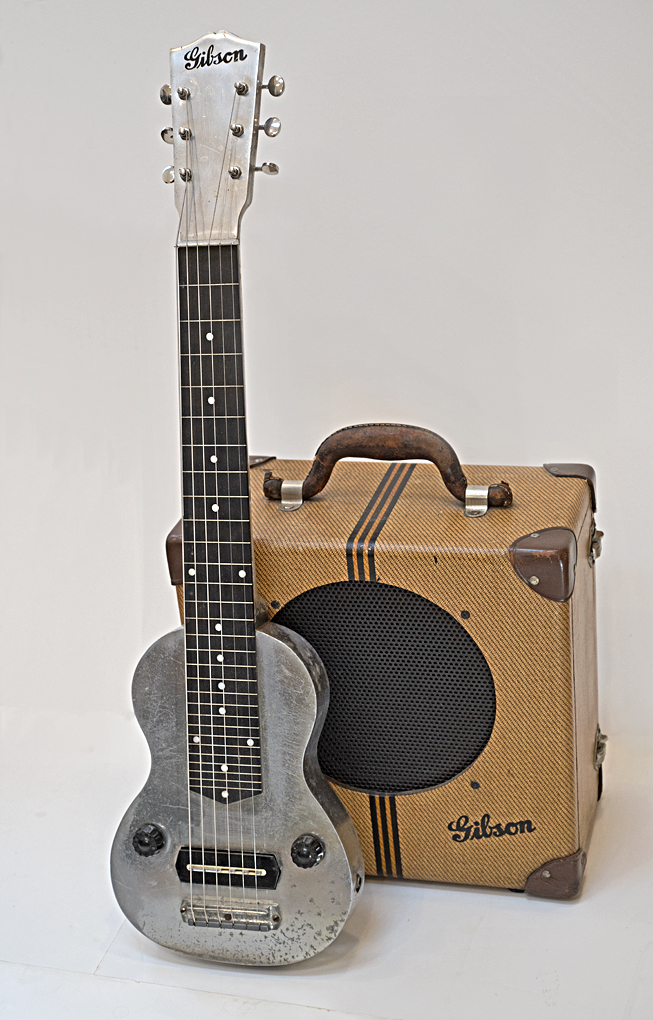


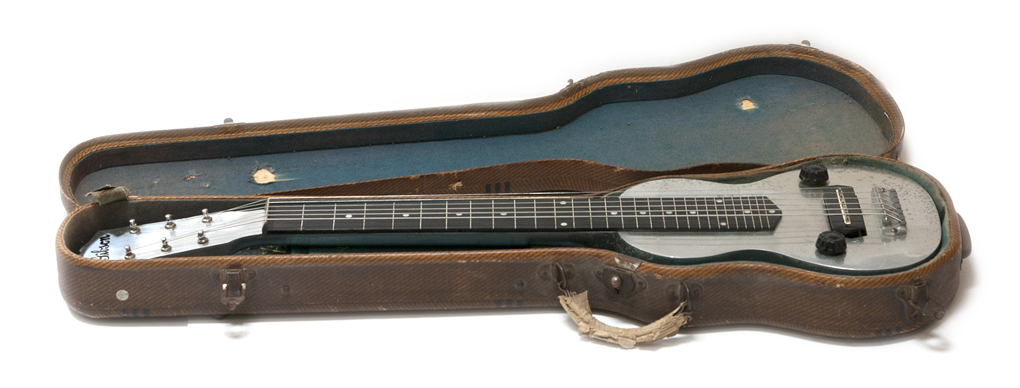
 Early Gibson EH-150 Amp
Early Gibson EH-150 Amp
Second Variation of First Version
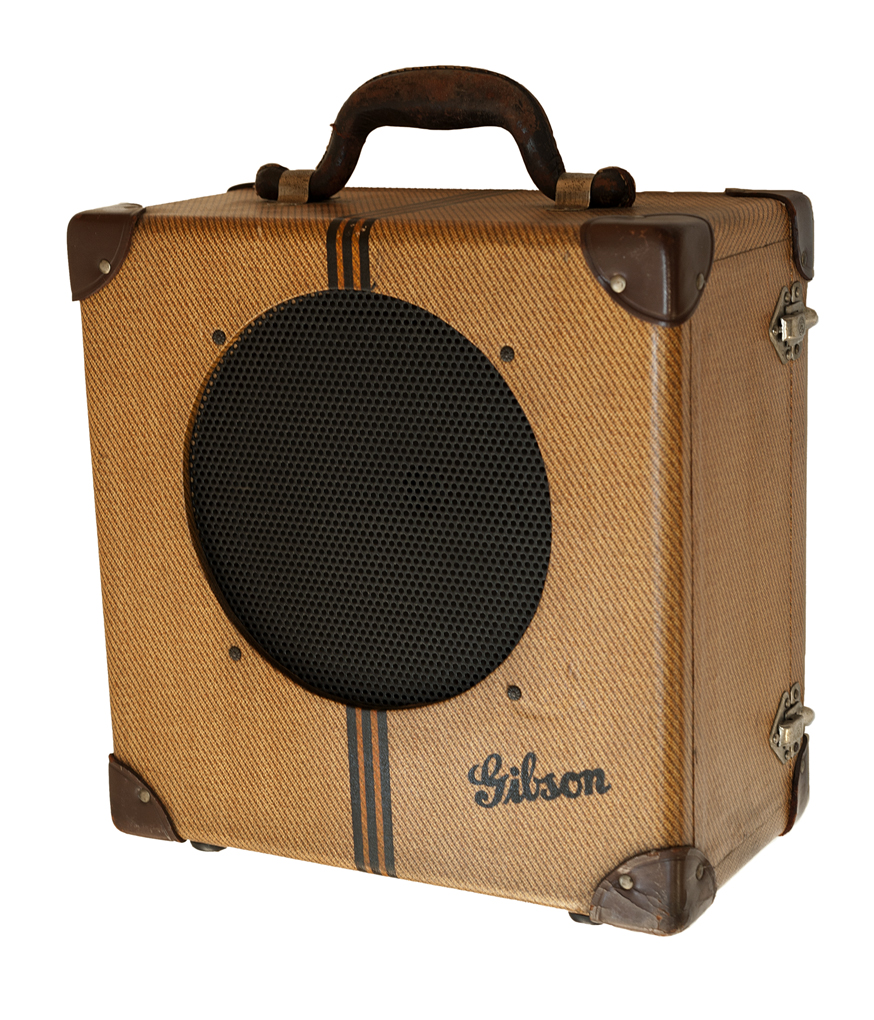
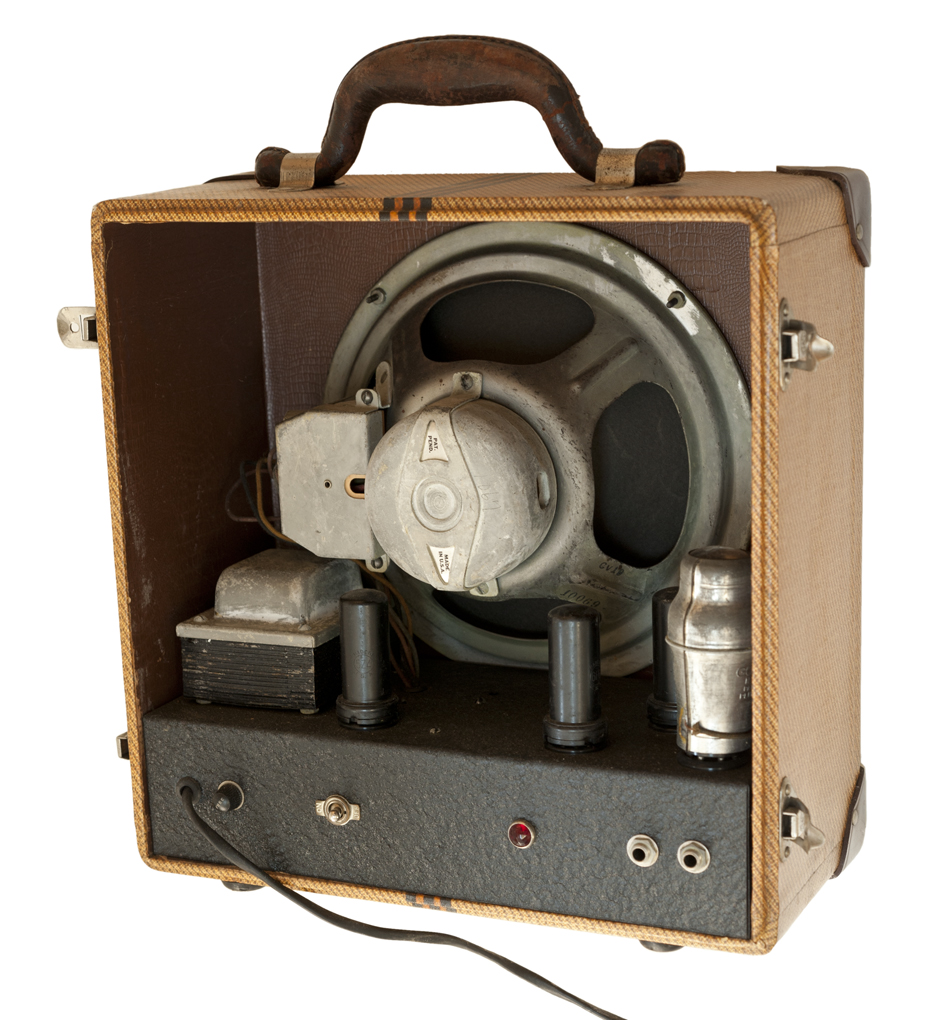
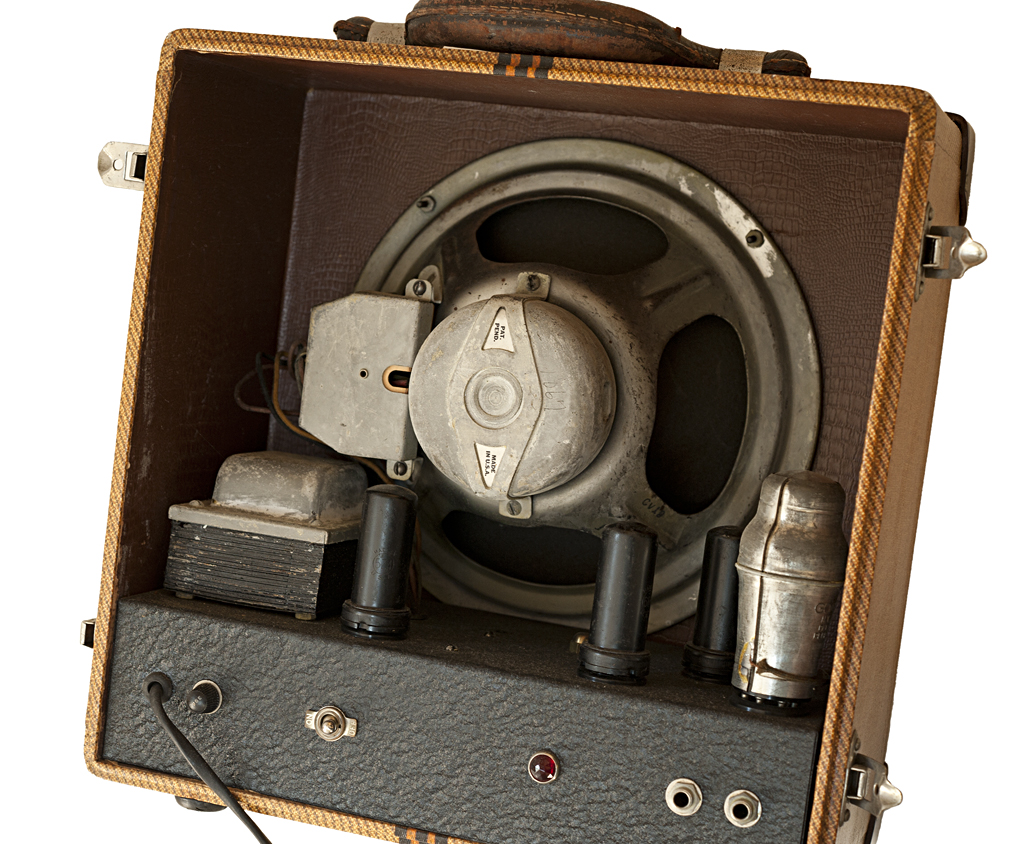
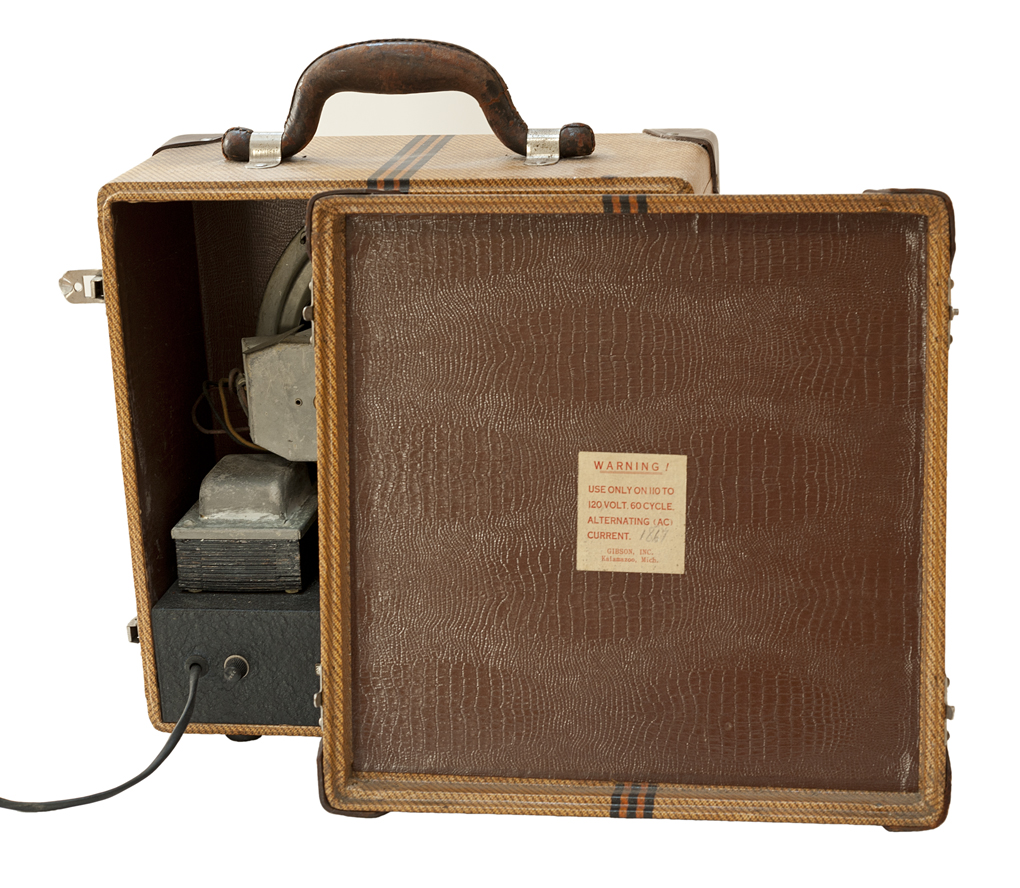
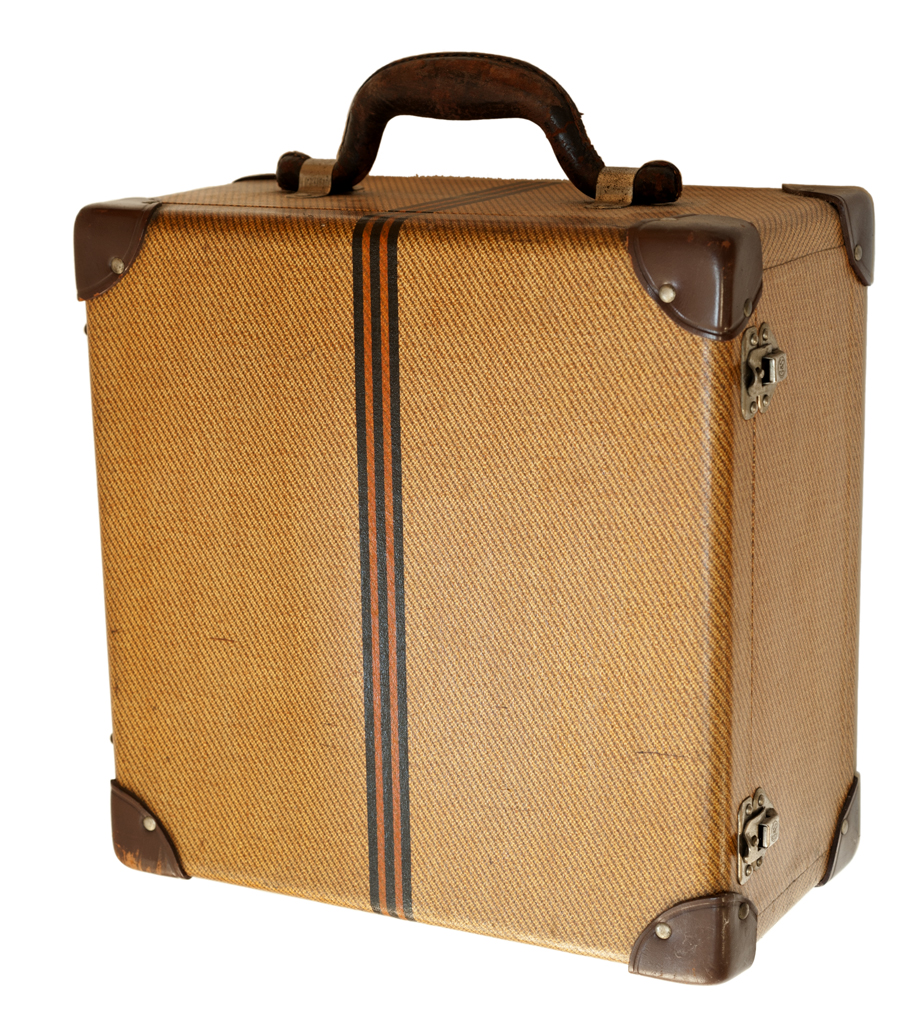
Rickenbacher 1935 Model B Spanish Guitar and
Amp
With
1 1/2" Horseshoe Pickup, in immaculate condition.
A rare variation with a Spanish style round bolt on neck replacing
the flat neck of the lap steel version, considered to be the first
commercial solid body electric guitar.
As originally supplied with early Rickenbacher amplifier.
There is no substitute for the amazing unique sound of a vintage
1930's 1 1/2" horseshoe pickup Bakelite Rickenbacher played
through a matched 1930's Rickenbacher amplifier, a '50's
Telecaster played through a tweed Fender amp,
or a 1930's "Charlie Christian"
pickup Gibson played through a 1930's Gibson amp, as far too few
people have experienced.
Rickenbacher produced only a small
number of Bakelite solid body guitars with the conventional round
neck.
This 1935 Electro B Spanish is the very rare round neck version–
it is not a square-neck lap steel. This significant model by
Rickenbacker is considered by many as the first real solid
electric guitar.
Noticeable features include the old
spelling of the name “Richenbacher” – now commonly seen as
“Rickenbacker”, and a string through design and bolt on neck that
presaged the Telecaster made by his California neighbor Leo
Fender.
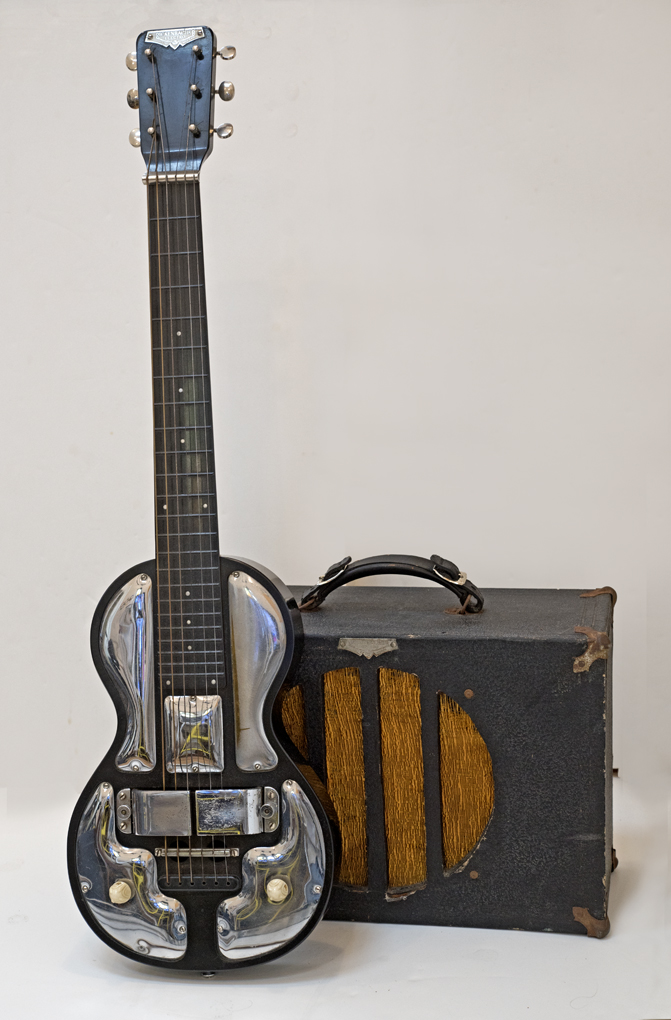
Rickenbacher 1930's Model B Bakelite
Hawaiian Lap Steel
A Bakelite version of the Model B also with 1 1/2" Horseshoe
Pickup, bolt on neck, strings through body, and five white plates.
Many lap steel players, particularly David Lindley, consider the
1930s Rickenbacker Model B Bakelite model the best sounding lap
steel ever made. This Bakelite version of the Model B, featuring
the pre-war 1 1/2" Horseshoe Pickup, bolt-on neck,
string-thru-body design, and white
plates, is nearly identical to Lindley's favorite six-string
Rickenbacker.
This instrument is in beautiful original condition with white
metal plates, concentric tone and volume controls, original
Waverly "Clover" tuners, and painted fret lines in perfect
condition.
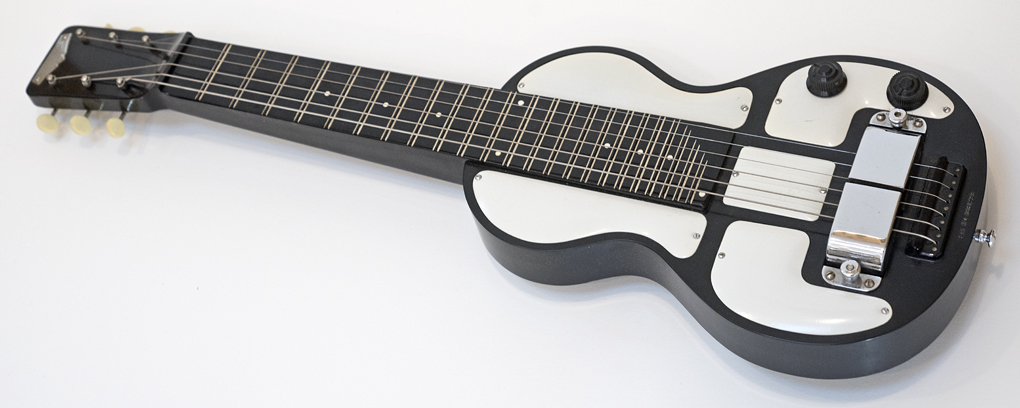
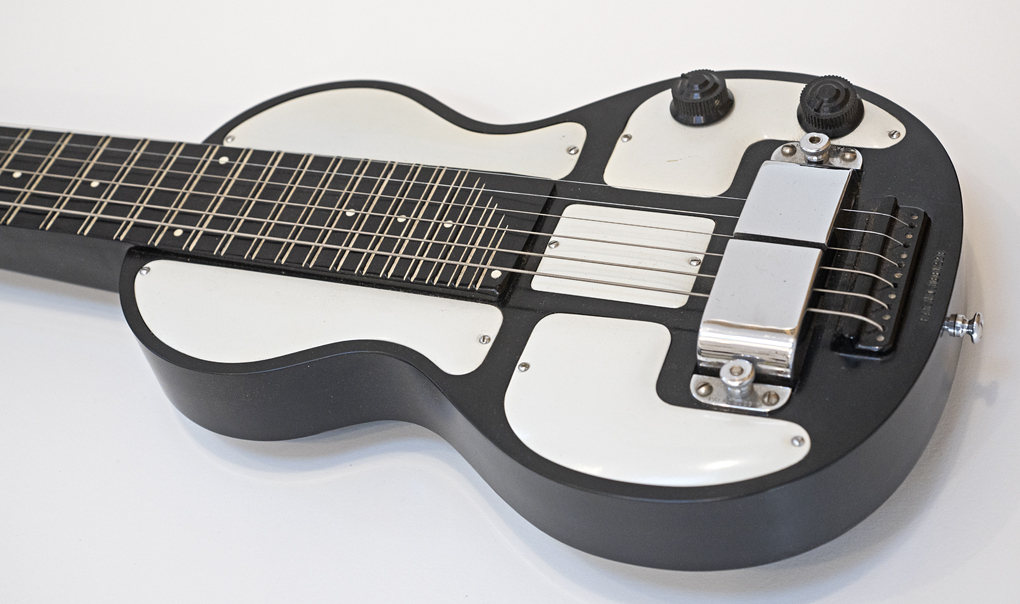
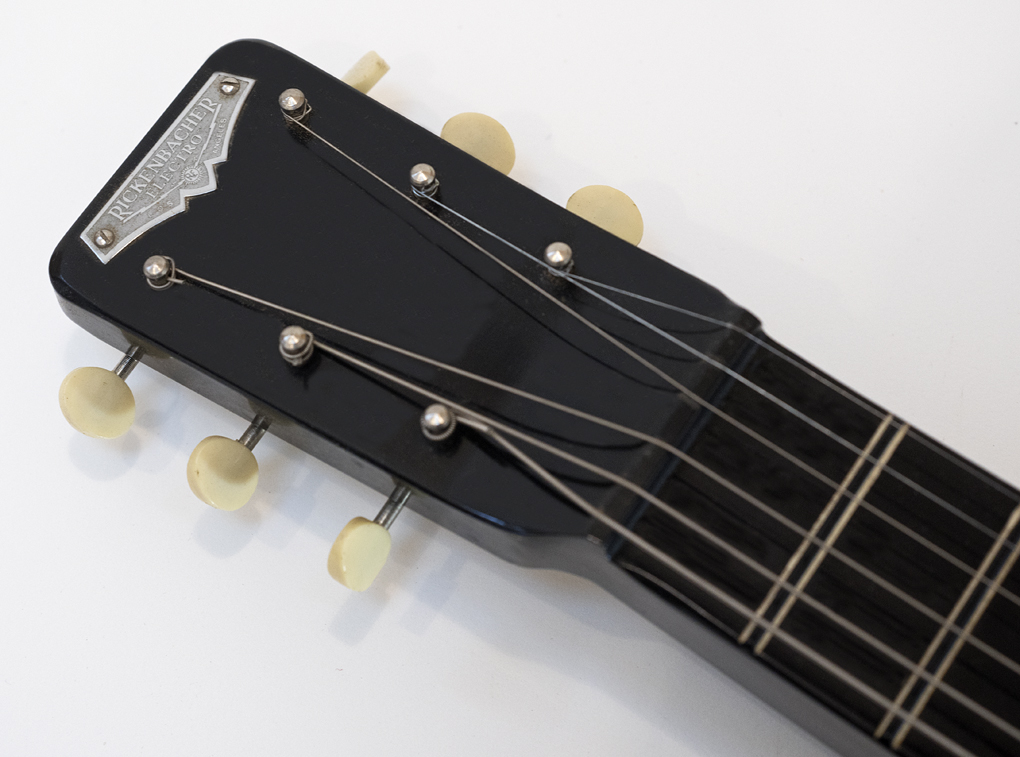
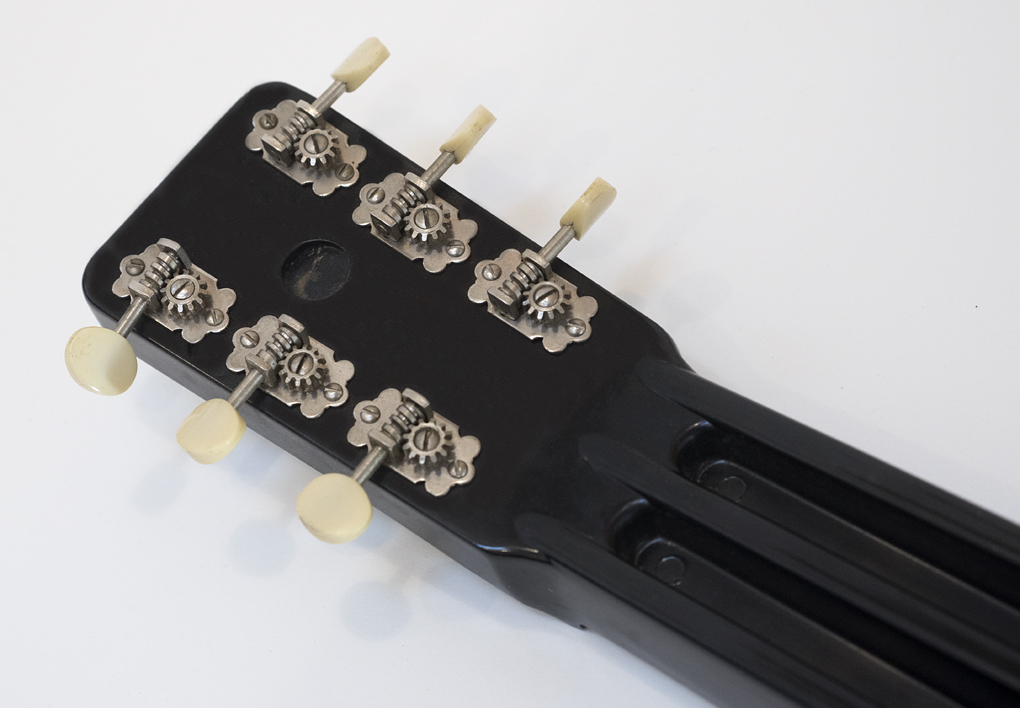
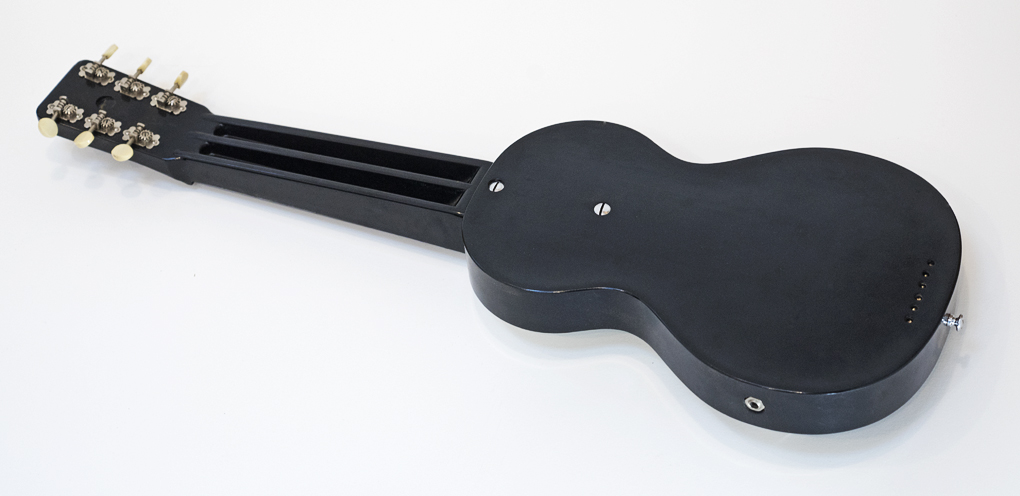
Rickenbacher 1930's Model B Bakelite
Hawaiian Lap Steel
A Bakelite version of the Model B also with 1 1/2" Horseshoe
Pickup, bolt on neck, strings through body, and five chrome
plates.
In beautiful original condition with natural wear and no damage,
this early version, with chromed metal plates, "arrow" opposing
side tone and volume controls, output jack facing the player, and
original Grover hexagonal tuners, preceded the white plate
version.
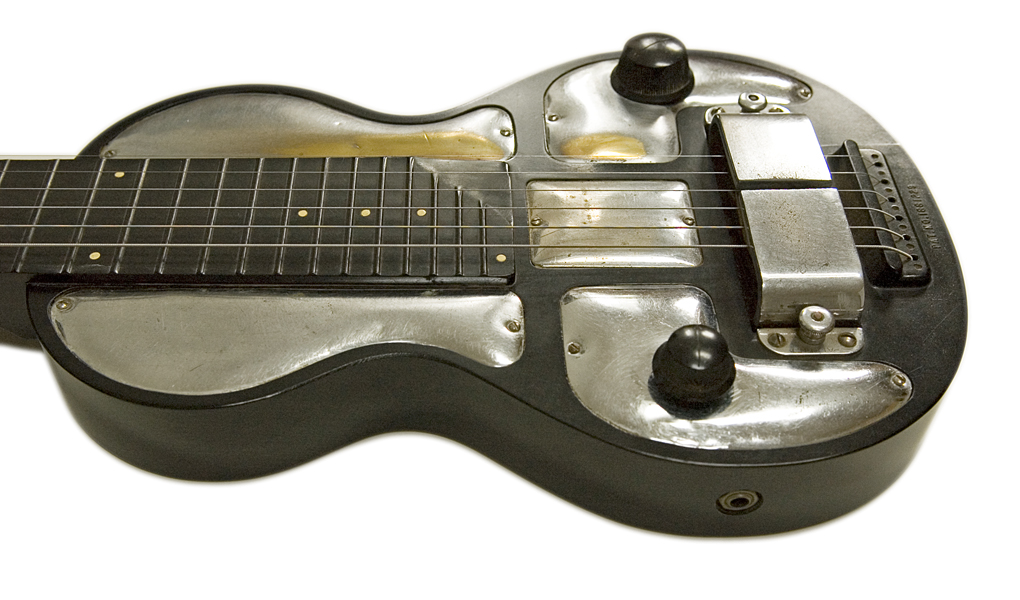
Notice the Rickenbacher influence on Leo Fender's Telecaster, with
the bolt-on neck and string-through solid body.
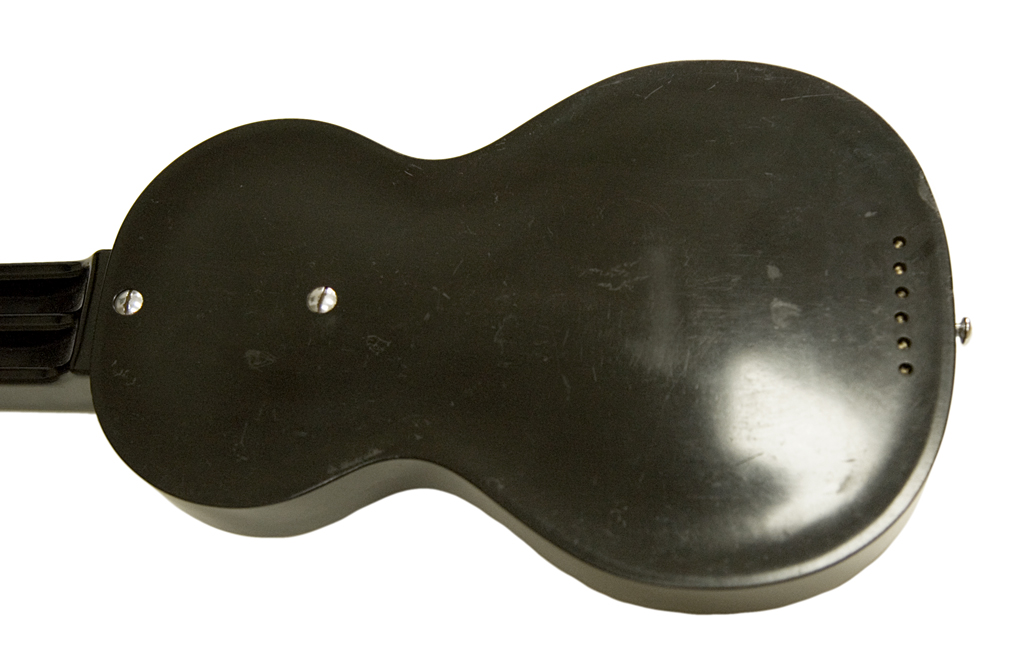
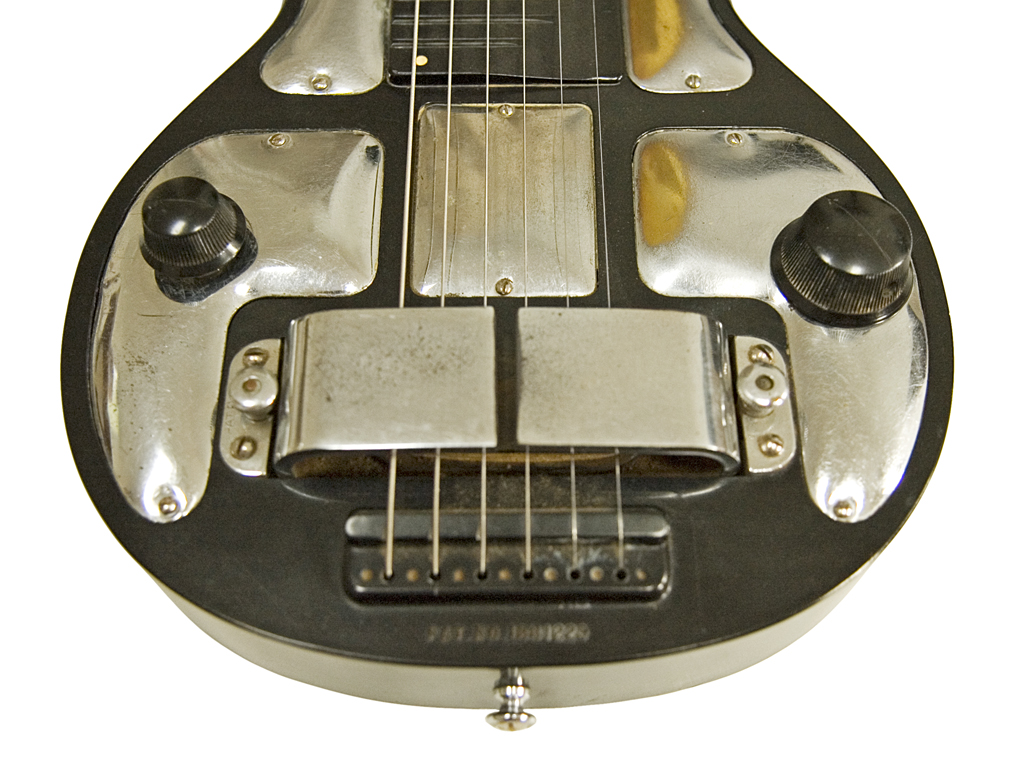
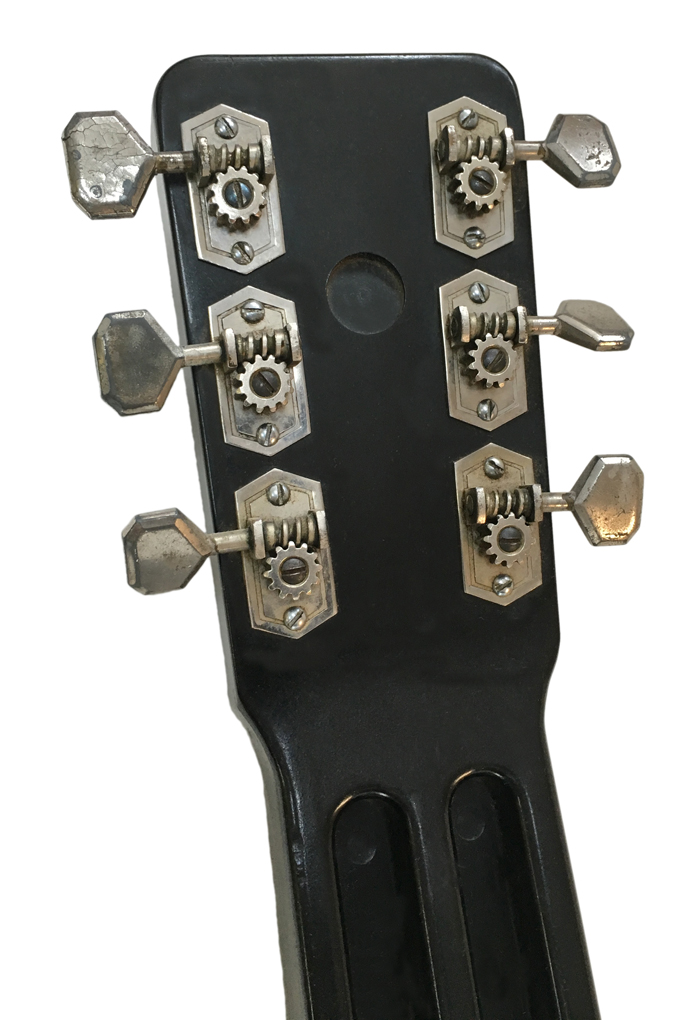
1930's Rickenbacher Silver Hawaiian
A striking chrome version of the Model B Lap Steel
A chrome version of the Model B with original black and white tone
and volume controls, original tuners, also with desirable 1 1/2"
pre-war Horseshoe Pickup. Discontinued after World War II.
First produced in 1937, Rickenbacker (nee Richenbacher) made this
model with body parts stamped out of sheet metal.
The stamping process was economical
and the instrument was often stuffed with crumpled newspaper or
tissue paper in order to eliminate unwanted resonances while
playing.
Though not a budget model, the Silver Hawaiian has 35 frets and a
chrome-plated hollow body. The first of these models had single
black volume control, but by the time this guitar was made in
1939, it featured a white tone control as well. No case.
EXC; shrunken tuner buttons (4), one missing tuner button.
New “Vintage” tuner buttons and easy to follow instructions
provided, slight rust near pickup.
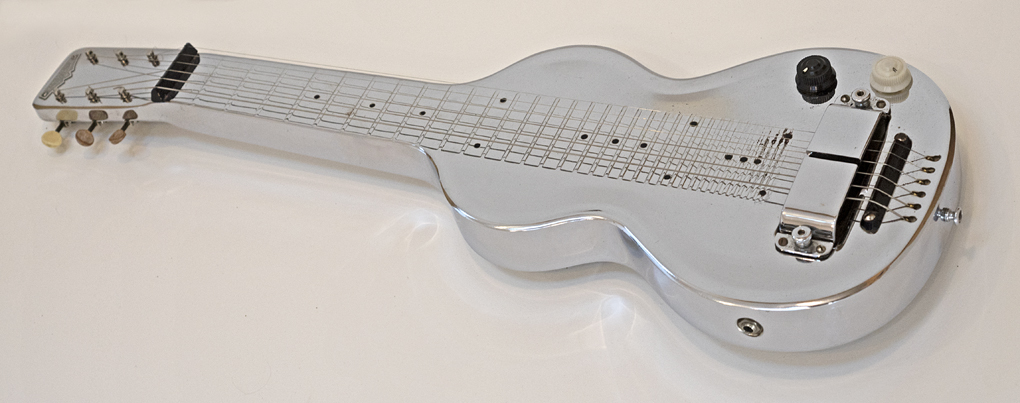


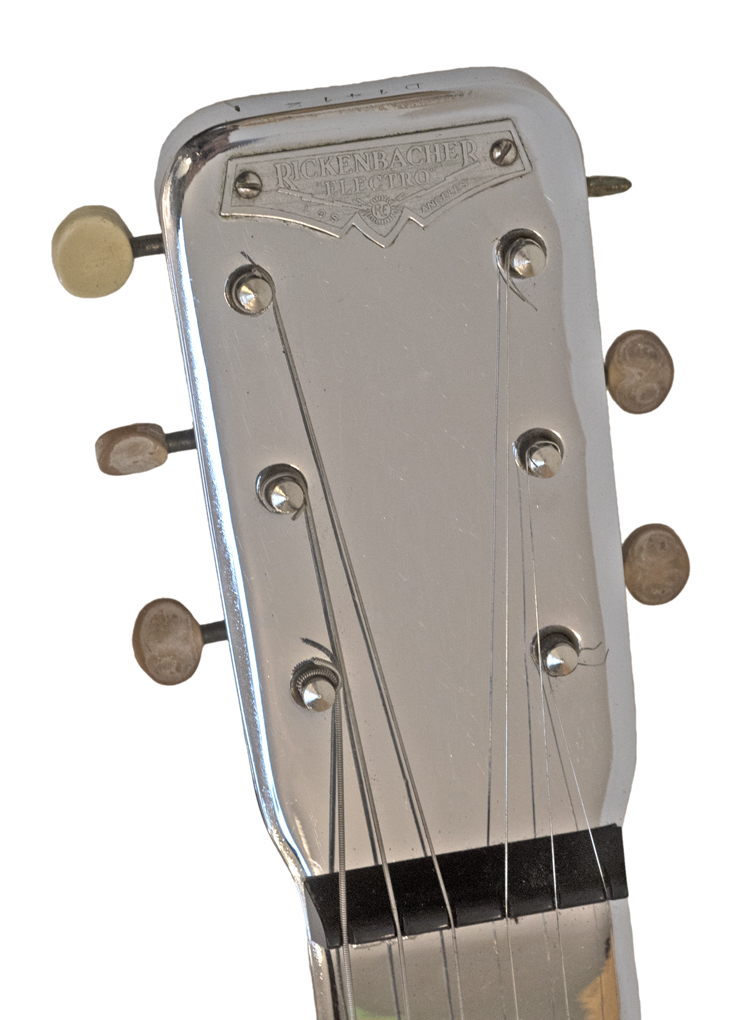
1957 Rickenbacker Model 1000
One of three short-scale guitars that were introduced in 1957.
The Model 1000 has one pickup and a neck-through body
construction. The production models were three quarter size
tulip-shaped guitars with a one piece maple neck, a Brazilian
rosewood fretboard with 18 original thin frets, and white dot
position markers.
Rickenbacker amended the shape
slightly in the last part of the year to include a new "cutaway"
feature. Original colors included brown, black, gray,
and natural.
All original with minor wear, original silver case.
ONLY $1600!
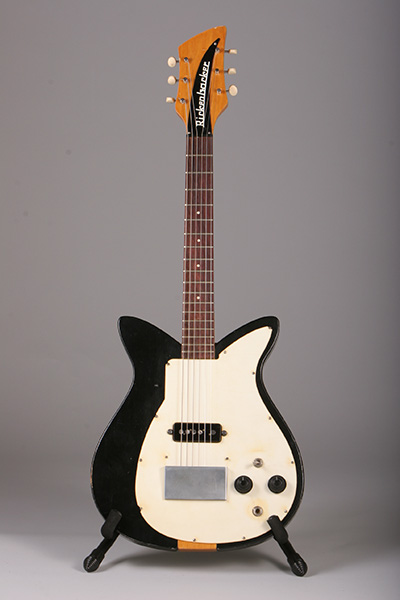
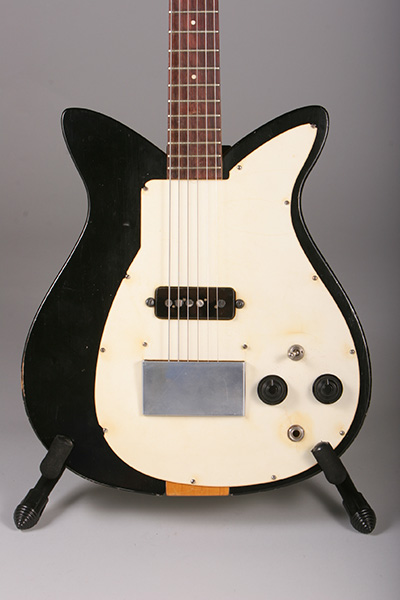
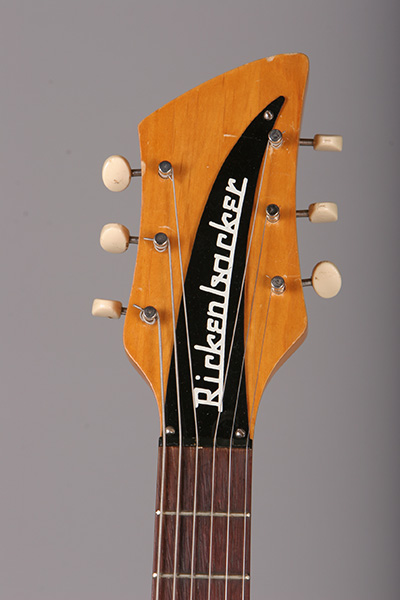
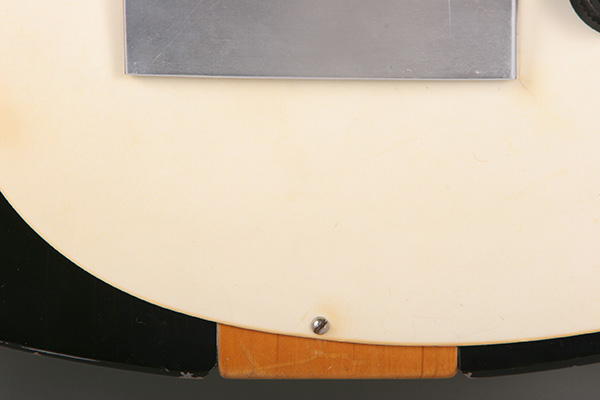
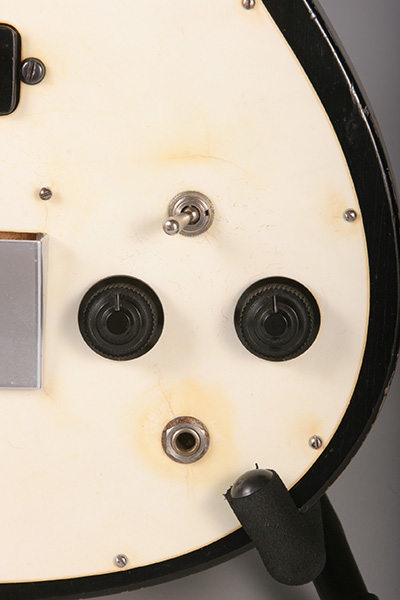
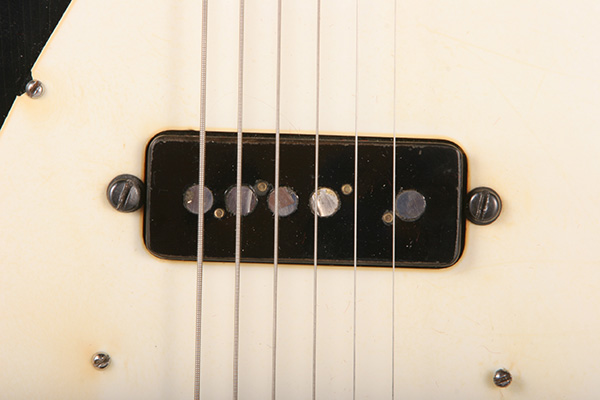
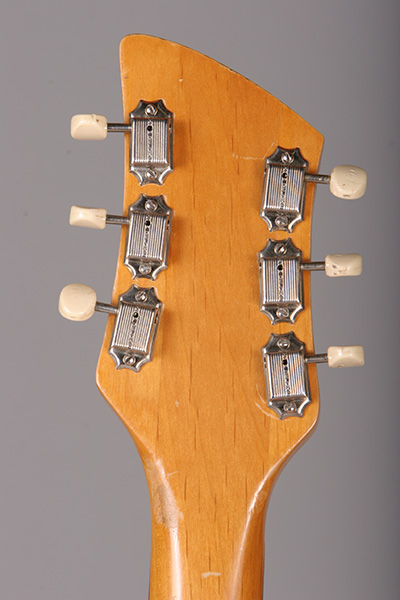
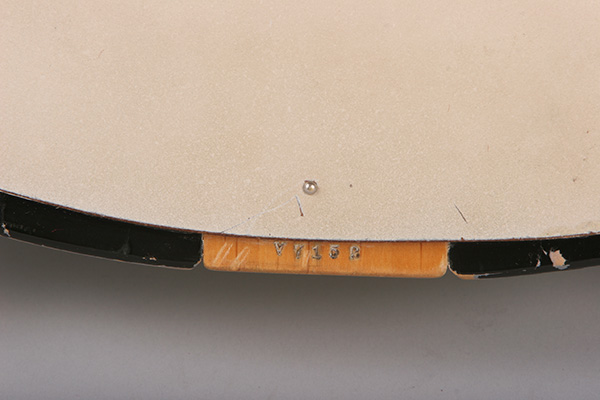
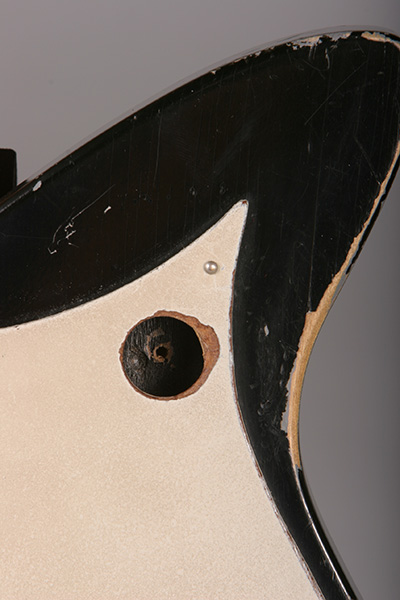
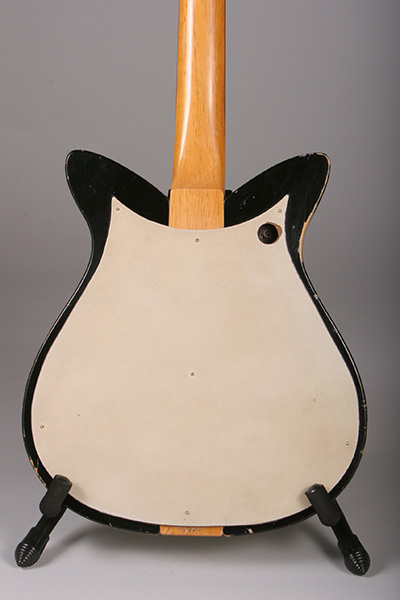
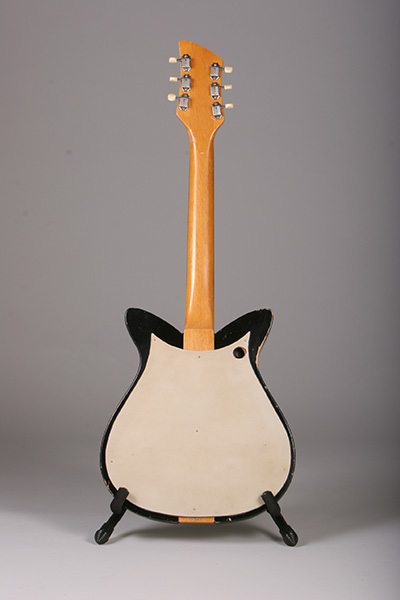
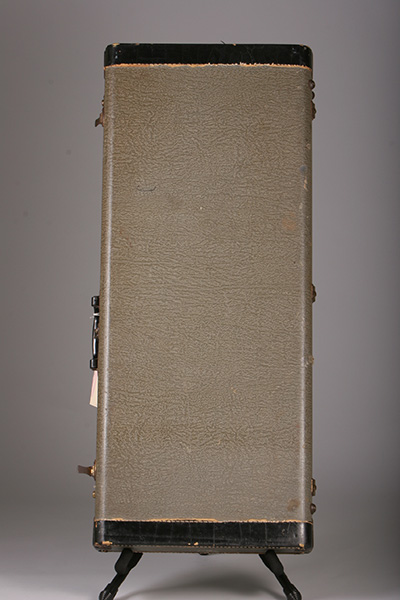
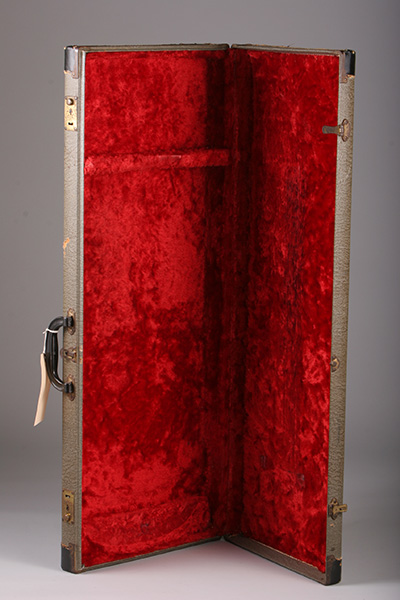
Rickenbacker
1956 Combo 400
with
tulip shape body
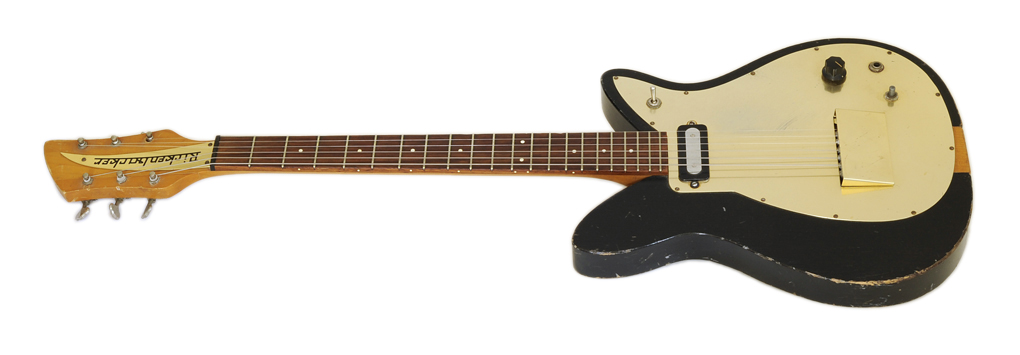
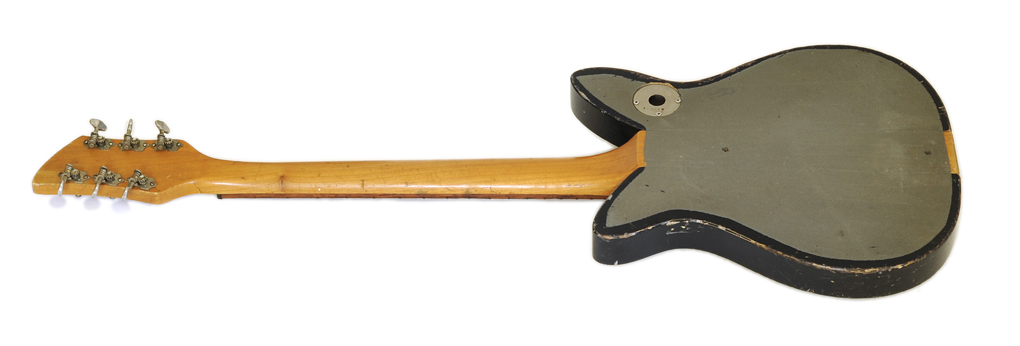 Rickenbacker
1966 450 12 String
Rickenbacker
1966 450 12 String
with
"Cresting Wave" Body
In beautiful all original condition with original Case
Rickenbacher pioneered the manufacture of the 12 string electric
guitar, as used by the Beatles and the Byrds.
The Rickenbacker 450 evolved out of earlier combo models in the
mid-'50s. Originally, the 450 used the Tulip body shape like the
Rickenbacker 400. Starting in mid-1958, however, the body was
changed to a Cresting Wave style like the 600 series. This
12-string version, the 450-12, was produced starting in 1964.
- SOLD -
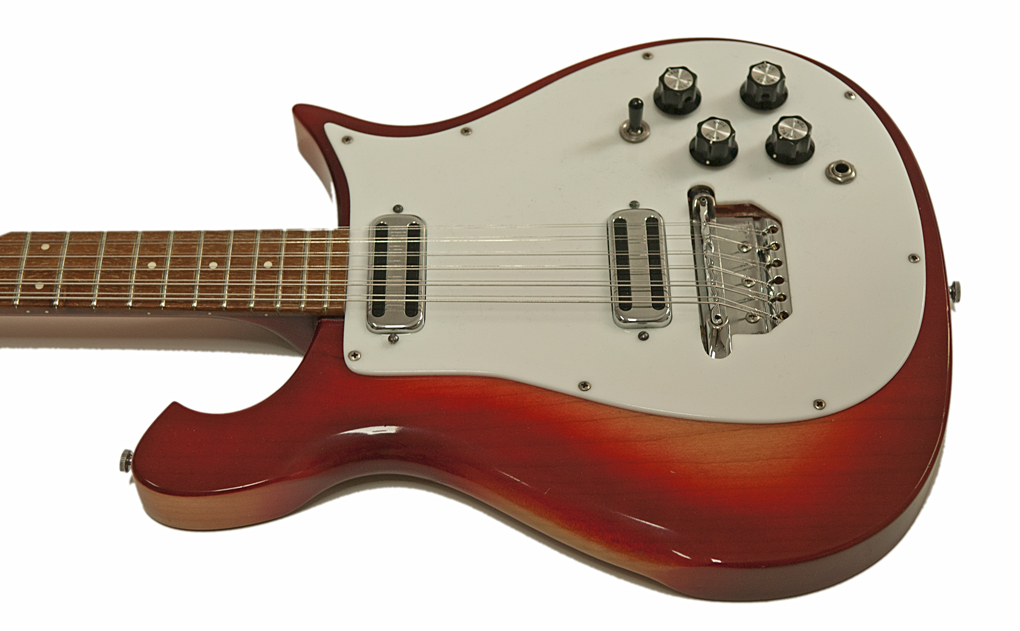
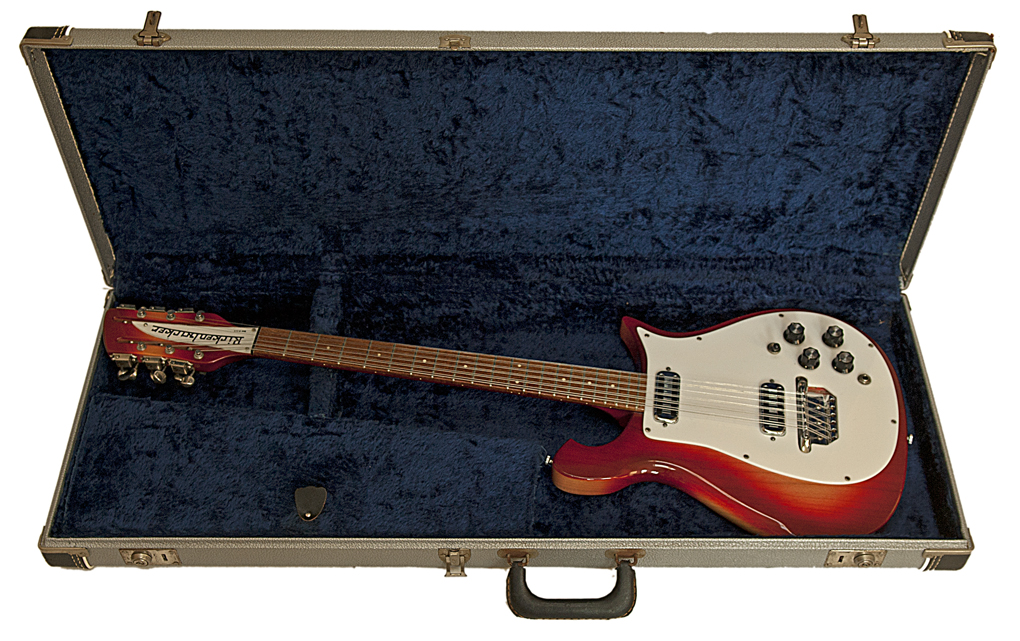 Kay
Swingmaster
Kay
Swingmaster
I'm usually a stickler for all original guitars, but when I saw
what a fellow in New Jersey had done to bring out the flame in the
maple which had formerly been hidden, it was love at first
sight. One of the coolest looking guitars I've seen, at an
affordable price that I couldn't pass up.
Beautiful Maple body, Bigby tailpiece, checkerboard binding, and
dual "Kleenex box" pickups. Ideal guitar for jazz, blues, or
rockabilly music.
VG; replaced Grover tuners, logo plate bent
- SOLD -
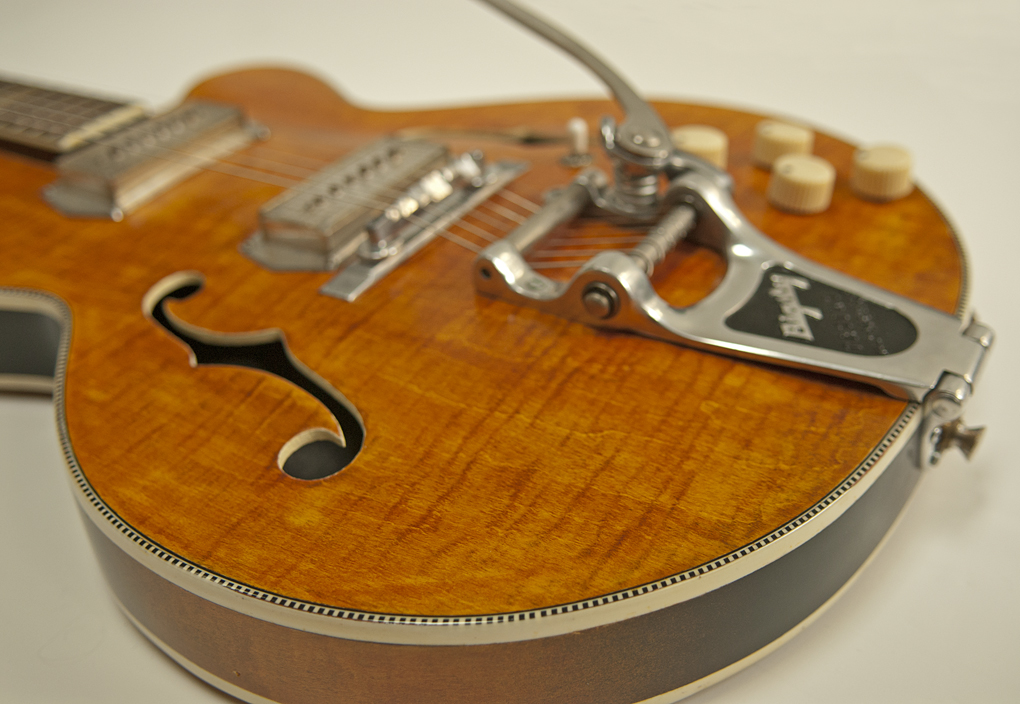 "Pre-Fender" K&F Lap Steel
"Pre-Fender" K&F Lap Steel
Serial #501
In 1944, Doc Kaufman, who designed the first guitar vibrato and
"ViBrola" for Rickenbacker, and Leo Fender, a radio and phonograph
repairman, received a patent for a new style of lap steel pickup.
In 1945 they set up shop as K&F Manufacturing to produce their
new lap steel, but one year later Kaufman decided to leave the
fledgling company.
Leo renamed his company Fender
Electric Instruments and, as they say, the rest is history. That
history started right here with this K&F Lap Steel.
Made in 1945 at Leo’s home, the body is made from maple and the
frets are painted directly onto the fingerboard. The headplate is
bent at one end to form the nut, the kind of clever manufacturing
solution that Fender would use time and again as he reinvented the
solid body electric guitar.
This guitar has the Kaufman and
Fender pickup, a style where the strings pass through the magnet
in a manner that recalls the function of Rickenbacker's horseshoe
pickup. K&F guitars are quite rare, and this model exhibits
the design for the single-coil pickup that Fender eventually
stopped using years later after his namesake brand established
itself in the guitar marketplace.
This guitar is number 501 of about
1000 guitars produced before Leo formed the Fender Musical
Instrument Company. No case.
VG+; fret markings significantly worn


Early Fender Princeton Lap Steel
#A158
One of the earliest Fender instruments available, this Princeton
Steel dates to the very first period of the Fender Electric
Instrument Company, soon after the departure of "Doc" Kaufman and
the changeover from the K&F partnership.
These early steels are the genesis
of the entire Fender operation, which was a very small struggling
local concern in 1947-8 with very limited production making all of
these first instruments extremely rare. This example is in
beautiful all original condition.
Princeton serial numbers are distinguished by the prefix
“A”. This example is number 158, an early serial number for
a Fender guitar!
The Princeton was the least expensive of a three-model line, but
the differences in the instruments were relatively minor. The lack
of a tone control and a hard-wired cord are all that separate this
model from its slightly more upscale brother the Deluxe.
All of these early steels were made
of whatever woods Leo had in stock.
The pickup is the famous Fender "Direct String" unit, which is
still considered one of the best- sounding steel pickups ever
designed. The aluminum fingerboard carries roman numerals
designating the positions and headplate has the inscribed "Fender
Electric instruments, Fullerton California" lightning bolt logo.
Original tuners are simple
non-descript openbacks made by Waverly. Despite its primitive
appearance, this is a well-designed steel with a great sound. No
case.
In beautiful condition.
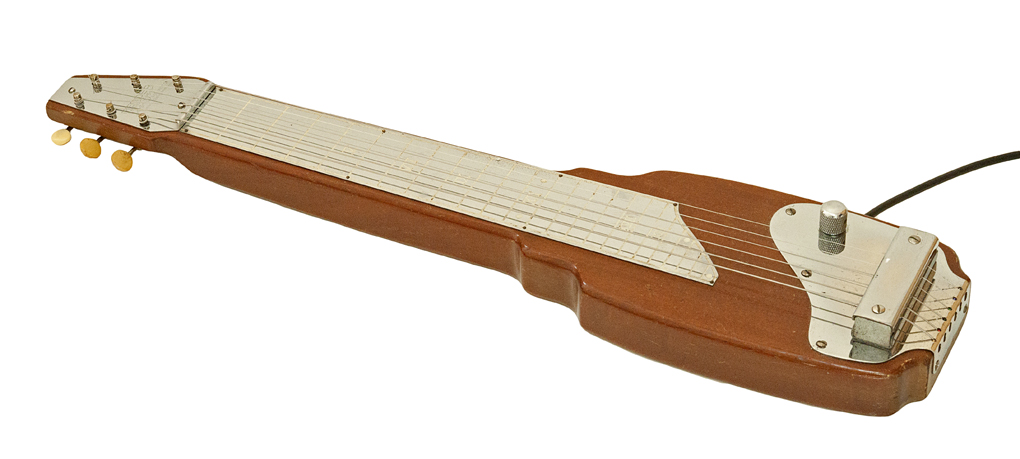
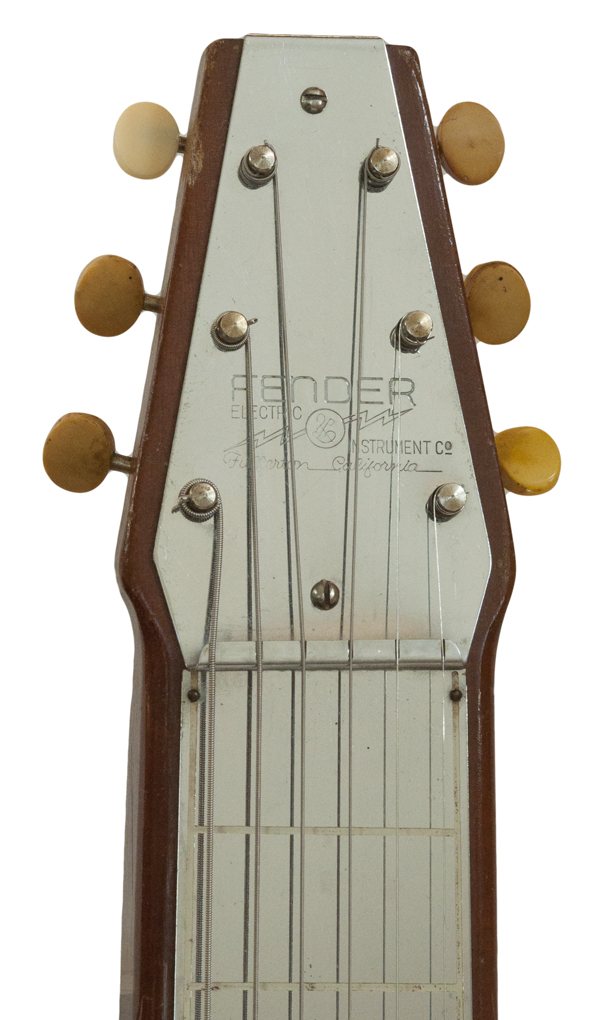
1950's
Fender Studio Deluxe Lap Steel
- SOLD -
The basic Fender six string lap
steel with legs.
Serial # 7215

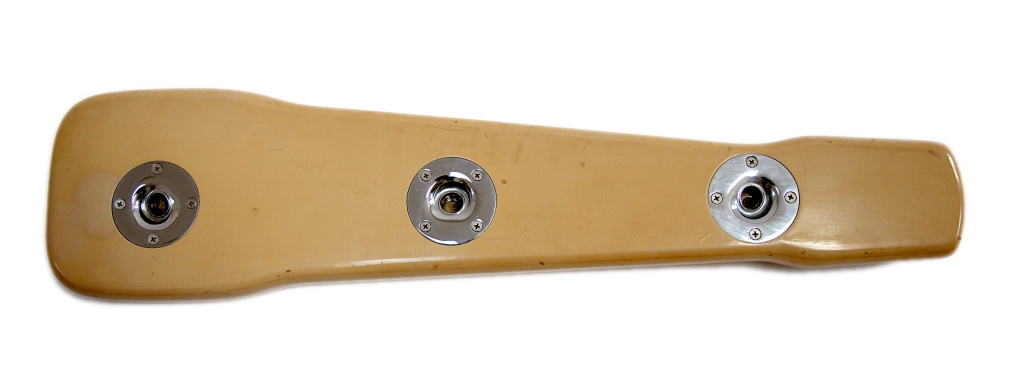
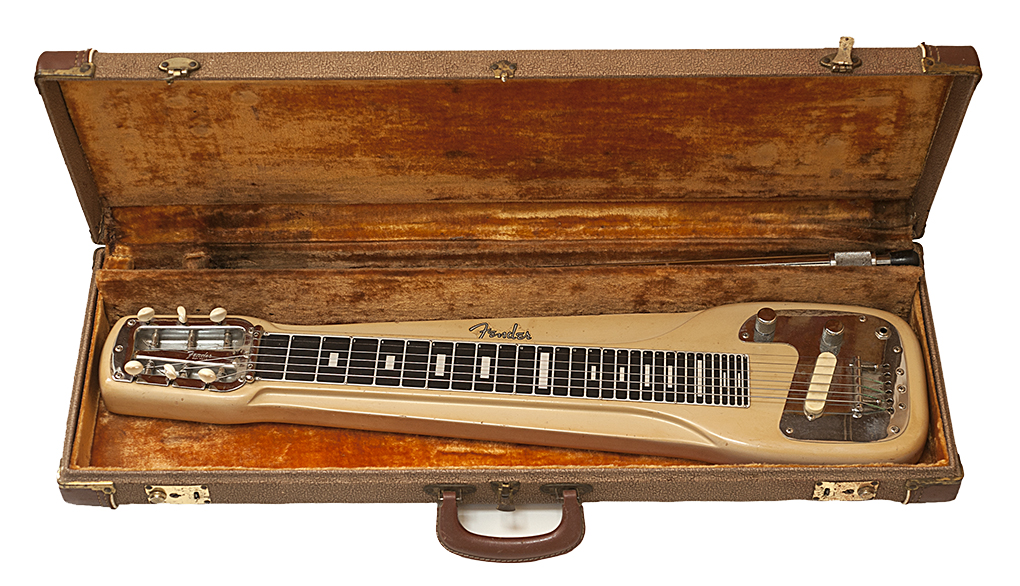
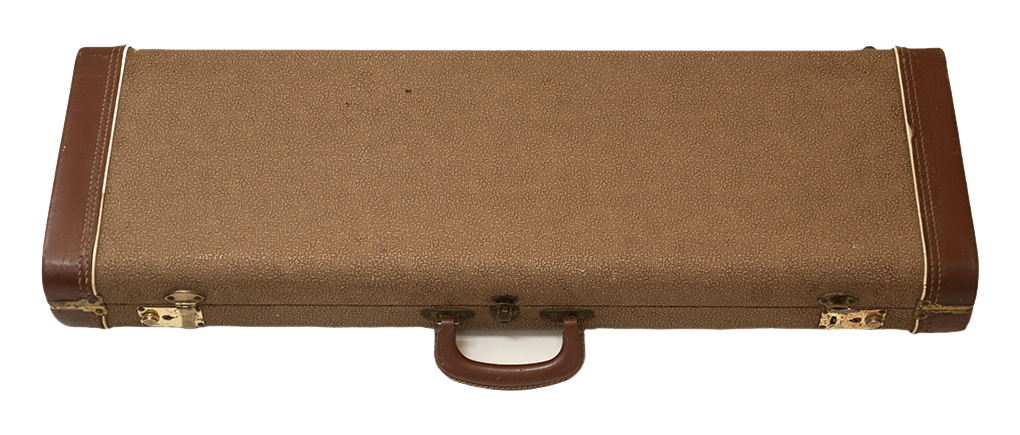 1950's
Fender "Forrest White"Lap Steel"
1950's
Fender "Forrest White"Lap Steel"
A special version of Fender's Studio Deluxe produced to honor the
Fender shop foreman Forrest White.
In beautiful condition.
- ON HOLD
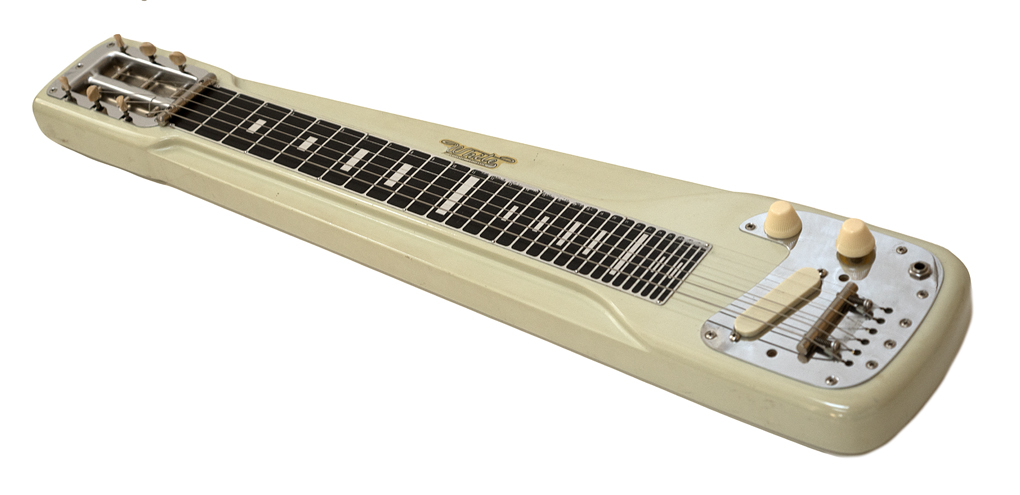
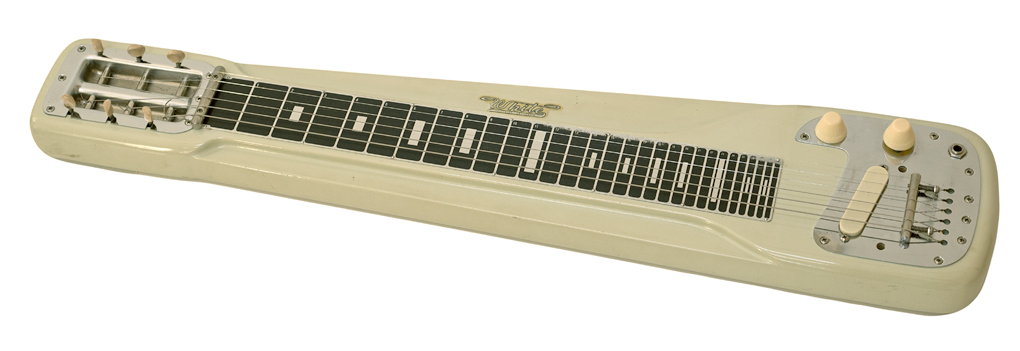
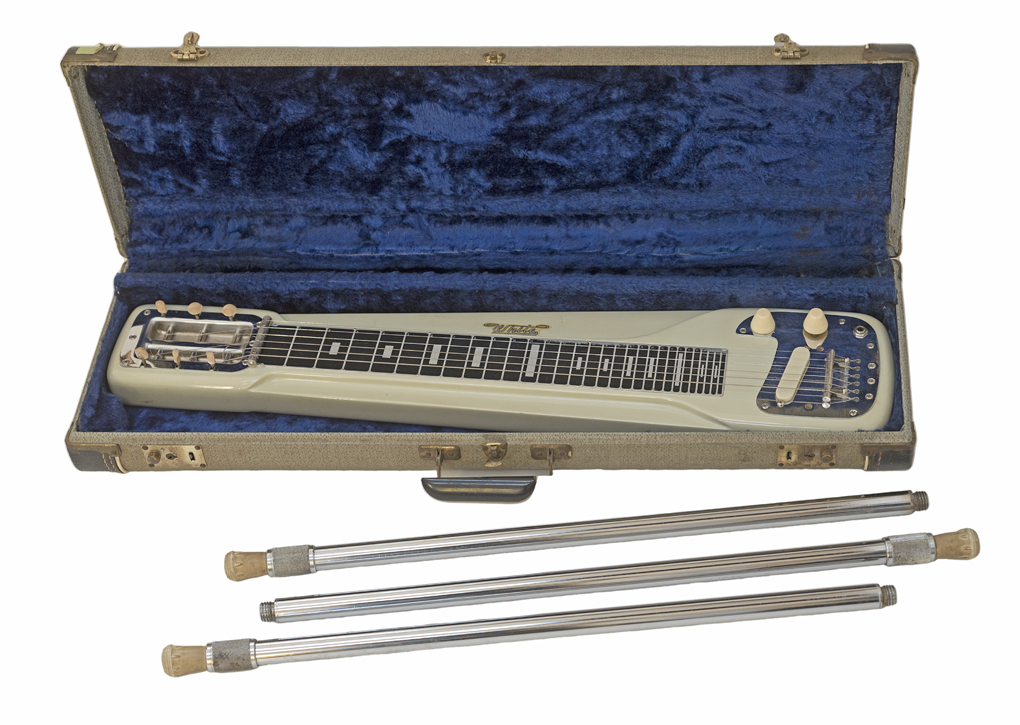
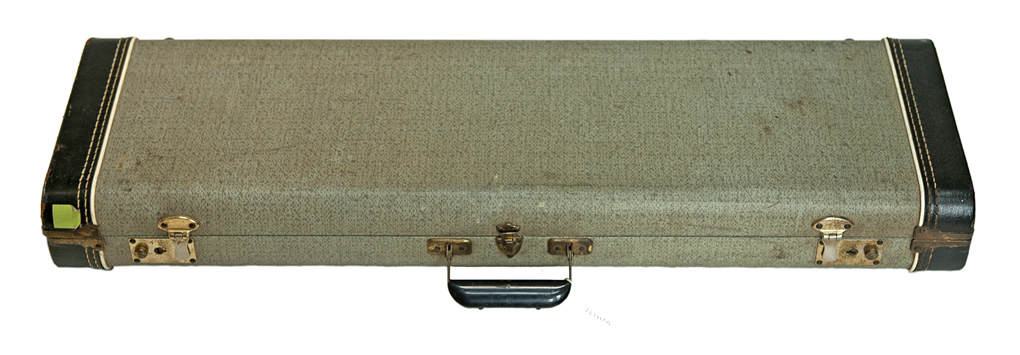
Fender FS-52 Lap Steel Guitar
This example is in perfect as-new condition, with original case.
The very first Fender guitars were no-frills lap steels, and they
were absolutely great. Even today, those first instruments have a
pure, singing tone seldom equaled since.
The new FS52 Lap Steel introduced in the 2000s is an authentic nod
to those great steels of the past. Features include a two-piece
ash body, a Fender Standard Stratocaster pickup in old style
housing, and chrome hardware.
New reproduction “As New” with original case.
ONLY $295!

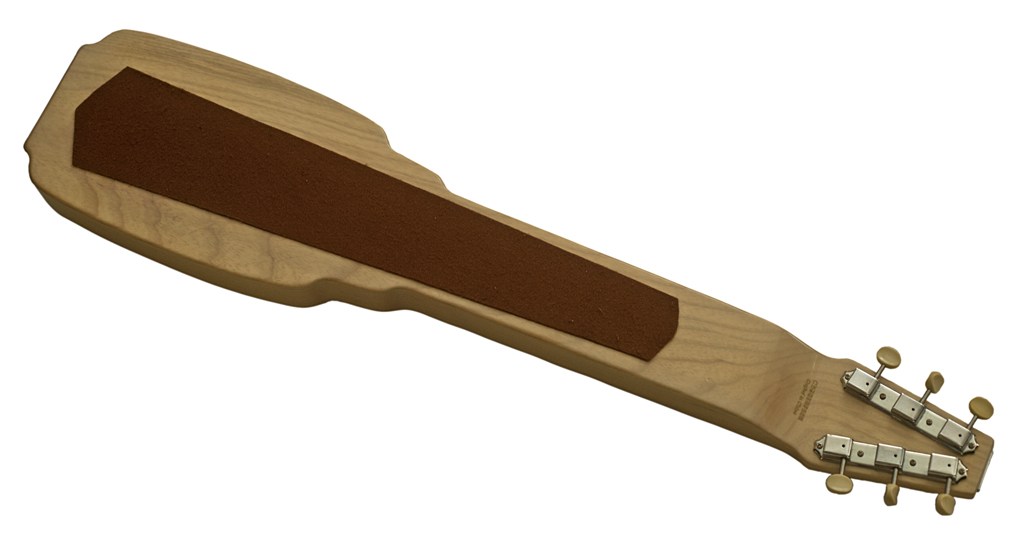
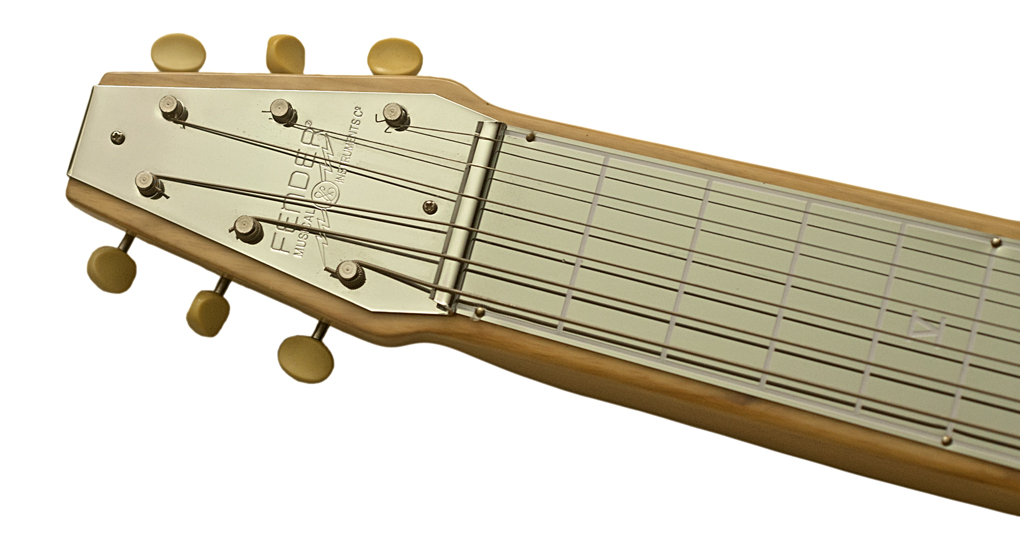
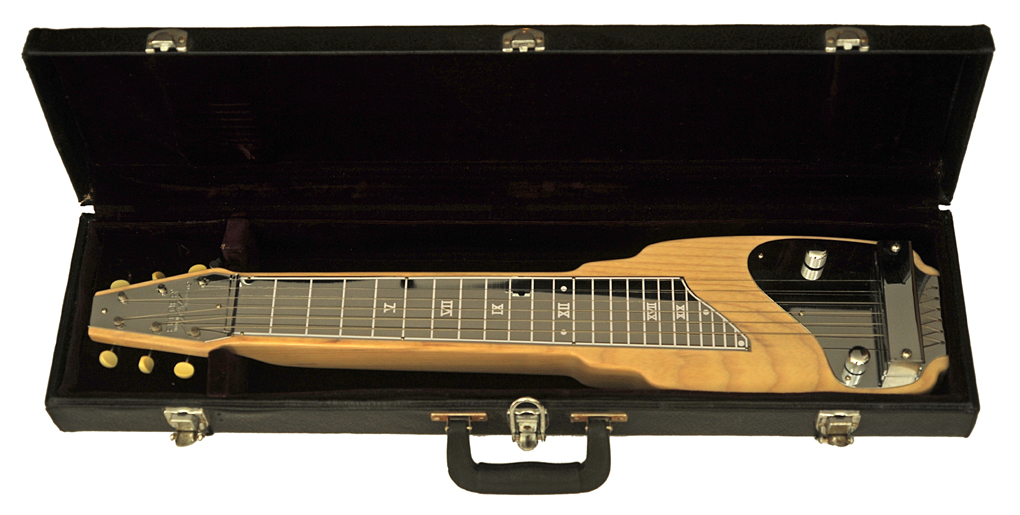

Feedback From the Buyers...
I've been equally happy selling to
serious players like Jeff Tweedy and those buying their first
serious guitar.
In the words of the buyers...
(not cherry-picked, or edited for content!)
1966 Rickenbacker 450-12
It arrived safely. And I love it!
Thank you very much. I will take great care of it.
1921 Gibson L-1
Hi Robert, Just wanted to say this beautiful, old
'grande dame' has found a home! First, I was taken aback on
what great condition it is in.
Can this truly be 95 years old? I can only hope I look a
fraction as good as this beauty when I'm 95.
Put some new strings on, tuned her up, and have been
playing pretty constant for the last 3 days. It has such a
great old bluesy tone with a hint of dobro in there.
I never imagined a 95 year old guitar could sound so magical.
Again, thank you for selling me this wonderful
L-3. It will be treasured, well loved, and well played.
1919 Martin 0-18K
Hi Robert, Well I have had a little time to get to know
this little koa gem, and to tell you the truth the sound is so
much more than I expected.
I anticipated the soft mellow tones that I have heard from
other koa guitars but this one has so much more going on.
Clear trebles, no tinniness well blended mids, deep and round
bass tones. What has most surprised me is the harmonic depth.
Mid tones and harmonics that make every note and chord fuller
and more complex. And sustain for days.
It is a pleasure and honor to be the guardian of this piece of
history, an important part of the Martin story.
Thanks, I'll be in touch again soon.
1933 Martin 0-17
Hey Robert, Hope you're well. I picked up the guitar
Monday morning and, after spending a few days with it, I love
it. Wonderful sounding and inspiring.
Everyone who's played it is quite honestly floored by its
resonance. Thank you for connecting me with her.
Have a great day today.
Warm regards.
2006 Martin Ditson 111
Hey Robert; Guitar made it ok, was hard to wait to open the
box, felt like a kid at Christmas. It was worth the wait
though, I love the guitar!
I'VE NEVER played or sounded better,
the tone and the sustain as well as the clarity is
excellent. The action is great and for the wide neck it
is really fast.
Flatpickin, fingerpickin, strumin, it
all sounds great and as loud as you want to make it.
The harmonics are beautiful, I have
lost some of my tone perception due to being around and
working on jets for 20 years but I can hear this guitar which
makes me very happy because I love to sing as well as
play.
I'm sure that I will get many years of
enjoyment from this instrument. Thanks for your patience
in dealing with me, I know that you have a lot going on. Thank
you Robert
1919 Martin SoCal 1400
Guitar arrived, she's beautiful.
Thanks!
1926 Martin00-18
Hi Robert, it arrived safely - and it's beautiful!
...it's in great shape for such an old instrument, so I'm
really pleased.
1930 Martin 2-17
Hi Robert, I just picked up the 2-17 and put some light
nickel strings on her...Wow...a very nice voice and a
surprising amount of volume from such a petite guitar!
Thank you for selling her to me. I play a lot of old
blues and depression era music, and the 2-17 really works well
for that kind of music.
1926 Gibson L-1
Hi Robert, I received the old warrior and it has arrived
safely . I'll keep you posted on its recovery.
It's seen some heavy playing during its life and it'll be nice
to see it back in action !
National Dynamic Lap Steel
Hello Robert, I went to the Post Office and got hold of
the National Dynamic which is looking and working fine as you
know…
No problem during transfer thanks to your safe
packaging. Very nice lap steel, and so light too!
Thanks too for the spare set of strings!
Many thanks again for an excellent transaction!
1953 Gibson J-185
Hi Robert, Thanks for the email. Yes, cash the
checks. A few comments for now.
1. I opened the case (great fitting case) on Saturday to play
with friends. You were not kidding about the old strings....
those strings were pretty old. I did play it all
afternoon in spite of that and it sounded pretty good.
And it is supremely comfortable in the
lap.
2. Action is great... Nice tone- more mellow than I
expected (good thing) with that mid-range Gibson tone.
Nice defined bass that isn't boomy. You can feel the
notes in your chest even when playing quietly.
3. The refin was pretty well done with what looks more like a
varnish/flat than glossy finish. I see what you meant
about the round hole but it is pretty inapparent. Inside
looks like the pictures.
4. I changed to the new strings Sat night.
5. New strings (my first time using Martin strings) took
about a day or so to settle in. Played them Sunday and
last night. They do sound better and play better.
I do flatpick more than than strum but
I can see this as a great guitar to play and sing with others.
Probably more than you want to know but you described it very
accurately and I do think it is a keeper.
I probably didn't really need another
guitar but it's tone and sounds are sufficiently different
from my Martin-like dreads or even OMs to play it a great
deal. Particularly out with others which is good thing.
Thanks much for hanging in there with me on this.
Early Martin 2-20
Thank you again for selling me the 2-20 and fulfilling my
dream of owning a early Martin. Working on it will be stellar!
...Attached are photos of the repairs I did on the inside of
the 2-20. It is coming out fantastic !
1966 Martin D-12-20
WOW!!!!
Got home, gave the guitar five or six good tunings, and
started playing. I told you about my broken left hand,
but on this guitar my fingers just automatically go to the
right place without any pain.
The volume is tremendous and the tone is wonderful. No
trouble finger picking, either. The left hand pressure
required is actually less than that of my classical guitar...
This twelve string has a lot of sentimental value to me, as
well as musical value. Thank you for making it available
and for working with me to make the purchase possible.
Stay well. You still have a lot to contribute to this
part of our culture.
Thanks again.
1933 Martin R-18 Archtop
The R-18 has been a real joy to play.
1941 Gibson L-4 - As Is
The L4 shipped AOK. I'm kind of liking it as is. Needs those
new frets dressed and some binding but it plays surprisingly
well.
1947 Gibson J-50
Thank you so much for getting the Gibson J 50 to me. It
arrived safely yesterday and I had a chance to play it. It
sounds incredible! Words don't do it justice.
Thank you very much!
1941 Martin 0-15
i LOVE the guitar! it sounds beautiful!
...i really love it, so excited! and thanks for the photos :)
1927 Martin 0-18K
Well the guitar arrived today. I've had a chance to spend a
little time with it, and it truly sounds terrific.
...It definitely has 'that sound', and I'm extremely grateful
that you allowed it to leave your collection and find it's way
into my stable.
Thanks again Robert, & I'll keep an eye out for you on the
forum.
1934 Martin 00-40H
While I imagine you feel a lot of joy from what you're doing,
I've come to realize the great responsibility you've accepted
along with that joy.
Your research, clear, explicit
photography, and your documentation is a lot of work.
You're leaving a permanent gift to humanity by what you're
doing.
Thanks for getting me involved in a
small way.
1936 Martin 0-17
HI again. May not remember but I bought a 1936 Martin
0-17 from you a few months ago. Just writing to say that
after a modest investment to have the neck reset and some new
frets – this guitar is amazing.
My luthier was very impressed by the
build quality – even for this (at the time) low end
Martin. I am amazed by the tone, and the volume, of this
little guitar. I love it. thanks again – money
well spent.
1942 Martin 00-18
Hi Robert: Finally made it home around 1:00 a.m., double
o in tow. What a great guitar! I will enjoy getting to know it
better. It was a pleasure meeting you, wish you well in your
endeavors.
1943 Martin 000-18
Hi Robert, Regarding the '43 000. Spending further
time with it yesterday morning I recovered my appreciation for
it's sound. It is a fine-sounding guitar.
Its strength is more subtle with very
good string definition, especially in the mids and highs which
are particularly nice, and it has nice sustain, especially in
those ranges.
I took it to two vintage dealers and
one top notch vintage luthier in town yesterday. They all felt
it was a very nice guitar, structurally sound, despite the
repairs, with a very good sound.
I think I'm going to wind up being
happy with it, even though it doesn't do everything, which is
why I have several guitars.
1942 Martin 00-18
Hi Robert, The 00 arrived safely, thank you. I
want to tell you that I love both of these guitars. They
are indeed very different and will allow me a wide range of
musical expression.
As I spent more time with the 000 this
week my love affair with it deepened, and I was hearing more
and more subtle tonal detail and dynamic range in that old
wood
as I found it was inspiring me to play
different material and to play old familiar material in
different ways.
And I love how light it is. It's very
exciting to be discovering more of its character as I continue
to play it. The 00 is equally delightful but totally
different.
It really growls when I dig into some
of the country blues I like to play but is a strong strummer
as well for old time stuff and vocal accompaniment.
I'm quite sure I'll be using and my
playing both of these for a long time, and I very much
appreciate your making them available to me and "matching" me
up with them.
Again, I am delighted that you let me
have this guitar.
I hope that you had or are still having a nice visit with your
father. I really thought the picture you took of him in
Lucky Garden was excellent.
To me what makes for good portraits in
addition to composition, lighting and technique is the
relationship with the subject, and one can see the love in his
eyes. Obviously you are lucky to have each other.
Robert, I do hope we can be friends,
and I appreciate your hospitality, generosity with your
knowledge and patience with me as I learn more about the world
of vintage instruments.
It's interesting to get people's different reactions to the
guitars. I had a friend over last night who plays mandolin and
guitar, but more of the former these days.
I pulled out the 000 and told it
something about the war period and materials and let him try
it. He played it and seemed politely unimpressed, which
didn't entirely surprise me.
It actually didn't sound so good to me
when he was playing it. Then, I explained that it's not the
sock you in the gut kind of guitar but had a more refined
elegance which I then demonstrated by playing it.
It sounded like a different guitar when
I played it. As you originally told me, it's not a
forgiving instrument but one that rewards good
technique. I'm coming to think of it like a fine Italian
sports car:
if you nudge the wheel or accelerator,
it'll obey, but it won't blow the door off the competition
like a 1965 GTO. I played 000 for our after dinner jam
session on a number of tunes and it held it's own very nicely.
1945 Martin 00-18
Hey Robert, Just wanted to drop you a line and let you know
that the 00-18 arrived safe and sound on Friday. I am out of
town but my son was at home and took delivery.
I'm not so sure that was a good thing
because he has already fallen in love with it..... haha.
Hopefully I can pry it out of his hands long enough to play it
a little when I get home on Monday.
Thanks again for everything. It has
been a pleasure doing business with you. Happy Easter.
1949 Martin D-18
Hey Robert, Yes, the D-18 arrived safe and sound and right on
time.
It is exactly as you described (but I
already knew it would be from your outstanding photography)
and I too look forward to returning it to the great guitar
that it once was.
I will certainly share photographs when
it is completed. Thanks again.
1952 Martin 000-18
Hi Robert, Arrived safe and sound. Changed strings. Sounds
fantastic. Love it. Thanks So Much.
1953 Martin 0-18
Thank you very much for letting us visit you the other day,
and for being so generous with your guitar collection. We are
both very impressed.
I'm getting to know the 0-18 and am
concentrating on my lost skill at fingerpicking. In
spite of what I said about liking the woody sound of old
strings I'd like to see what it sounds like with new
strings.
I would also like to try some different
gauges. I love the tone of this guitar as it is, but
have a need to know it's full dimension in tone. Thanks
again.
1957 Martin 00-18
The guitar arrived in good shape yesterday, and I am very
pleased. I changed the strings "just because" and see
why you like old strings on it.
New are fine, but it sounds more mellow
in a really nice way with the old. It's a nice little
guitar.
1957 00-18
I got the guitar and unfortunately I'm going to return
it. I do apologize for any inconvenience.
Again I apologize but I'm just not
falling in love with it and It's a large purchase for me so in
the end I want to feel comfortable about spending this amount
of money.
Also, as much as i like the overall
tone the feel was not what i expected and really the only way
to decide on that aspect, as we all know, is to hold it and
play it.
I'm looking forward to staying in touch
on what you might have available in the future. Thanks
again for all of your help. I can box it up pretty
quickly so just let me know what works best for you.
Thanks again.
1962 Martin 000-18
Hello Robert, I truly hope all is well with you. We
really enjoyed visiting with you a few weeks ago. I am writing
this brief note to tell you that the 000-18 has opened up
nicely and sounds great!
So, thanks again. I will be in touch.
As discussed, I would love to get together again in the future
– a. to let you see and hear how the guitar has responded to
regular/daily playing and
b.Pictures of the 000-18 and possibly
my other cherished guitars? For a fee of course
:0) Take care.
1966 Martin D-35
Guitar arrived in one piece! I always worry about
transport. The guitar is beautiful and very easy to play
-- most impressive.
I love the sound -- first one I have
played from the 60s but I have played many from the early
70s-- this one sounds better to my ears, warm yet very clear
string to string.
The dreadnaught is a change for me, a
different size -- and very comfy to play). I was able to
slip a mirror inside and it looks very clean to me.
Thanks again, I feel privileged to own the D-35.
I will look to give a call when I am
coming back thru on the last week in July. Just talking
about old martins is fun. Hope you have a good visit
with your Dad this coming week.
Martin /Wurlitzer
The guitar arrived today in perfect shape, (great packing
job!) and i just wanted to let you know that it was here, safe
and sound.
I have spent some time with the guitar
and i must say, it has a great voice and is very enjoyable to
play... It almost seems to play its self.
1937 Gibson Roy Smeck Stage Deluxe
The 37 Smeck came home yesterday. Dave (Bromberg) and I
unpacked it after woodshed and the work is really
GREAT... Too soon to say about it's voice yet, but it
plays very nice...
Played it Thursday. It sounds great & the cut down
neck is a LOT more comfortable!
vintagemartin.com
To See Robert Corwin's Classic Photography of Folk and
Roots Musicians, visit:
For Information on Photography for
Exhibition, Publication, CD's,
Promotion, Web Pages, Tour Books,
to Purchase Photographic Prints,
or
If You Have Questions or
Suggestions About This Web Site or Vintage
Martin Guitars:
e-mail: Robert
Corwin
entire site copyright ©1998 through 2023
Robert Corwin/Photo-Arts. All rights reserved.

















